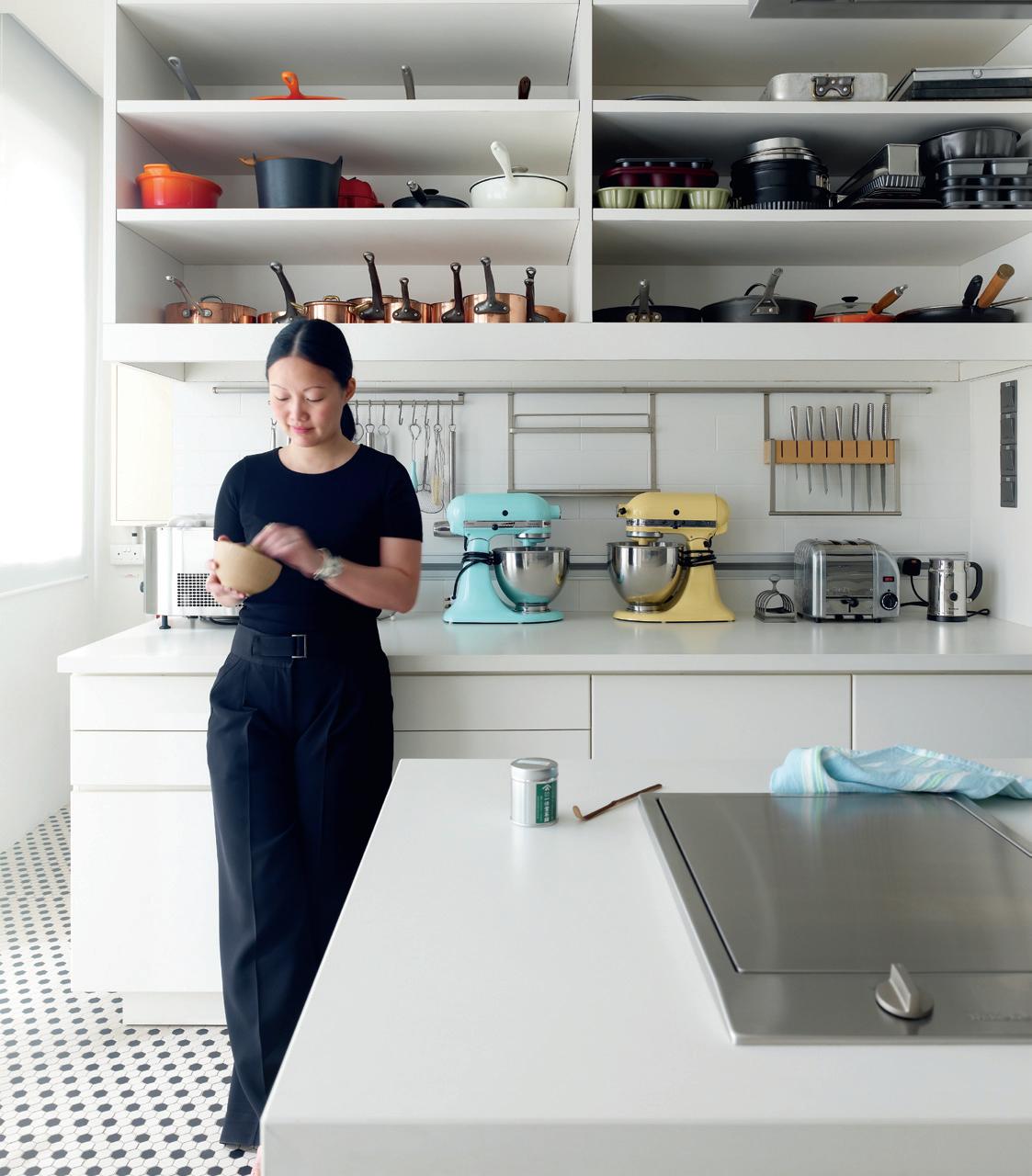
i ndia’s
ffordable
actoR’s R et R eat in t hailand
peRsonal maK ing aud $12.95 nZ $13.95 usd $15.95 cdn $16.95 gbp £8.50 sgd $10.95 habitusliving.com issue 07 apRil – June 2010
The laTesT in rugs and design objec Ts RainfoR est, inneR-city and count Ry living acRoss south-east asia The new shape of coffee Tables Relaxing spaces in n ew Zealand fashion parT nership in Melbourne
design masteR a
and susTainable housing
space
www.miele-sustainability.com
For more information on Miele’s impeccable fleet design range of ovens, rangehoods, microwave combi ovens, cooktops, plate warmers, steam ovens, coffee machines, dishwashers and refrigeration contact the specialist Project Division VIC 9765 7436 NSW 8977 4235 QLD 3632 2471 SA 8352 9532 WA 9286 7835 NZ 573 1269 www.miele.com.au

TRP MI 2091
Beautiful. Sustainable. Affordable.
Like all Miele superior quality appliances, our ovens, combi steam ovens and coffee machines are built to stand the test of time and intelligently designed for minimal impact on the environment, with perfect results. Find out more at www.miele.com.au

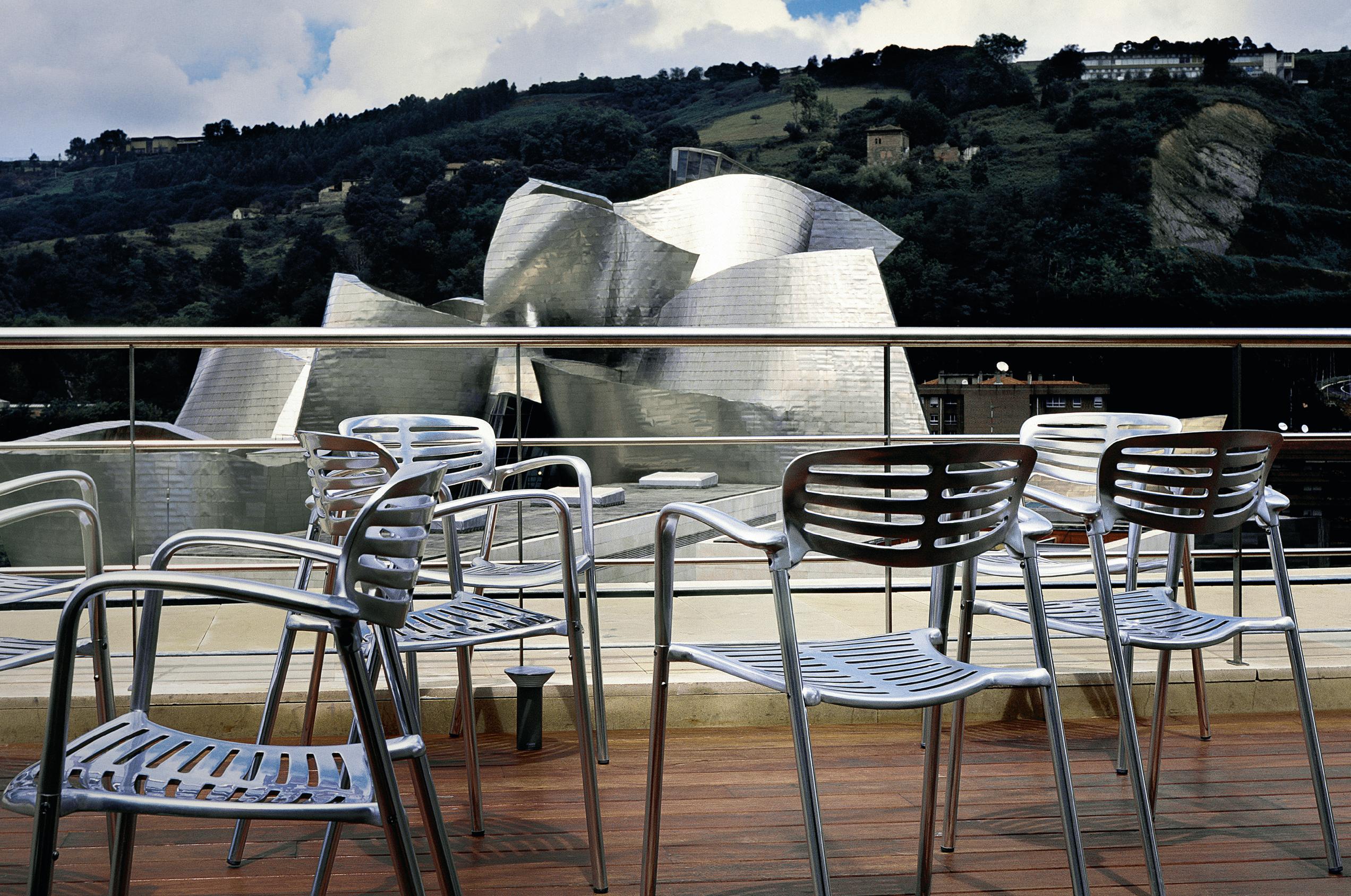


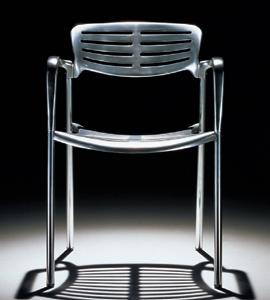

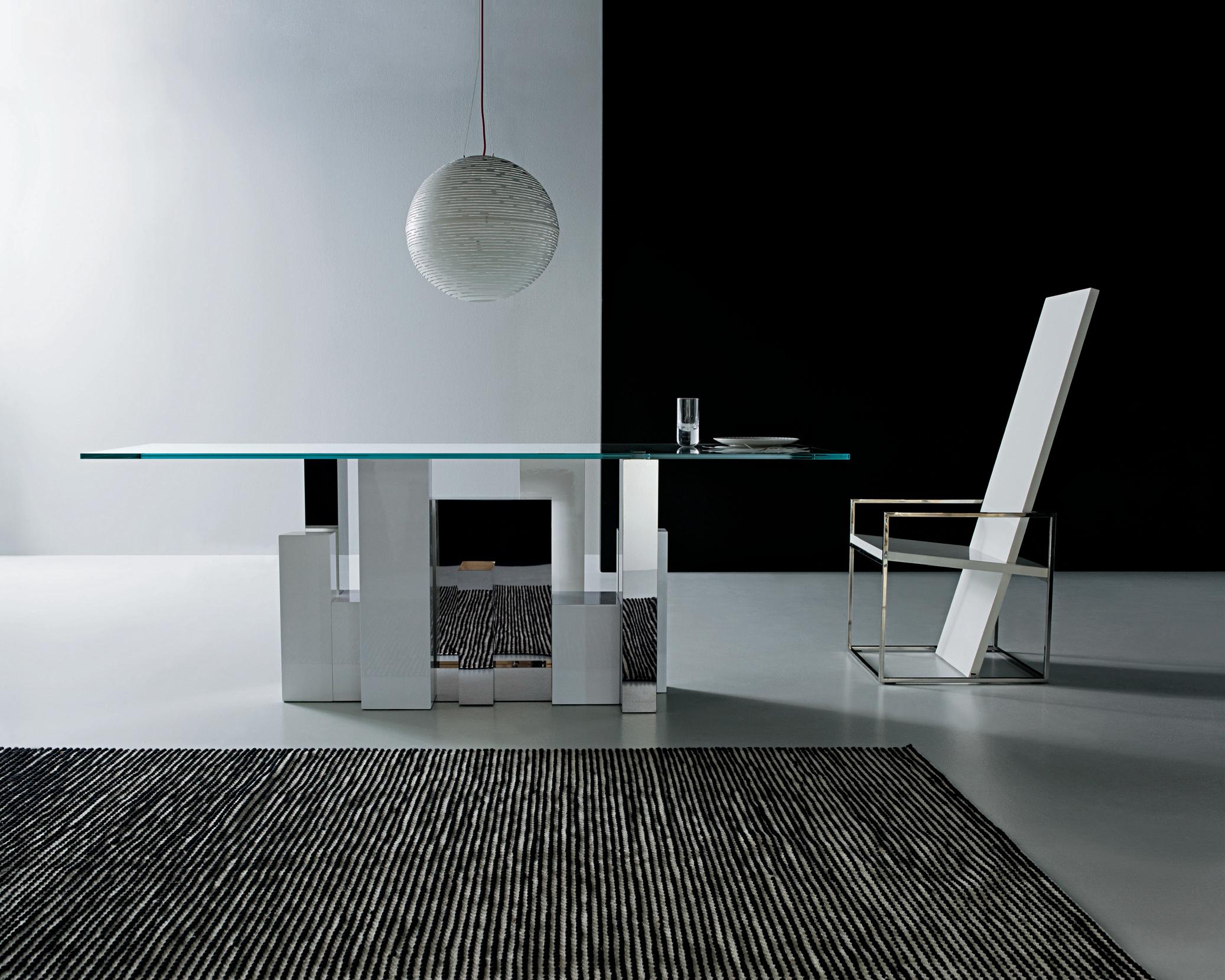
For more of Emmemobili’s extraordinary catalogue, visit the FY2K website
17 Thurlow Street East Redfern, Sydney +61 2 8399 1644 www.fy2k.com.au info@fy2k.com.au

Emmemobili
Made in Italy
CITY Table, Ferruccio Laviani STRAIGHT Chair, Ferruccio Laviani

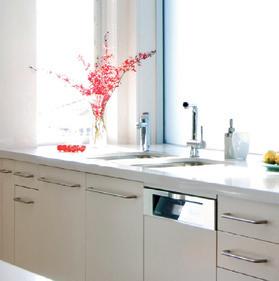

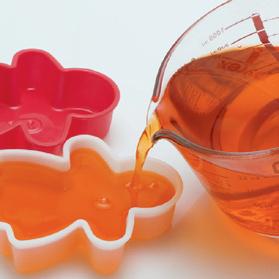



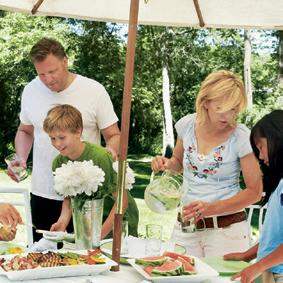
1. HABITUS PRODUCTS

IT’S A FEAST FOR THE EYES WITH THE SELECTION OF PRODUCTS THIS ISSUE. BE INSPIRED BY THE NEW SHAPES OF COFFEE TABLES, EYEWEAR AND THE LATEST IN SOFT FLOORING.
24
DESIGN NEWS
Whether classic or contemporary, the latest products have both visual and textural appeal, while also stimulating the brain.
32
RE-SHOOT
Fun, finely-formed and functional, the coffee table is much more than somewhere to place your drink.
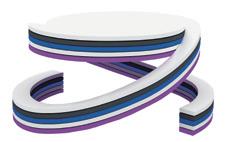
35
CONVERSATION
Old-fashioned values find new expression in unique eyewear from Melbourne-based boutique retailer, Scoogle.
39
IN CAMERA
From tribal to tonal, rugs and carpets are richly imbued with personality, whatever the design.
2. HABITUS PEOPLE & PLACES
PHOTOGRAPHY, FURNITURE DESIGN AND ARCHITECTURE, OUR PERSONALITIES FROM THE REGION RANGE THE CREATIVE SPECTRUM.

48
CREATION
Stephen Crafti visits Julia DeVille at her studio in Melbourne, where she combines the seemingly disparate crafts of jewellery and taxidermy.
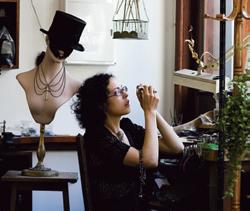
77
SLOW DISSOLVE
Taiwan-born Charwei Tsai finds beauty in death and decay. Margie Fraser talks to her about her inspirations, her chosen media and the evolution of her art.
104
SLOW DISSOLVE
For many people, a garden is simply something to look at. Andrew Pfeiffer describes how one couple allowed their labour of love to express his creative vision as the garden designer.


83
C LOSE UP
Indian architect, Rahul Mehrotra, applies a contemporary vernacular approach across diverse projects, from a film-maker’s house to an elephant stable. By Mary Woods.

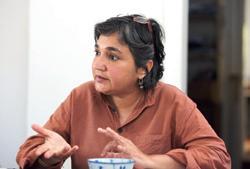
56
PARTNERSHIP
The Condilis brothers have built the Nobody denim empire on a shared vision, hard work and the legacy of their father’s industrial laundry in Fitzroy. Kath Dolan reports.
66
INSPIRED
Simryn Gill’s creative path has led her on an annual archeological photographic journey to Malaysia’s Port Dixon.
95
ON LOCATION
Furniture designer, Jon Goulder has forged a creative niche in Western Australia. He shares his story with Elisha Buttler.
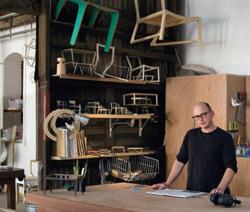

3. HABITUS HOMES
HOMES FOR HOLIDAYING, RETIREMENT AND FOR INNER-CITY LIVING. ACROSS NEW ZEALAND, THE EAST COAST OF AUSTRALIA AND SOUTH-EAST ASIA, THERE’S INSPIRATION AND INSIGHT INTO DIVERSE WAYS OF LIFE .
114
SCENARIO: CAMBRIDGE INTER-TERRACE
Residential architecture
K2LD Architects created a surprising amount of light and space in the traditionally dark and tight confines of a terrace in Singapore. Lynn Tan reports.
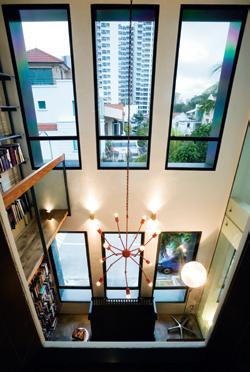
7 habitus 07 contents
161
SCENARIO: qUINN HOUSE
Residential architecture
In the tropics of Far North Queensland, artists Roger and Ulrike Quinn have built a house for their particular way of living, creating a sense of harmony with their surroundings. Eugenie Navarre visited them at home.
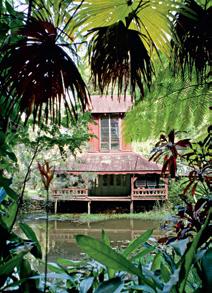
125
SCENARIO: Sy DNE y HOUSE
Residential architecture
Designer, Michael Bechara, shows Jane Burton Taylor around a unique interiors project that showcases a collection of iconic design pieces alongside carefully selected, one-of-a-kind vintage finds.
136
SCENARIO: NEW z EALAND BACH
Residential architecture
A New Zealand holiday house on Great Barrier Island was an exercise in sustainability for both the residents and Crosson Clarke Carnachan Architects. Andrea Stevens reports.

156
DIRECTOR’S CUT: WATTEN HOUSE
Architects and designers designing for themselves Singapore-based Rene Tan has designed many homes for his practice, RT + Q Architects. His own house, Chu Lik Ren discovers, extends his architectural beliefs as the latest expression in his conceptual development.

180
DIRECTOR’S CUT: SOUTH yARRA HOUSE
Architects and designers designing for themselves
For his own home/studio, architect David Luck created a sculptural form with unusual interior spatial organisation that works surprisingly well. Stephen Crafti reports.
189
HOME MOVIE: ACHARAPAN HOUSE
Where personality and residential architecture meet Thai actress, Acharapan Paiboonsuvan, invited Tonkao Panin to her pavilion-style home designed by local architect, Boonlert Hemvijitraphan.
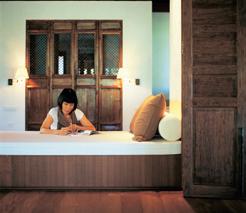

147
SCENARIO: LANGk AWI HOUSE
Residential architecture
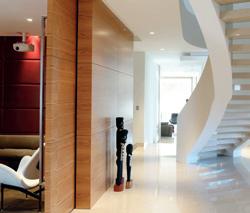
For one British couple, retirement meant building a timber home in a dream location in Malaysia. Jaz Sidhu talks to architects, Building Bloc, about their subsequent journey with the clients in search of recycled timber electricity poles.

199
HOME MOVIE: CORBETT LyON
Where personality and residential architecture meet Architect and art enthusiast, Corbett Lyon has created a hybrid housemuseum in Melbourne for both personal and public use.

4. HABITUS SIGN-OFF
WE SIGN OFF THIS ISSUE WITH A BURST OF COLOUR BEFORE E x PLORING THE POWER , PROCESS AND PURPOSE OF ARCHITECTURAL DRAWING
212
SNAPSHOT: ARI z ONA Collette Swindells discovers the lure of the desert in its natural beauty and colourful history.

220 MONTAGE
The art of architectural drawing is explored by Paul McGillick through three recent books.

8 habitus 07 contents habitusliving.com
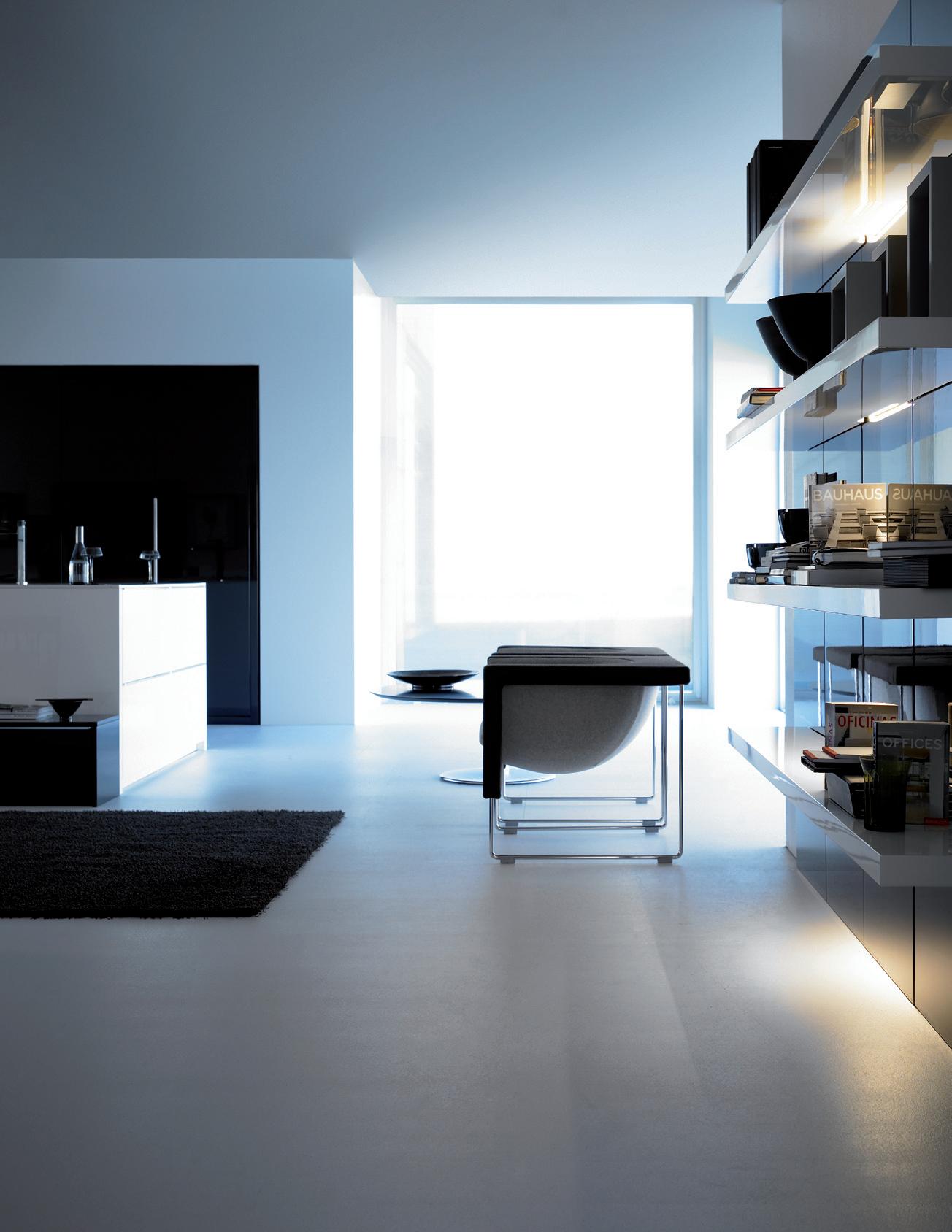 Nube Armchair
Nube Armchair
Sydney 1300 306 960 Melbourne Brisbane Canberra Adelaide Darwin Perth Singapore +65 6511 9328 www.stylecraft.com.au www.stylecraft.asia www.stylecraft.com.au www.stylecraft.asia 1300 306 960 +65 6511 9328 www.stylecraft.com.au www.stylecraft.asia
Design Jon and Jesús Gasca
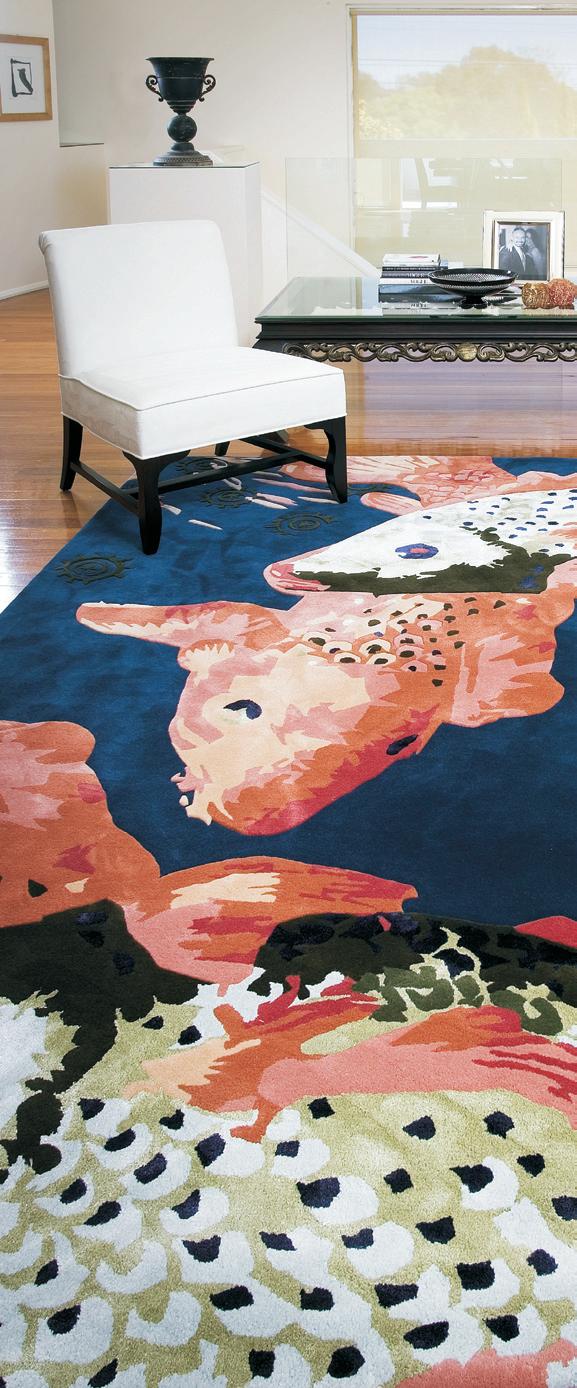

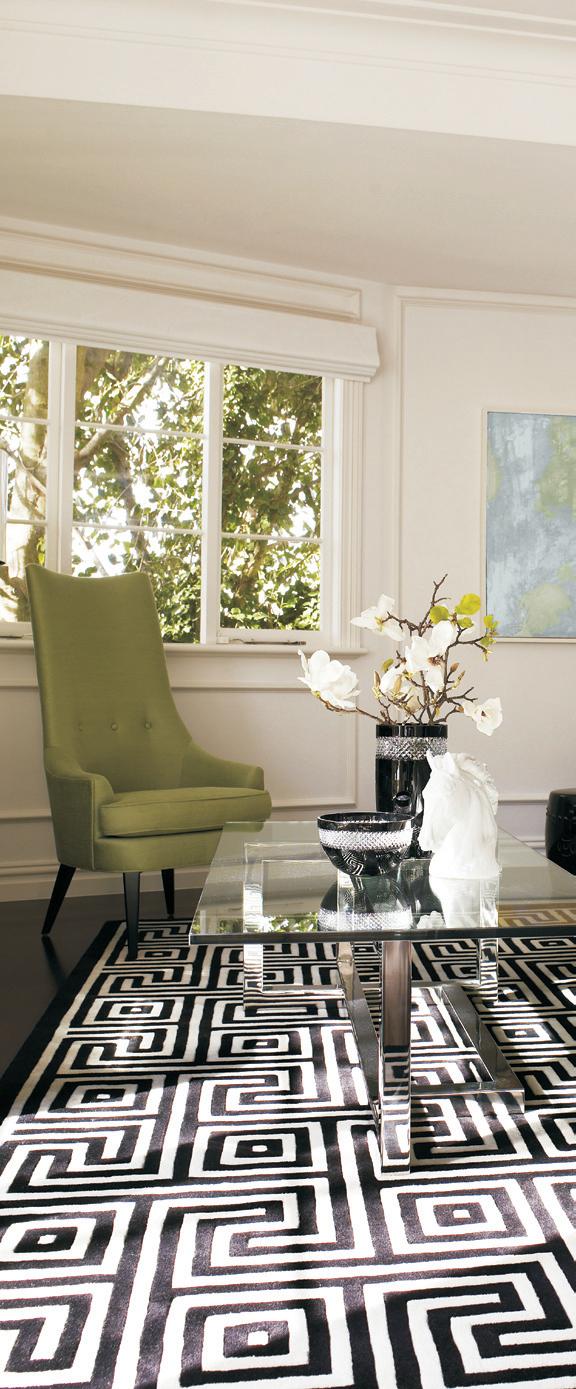
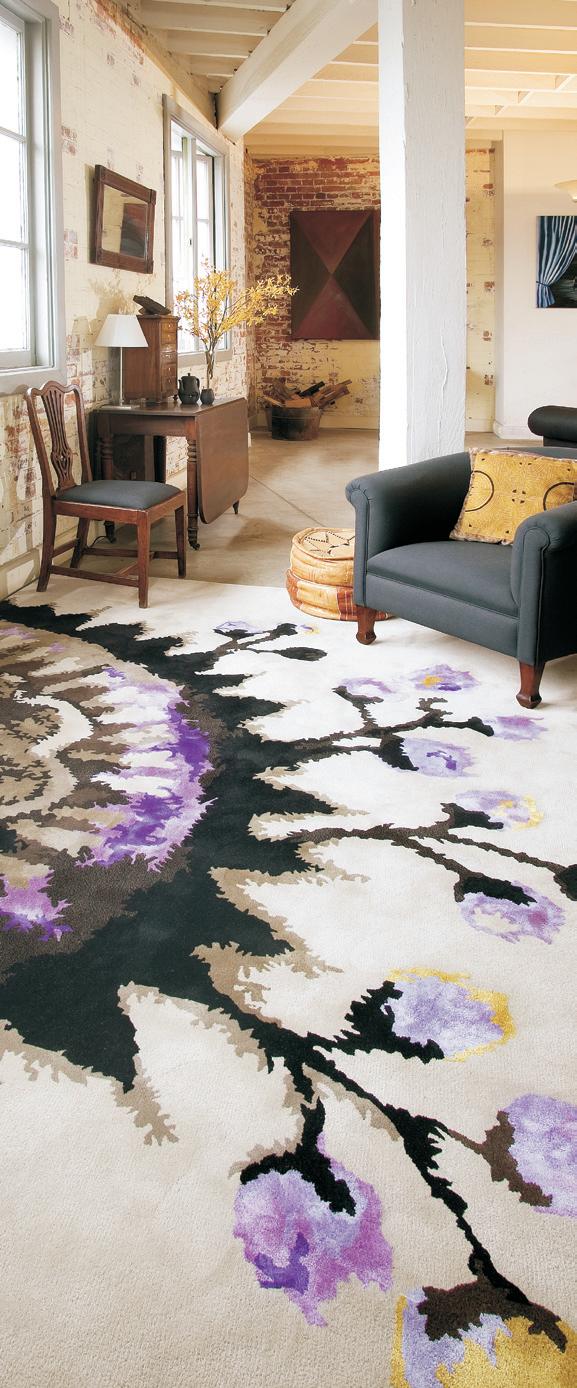
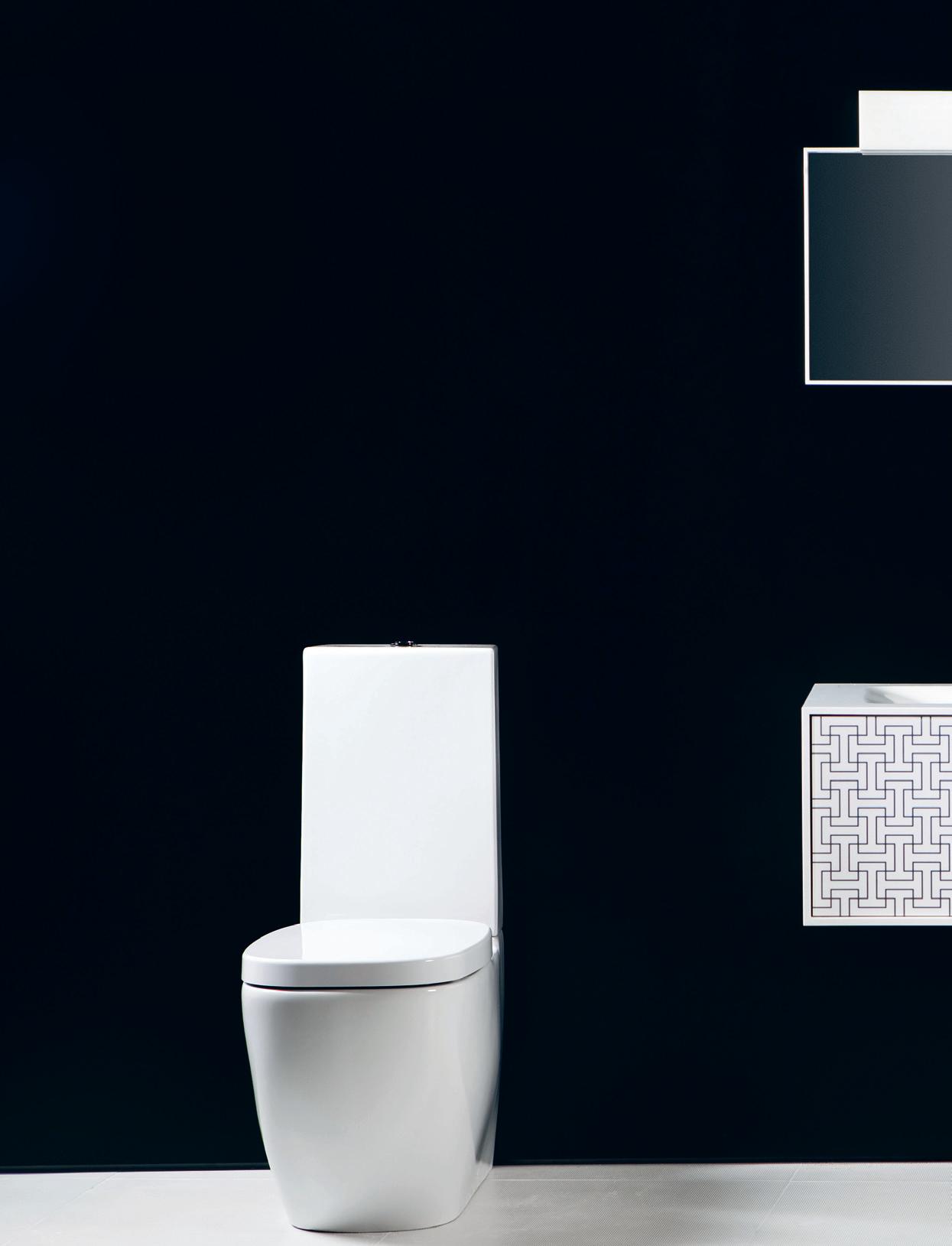
bathroom design centre 84 O’Riordan Street Alexandria 8339 7000 103–123 Parramatta Road Auburn 9648 5411

“The sTone They imporT has been selecTed deep wiThin The quarry. oTher suppliers will Tend To source The cheaper surface quarried sTone ThaT will have The same look buT wiTh inferior Technical properTies.”
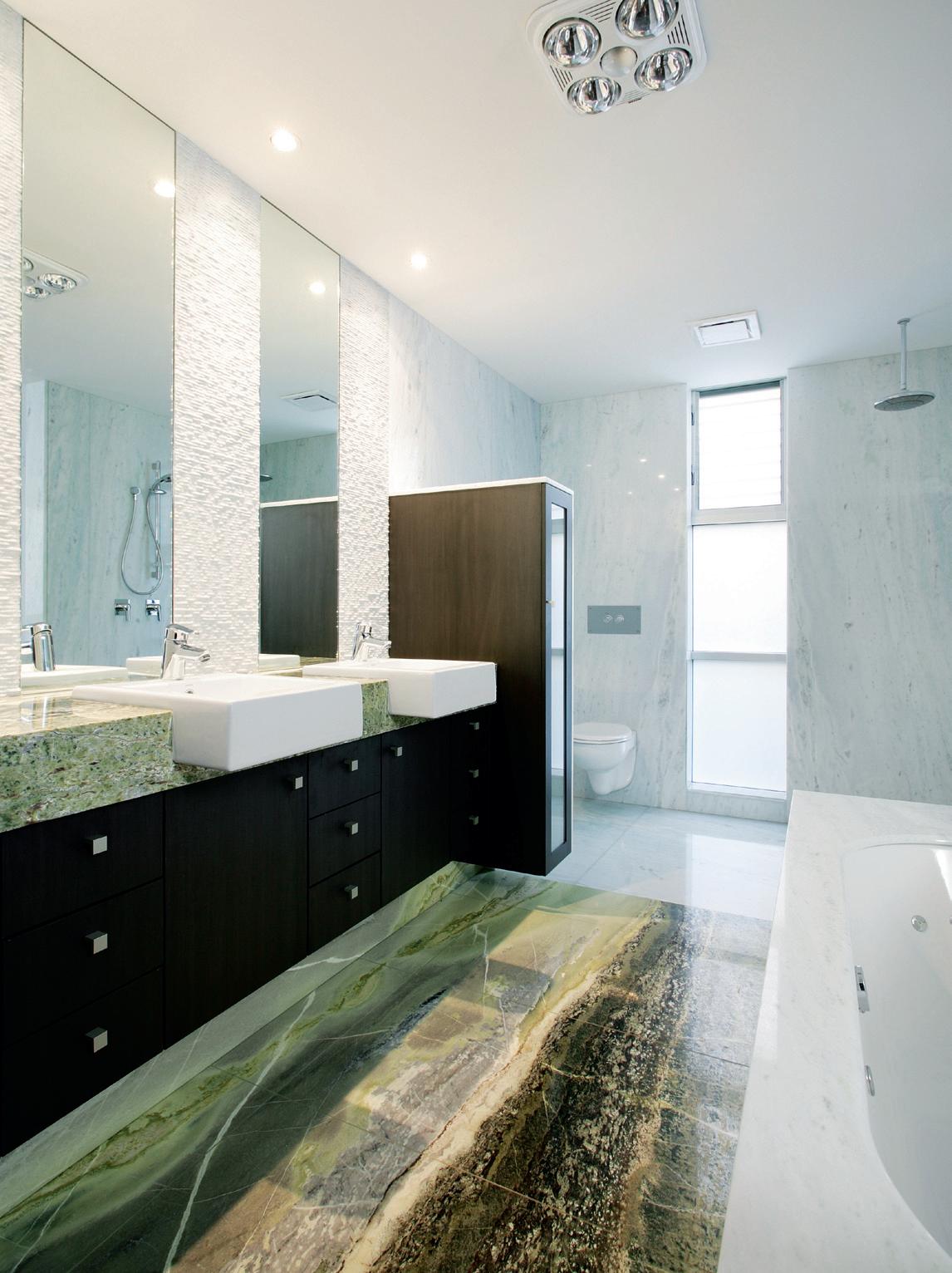
The featured stone: Floor & Vanity - Verde Connermarra a unique stone quarried in Ireland prized for its vibrant hues of emerald green. Walls & shower floor: Verde Panama – brilliant white marble with dashes of emerald green. Fetaure stone either side of mirrors: Verde Pannama with a chiseled and brushed face. Photo on right: Madre Perla Quartz – An extremely hard stone with delicate beauty.
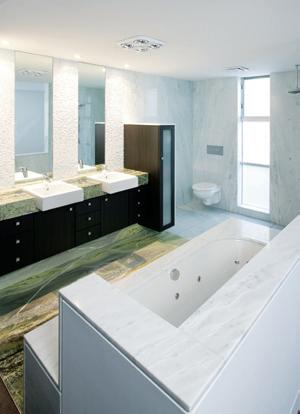
For more information on this stone or any other exotic stone please contact: GITANI STONE 15 Boden Road Seven Hills NSW | Ph:9838 8880 | www.gitanistone.com



EGADI BY GORDON GUILLAUMIER
SYDNEY 2/30 – 32 Beaconsfield Street, Alexandria (61 2) 9690 7100 MELBOURNE B2 – 8 Rogers Street, Port Melbourne (61 3) 9646 8611 kfive@kfive.com.au www.kfive.com.au
A low classic squared lounge with a folding movement in the back that reveals the quilted high back option. The look and the comfort without compromise.
From time to time, people ask me about the ‘add-ons’ to the Habitus masthead – terms like ‘living in design’ and ‘design hunter’. They’re quite catchy, but what are they there for and what do they actually mean?
Well, their function, of course, is to help flesh out what Habitus is all about. A masthead by itself is a little confronting, so the sub-headings hint at the kinds of themes embraced by the magazine.
As for what they mean, let’s start with ‘living in design’. Habitus is for and about people for whom design matters. Not in the sense of design as a branch office of fashion, but in the sense that design brings order, efficiency and aesthetic and emotional satisfaction into people’s lives. Habitus is interested in the way people’s values find expression through their design choices.
One could almost substitute the term ‘living by design’, because people who are clear about what they believe in – their values – usually ‘design’ their lives. They know what makes their lives meaningful and they do what is necessary to create for themselves the environment which will bring that about.
These choices are about a way of life. Here in the Habitus engine room the term ‘lifestyle’ is banned, because ‘lifestyle’ suggests something tagged on, so that design becomes an accessory like some over-designed and over-priced handbag. But ‘way of life’ implies integrity – namely, the close connection between our inner life and the physical world we live in.
So, ‘design hunters’ are people who are carefully shaping their physical world not just to reflect their values, but also to help refine and deepen those values. A garden, for example, is not simply a decorative feature surrounding the house, but a place for contemplation. Similarly, the way a house is connected to the outside landscape shapes the way we participate in the world and engenders a healthy union between domestic life and the natural world.
And inside the house, design hunters gather furnishings and artworks about them which service their own particular practical and emotional needs.
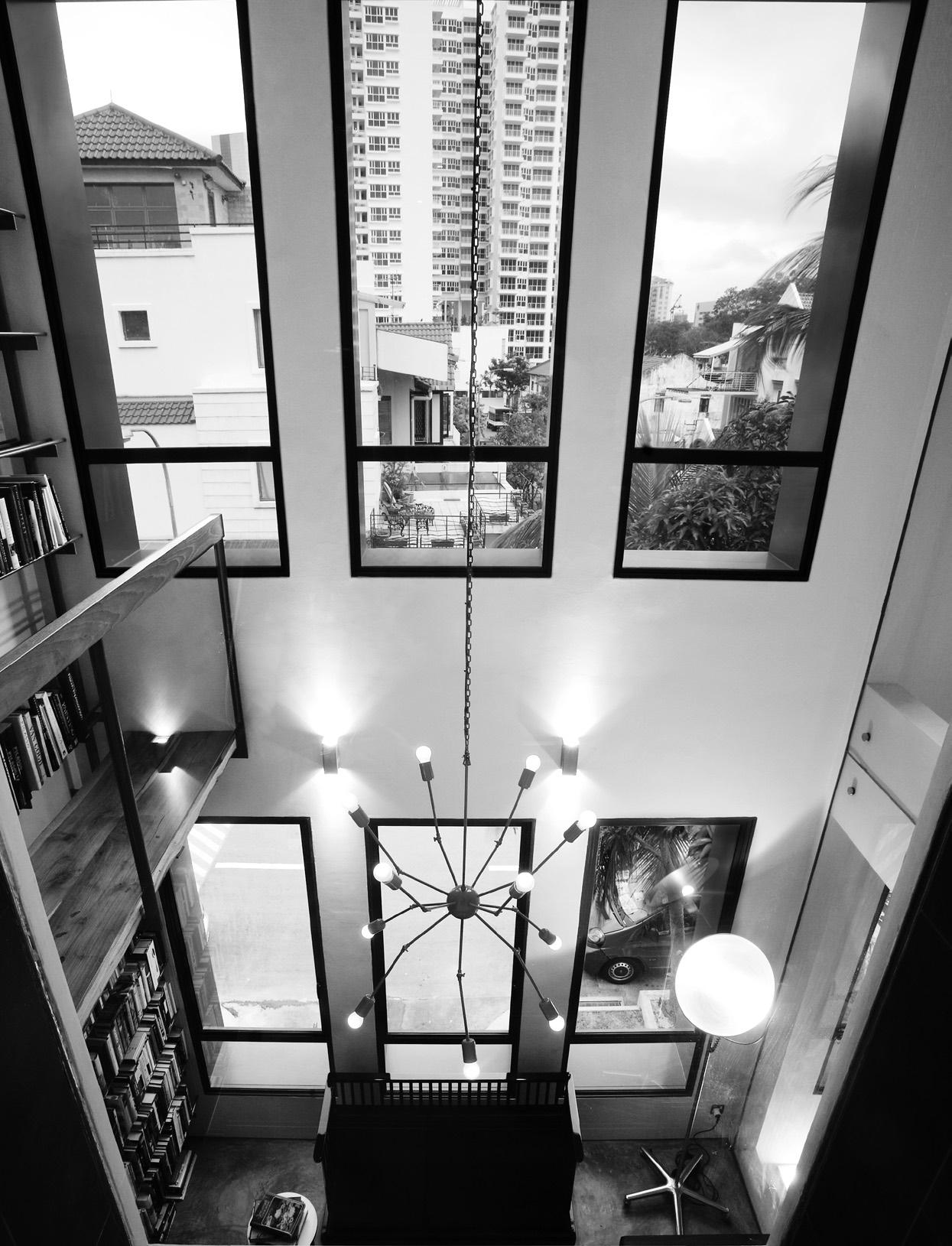
For the design hunter, life is not an accident, because an accidental life is... well, not a life at all. So, when we tell someone to ‘get a life’ what we really mean is: Become your own designer and inject some quality into living.
Just think about it. Living by (instrumental) design means living with intention and through choice; and living by (prepositional) design means living in a quality environment, surrounded by beautiful and functional things.
Paul McGillick, Editor
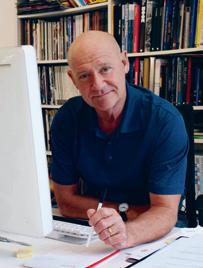
habitus 07 editor’s letter paul mcgillick 17
For the design hunter, life is not an accident, because an accidental life is... well, not a life at all.
Photographer
Justin began studying photography at RMIT, “but quit because everyone told me it wasn’t a real career”. He eventually found himself working as a photographer’s assistant, which inspired him to begin shooting again, in particular anything design-related. Justin lives in Centennial Park and says, “I love my Sori Yanagi Elephant stool by Vitra. It’s everything good design should be – stylish, functional and accessible.”
Writer
Curator and writer Elisha Buttler has been at Perth-based non-profit organisation FORM since 2006, “managing the content and creative direction of exhibitions, creative programs and publications, working with artists, writing a lot and generally arguing for the sake of creativity.” She lives in a rooftop apartment in Northbridge, Perth, with a geologist and a cacophony of books, artworks and random objects collected over the years. But most of all, she says she loves “The light. I suspect I am solar-powered.”
JAMES GEER
Photographer
“Shooting Julia De Ville was wild!” James says. “Her work is so beautiful and spooky at the same time. She played Nick Cave all day, which was perfectly suited to the headspace we were all in. People would come and go, delivering all sorts of dead things.” On the future – “The long term plan is to pack up the family and move back to New York City, but right this minute, I am happy just catching calamari and sharing it with my friends.”
C OLy N H UBER
Photographer
Born in Canada before moving to Australia when he was 5 years old, Colyn says “I have never been far from my camera for the past twenty years.” Following a previous career in law, Colyn packed up the suit and set up Lovegreen Photograpy because “my work is my passion, and I love to gather and share beautiful light, whatever the subject.” He now lives in Cairns, with his “beautiful, growing family”, and loves feasting on mangoes from the garden and his frangipani tree.
EUGENIE NAVARRE
Writer
Eugenie Navarre is a long-time North Queensland journalist and author, currently on a mission to research the ‘real’ Ned Kelly story. A vegetarian since she was 21, Eugenie describes herself as a gypsy wanderer, animal lover and conservationist. She lives between a country property, and her long term home, ‘Taminick’, on a cliff at Trinity Beach. She says, “I love the peace, laughing kookaburras, sound of the sea, and to be able to pick sweet tropical fruits, such as jackfruit and soursop, out of my lush garden.”
JA
Writer
Jaz says, “Visiting Langkawi was, as always, a delight. What made this trip special was realising the hope we still have in preserving our natural environment. Seeing the Pole House sitting comfortably in its environment and hearing the owners and the designers talk about it so passionately, proves that architecture can exist in harmony with nature.”
DIANNA
S NAPE
Photographer
C OLLETTE S WINDELLS
Writer & Photographer
Collette is a freelance design and travel writer who spends a disproportionate amount of her time packing and unpacking her collection of suitcases. She lives with a South American dancer and a growing number of renovation projects in Melbourne’s North Fitzroy, and loves her vintage Bentwood café chairs, “Because they only cost me $20!”
T IANxING
Photographer
Tianxing is a fashion photographer who studied in Speos, Paris Photographic Institute while travelling between London and Paris. Tianxing had his first solo exhibition at Alliance Francaise, Kuala Lumpur in 2007 and in the same year formed Show Up Pictures, a new photography studio with his partner. In his home in Kuala Lumpur, where he lives with his wife, he loves “my bed, because it smells good.”
B O WONG
Photographer
C
HU L Ik R EN
Writer
Lik Ren is a practising Singapore-based architect. He wrote the article on Rene Tan’s house and says, “It’s rare to see a house designed by an architect for himself. A built house is the most direct testament to a person’s taste, habits and values; it says more about a person than words. Rene’s house conforms to his own design philosophy. It’s a consistent extension of his oeuvre.”
kATH D OLAN
Writer
Kath was intrigued by the dynamic personalities of the Nobody brothers and their surreal workspace asking, “Who’d have thought a laundry could feel so atmospheric? Mine certainly doesn’t.” In 2010 she plans to take her young family on its first overseas trip (to Thailand), hold her first art exhibition, and “correct my dodgy swimming style before my six-year-old son overtakes me in the slow lane”.
PAUL L OVELACE
Photographer
Paul Lovelace accompanied editor, Paul McGillick, to artist, Simryn Gill’s house for this issue of Habitus. He says, “It was particularly interesting to discuss her photography and how the digital era has changed traditional methods of such an art form.”
JATINDER M ARWAHA
Photographer
Jatinder Marwaha is a lighting consultant, architect, educator and photographer who studied architecture in India and visial communication in the United States. Besides his native India, he lives and works in New York and London, and enjoys travelling and being able to “celebrate the differences that make this world such a fascinating place”. At home, Jatinder adores his fiveyear-old daughter Una Noor, a Hawkins Futura pressure cooker – elegant and brilliantly functional – and a Luigi Colani pen – inimitable in its sensual feel.
Dianna Snape studied photography at RMIT before assisting renowned architectural photographer John Gollings, and then establishing her own freelance photography practice in 2001. Dianna lives in North Caulfield in Victoria with her partner, Adam Cleave, a still life and food photographer. She loves a sumi ink print by her artist friend Asa Letourneau, saying “For me the picture resonates the freedom of childhood and the burden of adulthood – a reminder to make the later more akin to the earlier.”
DEREk S WALWELL
Photographer
Derek says of the Singapore project he shot this issue, the Cambridge Inter-Terrace, “The Brownstone appearance on the outside leads you into this beautifully done, multilayered, almost industrial-style interior. I think the incredibly tall bookcase, accessible from the top as well as the bottom level, was my favourite design element.”
Bo is a practising artist with solo shows at FotoFreo and the Perth Centre for Photography this year. She is also a photographer working collaboratively with artists, architects and designers. Bo lives by the ocean in South Fremantle, WA, with her husband Riki and their three kids, Sylva, Jetta and Felix. She loves her “collection of old suitcases, they all have a story. One of them was my father’s from his first trip to Australia; it’s infused with a sense of memory and changing places.”
JANE
Writer
BURTON TAy LOR
Jane has been working as a journalist since 2001 and is one of Sydney’s best-known design and architectural writers. She is interested in the relationship between client and architect, and for this issue of Habitus, wrote the story on the Sydney house by Michael Bechara. She also has an interest in black and white photography and has contributed her work to a number of publications.
18 habitus 07 contributors habitusliving.com
J USTIN A LE x ANDER
E LISHA BUTTLER
z S IDHU



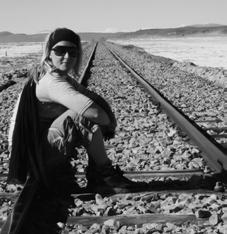






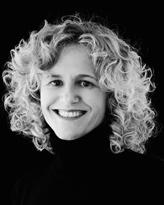
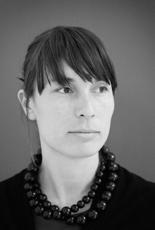

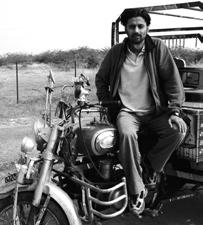


19
kATH D OLAN Writer
JATINDER M ARWAHA Photographer
DEREk S WALWELL Photographer
JANE BURTON TAy LOR Writer
B O WONG Photographer
PAUL L OVELACE Photographer
C HU L Ik R EN Writer
E LISHA BUTTLER Writer
C OLy N H UBER Photographer
JA z S IDHU Writer
T IANxING Photographer
C OLLETTE S WINDELLS Writer & Photographer
EUGENIE NAVARRE Writer
JAMES GEER Photographer
J USTIN A LE x ANDER Photographer
DIANNA S NAPE Photographer
EDITORIAL DIRECTOR
Paul McGillick habitus@indesign.com.au
CONTRIBUTING EDITOR
Andrea Millar habitus@indesign.com.au
ASSISTANT EDITOR
Nicky Lobo nicky@indesign.com.au
EDITORIAL ASSISTANT
Mandi Keighran mandi@indesign.com.au
DEPUTy ART DIRECTOR
Bronwyn Aalders bronwyn@indesign.com.au
DESIGNERS
Lauren Mickan lauren@indesign.com.au
Eunice Ku eunice@indesign.com.au
DESIGN INTERN
Belinda Cooper design@indesign.com.au
CONTRIBUTING WRITERS
Jane Burton Taylor, Elisha Buttler, Chu Lik Ren, Stephen Crafti, Kath Dolan, Margie Fraser, Eugenie Navarre, Tonkao Panin, Andrew Pfeiffer, Jasmeet Sidhu, Andrea Stevens, Collette Swindells, Lynn Tan, Mary N. Woods
CONTRIBUTING PHOTOGRAPHERS
Justin Alexander, Pirak Anurakyawachon, Earl Carter, Simon Devitt, James Geer, Colyn Huber, Albert Lim, Paul Lovelace, Jatinder Marwaha, Dianna Snape, Ken Soh, Derek Swalwell, Collette Swindells, Tianxing, Craig Wall, Bo Wong
CONTRIBUTING STyLISTS
Paul Hopper; styling assistants Daniella Kilov, Sarah Ellison, Darren Mercer
CONTRIBUTING SUB-EDITORS
Alaana Fitzpatrick, Carolin Wun
COVER IMAGE
Cambridge Inter-Terrace, Singapore k2LD Architects
Photography: Derek Swalwell
INDESIGN PUBLISHING
Level 1, 50 Marshall St Surry Hills NSW 2010 (61 2) 9368 0150 (61 2) 9368 0289 (fax) indesignlive.com
PUBLISHER/ MANAGING DIRECTOR
Raj Nandan raj@indesign.com.au
OPERATIONS MANAGER Adele Troeger adele@indesign.com.au
PRODUCTION COORDINATOR
Sarah Djemal sarah@indesign.com.au
PRODUCTION ASSISTANT Grace Hall grace@indesign.com.au
ADVERTISING TRAffIC/ OffICE ADMINISTRATOR Hannah Kurzke hannah@indesign.com.au
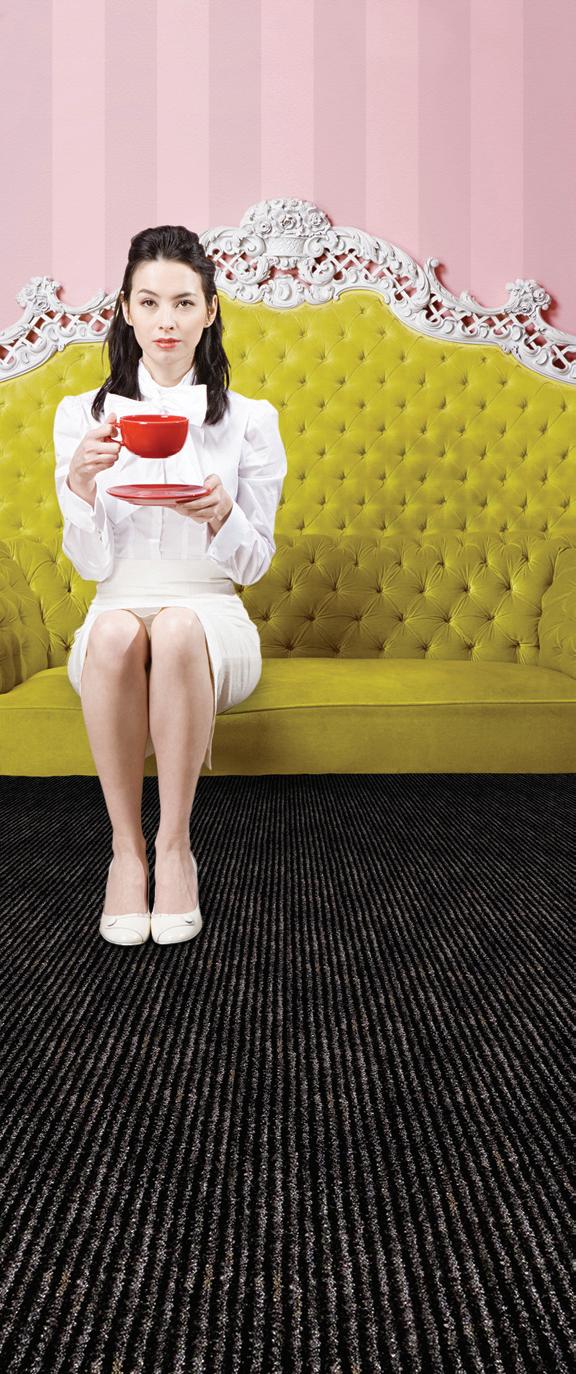
fINANCIAL DIRECTOR
Kavita Lala kavita@indesign.com.au
ACCOUNTS
Gabrielle Regan gabrielle@indesign.com.au
Darya Churilina darya@indesign.com.au
ONLINE COMMUNICATIONS MANAGER Rish Raghu rish@indesign.com.au
ONLINE COMMUNICATIONS ASSISTANT Simon Layfield
ONLINE EDITOR Ben Morgan ben@indesign.com.au
EVENTS AND MARkETING
Kylie Turner kylie@indesign.com.au
Angela Raven angela@indesign.com.au
ADVERTISING ENqUIRIES
Ali Festa ali@indesign.com.au (61) 401 641 757
Marie Jakubowicz marie@indesign.com.au
(61) 431 226 077
ORIGINAL DESIGN TEMPLATE Wishart Design wishartdesign.com
All rights reserved. No part of this publication may be reproduced, stored in a retrieval system, transmitted in any form or by any other means, electronic, mechanical, photocopying, recording or otherwise. While every effort has been made to ensure the accuracy of the information in this publication, the publishers assume no responsibility for errors or omissions or any consequences of reliance on this publication. The opinions expressed in this publication do not necessarily represent the views of the editor, the publisher or the publication. Contributions are submitted at the sender’s risk, and Indesign Publishing cannot accept any loss or damage. Please retain duplicates of text and images. Habitus magazine is a wholly owned Australian publication, which is designed and published in Australia. Habitus is published quarterly and is available through subscription, at major newsagencies and bookshops throughout Australia, New Zealand, South-East Asia and the United States of America. This issue of Habitus magazine may contain offers or surveys which may require you to provide information about yourself. If you provide such information to us we may use the information to provide you with products or services we have. We may also provide this information to parties who provide the products or services on our behalf (such as fulfilment organisations). We do not sell your information to third parties under any circumstances, however, these parties may retain the information we provide for future activities of their own, including direct marketing. We may retain your information and use it to inform you of other promotions and publications from time to time. If you would like to know what information Indesign Group holds about you please contact Nilesh Nandan (61 2) 9368 0150, (61 2) 9368 0289 (fax), subscriptions@indesign.com.au, indesignlive.com Habitus magazine is published under licence by Indesign Group. ISSN 1836-0556
20 habitus 07 habitusliving.com
Printed in Singapore
Untitled-3 1 17/12/09 12:54:15 PM
Endless combinations that will exceed expectations.
With an impressive range of technologies and features setting new standards. Interiors made of high-grade stainless steel for levels of hygiene previously only found in professional kitchens. Select and combine Vario cooling, freezing or wine - everything is stored exactly how it should be. The difference is

professional. The new Vario cooling 400 series.
Uncompromisingly
Visit one of our national showrooms to discover the strikingly beautiful world of Gaggenau. To arrange a demonstration or locate the nearest retailer phone 1300 727 421 or visit www.gaggenau.com.au
Gaggenau.
Left to right: Vario wine cabinet RW 464, Vario freezer RF 463 and Vario refrigerator RC 462. Fitted with Gaggenau aluminium doors (optional accessory).

Hot design, cool coffee tables & rugs to inspire
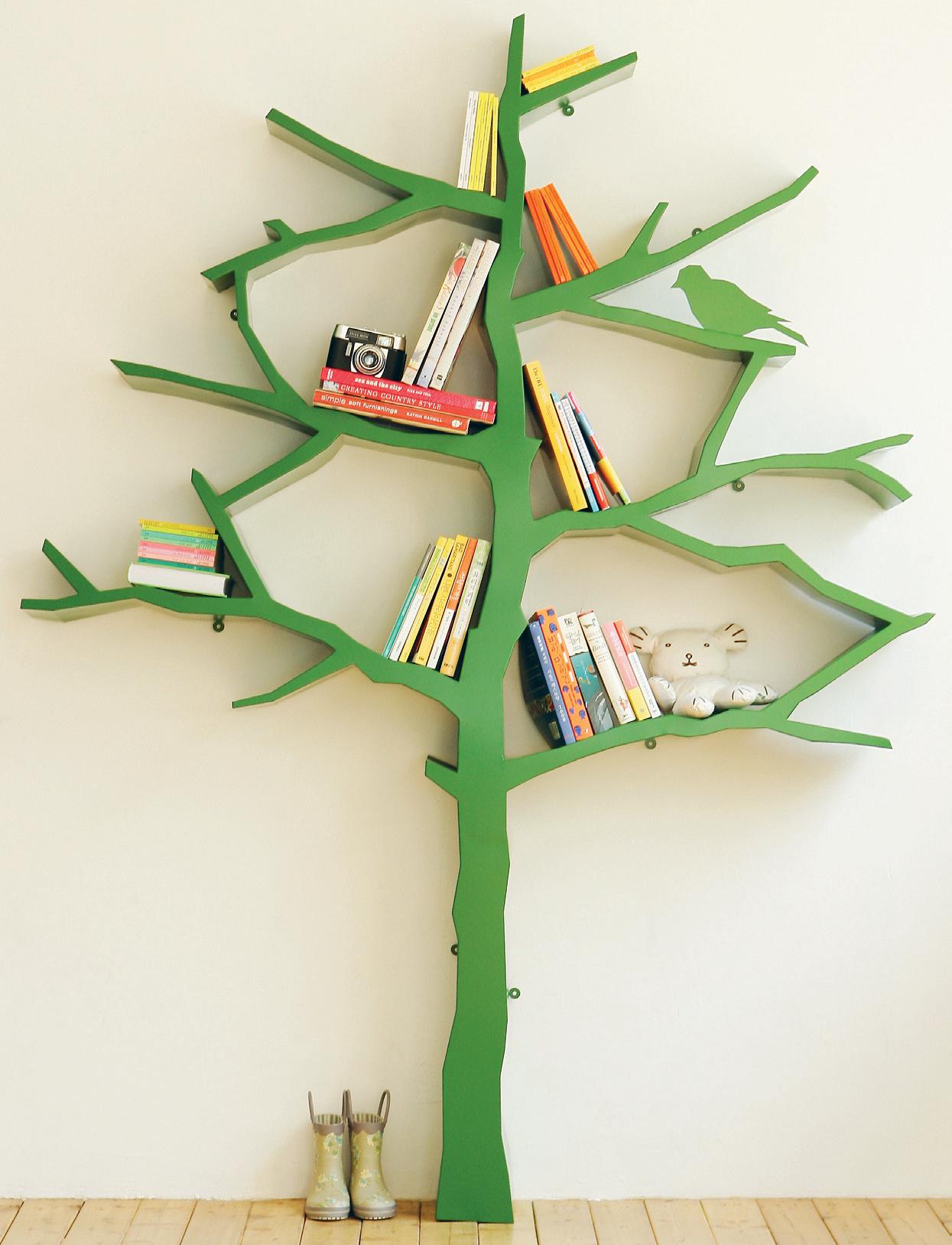
habitus 07 1. news 23

habitus 07 24
living
design news
01 habitusliving.com
wishbone UK furniture designer Toby Howes uses repetition of simple curves to great effect in a contemporary rocking chair with a classic aesthetic. In the supporting curves, dark lines of American Black Walnut cut through the Maple, emphasising the fluidity of the design. The short rockers take up less floor space than traditional rocking chairs, tobyhowesfurniture.co.uk
“design creates culture. culture shapes values. Values determine the future.”
–robert l peters (Circle, Canada)
doLLy Why should salt and pepper shakers be constrained by traditional forms? Designed by Ross McBride for Normann Copenhagen, Dolly’s round, feminine design is sure to spice up any table setting, normann-copenhagen.com
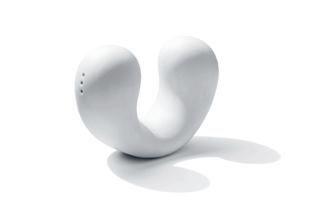
fR inged CAshmeR e ThRow Sydney-based designers Jac+Jack are known for their luxurious and sophisticated apparel line, and they recently extended their creative talents to a range of blankets and throws. Produced in collaboration with highly specialised suppliers, the range celebrates a neutral colour palette and inventive textures, jacandjack.com

peppeR TR ee Part of a new collection from Designer Rugs that is hand-knotted in India and Nepal using traditional weaving techniques, designerrugs.com.au
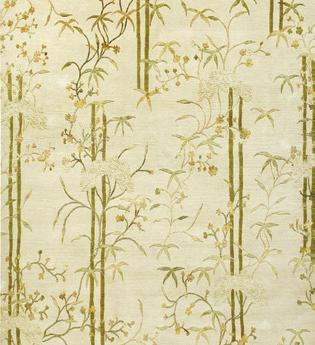
ViCToR iA TA bL e Designer Kain Lucas, of Melbourne’s Ute Design, took inspiration for the Victoria Table from the calm, fluid movement of water in lakes and harbours. The table is available in two sizes, ute.net.au
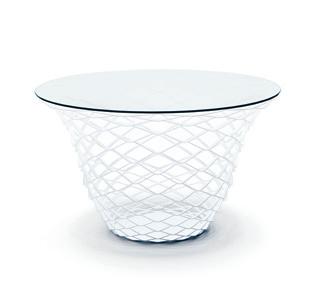
ombR e A colourful collection of short and tall vases from LSA International, a UK-based company renowned for their handmade glassware designed by Creative Director, Monika Lubkowska-Jonas. To create Ombre, two layers of coloured glass are mouth blown together, resulting in subtle gradations of colour within the classic forms. The collection is available in turquoise and lime or turquoise and purple, lsa-international.com / davidjones.com.au

25
02 05 06
04 03
fino The Fino range celebrates clean lines and classic design. Designed by Holger Janke for German design house, COR, these are chairs to inspire leisurely dining and lingering conversation, cor.de / siekaup.com.au
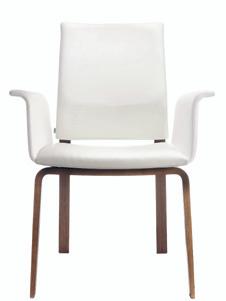
TRopiCAL iA CoCoon A paradisiacal hanging nest in which to curl up, from the mind of Spanish-born designer Patricia Urquiola for Italian design giant Moroso. A structural geodesic steel skeleton is woven with ten colours of polymer thread to create complex patterns of void and solid. The Tropicalia range is for indoor or outdoor use and also includes a chaise lounge, armchair, chair and day bed, moroso.it / hubfurniture.com.au

wALL CLoCk This chunky timepiece is part of Solids, the second collection from Adelaide-based design duo, daniel.emma. The collection expresses their desire “just to make things nice”, daniel-emma.com

inseCTs Vivienne Westwood has collaborated with Cole & Son on a range of wallpapers based on signature designs from her fashion collections, cole-and-son.com / radfordfurnishings.com.au

CAse sTudy ALpine bed The supports used in the Modernica’s Case Study Alpine Series bed are some of the largest pieces of bentwood used in furniture. The timber used comprises 20 layers of structural ply finished with North American Walnut veneer. The mattress supports are 100% recycled material and the platform is perforated to allow the mattress to breathe. Alpine is currently available as a Queen bed, modernica.net / spenceandlyda.com.au habitusliving.com
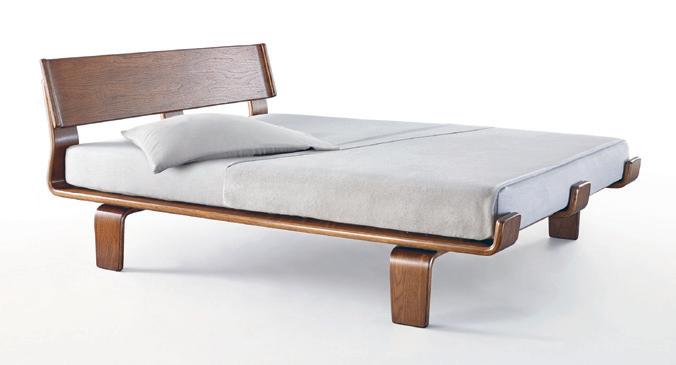
08 09
26 habitus 07 living design news 07 10
11
punCTo
b20 With a simple aesthetic, this bicycle from Fritsch Partners is extra-clean for the environment, by virtue of its function and through its material – it’s made completely of bamboo fibre, fritsch-associes.com

A
sAke The small barrels that store sake, Japanese rice wine, were the inspiration for the shape of these stools by Spanish design team, Stone Designs. Each stool has a perspex base and a removeable fabric cover held in place with distinctive red straps. The Sake collection also includes lighting and tables, stone-dsgns.com / kezu.com.au
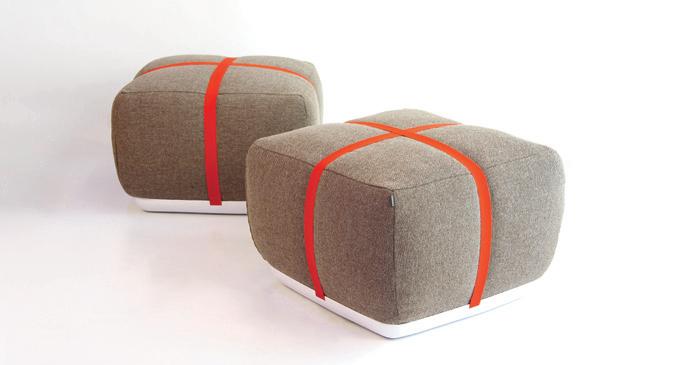
onehundRed&Ten To commemorate British luggage brand Globe-Trotter’s 110th anniversary, Ross Lovegrove has designed this case from lightweight, durable carbon fibre and Kevlar, globe-
bAbushkA LighT Capturing the familiar nesting shapes of Russian Babushka dolls, these ornamental lights are made from blown glass and
and are highlighted by coloured LEDs, mathmos.com

27 living
XX
Perspex,
XX 13
LeAf swing The delicate veins of leaf are traced and make up the playful yet sophisticated seat of this grown-up swing. Revert to your childhood for just a few moments as you rock back and forth in your surrounds, enea-studio.com
12
4203
recent addition to the Secto Design lamp range by Finnish interior architect Seppo Koho, Puncto 4203 is made of laminated Birch slats, sectodesign.fi / fredishere.com.au
14
LATis Named for the Celtic goddess of water, Omvivo’s Latis range, which includes basins, trestle vanity and bath, celebrates natural stone and timber crafted with clean, angled lines. “The Latis forms borrow from the crafts,” says Omvivo Principal Designer, Thomas Coward. “The material relationships create a sentiment of history whilst maintaining a contemporary sensitivity”, omvivo.com
gL ide A mouse pad for those who feel restricted by the dimensions of traditional mouse pads. Made from industrial felt and stainless steel, Glide gives your mouse freedom of movement, osinitiative.com

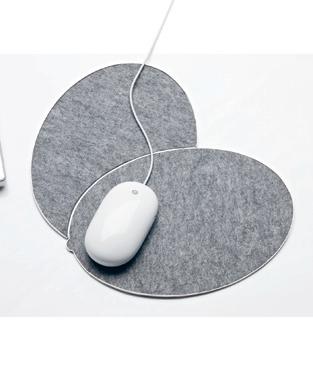
V10-2 T+A elektroakustik’s founder Siggi Amft developed the V Series range of audio equipment based on valve technology, including this integrated amplifier. taelektroakustik.de / klang.com.au / wedderspoon.com.au

18 19 work + play
wooden RA dio Lending the warmth of timber to the all-too-often high-tech form of the radio, each Magno Design wooden radio takes 16 hours to handcraft in Singgih Susilo Kartono’s workshop in Temanggung in Central Java, Indonesia. Plantation timbers and East Indian Rosewood are bought from surrounding villages, and Kartono and his co-workers plant seedlings to replace the wood used, magno-design.com

y+u Keep the important things in the proper place. Hard Graft’s Y laptop sleeve and U add-on pouch features pure wool felt and Italian aniline leather, hardgraft.com
habitusliving.com
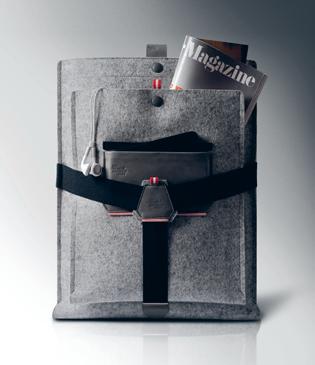
16 28 habitus 07
design news
VApoR snowboAR d This snowboard turns carving up slopes into art, with a graphic derived from a collaborative work by Andy Warhol and Jean-Michel Basquiat. The Vapor snowboard by Burton uses Carbon Vaporskin Lite – the same material used on space shuttles – to significantly reduce the weight of the out-of-this-world board, burton.com 15
17



living
baby + child
A TR ee beComes A book beComes A TR ee A tree of knowledge with a touch of whimsy, A Tree Becomes a Book Becomes a Tree is inspired by Korean designer Shawn Soh’s childhood memories of placing letters in branches like flowers. Soh’s bookshelf is made from metal to save real trees, designartist.co.kr
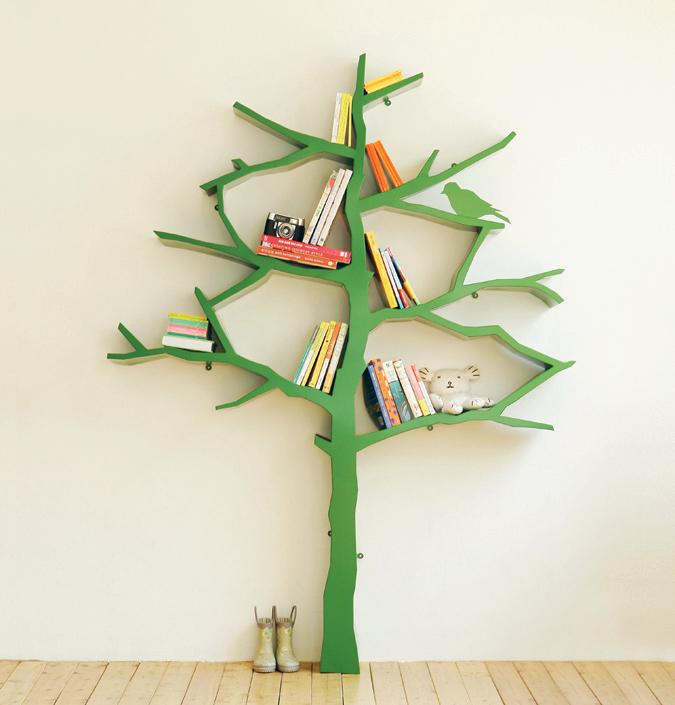
s1 sTooL These candy-coloured miniature stools look good enough to eat. S1, the baby of Yellow Diva’s S Series, combines vibrant colours and sculptural forms to make any room a playroom, yellowdiva.com / interstudio.com.au

Tegu bLoCks Kids will be drawn to these magnetic wooden blocks designed by New Zealand-born brothers Chris and Will Haughey. An updated classic, Tegu opens up a whole new world of creativity, tegu.com

owL The Rug Company has enlisted the talents of design duo Edward Barber and Jay Osgerby to create a rug collection for children that will also appeal to the inner-child in adults, therugcompany.info

feedAwAy Making life easier for baby and mother when travelling, Feedaway is a portable, lightweight alternative to the traditional high chair. Conceived by Betul Madakbas of Belkiz, and designed by Betul, Anthony Dann of Paper Tiger Products, and Gordon Bate, Feedaway can be assembled 30 times and is made from recycled cardboard with a non-toxic coating that enables it to be wiped down between uses, belkiz.com.au / papertigerproducts.com


habitus 07
30
habitus
news
design
habitusliving.com
20 23 24
22 21

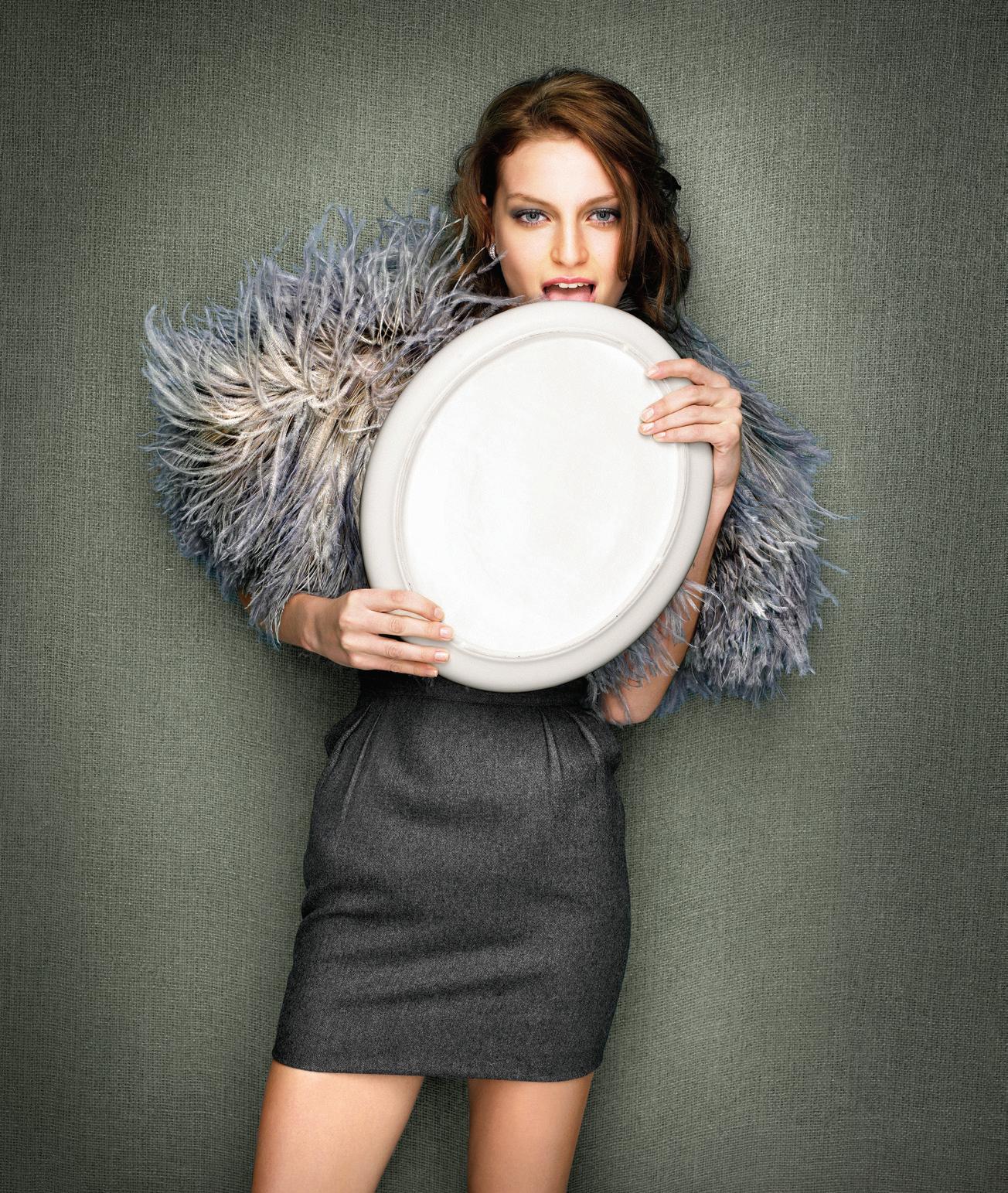


Caffeine hit
01 In an optical illusion, this indoor/outdoor table seems to spiral upwards as you move around it. Made of acrylic reinforced with ecological fibres, it is manufactured from a single panel, inspired by the Chinese art of paper cutting.

02 These tables in solid Oak can be stacked, creating clean linear repetition, the timber grain and angles providing a subtle sense of movement. The hexagonal form enables extension either in a line or a cluster, depending on space.

03 A single piece of laser cut, powder-coated steel, folded upwards origami-style, creates the structurally rigid 3-dimensional form of the base. Innovative in its complexity, this efficient process optimises yield and minimises waste.
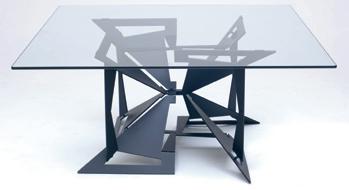
04 Driftwood found on beaches around Victoria's St Kilda become the components of these highly textural custom tables. Each individual timber piece is trimmed to size, wire brushed, coloured and waxed, celebrating unique markings, holes and hardware.

habitus 07 re-shoot habitusliving.com 32
01
Reverence Designed by Yoann Henry Yvon YHY Design yoanndesign.com Prototype
02
Hexad Designed by Tomoko Azumi TNA Design Studio tnadesignstudio.co.uk RRP £990 for set of three
03
4foldlow Designed by George Rice Formtank formtank.com RRP from £490
04 Flotsum and Jetsam
Designed by Marcus O'Reilly Architects marcusoreilly.com RRP from AUD$3,900 inc. GST
06
05
Aerialist | Line
RRP USD$1,850
05 Flexibility is a revered quality in this piece, with rotating modules converting flat planes into cushioned squares as desired, with the simple turn of a lever. Whether for sitting, use as a coffee table or display, this ingenious design with an aluminium and stainless steel frame can be customised with a full range of powder-coated colours and fabrics.
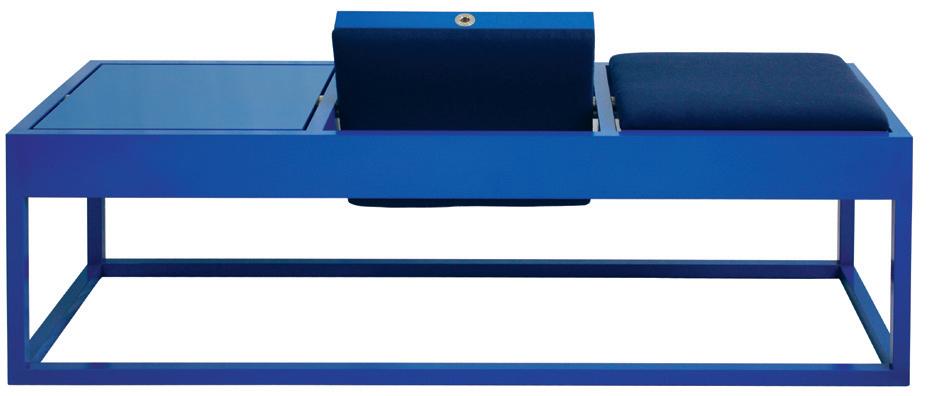
A selection of re-invented coffee tables to fuel your addictions...
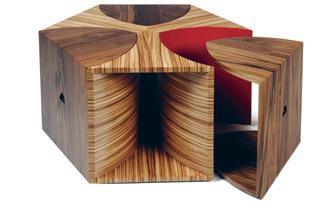
06 This series comprises units of various sizes and scales, unified by aesthetic and mechanical qualities – the simplicity of solid Pine, strength in proportion and multi-functionality. The storage element of this piece is accessible through the table top.

07
Tessa
08
Pig table Designed by Front
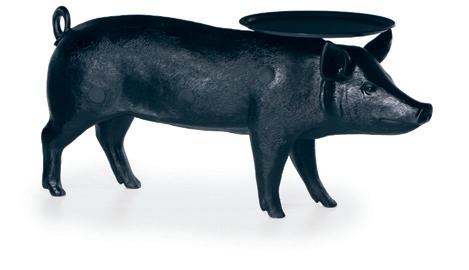
RRP AUD$3,585 inc. GST
08 There's nothing that says class like a polyester black pig. Arriving complete with life-like fur and beauty spots, it injects a rare bit of humour to the coffee experience.
33
Designed by Joseph Ribic Objeti objeti.com
Crate Series No. 4
Designed by Jasper Morrison Established & Sons establishedandsons.com / livingedge.com
RRP $1,585 inc. GST
07 Inspired by Escher's sketches of tesselating bird and fish elements, each Walnut arc in Tessa can also be a separate side table, turning the central piece into a Zebrano sculpture.
moooi moooi.com / spacefurniture.com.au
Designed by Toby Howes Toby Howes Furniture tobyhowesfurniture.co.uk
RRP £3,500

I Bianchi Palissandro : A beautiful collection of marble inspired porcelain Di Lorenzo Pty Ltd Tile and Bathware Concepts ABN > 38 002 487 872 13-15 Lexington Drive, Norwest Business Park, Baulkham Hills NSW 2153 Telephone 02 8818 2999 Suite 48, 26-32 Pirrama Road, Jones Bay Wharf, Pyrmont NSW 2009 Telephone 02 9692 0542 (by appointment only) Unit 2, 37 Griffiths Road, Lambton, newcastle NSW 2299 Telephone 02 4957 9925 sales@dilorenzo.net.au www.dilorenzo.net.au Inkredible 1212-11
Design Over Fashion
Josie Meadows and Colin Redmond, founders of boutique eyewear retailer Scoogle, are supporters of a movement back towards old-fashioned values. Mandi Keighran discovers a small company that believes in design over fashion.
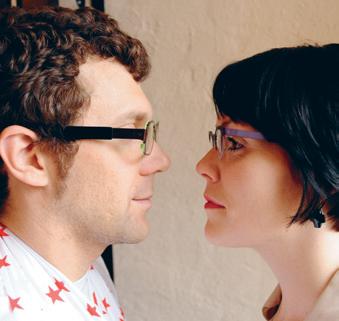
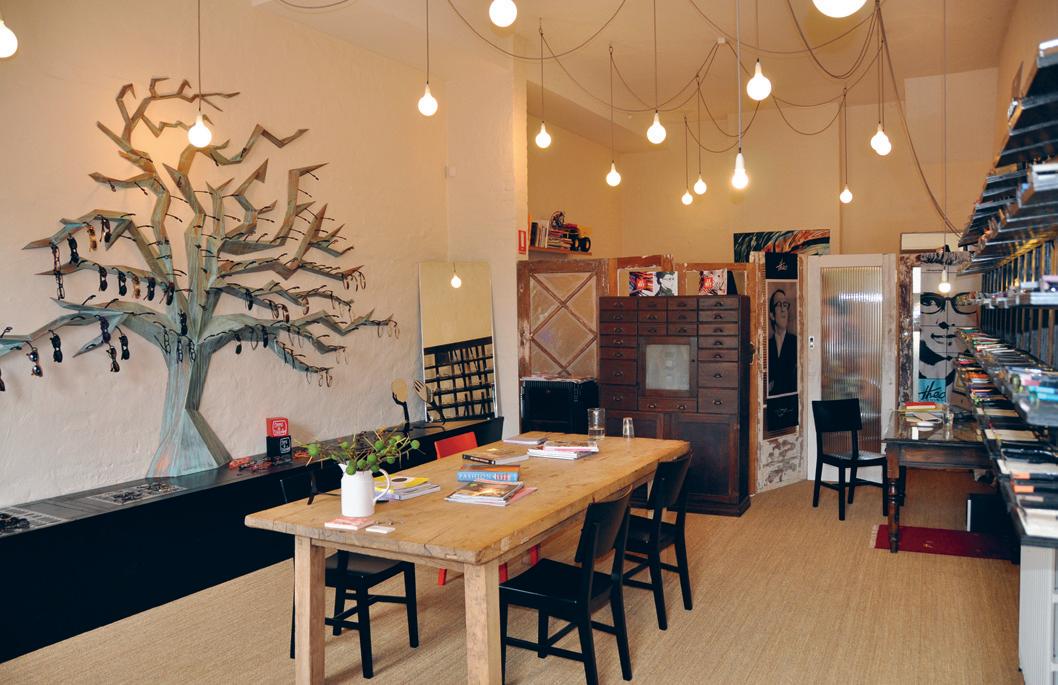
35 habitus 07 conversation eyewear design
Text
Photography Scoogle
Mandi Keighran
02 01
eyewear design
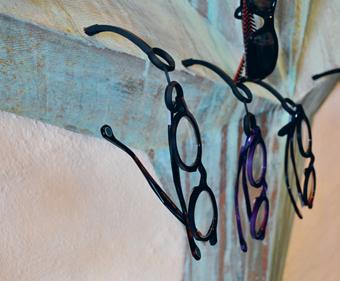


Fashion is a fickle beast that seems to create and dispose of trends almost before we’ve realised they’ve appeared (and disappeared). Design on the other hand – that is, good design – is lasting, and although fashion trends are more prevalent than ever before, there is a reaction against its whimsies.
“Thinkers and spenders alike are rejecting mass production and disinterested service as learnt from a franchised manual,” says Josie Meadows, who co-founded boutique eyewear retailer, Scoogle, with her partner, Colin Redmond, in 2008. Josie and Colin support a movement back to, what Josie calls, “the old-fashioned principles of small business” and a deeper understanding of the intrinsic value of design.
It is Colin’s background as an industrial designer and Josie’s university studies of the domestic experience in Australia that have led to this ethos. “Scoogle is a warm, welcoming environment that aspires to straddle that divide between living room and commercial space,” Josie says of the retail space designed by Colin.
Although Josie and Colin describe the values behind Scoogle as old-fashioned, this in no way makes them outdated. “I do not believe in rehashing or re-creating the past,” says Josie, who will never purchase purely ‘retro’ frames. Instead, she searches out designers who use the design cues of the past to create a new design language, one that fuses the past with the present and will last into the future.
“It is important that we are confident in a designer’s ability to progress and develop,” says Josie, and Scoogle support designers such as Antwerp-based Theo and Germany’s ic! berlin, by stocking a small range of designers in depth. “As we aspire for design over the whims of fashion, we need each range to work for years to come, not just here and now.”
Josie and Colin believe this approach to design is inherently sustainable, not in terms of materiality – such as frames made of tyres or wood, an approach that would not be practical – but in terms of the lifespan of the frames. “We would like to think our clients add to their collection rather than ‘update’ and throw out the old pair,” Josie says.
The Scoogle vision of design to last a lifetime is one that is quickly catching on, with a growing group of devotees. “When a client comes in and says ‘I’ve been looking for a place like this for years’, it makes it all worthwhile,” says Colin.
Scoogle, scoogle.com.au
36 habitusliving.com habitus 07 conversation
01 Colin Redmond and Josie Meadows.
02
The interior of Scoogle’s Melbourne store.
03
Detail of the copper tree designed by Colin used to display glasses. 04
Tim van Steenbergen sunglasses by Theo. 05
Bi-Cycle bifocal by Theo.
05
03 04
Although fashion trends are more prevalent... there is a reaction against its whimsies .
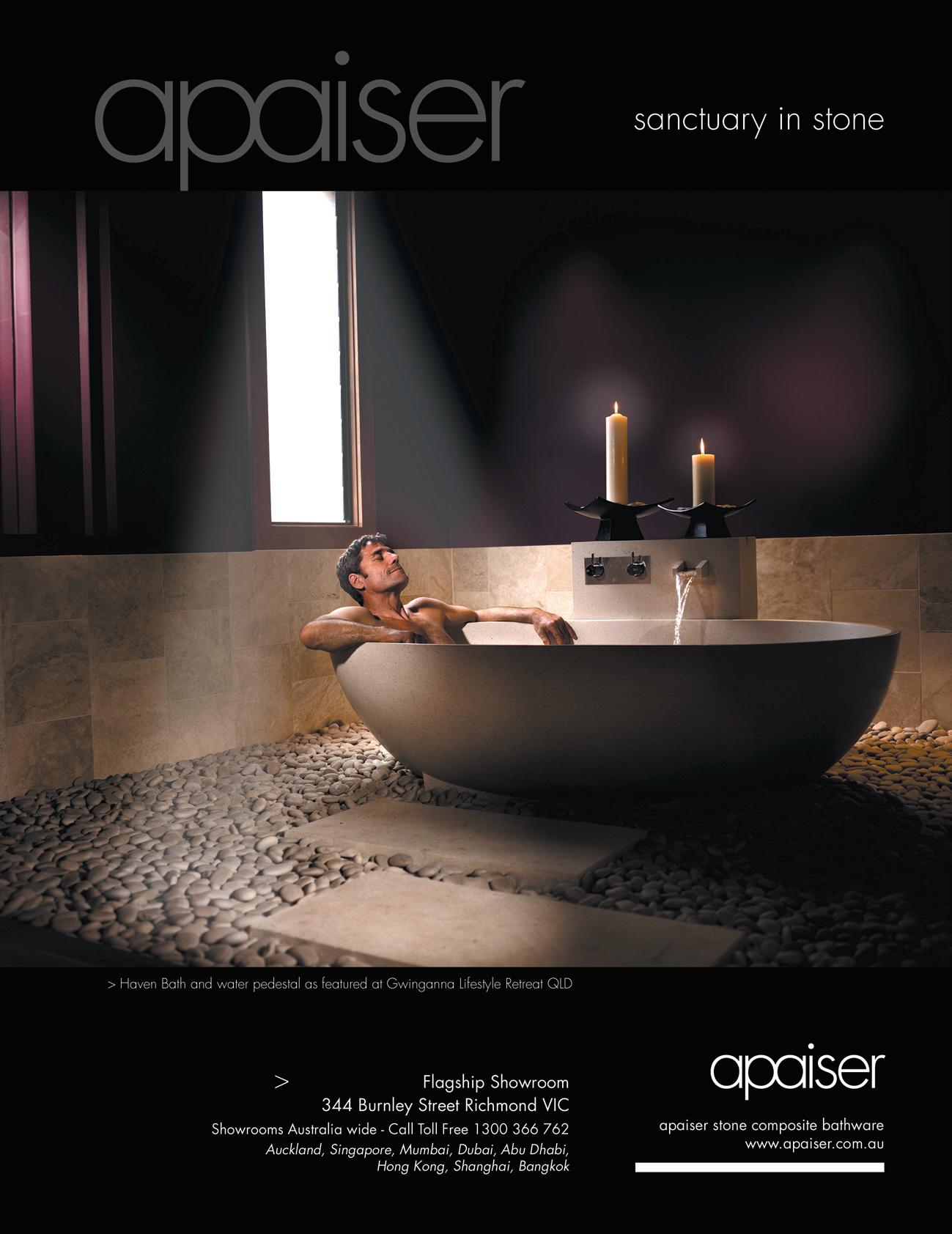
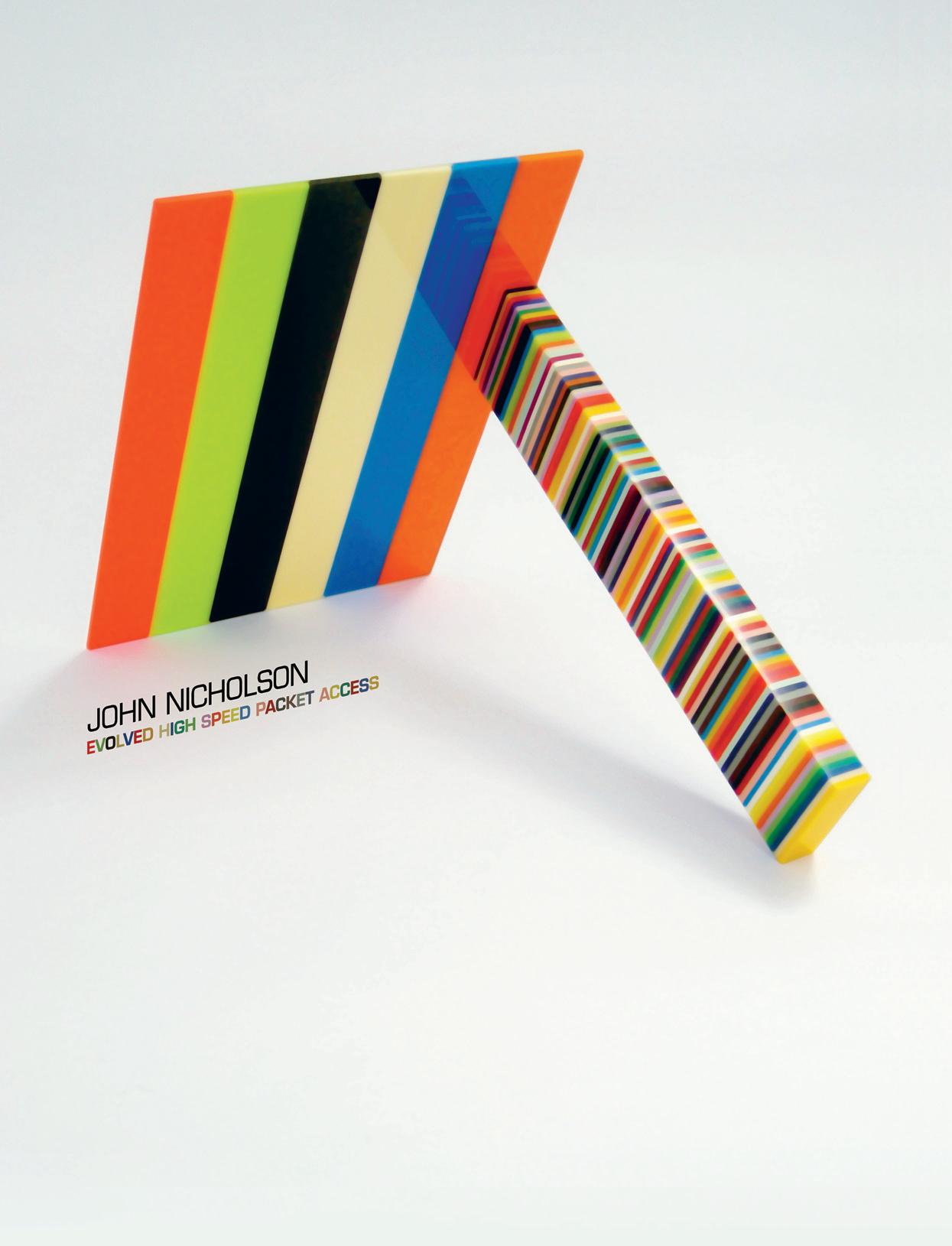
Dream a rug reverie
The latest offerings in soft flooring are brought alive with diverse colours, prints and textures. What they have in common is the quality that typifies today’s carpets and rugs.
 Photography Craig Wall
Photography Craig Wall
soft flooring in camera habitus 07
Photography Assistant Luke Reynolds
39
Styling/Production Paul Hopper
Tufted textures Graduations, assorted colours in Tibetan highland sheep and silk, $1,250 per square metre, Tibet Sydney.
Styling Assistants Daniella Kilov Sarah Ellison Darren Mercer

Harmonic hues
From bottom leF t: Blossom, 180 x 270cm, in hand woven felted wool, $2,050, Whitecliffe Imports. Floor to Heaven Terra Love, 200 x 200cm, $2,950, Cadrys. Arcade Vanagloria pouf, $2,430, Space Furniture. Nemoh 126167 in hand knotted wool/silk/mohair, $7,300, Whitecliffe Imports. Grandma’s Closet in mauve, handmade, wool and silk, from $2,440, Designer Rugs. Tokyo Lotus, 183 x 275cm, in calf skin, hand-tufted NZ wool and art silk, $2,490, RC&D. Tibetan highland balls of yarn –POA, Tibet Sydney.
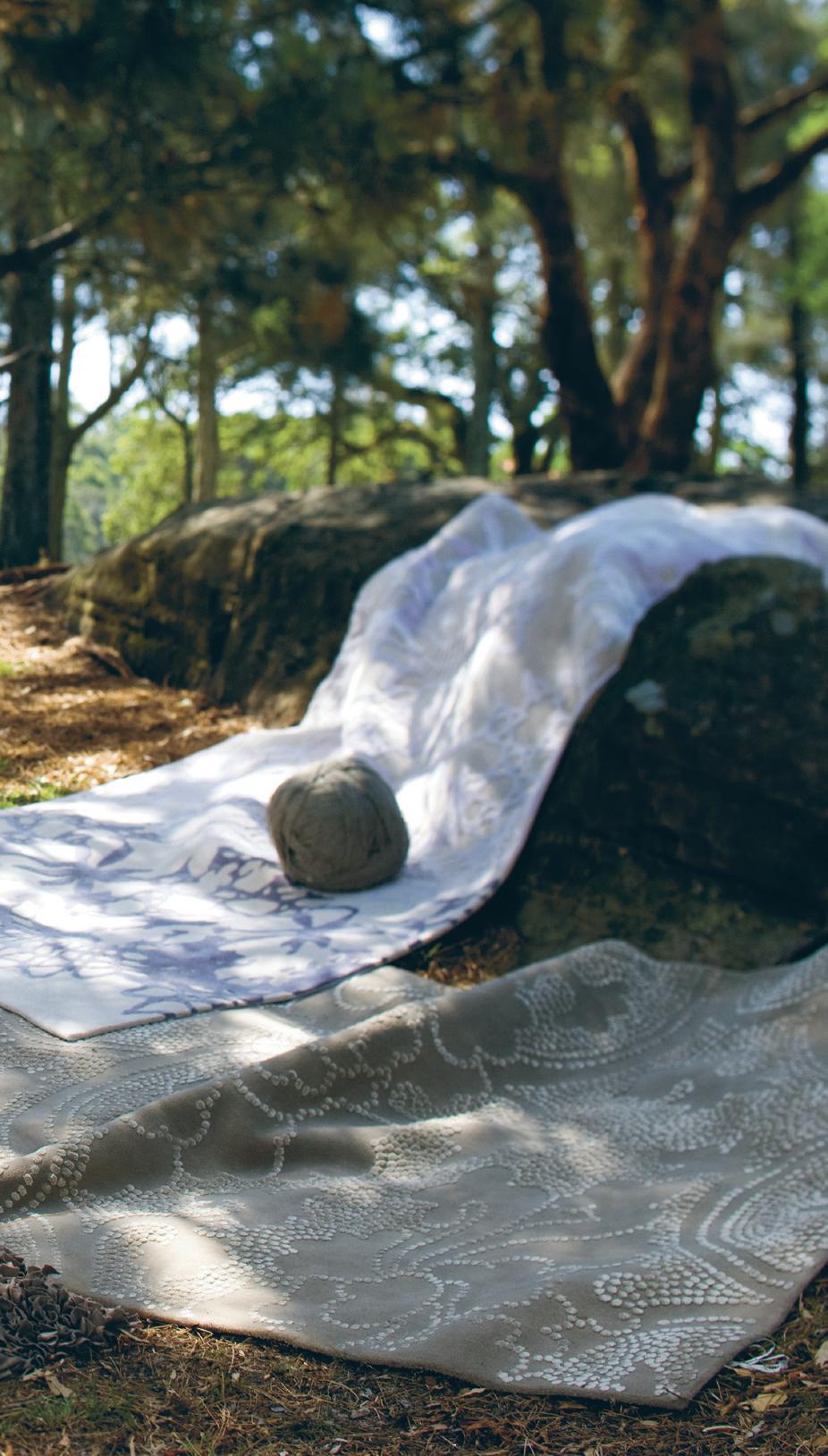
41
Show me pattern

42 habitus 07 in camera habitusliving.com
Ribba frames from $7.99, Ikea. FROM TOP LEFT: Star Tile in Chartreuse, NZ wool, $2,995 (for 170 x 224cm rug), Mokum. Cells in charcoal, semiworsted wool, 183 x 275cm, $2,490, RC&D. Checks, Tibetan wool, $750 per square metre, Tibet Sydney. FROM BOTTOM LEFT: Graduations, Tibetan wool and silk, $1,250 per square metre, Tibet Sydney. Haze in silver, hand-tufted NZ wool and art silk, 183 x 275cm, $2,490, RC&D. Hana Tibetan wool and silk $1,400 per square metre, Tibet Sydney. Emma Tibetan wool and silk, $1,200 per square metre, Tibet Sydney.
soft flooring
Monochromatic punch
FROM FROnT: Eroded in ice, 100% wool, handmade, from $990, Designer Rugs. Edition Silhouette #14 by Object Carpet in black velour, 100% Antron, $4,166 (round black cut-out rug), Tsar. Japanese Bouquet black and white hand-tufted NZ wool and art silk, (small square) RC&D. Solar Alternate by Florence Broadhurst in Tibetan highland wool and silk, POA (small square), Cadrys. Rabat in ebony, Tibetan wool and Chinese silk (small square), Mokum. Corfu by Greg Natale in 100% NZ wool, handmade, from $4,350, Designer Rugs. Rhodes by Alex Perry in 100% NZ wool, handmade, from $4,700, Designer Rugs. Beehive in black and white, hand-tufted NZ wool and art silk, $2,490, RC&D. Accademia Pelote table, $5,580, Space Furniture. B&B Italia Reel element stools, $2,760, Space Furniture. Thorsten Van Elten Plant Cup, designed by Gitta Gschwendtner, $350, dedece plus.

All manner of stripes
FROM LEFT: Turkish Wool
Contemporary Patchwork 180 x 285cm, $2,830, (around front left tree ), Cadrys. Jan Kath 5 Border
Design – blue multi, POA, (blue square sample on ground), Cadrys.
Spectro in tangerine, 100% NZ wool, $1,630, (triangular pattern on ground), Tsar. Soho 200 x 300cm, hand-knotted wool, $3,300, (around back left tree), Whitecliffe Imports.
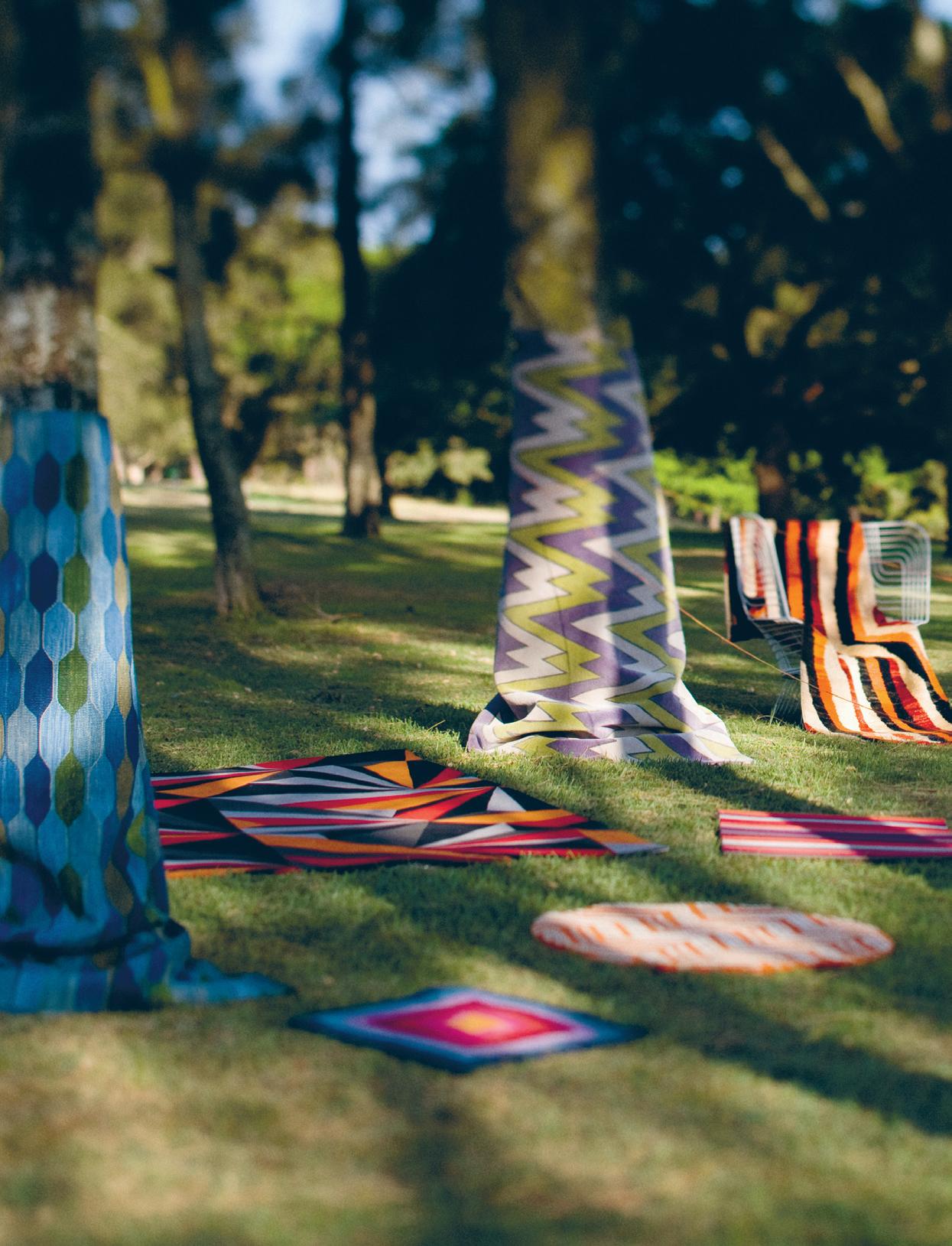
Lightning in orange and beige, 130 x 260cm, hand-tufted NZ wool and art silk, $1,790, (circular sample on ground), RC&D. Kinnasand Wave 180 x 120cm 100% NZ wool, custom colours available, from $1,295, (square striped sample on ground), Cadrys. Vintage Yarn runner 120 x 270 cm, $6,950, Robyn Cosgrove.
Link Easy Armchair designed by Tom Dixon for Tom Dixon, $6,358, dedece. Artecnica Come Rain Come
Shine chandelier in white medium, designed by Tord Boonjte, $3,750, dedece plus. Who’s there in citrus, 100% semi-worsted wool, $2,225, (around back right tree), Tsar. Kong circular rug #156, 100% wool, $4,151, Spence & Lyda. Cascade, multi, NZ wool and shiny silk, $2,998 (around front right tree), Tsar.

soft flooring
Make it bold
From leF t: Beauchamp, 200 x 300cm, hand-knotted, wool and silk, $6,000, Whitecliffe Imports. Loom Anatolian Vintage Tulu rug, 110 x 160cm, $1,400, Koskela. Shirdak rug, hand-made wool felt from Kyrgyzstan, 90 x 140cm, $770, Koskela. Allah Ambra, wool and silk, $1,150 per square metre (on the ground), Tibet Sydney. Tapestry weaves, Ikat Design, 2.8 x 3.6m, $7,950, Robyn Cosgrove. Emisphera Hanging Chair by Seletti, $2,600, Terrace Outdoor Living.

46 in camera habitus 07 habitusliving.com
creatives who explore life, Death a ND everything i N betwee N

habitus 07 2. people 47
julia deville — VIC, australia
Museum of Mortality
A studio or home is an intensely personal, often sub-conscious extension of an individual’s interests and work. Stephen Crafti visited Melbourne-based taxidermist and jeweller, Julia deVille, whose environments are consciously created, physical manifestations of her craft and life.

48 habitusliving.com
habitus 07
creation
Text Stephen Crafti Photography James Geer
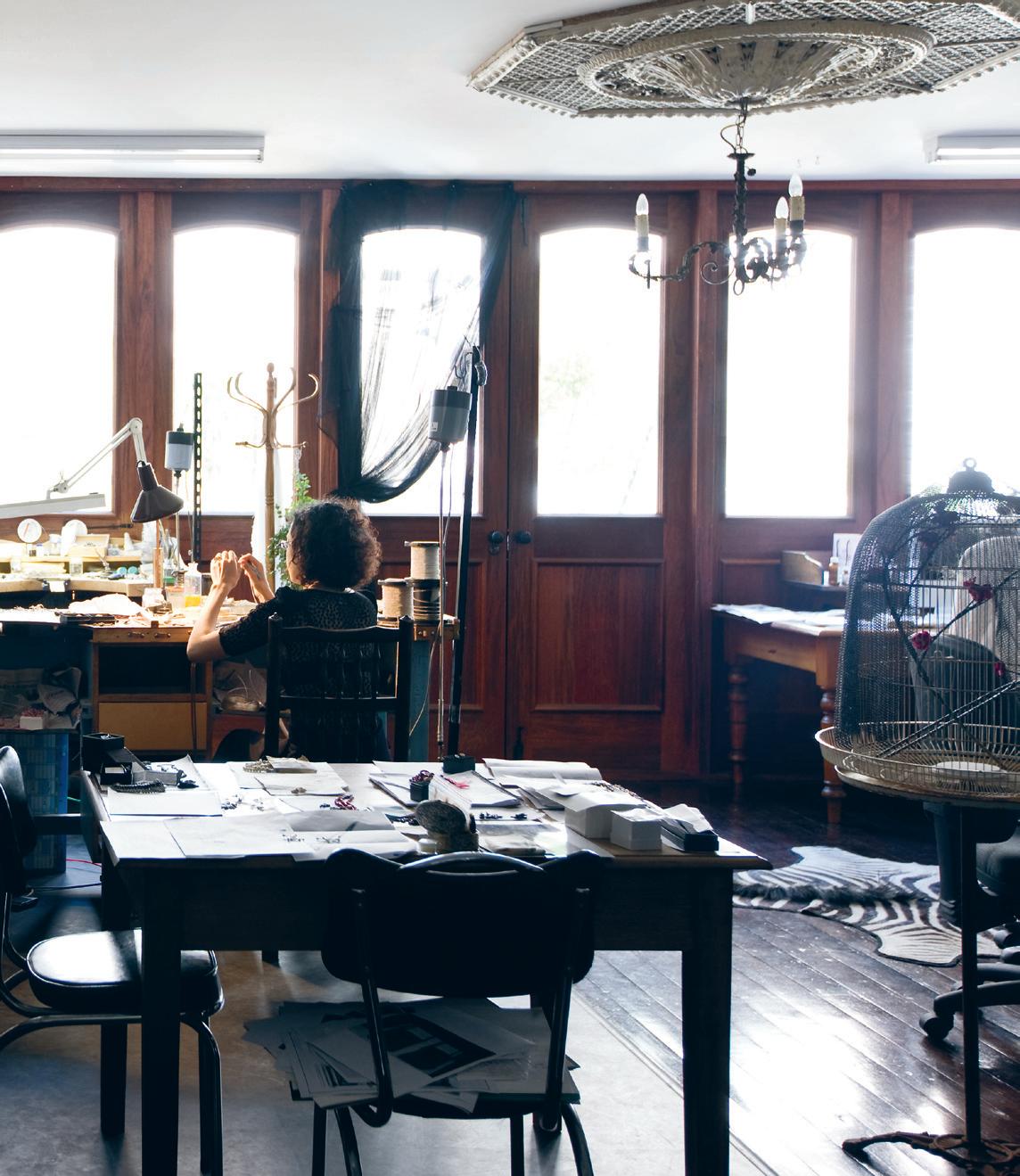
49
julia deville — VIC, australia
Old rusty nails mark out the number of Julia deVille’s studio in inner-city Melbourne. Originally a button factory, then a scout hall, the building was last occupied by a sculptor who combined his practice with teaching Kung Fu. “I bought the place about a year ago. It was ideal to combine a home with a studio,” says Julia, whose jewellery was included in the Primavera 2006 at Sydney’s Museum of Contemporary Art. Her work was also part of the Cicely & Colin Rigg exhibition at the National Gallery of Victoria in the same year.
Originally from Wellington, New Zealand, Julia came to Melbourne in 2001, initially with the intention of becoming a shoe-maker. She switched to jewellery partially as a result of the time involved in cobbling – “Jewellery gave me instant gratification. I was able to complete a design in a day,” she says.
Past the courtyard-style front garden, a timber door opens to Julia’s studio. Instead of a welcome mat there are the stuffed heads of two goats and a gerenuk, a long-necked African
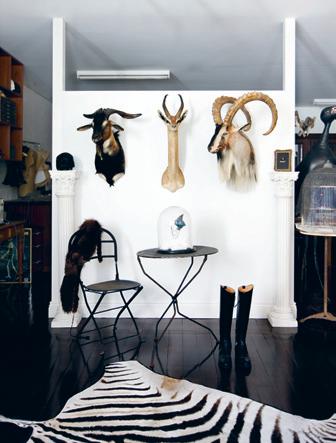
01 Julia’s studio and home is a converted factory.
02
Notes, like Julia’s jewellery, adorn the surfaces of her studio.
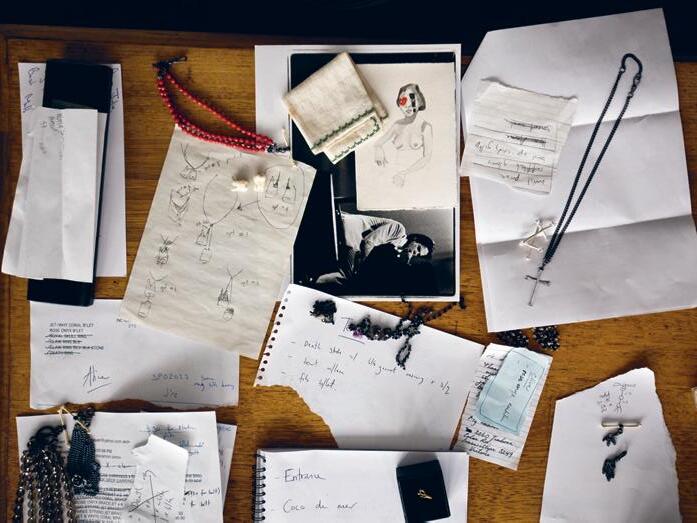
03
There’s a museumlike quality to the space.
04 Julia appreciates the morning light when doing her intricate work.
antelope. “The first comments are that it looks like a museum,” says Julia, who works as both a taxidermist and jeweller.
Timber shelves in her studio, filled with objects and artifacts, are a visual feast. One shelf is covered with dried moss that has the appearance of Victorian lace. Others are filled with Julia’s latest jewellery, ready to be delivered to stores both in Australia and overseas, including the prestigious L’Eclaireur stores in Paris. “My father [still in Wellington] made all the shelves with a friend who is a cabinet maker. I gave them the rough measurements,” Julia says. “We were slightly out with this shelf,” she adds, pointing to a gap where the shelf should have ended.
While the warehouse was built at the turn of the last century, it has been embellished with Victorian details. Julia added the ceiling rosette in the studio and Victorian-style timber doors and windows that frame the space. “The timber floors are original. They were just buffed up and polished,” she says. And although shelves and work benches were relatively easy to install,
50 creation habitus 07
habitusliving.com
02
03
Timber shelves in her studio, filled with objects and artifacts, are a visual feast.
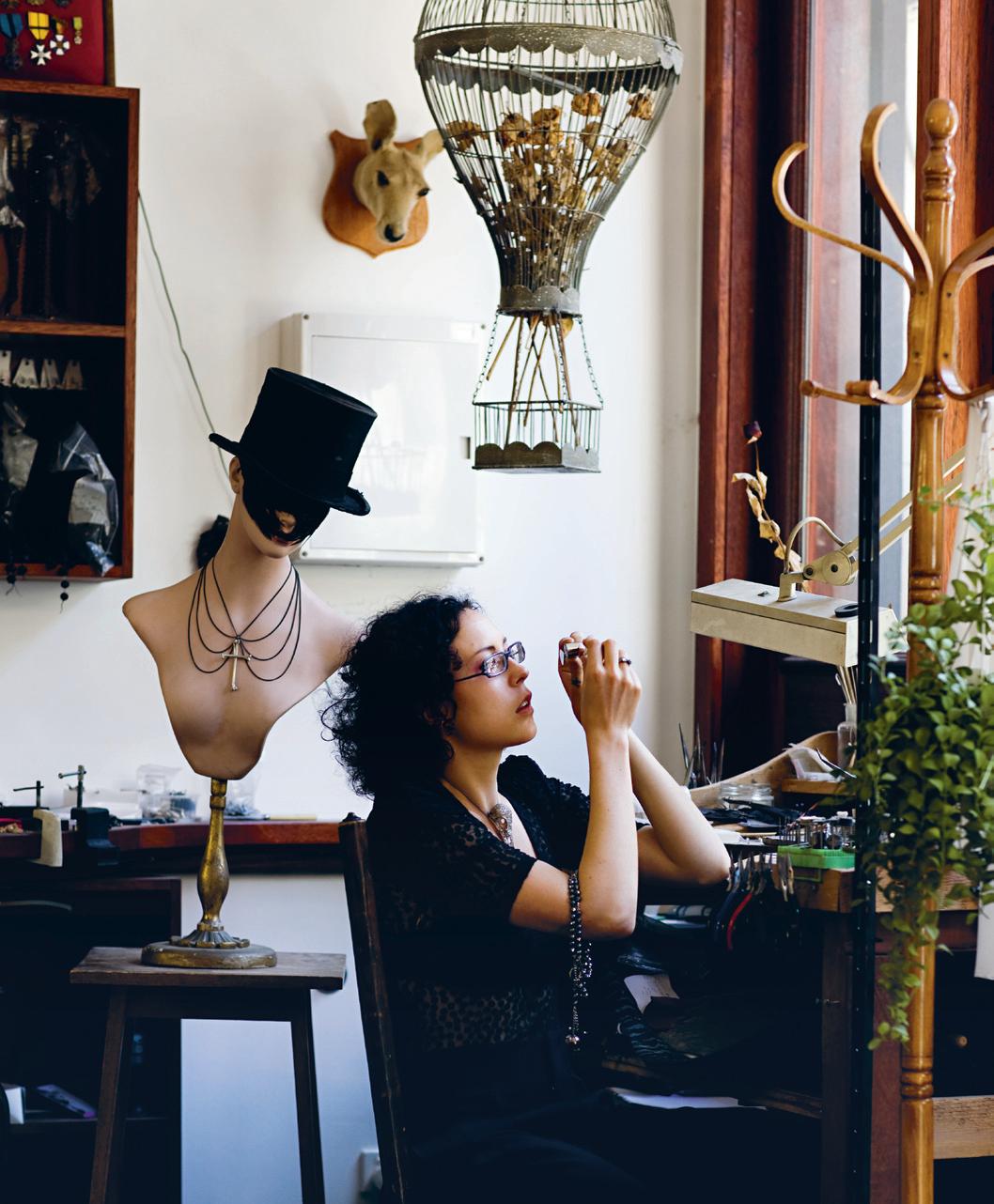
51 04
julia deville — VIC, australia
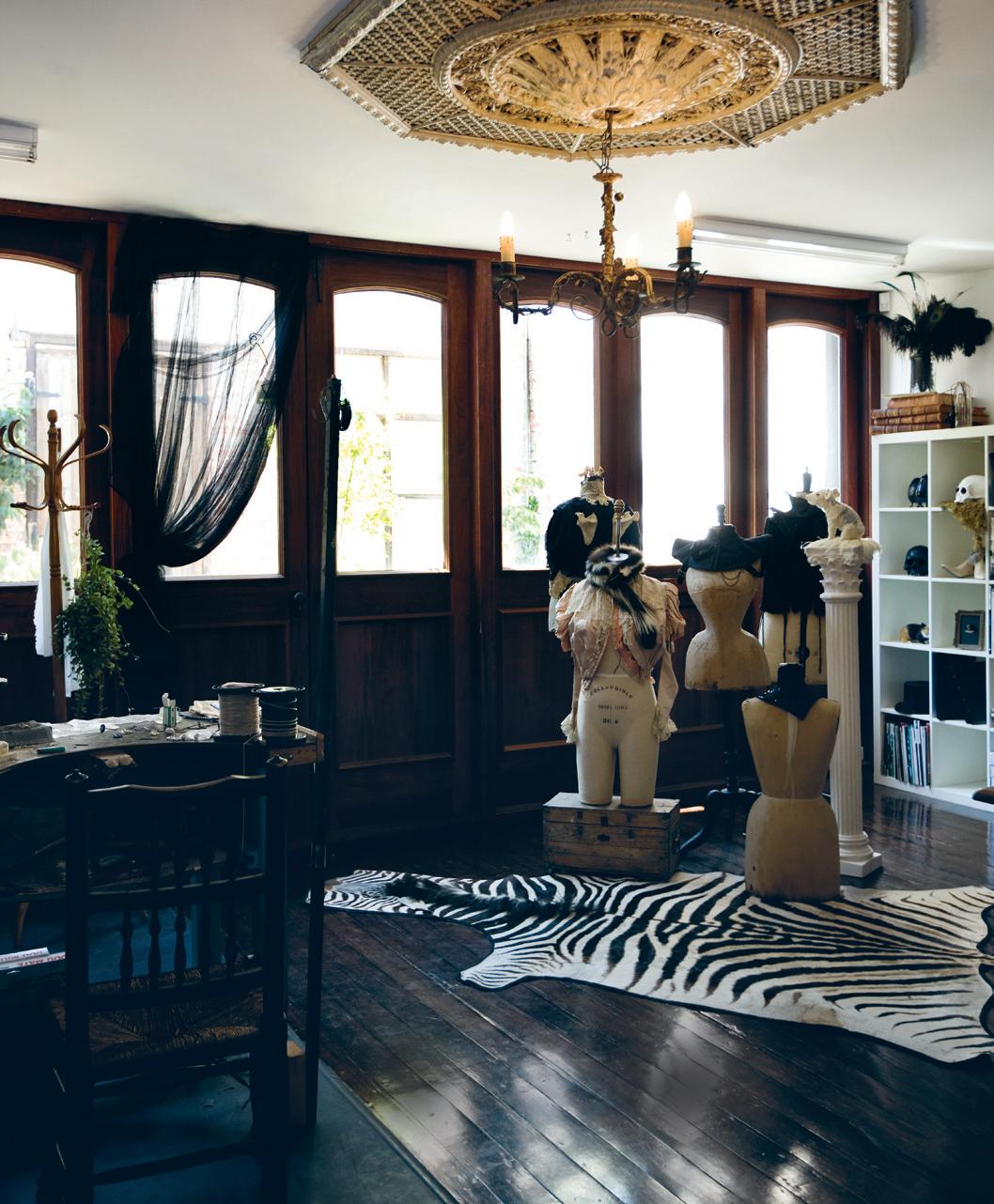
52 habitusliving.com
habitus 07
creation
05
her studio required a special booth called a ‘flume’ cupboard, which contains the somewhat sulphurous process where skulls and bird bones are oxidised before being fashioned into silver brooches, earrings, bracelets and pendants.
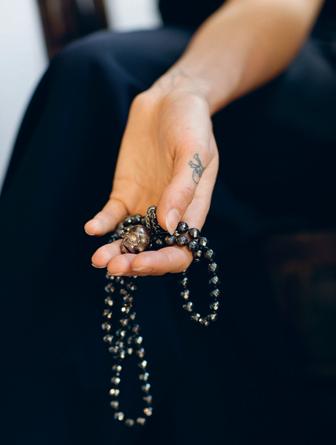
In the centre of Julia’s studio is an unusual arrangement of vintage mannequins, dating from Victorian times through to the 1940s and 1950s. Only Vivienne Leigh’s waist size would come close to those of the mannequins on display. Some mannequins are draped with beaded Victorian shrugs and other adornments designed by Julia, who initially contemplated studying fashion in New Zealand. One jacket features particularly unusual extensions – she describes how she “used scapulae [shoulder bones] and covered these with velvet”. For another Victorian jacket, edged with a faded lace collar, Julia added a couple of exposed bones to the back, capturing the colour and form of the lacework.
Although each arrangement in Julia’s studio has been painstakingly created, they haven’t been altered since she moved in. “I like things to find their own niche. I don’t have time to keep moving them around,” she says. Her rigorous routine starts “before seven in the morning. I’m ready to work soon after eight and I generally work seven days a week”.
Fortunately, Julia only has to walk down the corridor to get to her studio. And like her studio, her bedroom is filled with stuffed animals and birds. A raven, presented in full flight, is precariously attached to her 1940s armoire. A baby goat looks up from a table at the end of her bed. And while her New Zealand heritage isn’t plastered on the walls, she has an extensive collection of boots from New Zealand designer, Zambesi next to her bed.
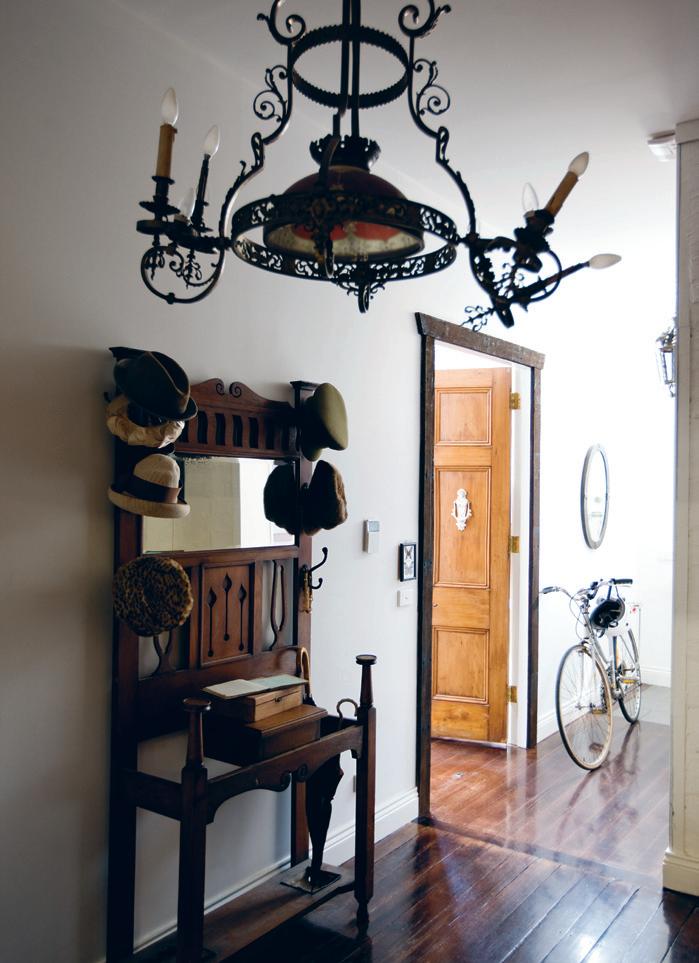
53
06
07
Life and death are interwoven through her collections and the spaces she inhabits
“I’m slowly working through the place. The upstairs needs a complete make-over,” Julia says, leading the way up a timber staircase. “The first floor was only added five years ago, but it already looks dated,” she comments, pointing out the scalloped timber joinery and granite splashback in the kitchen.
Julia’s two dogs sleep in their own miniature ‘Persian tents’, sourced on the internet. And large, worn 1930s leather armchairs give the place a lived-in feel. “I’ve always been interested in old things, particularly things from the 19 th Century. I also prefer some chaos, with things being a little messy” she says.
Most people visiting her home tend to gravitate towards different parts of the studio every time they visit. Whether attracted by the vintage rhinestone and ivory necklaces, or the sculpture by Aly Aitken titled ‘From the House of Edvard Munch’ (a leather bound creature with twig-like legs and mouth full of teeth), the senses go into overdrive. Like her jewellery label, Disce Mori, Latin for ‘Learn to Die’, the themes of life and death are interwoven through her collections and the spaces she inhabits. It’s a theme Julia will continue to explore – “It’s about accepting mortality and understanding death,” she says.

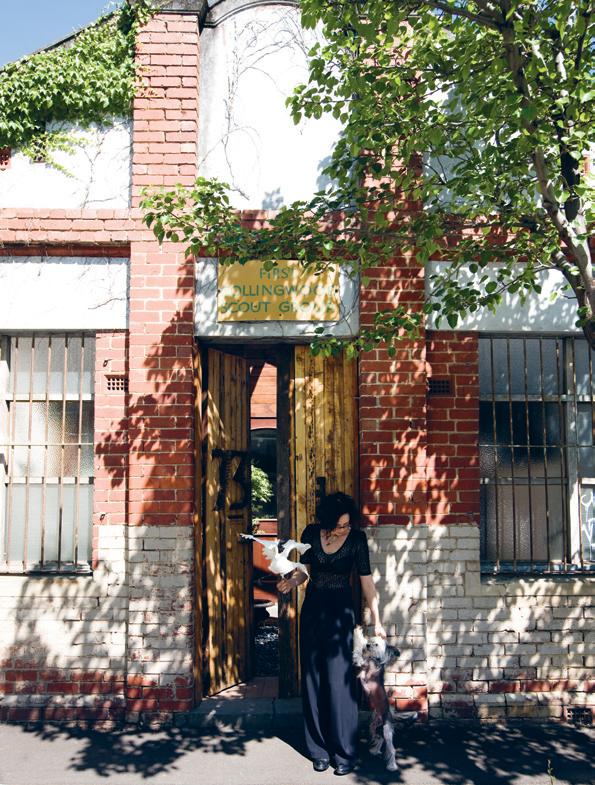
54 creation habitus 07
habitusliving.com 05 Vintage
06 One
07 The
08 The
09
julia deville — VIC, australia
mannequins create an impressive centrepiece in the studio.
of Julia’s designs featuring a silver skull attached to beads.
entrance to Julia’s home has a Victorian feel.
joinery was custom-made in New Zealand.
Julia in front of her warehouse-style home.
Disce Mori, discemori.com
09 08
Each arrangement in Julia’s studio has been painstakingly created.
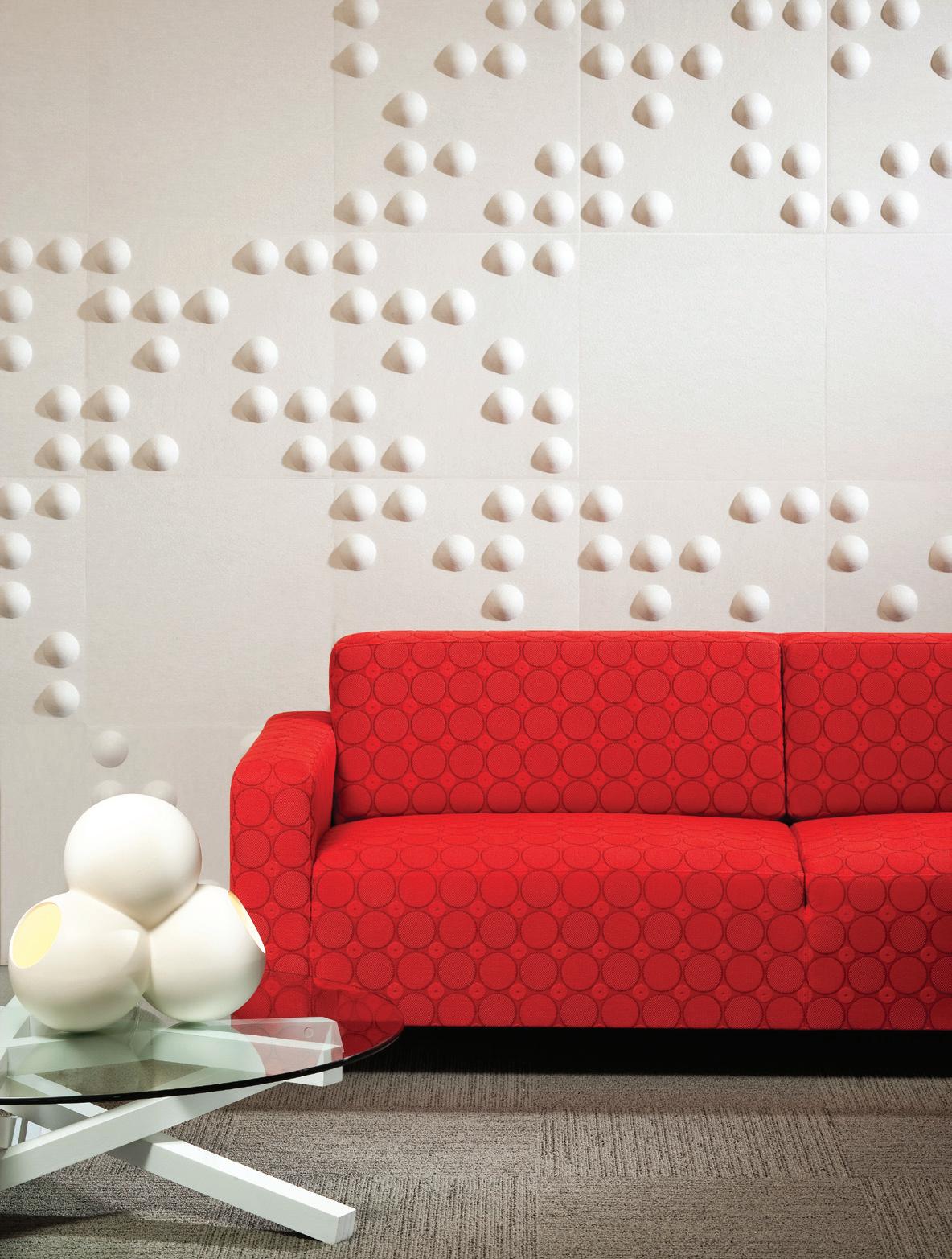
EchoPanel®Tile, the next generation in sustainable 3D wall tiles from Woven Image. wovenimage.com VERTICAL SURFACE: ECHOPANEL ® TILE 909 CHAIR: UPHOLSTERED IN KNOLL TEXTILES GIBSON MARASCHINO “THREE 7S COFFEE TABLE” BY CIRCA+ONEHUNDRED PO/0129 LAMP FROM CAPPELLINI @ DEDECE PHOTO: PAUL GOSNEY

56 partnership habitus 07
habitusliving.com
nobody — VIC, australia
Text Kath Dolan
Photography James Geer
Nobody’s fools
Denim lovers are an obsessive bunch and John Condilis, 42, and brother Nick, 40, are no exception. John recalls the pair ‘tagging’ other kids at school for the iconic leather labels on the back of their Lee jeans, shrinking them in the oven and punching holes in one corner to turn them into key rings (a strangely popular pastime in suburban Melbourne in the 1970s). As teenagers the Condilis brothers spent hours designing back pocket signatures for imaginary denim labels. The lads learned the intricacies of handling and manipulating denim early on while helping out their dad, Jim, in a denim laundry he managed for former client, Dachet Jeans. When Jim decided to open his own denim laundry in 1992 it seemed inevitable his sons would join him. At the time, John was working as an engineer with a global hydraulics company, but says he knew the profession wasn’t for him.
In the halcyon days of the early 1990s the Condilis laundry worked with a who’s who of Australian denim manufacturers, gained
experience with a phenomenal range of fabrics, styles, cuts, wash effects and detailing, and built up a staff of 50. But the coming of freetrade agreements meant the whittling away of tariff protection. By decade’s end, with growing numbers of clients taking their business offshore, the boys saw the writing on the wall for the laundry and decided to try their hand at design. With no formal training they started small, drawing on an understanding of the medium formed in the washhouse analysing the hits and misses of other labels. Nick naturally gravitated towards design – “it’s in you or it’s not”, he says simply – and hired a pattern maker with a keen eye for colour, fit and placement, who still works alongside him a decade later creating collections and finessing a look he describes as easy, honest and not too contrived. John’s engineering skills helped him custom design massive industrial grinders and various power tools used by the trio – and as many friends as they could rope in – to hand-work every pair of jeans they produced. It
was the era of sandblasted, ripped, dirtied and distressed denim, and the troops went to town.
Twelve months after launching their new label (dubbed Nobody in a nod to the absence of a ‘star’ designer), the Condilis brothers experienced a transformative annus horribilis. In 2000 their mother passed away, the laundry lost a pretty packet in a client dispute and the continued exodus of local manufacturing overseas forced them to lay off 40 of their 50 laundry staff. John winces at the memory but says it forced them to choose clients more carefully and taught him he could survive just about anything.
In 2001, Nick met a 30-year-old philosophy graduate named Wesley Hartwell who had a few years’ retail experience at David Jones and a head full of ideas about postmodernism, personality theories, creativity and global branding. In a move even Wesley concedes was “kind of crazy” for a label consisting of just three people (including two co-founders), the no-nonsense
57
For a tight-knit family business, Nobody Jeans is remarkably open about who it invites into the creative fold. Kath Dolan talks to brothers John and Nick Condilis about the label they launched in 1999 for entirely pragmatic reasons, the unusual three-way creative partnership they’ve formed with UK-born, New York-based creative director Wesley Hartwell, and the cold, noisy, dirty denim laundry founded by their father Jim that inspires them all.
nobody — VIC, australia
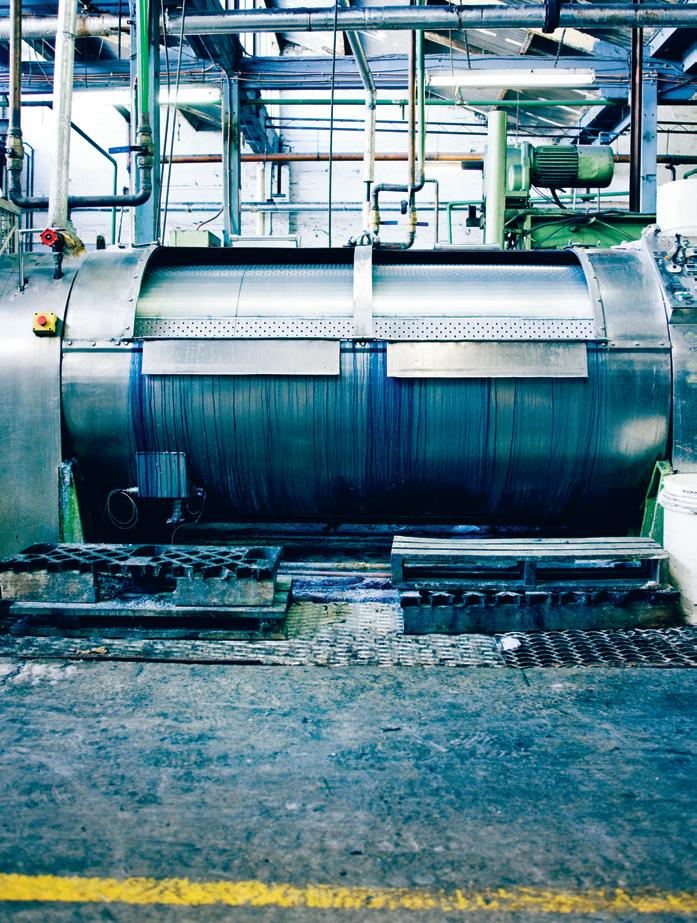
brothers appointed the newcomer to a role that began as sales and marketing manager and quickly morphed into creative director of their label. John recalls trying to drill Wesley initially but responding to his ideas and, crucially, trusting his intentions. “Wesley became our eyes and ears to the market – making sure we were on the money or a step ahead,” John says.
In 2002, Nobody launched its first readyto-wear collection and over the next few years attracted attention locally with group and solo runway shows at Mercedes Australian Fashion Week in Sydney, seasonal collections inspired by deliberately provocative themes, including ‘nihilism nothing nobody’, ‘vandalise the mind slums’ and ‘why do I love what I hate’, and tongue-in-cheek T-shirts emblazoned with puns like ‘Nobody loves you’ and ‘Nobody gives a shit’. Keen to distance the label from traditional marketing methods like billboards, catalogues and even fashion weeks, Wesley championed the launch of seasonal collections through themed books freely distributed via stockists and at celebrity-studded ‘events’, from nightclub parties to installations in art galleries – all created working in collaboration with a loose affiliation of artists, writers and photographers from Australia and overseas.
For critics, all this is evidence of an overpriced label taking itself way too seriously but Wesley, John and Nick insist they’re sending up the pretensions of the fashion industry and encouraging consumers to be themselves. Whatever the reality, the label has attracted some high profile admirers internationally (including Lane Crawford in Hong Kong, American Rag in the US and Selfridges and Harvey Nichols in the UK) and now boasts around 150 stockists in Australia and about 300 more in 25 countries. Even detractors admit Nobody jeans are now found in some of the world’s coolest stores: Atrium in New York, Ron Herman in Tokyo, Skindeep in Stockholm, Glow in Helsinki, Lileo in Toronto and even the Museum of Contemporary Art in Chicago.
Keen to expand Nobody’s presence internationally, Wesley has re-located to New York, where he lives in a pared back 1920s apartment on the lower east side with 10-foot ceilings, a sunken lounge room, original floorboards and features and plenty of clean lines, overlaid with a riotous clash of colourful furnishings: a neon ‘grandma’ flock rug, a 1950s couch and an orange floral club lounge. It’s a style he describes as a blend of industrial, modernist and baroque, and it couldn’t be in greater contrast to the Spanish Mission-style home John shares in Kew with his wife and young daughters –all tasteful timber furniture, neutral tones and family portraits. Both homes are a world away from Nick’s high-rise apartment in beachside St Kilda West, with spectacular views across Port Phillip Bay, minimalist interiors blending midcentury and contemporary furnishings, and a kick-arse telescope he hasn’t quite mastered yet.
58 partnership habitus 07
habitusliving.com
01
Brothers, John and Nick are complementary opposites.
02
Denim runs into the drains and through the veins of the Condilis boys.
03
John’s role of laundry manager is particularly hands-on.
04
Nick (left) and John (right) in front of the 10 year anniversary collection.
02

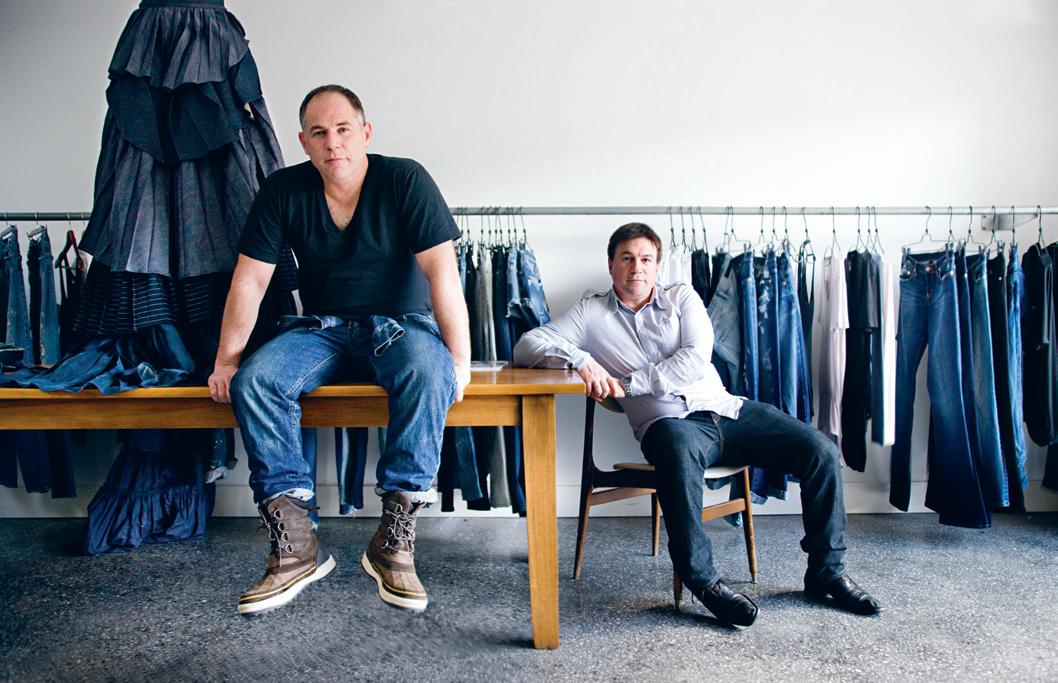
59
03 04
...sending up the pretensions of the fashion industry and encouraging consumers to be themselves.
05 Washing, treating and dyeing other people’s denim gave the brothers a unique understanding of the fabric’s structure.

06
Each pair of jeans is scored, scarred and distressed by hand.
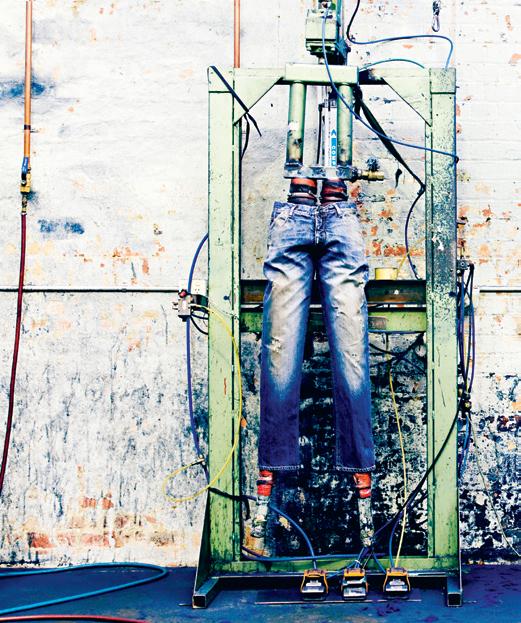
07
Nobody’s tonguein-cheek T-shirts have helped raise the profile both locally and overseas.
08 The Brunswick Street showroom.
partnership habitus 07 nobody — VIC,
60 05 habitusliving.com
australia
06
...what unites and inspires all three is the dirty great industrial laundry where the label began.

61
nobody — VIC, australia

The trio’s personalities are just as divergent. John describes Nick and himself as opposites who complement each other, characterising himself as a cautious, methodical, “behind-the scenes man” and problem solver, and Nick as an instinctive, carefree, gregarious “front man”. Wesley is a philosophical thinker and persuasive communicator, he says. Wesley sees himself as a creative, big picture man and both brothers as genuine and passionate. “Nick is like a character who always reminds us of the essence... of why we’re doing it,” Wesley says. “We’re not doing
it to kill ourselves working hard all the time, we’re doing it because we love it and have a lot of passion and fun.”


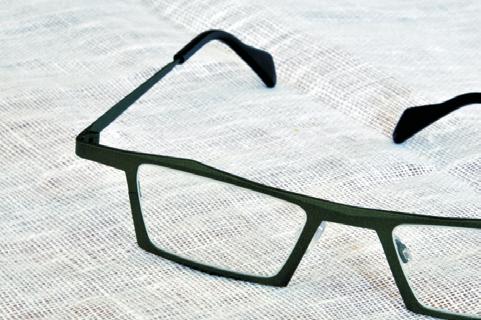
Inspirations differ too. For Nick, ideas flow from all directions: Nobody’s burgeoning creative team, denim diaries he’s used to research their 10 th birthday Heritage Collection, the expressive individuality he spots daily on passers-by in Brunswick Street (home to Nobody’s flagship Fitzroy store and design studio), or amazing fabrics he sources from denim mills in Japan. Ultimately, it seems, what unites and inspires all

three is the dirty great industrial laundry where the label began. It’s an atmospheric, slightly surreal space, full of clouds of steam that billow like dry ice, swirls of airborne blue fluff and teams of men in masks and overalls roughing up sexy jeans with huge, unwieldy grinders. It’s a far cry from the glamour of runway shows and VIP parties, and a place that easily accommodates all their disparate personalities, tastes and ideas.
Nobody, nobody.com.au
62 partnership habitus 07
habitusliving.com Untitled-3 1 11/1/10 3:05:46 PM
08
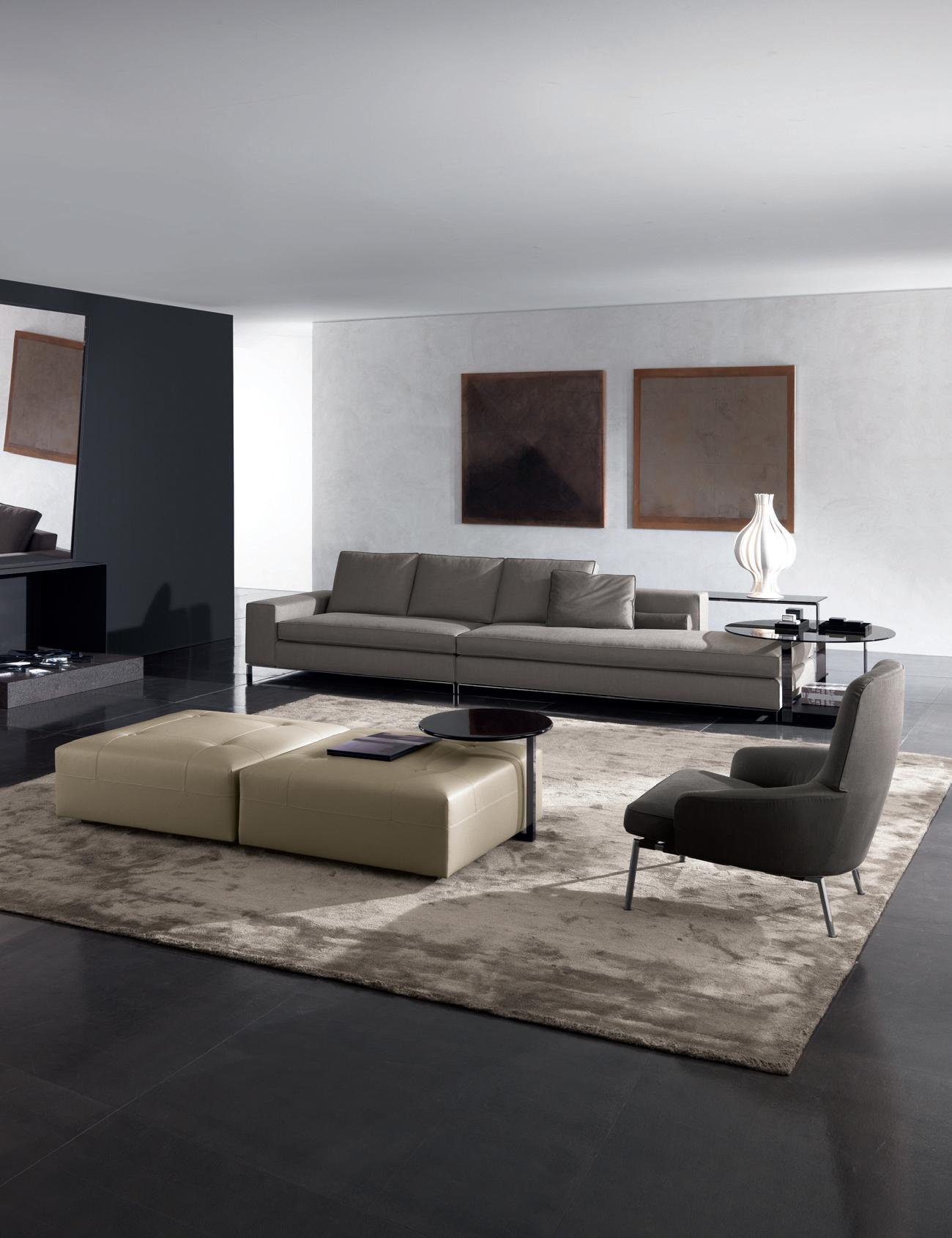
Australia: Sydney - Dedece - Tel. 02 9360 2722 Melbourne - Dedece - Tel. 03 9650 9600 Brisbane - Dedece - Tel. 07 3367 0755 New Zealand: Auckland - ECC Lighting & Living - Tel. 09 379 9680 Minotti S.p.A. 20036 MEDA (MI) ITALIA via Indipendenza, 152 Tel. +39 0362 343499 www.minotti.com - info@minotti.it Williams, seating system
Rodolfo Dordoni
design:


 simryn gill — NSW, australia
simryn gill — NSW, australia
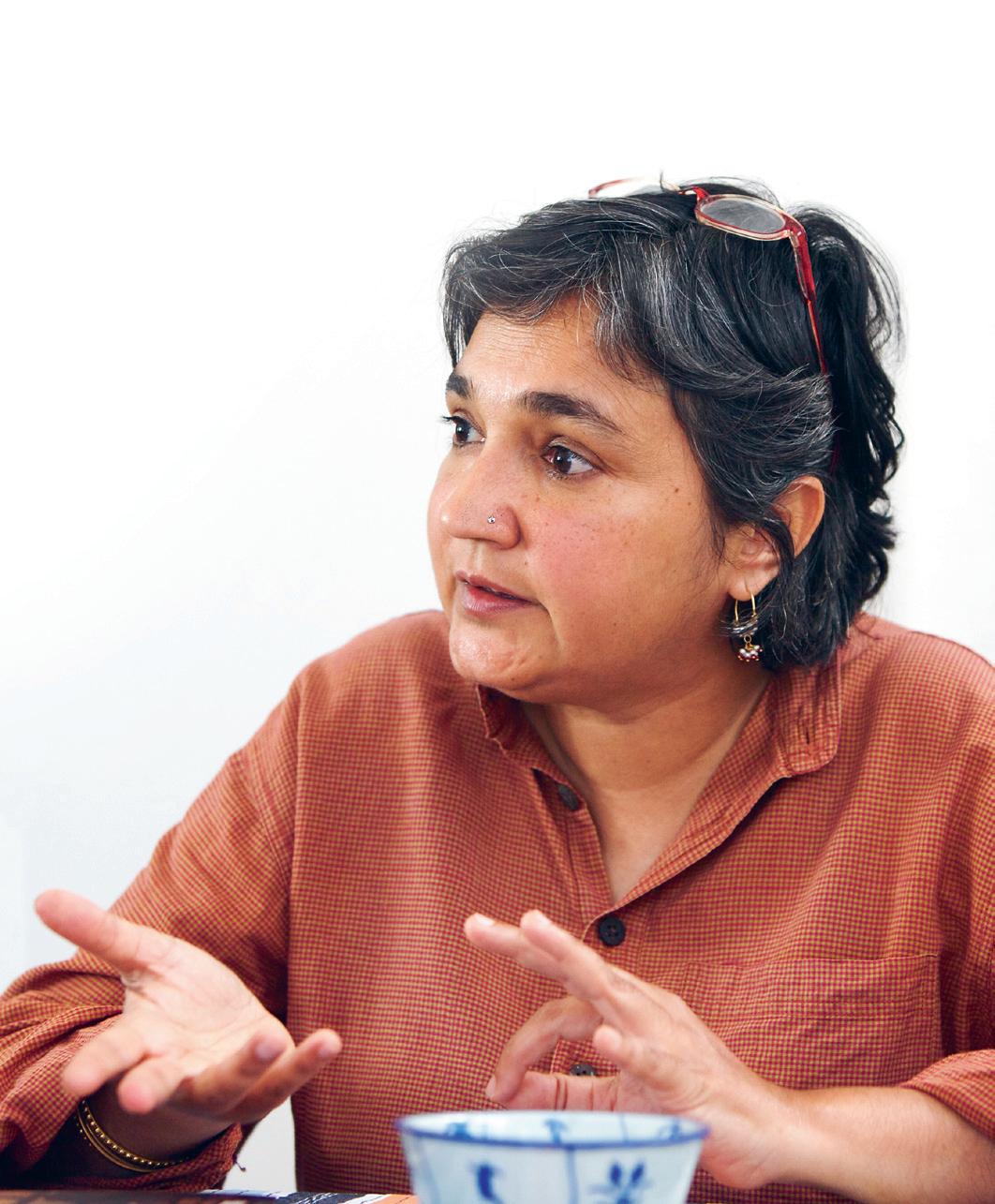
The Secret Life of ThingS
Born in Malaysia, artist Simryn
Gill now lives in Sydney. But she regularly returns to her home town, Port Dickson, to pursue what she calls her excavations.
66 inspired habitus 07
Text
Photography Simryn Gill, Paul Lovelace (portrait)
Paul McGillick
habitusliving.com
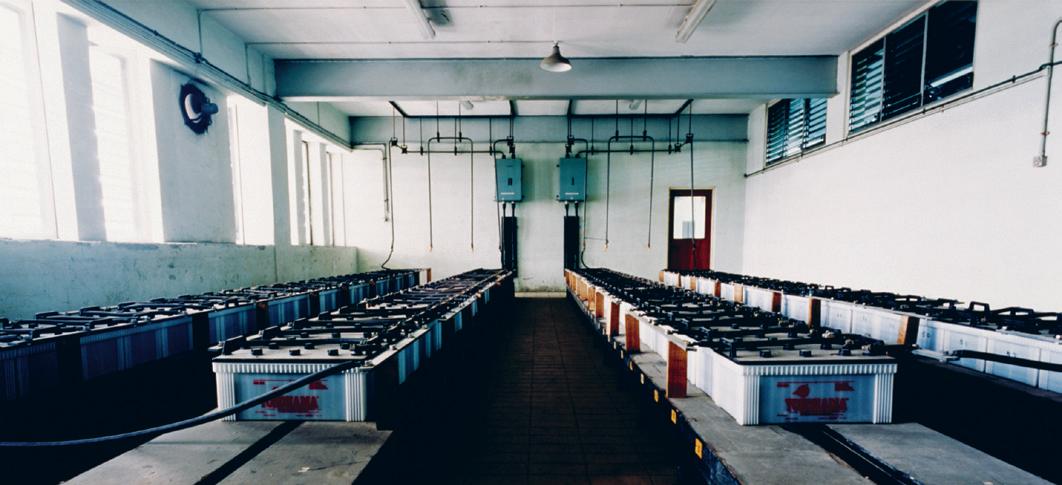

67
The pairs of photographs in this story each juxtapose the now demolished power station and Simryn Gill’s family home in Port Dickson, Malaysia.
simryn gill — NSW, australia
Thomas Wolfe’s novel, You Can’t Go Home Again, just about sums it up – whether you believe in progress or not, things will never again be the way they were. Yet we often can’t resist sneaking back to the town or street where we once lived, the school reunion or the fantasy of winding back the tape and seeing ourselves as we were then, perhaps in childhood.
Of course, Simryn Gill can go home again, because the family home in Port Dickson, Malaysia is still there and still occupied, even if the oil-fired power station next door has been pulled down and replaced by a new gas-fired power station. The house was built in 1928 and the original power station 40 years later and obviously for a very different purpose. And yet, as the world around these buildings changed –thus subtly changing their respective functions – they became tied together, not just by physical proximity, but by a strange matrix of memory.
“The past,” says novelist L.P. Hartley, “is a foreign country; they do things differently there.” Simryn is intrigued by this foreign country, not for sentimental reasons, but almost as an anthropologist who might scour a site for the bric-a-brac of the past, excavating the layers of accumulated history, in order to understand this place, that time.
“I am fascinated by obsolescence,” she says. And yet, she adds, “the more you look at

something, the more coherence falls away.” So, if Simryn is a species of anthropologist, why not quote another famous and equally idiosyncratic anthropologist, Bronislaw Malinowski who said that “meaning is function in context”. This basically suggests that meaning is not a fixed thing, but something generated by what we are doing, why we are doing it, where we are doing it and when.
Perhaps this is why Simryn the artistanthropologist gathers, organises and presents her artefacts without comment. No interpretation. This is left to the viewers whose imaginative responses are triggered by Simryn’s collection of objects or documentation (through photography) and filtered through their own memories.
“As the artist,” she says, “there is only so much I can put into these [images] that can give the audience access to the process that I went through. But that doesn’t really matter, because the work is not really closed off at that point... because someone else comes in and they look at it and it triggers their memories, their sensibilities. I love it when people look at work and the response is that it makes them think about their own lives. So, it’s not about me. But that’s the material I have at hand – me. And I use that. But it’s not really about that.”
Like all art, Simryn’s work aims to provoke us into reflection. It might draw on the past, but
68 inspired habitus 07
habitusliving.com

69
“ i am fascinated by obsolescence ... the more you look at something, the more coherence falls away.”
SIMRYN
simryn gill — NSW, australia

70 inspired habitus 07
habitusliving.com
“ i love it when people look at work and the response is that it makes them think about their own lives. So, it’s not about me .”
SIMRYN


71
simryn gill — NSW, australia


72 inspired habitus 07
habitusliving.com
it is very much about now. “It’s like an opening up,” she says, “of that question of how to be in the world now.”

And like any authentic artist, art for Simryn is a vocation rather than a career – not in any romantic sense, but in the sense that she did not set out to make a career out of art (because this pre-supposes knowing what art is from the beginning), but simply found herself doing things as a way of making meaning out of the detritus of life (and so re-inventing art for herself alone).
Born in Malaysia, she worked for a time with a regional development agency in Kuala Lumpur before moving to Adelaide (in 1987) with her husband who had accepted a job there. There were children and she finally enrolled at the local art school where she “lasted a year”.
“I just started making stuff,” she recalls. “And Adelaide at that time was a very interesting environment to do that. There was a very good group of friends. Lots of time to talk because there was not a great deal of employment.” After showing in several group exhibitions, Simryn presented a small project at an artist-run space called Post-West before doing two exhibitions at the Experimental Art Foundation. When Simryn’s husband took a university position in Singapore they moved there, but have now lived in Sydney for the past ten years.
Along the way she has exhibited all over the world showing work of great diversity, but always linked by the sense that these photographic records, sculptural collections, ‘pearl bead’ necklaces from compressed textual fragments, postcards, rubber stamps and books are disparate fragments from some entropic memory room. These objects and assemblages are exhibited, but often simply given away to friends or sent through the post, sometimes sold in stores (for example, her intriguing ‘guide’ to the murals in Tanjong Pagar railway station in Singapore) or stored in boxes at home.
In other words, Simryn resists being a professional artist and many of the things which that implies – the commodification of art, the subordination of her natural curiosity to a career path, or to the subtle (and not so subtle) constraints of exhibitions, along with the expectations which can result in compromise. In short, she instinctively protects her vocational urge.
There is a strong argument that art objects are simply the artefacts left behind from the process of making them, which in turn, serve to trigger an imaginative response in the viewer and another process of discovery. Sometimes Simryn simply organises these ‘anthropological’ fragments; at other times she fashions them into
something else. The result is a fine balance between the aesthetic and the conceptual. “These things that we collect,” she reflects, “... how we make comfort or form ourselves. Our nests and what we put into our nests. What we carry... if there were only two suitcases that you had to take away with you if you had to leave quickly, what would you take?”
Above all, Simryn’s art is non-prescriptive. What are we to glean from these images juxtaposing her family home and the old, now demolished, power station in Port Dickson in Malaysia? Look hard and it is possible to
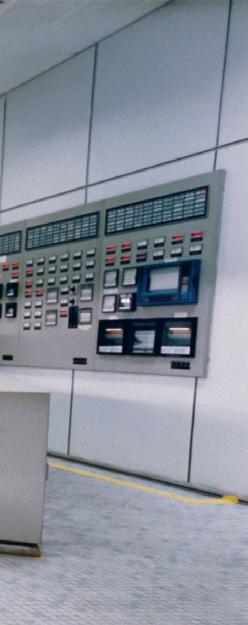
see some points of connection between the pairs of spaces, but any insights remain nonintellectual. Instead, there is a kind of emotional understanding, held in delicate suspense. These understandings are as mutable and fluid for Simryn as they are for the viewer.
The role of these images, as with all Simryn’s work, is to trigger an imaginative response. What are these things? How did they get here? There is no inherent meaning. The only meaning they have is the meaning we invest in them, nourished by our own mélange of memories.
One last literary memory, of a story by Jorge Luis Borges in which inanimate things are not really inanimate at all, but have a life independent of their utility to us. So it is with Simryn’s found materials – it is as though they have their own history and are on their own journey which occasionally happens to cross paths with ours.
73
“ i just started making stuff... And Adelaide at that time was a very interesting environment to do that.”
SIMRYN
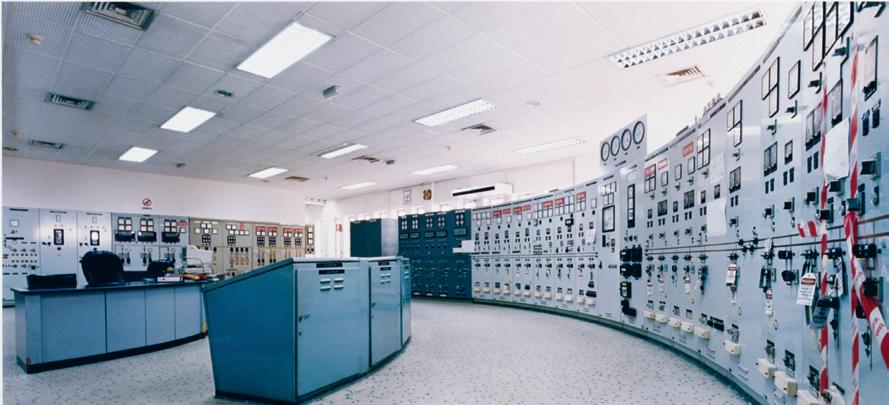
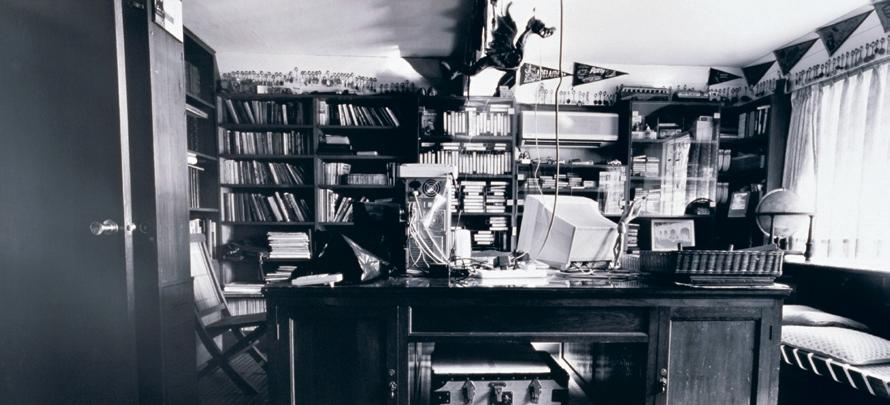

74 inspired habitus 07
gill — NSW, australia habitusliving.com +61394160909 www.tait.biz MELBOURNESTORE NOWOPEN 176 JOHNSTONSTREETFITZROY Untitled-2 1 14/12/09 11:04:33 AM
simryn

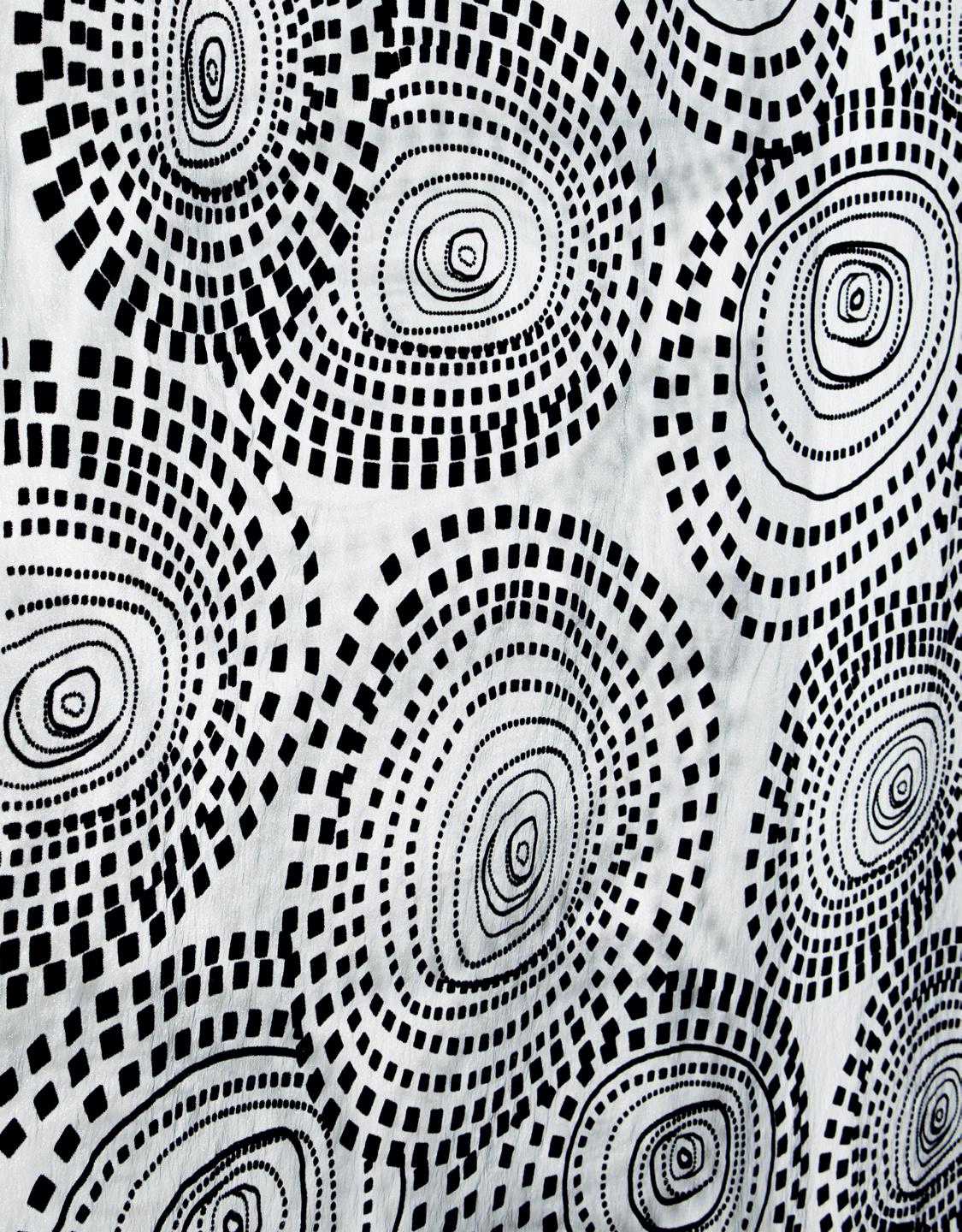
83–97 flinders st darlinghurst nsw 2010 australia | t 612 9360 7244 | e action@bayliss.com.au | w www.bayliss.com.au EnsEmblE, made by manas Tex, designed by Eun Il lee.
charwei tsai — PARIS, france
Imperfection &
impermanence
Delicate and decayed, the works of artist Charwei Tsai explore larger than life concepts, combining nature, Buddhism and the traditional art of calligraphy. She talked with Margie Fraser about the organic development of her practice.
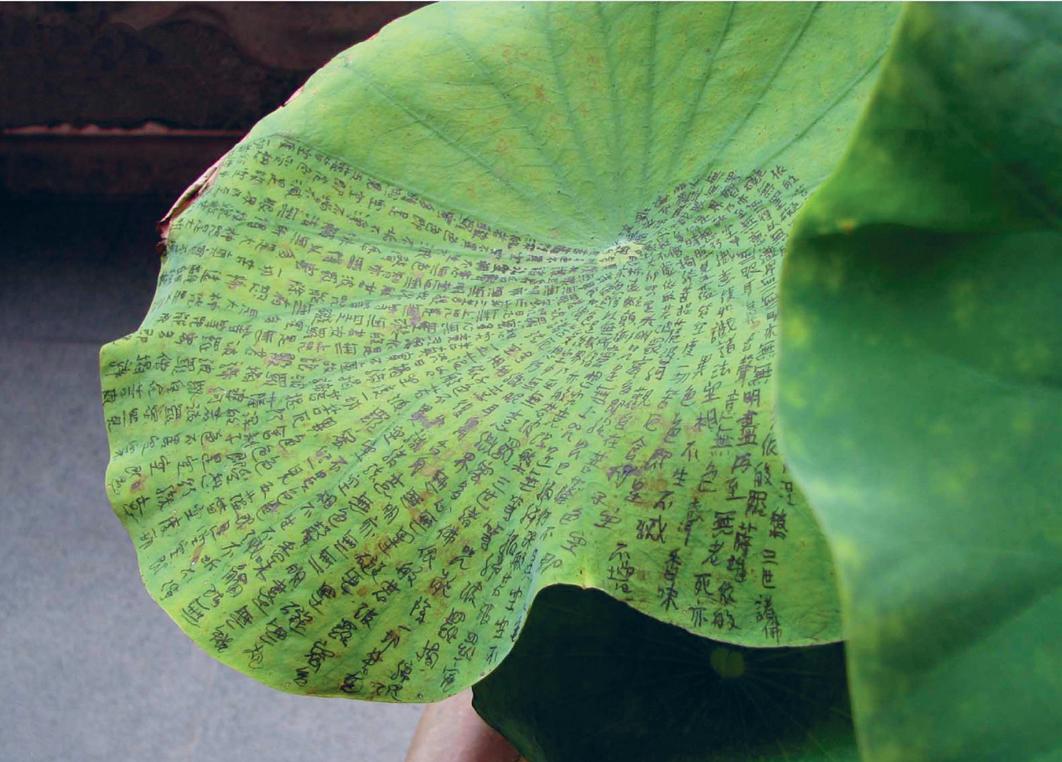
77
habitus 07
slow dissolve
Photography Supplied by various sources Text Margie Fraser
slow dissolve
charwei tsai — PARIS, france
Charwei Tsai’s first visit to Australia in October 2009 may have been fleeting, but it still managed to bring with it a profound sense of serenity and the eternal. The Taiwanese-born artist’s inspiration and subject matter lie in contemplative Buddhist sutras and in the impermanent, regenerative world we refer to as ‘Nature’. Nature and art become inseparable forces in Charwei’s performance-based pieces, where texts are inked onto organic matter – lotus leaves, tofu, mushrooms – and left to shrivel, transform and decay. Chinese characters and numbers tattooed onto ice melt to oblivion, depicting the inevitability of the circle of life while inducing in the viewer a calm acceptance registered in slow-burn time.
While Charwei’s work celebrates acceptance, it is far from reactionary. Earlier works witness heartfelt political statements – maps of China made of raw meat, or the One China policy written onto a live carp (later freed in the pond of a Paris museum). Frogs and octopus have been covered in text, while hermit crabs provided a perfect vehicle for observations about Chinese and Taiwanese propaganda “always changing their shells and finding new ways to present themselves,” according to Charwei. These days, her use of animals and animal products has been self-curtailed.
“When I used to work with animal products, I thought of them as food. I’ve examined what is moral and what is ethical in relation to this, and whether using animals is outside the arena because it is for art. In Taiwan food was so ‘packaged’ that you didn’t think of its origin in the animal.” These explorations have recently led Charwei to become involved with the ‘Voiceless’ foundation, co-founded by art dealer Brian Sherman, which champions animal rights.

Charwei’s visit to Australia saw the completion of her ‘Water, Earth and Air’ – a series of intimate installations as part of an artist-inresidency for the Sherman Contemporary Art Foundation in association with the Queensland Art Gallery. Some of the works are site-specific for the 6th Asia Pacific Triennial of Contemporary Art (APT6) at Queensland Art Gallery’s Gallery of Modern Art (GoMA). A key piece at Sherman involved writing on a mirror as it reflected the passing clouds in the sky. At APT6 Mushroom Mantra continues her work with Buddhist Heart sutra texts placed on the vegetables, which are left to change and die on a bed of soil – to return to the earth.
On the day of our meeting Charwei explains how she has been assisted by a group of local Buddhist monks from outside Brisbane. They have sourced the beautiful dome-shaped mushrooms on which she works and provided the calligraphy brush and ink from their transcription room in the monastery.
78
habitus 07 habitusliving.com
02
“Art is so much a part of everyday culture and has been for such a long time.”
–CHARWEI
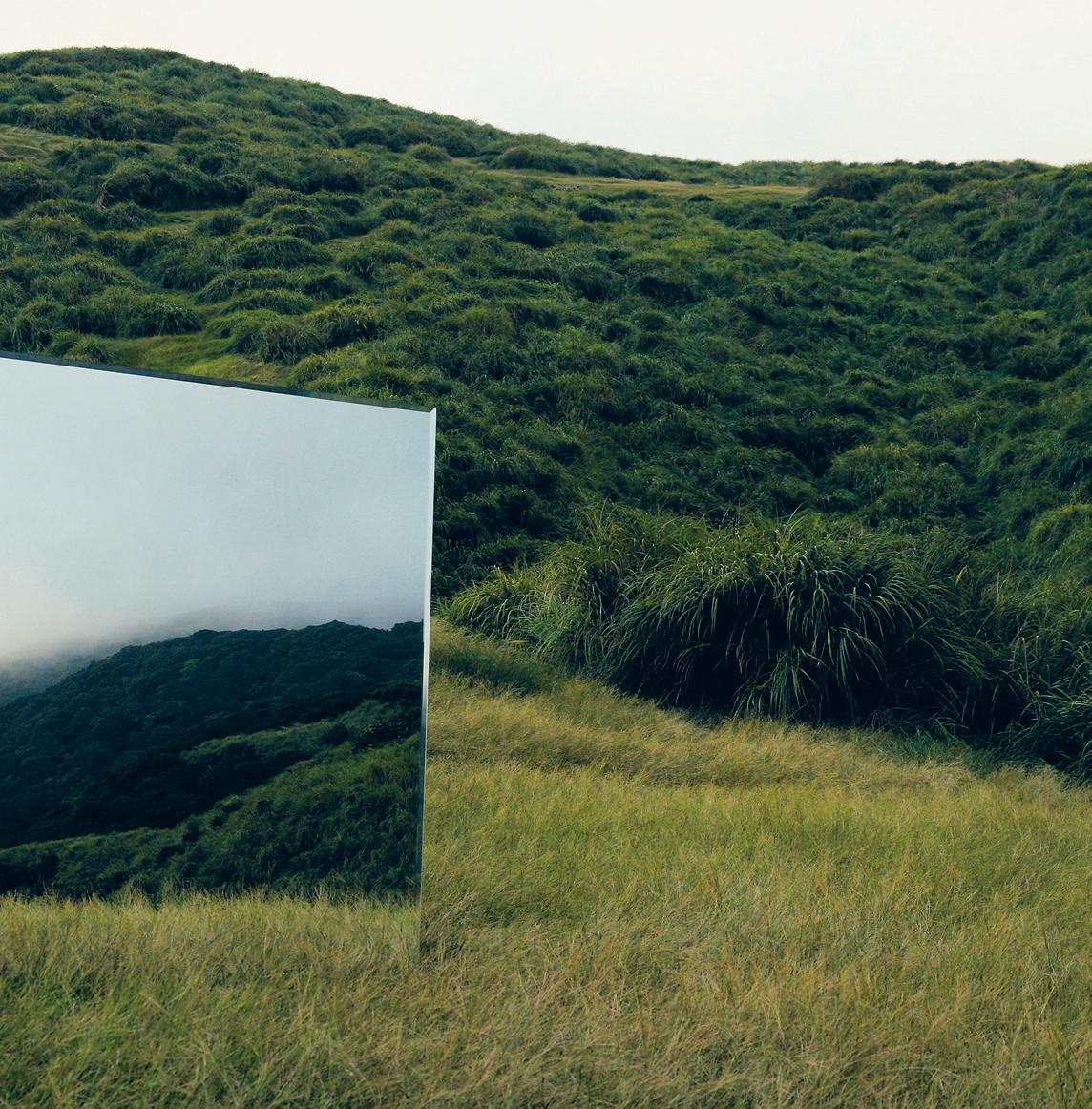
79
slow dissolve
charwei tsai — PARIS, france
“The mushrooms are part of a series of ongoing investigations I started at the Cartier Foundation [Fondation Cartier] in Paris,” says Charwei, “and in a show focusing on religion in the Pompidou. The monks identify strongly with the idea of death and rebirth. I write in a more spontaneous and less disciplined way than they do though. Their writing is all about discipline – evenness in speed, in size, in shape.”
Another joy she discovered and responded to at GoMA was the emphasis on children’s programs. She has installed a delightful and ritualistic video of hand washing in the lavatories as a result. The flat, reflective water plains below the taps show images of different arms and hands washing and scrubbing, adjacent to images of the deep sea and its inhabitants. “It allowed the children to see where the water they use is going.”
Charwei moved from Taiwan to New York in her teens and currently lives in Paris, where she is pursuing postgraduate studies at the Ècole des Beaux-Arts. Her attitude to that seductive metropolis is refreshing: “My work in Paris is about ‘being there’,” she says. “The city is very different from New York or anywhere in Taiwan, for example. Art is so much a part of everyday culture and has been for such a long time. People’s daily conversations consists of art...”
Despite her research and study, Charwei describes her approach to her art as ‘non-academic’. Having initially studied industrial design at art school in New York, she soon moved into art. “It felt more natural for me,” she says. As an under-employed artist she began publishing the delightful magazine Lovely Daze, which comes out twice a year in precious limited editions. Contributors range from Yoko Ono to unknown emerging artists and musicians. Launches take place in favourite dens with friends playing live music.
The editorial to Lovely Daze’s 5th issue is characteristic of Charwei’s trademark placidity:

“Often one discovers ease and creativity in adapting to the perpetual flux of Nature – the shift of light densities from day to night, season to season; the affected air as the natural consequence of altitude, temperature, and vegetation inspired by nomadic values prevalent in hunter-gatherer societies, this issue reveals our instinctual habits in preconditioned light and air, and the experience of transition. Here, nights are celebrated in darkness (with just a little fire) and summers are spent in sweat with beasts roaring here and there...”

80
habitus 07
habitusliving.com
04
Charwei Tsai, charwei.com APT6 at GoMA until 5 April 2010, qag.com.au sherman-scaf.org.au
03
...texts are inked onto organic matter – lotus leaves, tofu, mushrooms – and left to shrivel, transform and decay.
01
Lotus Mantra II, 2006, black ink on fresh lotus. (courtesy of Zhuang Wubin and Singapore Biennale)
02
Earth Mantra, 2009, digital video, black ink on mirror. (courtesy of the artist)


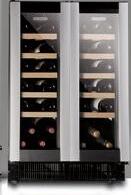

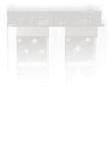

03
Tofu Mantra, 2005, black ink on fresh tofu, 6 x 30 x 60cm. (courtesy of the artist and Fondation Cartier, Paris, France)

04

Iris Mantra, 2005, black ink on fresh iris. (courtesy of the artist and Fondation Cartier, Paris, France)
05

Mushroom Mantra, 2005, black ink on fresh mushrooms. (courtesy of the artist)

81
05 HAB07_Transtherm.indd 1 18/1/10 5:01:26 PM

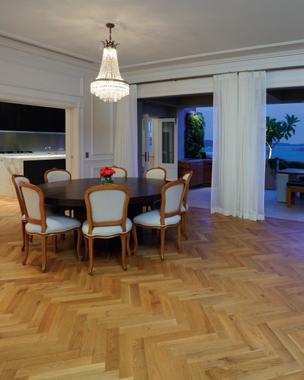

showroom 188 chalmers street surry hills nsw 2010 Sydney telephone 02 9690 0991 facsimile 02 9690 0992 precisionflooring.com.au
MUMBAI AND BEYOND
Indian architect, Rahul Mehrotra, is celebrated for the way he has been able to reconcile tradition and modernity, reinterpreting vernacular forms and devices to meet contemporary needs. Mary N. Woods explores Mehrotra’s residential work and discovers the inspiration of Mumbai as a linking thread.
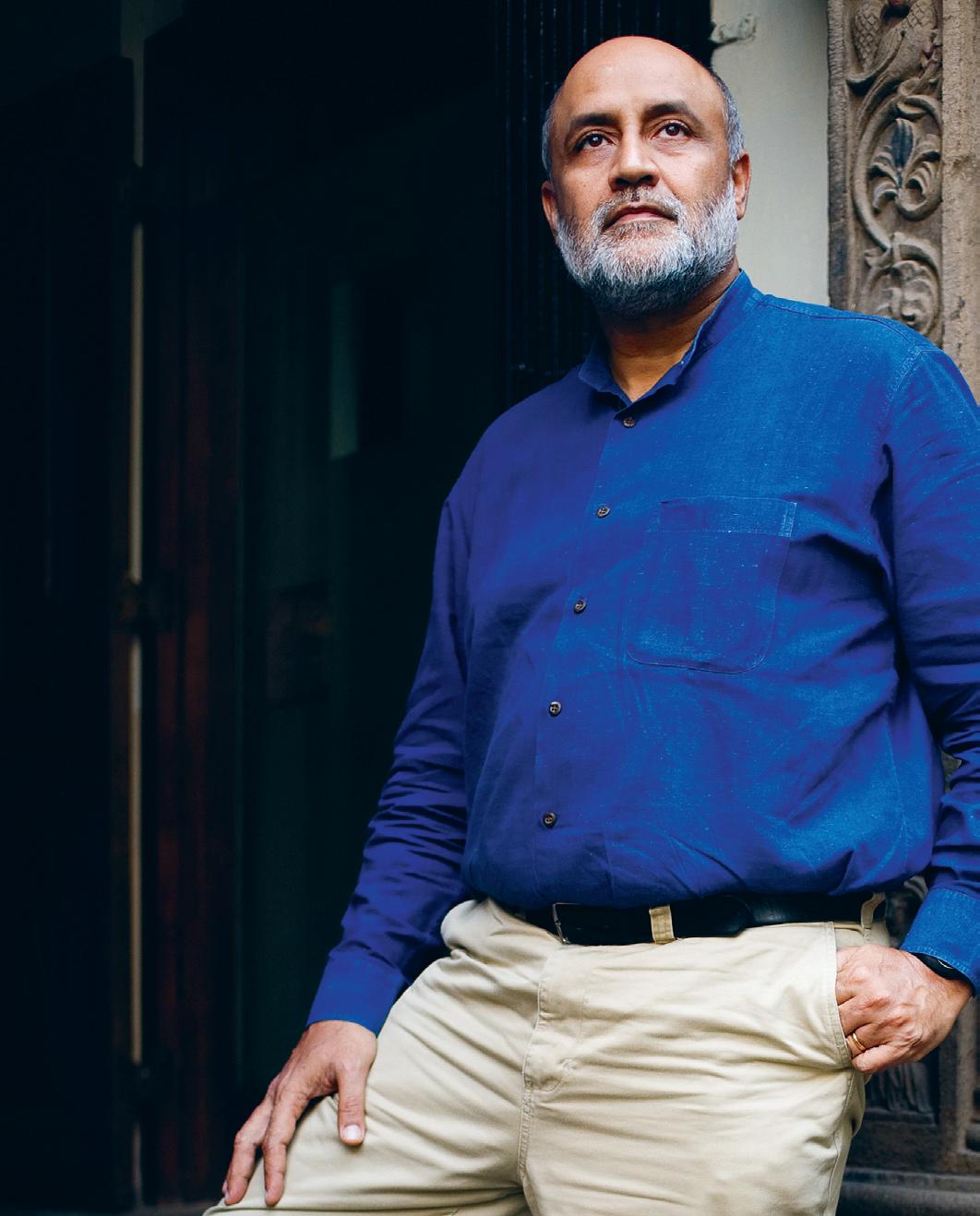
83 close up habitus 07
Text Mary N.
Photography Rahul Mehrotra, Jatinder Marwaha (portrait)
Woods
rahul mehrotra — MUMBAI, india
rahul mehrotra — MUMBAI, india


Slumdog Millionaire made us feel we know Mumbai (formerly Bombay) intimately, from its dense slums to its glittering hotels, and melodramas worthy of a contemporary Charles Dickens do play out here – if rarely with slumdog Jamal Malik’s fairytale ending. Rahul Mehrotra understands this city of extremes, where improvised urban villages take root just below gleaming modern apartments. But he also knows the subtleties of what he and his collaborator, Sharada Dwivedi, called “the cities within” in their 1995 history of Mumbai. The city, he writes, is about “a coming together and a moving apart of the past and present”. In a remarkably multi-faceted practice, Mehrotra projects us into possible futures for built environments there and elsewhere.
Established 19 years ago, his practice, Rahul Mehrotra Associates, now builds throughout India – but, as Mehrotra pointedly says, he works in Mumbai. The city is a laboratory, he asserts, from which the practice extracts a wide range of lessons. Since the 13th Century, Mumbai has been a city of gold for immigrants from across India and the world. This tradition of cosmopolitanism, Mehrotra believes, frees architects from conforming to any one cultural identity or regional identity. Mumbai guarantees, he believes, “a degree of conceptual freedom that permits a modulation and response to particular problems without the baggage of stylistic consistency”.
Working in Mumbai has also led Mehrotra to understand both the ‘static city’ of formal spaces with imposing monuments and the ‘kinetic city’ of spectacle, movement, and ephemeral structures. In a Mumbai of startling adjacencies and unprecedented densities, a festival immersing a huge idol of the God Ganesh in the Arabian Sea beside the business district brings these two cities together. The procession blurs the boundaries between sacred and profane, nature and urban edge, and class and caste. Here, Mumbai
84 close
habitus 07
up
habitusliving.com
02 03
“softens the thresholds”, Mehrotra writes, where “you can begin to accept these dualities or seemingly conflicting issues as being simultaneously valid”. Probing dualities becomes, paradoxically, a way of expanding social interactions and cultural meanings and of re-imagining architectural types and forms.
Born in New Delhi in 1959, Mehrotra chose Mumbai as his home. After graduating from Ahmedabad’s renowned Centre for Environmental Planning & Technology’s (CEPT) School of Architecture in 1985, he received a master’s degree in urban design from the Harvard Graduate School of Design two years later. He worked with Charles Correa in Mumbai from 1988, forming his own practice in 1990. After seven years on the architecture faculty at the University of Michigan, he joined the M.I.T. as a full professor in 2007. Yet he has always worked in India from his Mumbai office.
Designing in this city of multiple and conflicting realities teaches him, Mehrotra says, “how spaces can be used and therefore reinterpreted”. Designing with a “divided mind”, he blurs his identities as architect, historian, planner, teacher, and preservationist. Can such a practice, he asks, sustain and express diversity and coexistence in a designed built environment? Can it create a visual equity that contributes eventually to a more just social and economic order?
His 2001 weekend house for a film-maker in Alibaug (once a village, but now an exclusive enclave across from the harbour of south Mumbai) and the Magic Bus Campus (completed in 2009) for children from the slums in Karjat, an inland town to the east, seemingly engage the extreme dualities of Slumdog Millionaire. Yet Mehrotra bridges the differences with a shared vocabulary of form and material. In both projects he uses walls of local basalt stone laid up as rubble. Flaring metal roofs on slender supports shelter outdoor living spaces in both the house and dormitories. At the clerestory level, wooden louvred panels filter light into the interiors. And cool, polished cement floors lead to rooms shaded by deep window reveals and thin bamboo reed screens. Although he chooses inexpensive cement, stone, wooden planks, and corrugated metal at Karjat because they are materials familiar from the slums, Mehrotra treats them with the same passion, elegance, and sophistication as the palette of the Alibaug house.
Mehrotra also subverts presumed dualities through his recasting of type and program. He ingeniously transforms space from private into communal at the film-maker’s house. Sloping roofs channel rainwater into a well, supplying the household and there is a public tap near the outdoor living room. The villagers use this veranda for weddings and other ceremonies.
He reinterprets the colonial bungalow and the traditional haveli (courtyard) house in a weekend home outside Ahmedabad. This sleek, minimalist villa sits within a mango orchard. Cruciform in plan, it pushes outward like a contemporary Palladian country house, yet the house is also about the haveli’s interior worlds. The living room and guest quarters look out to an open-air courtyard. Here a blue ribbon of water, the lap pool, creates a modern oasis within the house. When the family leaves the house, the courtyard takes on another identity. Wooden shutters secure the living room, and workers enter through a heavy wooden door to wash mangos in the lap pool.
At the Corner House, Chennai, completed in 2003, the courtyard proves an especially supple type for a young couple’s rich and complex program. Wrapped around an elongated courtyard, the house provides the privacy an urban corner plot would not usually afford. The house climbs dramatically from street below to terraced garden above, but the courtyard anchors its steep ascent. Depending on function, the rooms overlooking it present opaque, transparent or translucent surfaces. Platforms outlined with stones float within the courtyard’s reflecting pools. In the house, Mehrotra melds traditional and industrial materials through exquisite
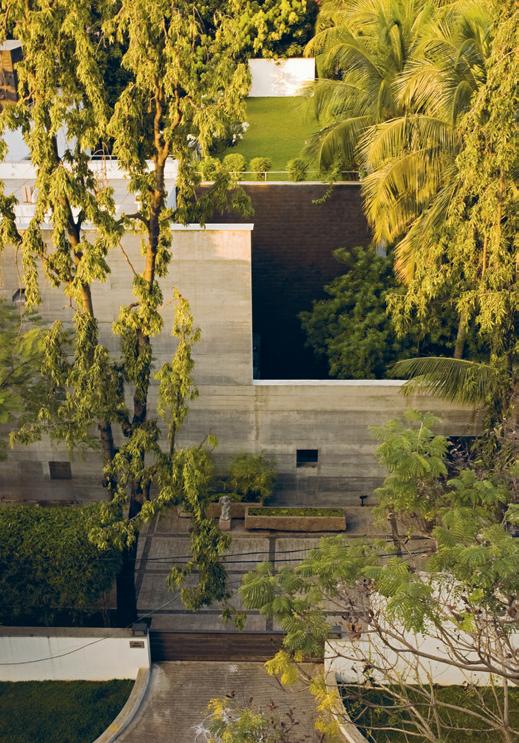
85 01 Indian architect, Rahul Mehrotra. 02 Rahul with elephants and Mahouts at the Hatigaon elephant stable near Jaipur. 03 Orchard House, view across courtyard to living room. 04 Corner House, view from street entrance to terraced garden.
This tradition of cosmopolitanism, Mehrotra believes, frees architects from conforming to any one cultural identity or regional identity.
04


86 close up habitus 07 rahul mehrotra — MUMBAI, india habitusliving.com 05 07


87 06
close up

craftsmanship. While modern artisans work in glass, steel, and concrete, temple carvers create a stone frieze of flowering lotus and cavorting monkeys in the courtyard. As a private retreat, the house has a meditation space and terraced garden filled with Indian antiquities, but it also morphs into a performance space for music and dance accommodating 300 visitors.
The ongoing Hatigaon elephant stable near Jaipur proves Mehrotra’s mastery of designing with a divided mind. As both the project advocate and architect, he transforms what was just a government commission, a stable for elephants vital for heritage tourism, into the regeneration of a desert landscape and low-cost housing for Muslim mahouts (elephant caretakers). Excavated pits in this former sand quarry now catch the precious monsoon rains, and plants, people, and elephants are all sustained by this new waterscape of pools. Courtyard houses wrap around the stables so the mahouts are always near their animals. Families can retreat into a central courtyard because a lowered gateway prevents any rampaging elephant from entering. Once again Mehrotra bridges dualities to create elegant design, rich materiality, and nimble functionality. Clearly, his practice is also about designing projects that are socially as well as ecologically sustainable. Inspired by Mumbai, his architecture is needed in India and beyond.
05 Magic Bus dormitory.
06 Magic Bus Campus, Karjat, 2007, view across playing field to dormitories.
07

Hatigaon elephant stable, entrance façade.
08
Film-maker’s House, view across teak trees to basalt rock-face wall and outdoor living room.
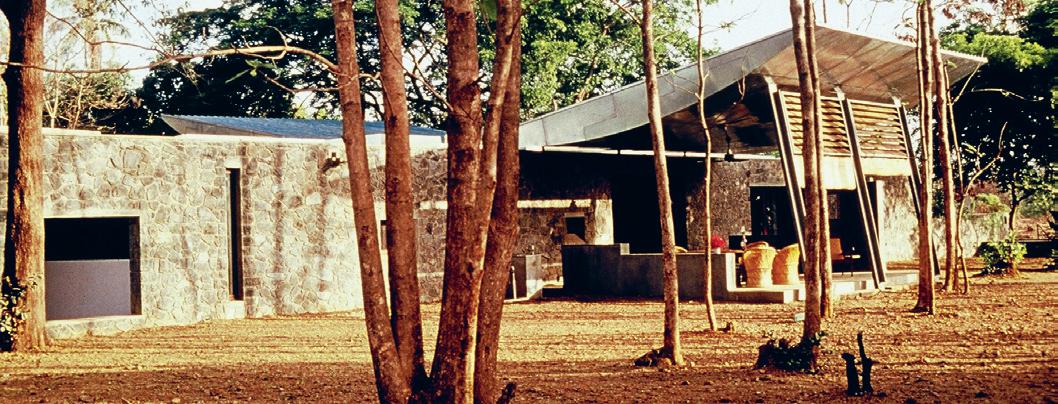
88 habitusliving.com
habitus 07
rahul mehrotra — MUMBAI, india
rma-associates, rmaarchitects.com
Probing dualities becomes a way of expanding social interactions and cultural meanings...
08
www.funkis.com +612 93650573 Untitled-2 1 17/12/09 11:44:38 AM
joker light peg light bolas wallpaper Tres Tintas Wallpaper lletteras tipos by Javier Mariscal

IXL‘s Tastic® Neo Dual and Single are the culmination of hundreds of hours spent researching, developing new technologies and sourcing quality materials



The Tastic® Neo uses 800 W tungsten halogen heat lamps, in conjunction with re ective elements, for a more e cient dispersion of radiant heat Gimble mounted, energy saving compact uorescent downlights allow directional lighting
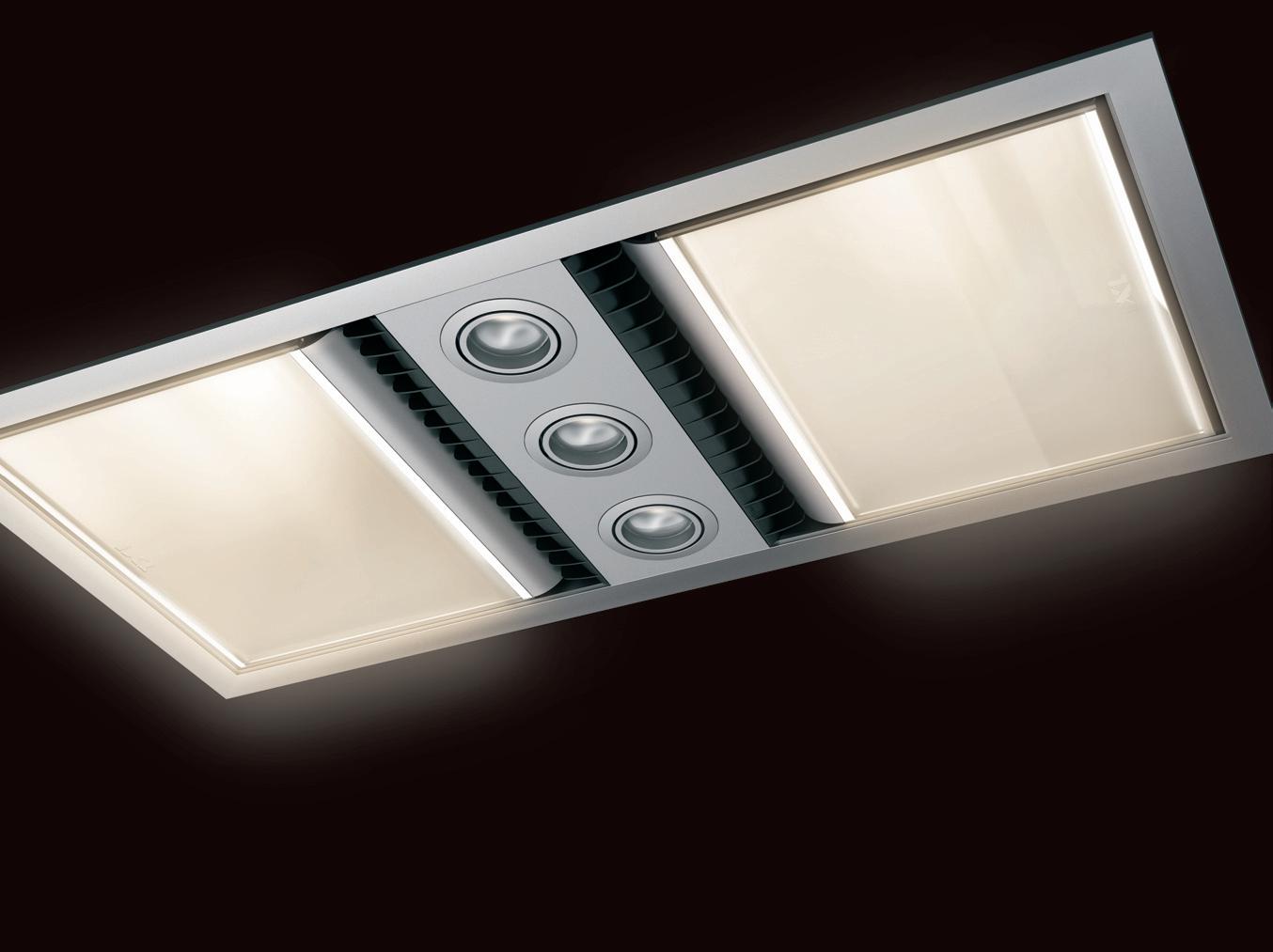
Superior ventilation via the in-line fan ensures your bathroom remains free of moisture Ducted to outside with backdraft prevention, the Tastic Neo is suitable for use within 5 star energy rated homes
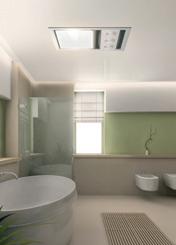
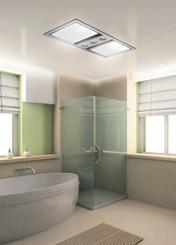
Accompanied by a ve year in-home warranty and a two year replacement warranty on heat lamps, the Tastic® Neo provides unsurpassed safety and quality.
call 1300 727 421 or visit www.sampfordixl.com.au
and
in
D e s i g n e r b a t h r o o m h e a t i n g & l i g h t i n g
Designed, engineered
made
Australia.
The new design classics
The term ‘design classic’ has certain connotations – of tradition, a safe aesthetic and sense of seriousness. But leading design producer, established & sons, is one story that proves that classics are born everyday, with a dynamic range that has relevance and longevity.
Tapping into the psyche of design aficionados, established & sons have inspired a passionate and faithful following due to their unique approach, which celebrates innovation in all its forms. whether it is breakthroughs in material technology, pushing the laws of physics, or the surprising combination of elegance and humour, the brand engages both the eye and the mind.
established & sons specialise in diversity, representing a broad range of designers, architects and artists expressing a myriad of aesthetics. The name itself promotes a design democracy – whether from an established or emerging designer (a ‘son’), established & sons products explore the realm of the unexpected.
launching in 2005, established & sons have experienced an explosive beginning, having already become a household name in the international design arena. despite relative youth, they have been described as “one of the coolest on the planet. not only have they changed the equation between furniture and art, but they’ve also put the glamour and wit back into British design” (hugh Pearman, The new York Times).
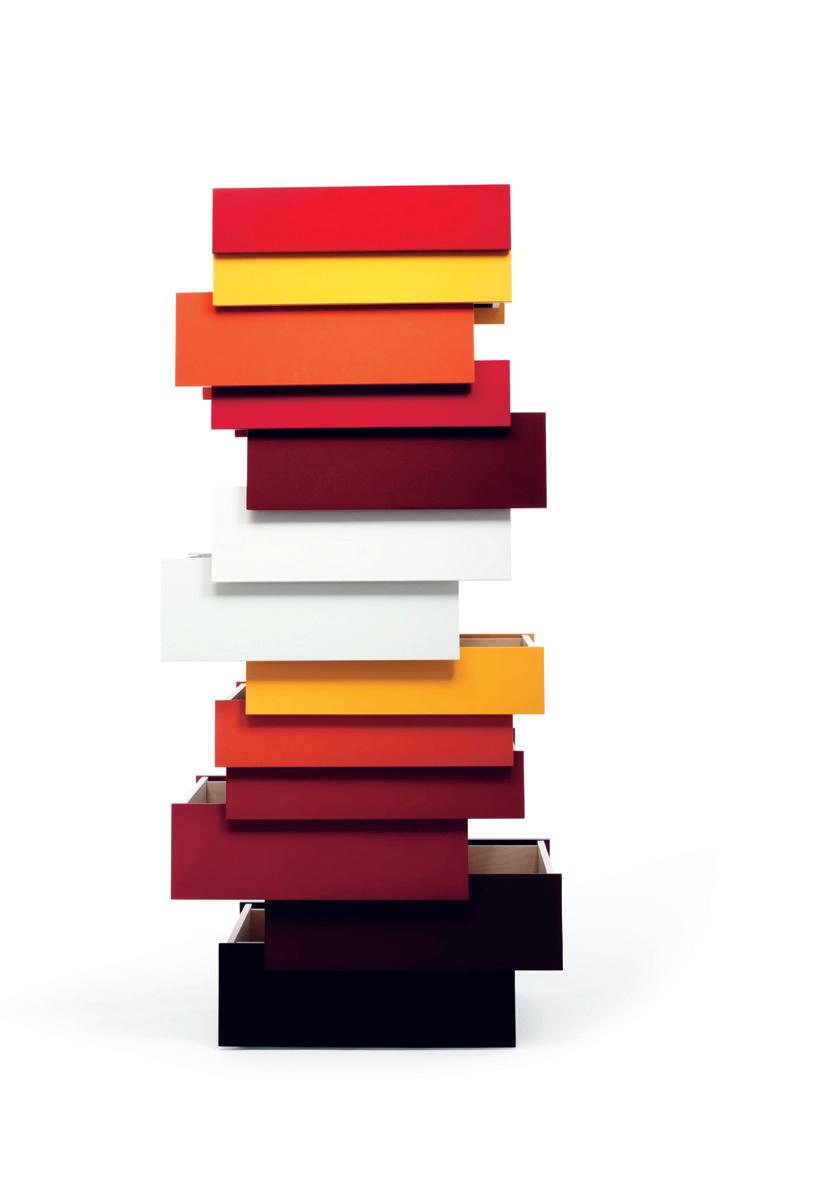
91 01
sponsored
along with innovation, established & sons are committed to providing a strong commercial platform for British and British-based designers. although they have also attracted a range of highlyacclaimed international desigers such as Zaha hadid and the Bouroullec brothers, they have continued to spot and nurture local practitioners, bringing their designs to a global audience.
From creative heavyweights, Jasper Morrison and Barber Osgerby, to relative design debutantes, alexander Taylor and Paul cocksedge, established & sons represent diverse talent from backgrounds covering art, architecture, industrial design, manufacturing and engineering.
Products are divided into three categories defined by their production type, allowing established & sons to create pieces at either end of the spectrum – both mass-marketable and more conceptual. The Principal collection is manufactured in high volume, the signature collection is made-to-order in low numbers and the limited edition collection further pushes the boundaries of conventional furniture production into new directions.
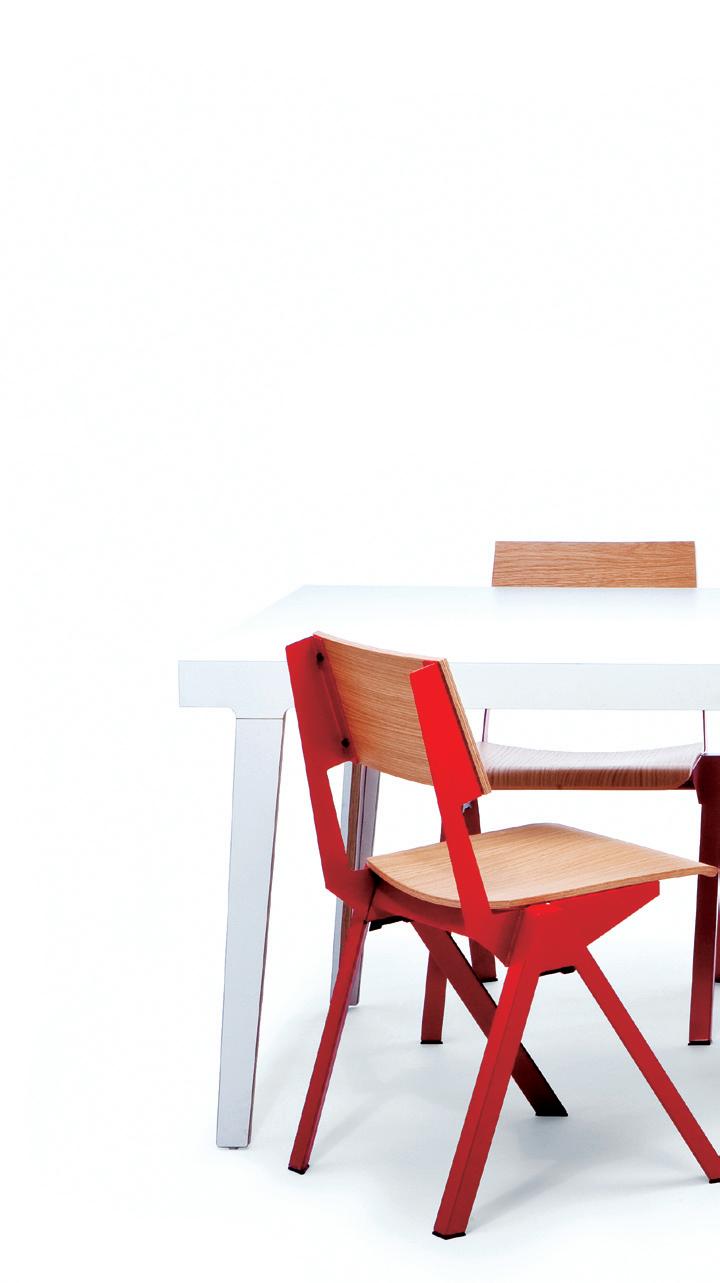
as well, established & sons also have an active collaborations programme, which celebrates the conceptual fusion of personalities from various creative industries. One dynamic duo is product designer, sebastian wrong, and artist, Richard woods, whose combined creative forces have produced a number of pieces. The wrongwoods credenza has the touch of both its makers, with a garish woodblock print motif characteristic of woods transposed on an otherwise utilitarian cabinet designed by wrong. Both aesthetically and intellectually it explores nostalgic interpretations of mid-century domestic furniture.
This winning formula of established and emerging, local and international designers, allows established & sons to sit at the forefront of the industry. They have taken part in a number of global design exhibitions, won a swag of international awards and earned placement into major permanent design collections around the world.
habitus | issue 01 92 sponsored 92
02
01 stack (shay alkalay, Raw edges)
02
s1. M5 table (Frank) Uniform chair (Klauser & carpenter) Beam light (sam hecht industrial Facility)
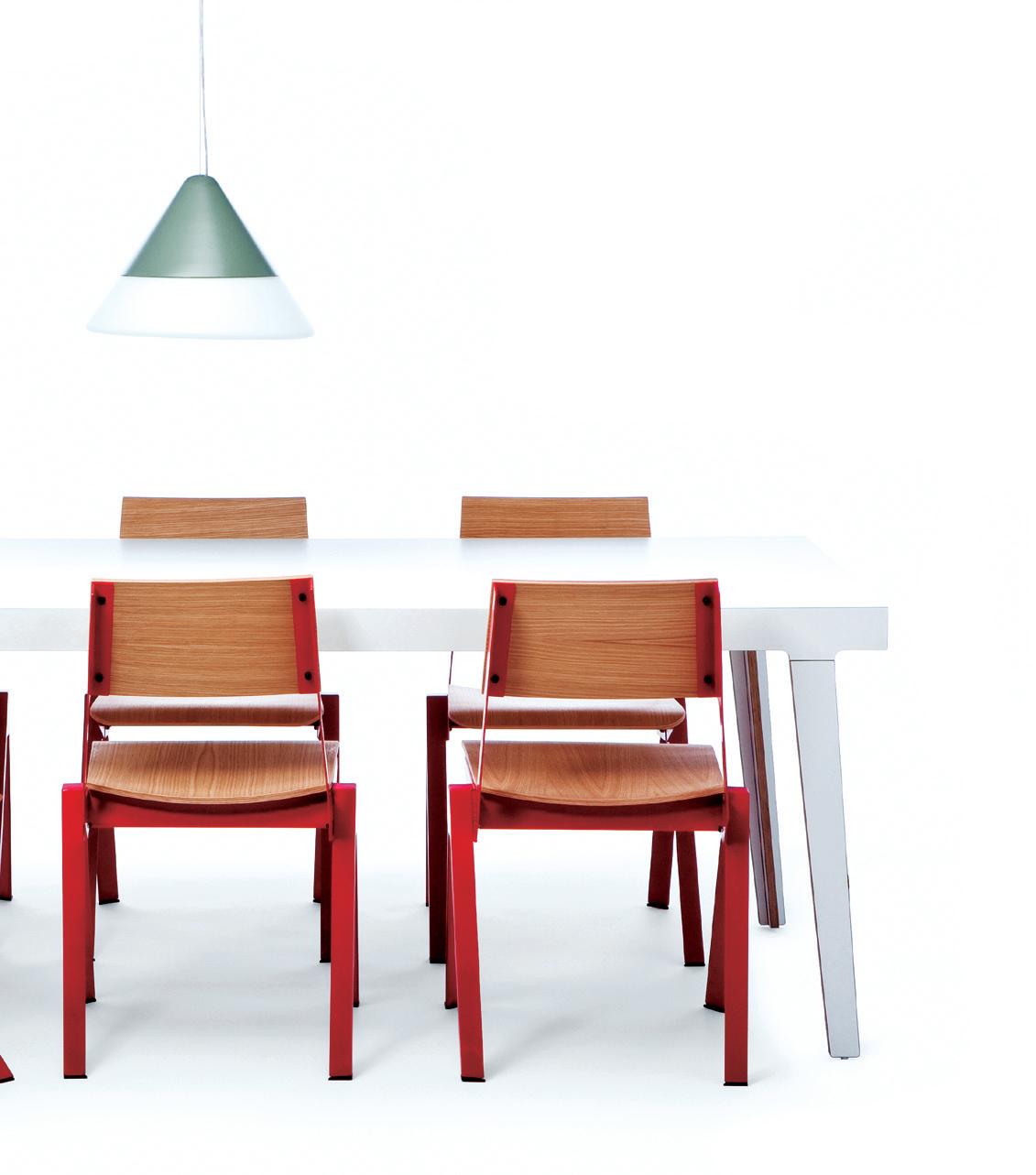
93
with the collection now available in australia exclusively through living edge, design hunters have access to these exciting products that sit on the cusp of art and design. with their own eclectic mix of products and designers, living edge’s commitment to both iconic and emerging designers is echoed in the established & sons philosophy.

living edge ceO, aidan Mawhinney describes how the new brand will bring “a fresh and innovative addition to the living edge range. in the five years since established & sons launched, they have consistently surprised and delighted the design communituy.”
By all accounts, they will continue to produce pieces that, through thoughtful conception and masterful production, cement their place as the new design classics.
03 wrongwoods (sebastian wrong, Richard woods)
04
crate series (Jasper Morrison) Fold lamp (alexander Taylor), easy chair (Klauser & carpenter)
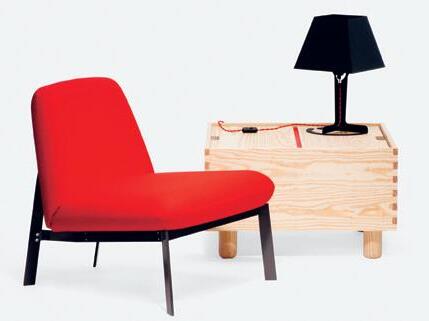
05
Table bench chair (sam hecht industrial Facility)
06
Font clock (sebastian wrong)
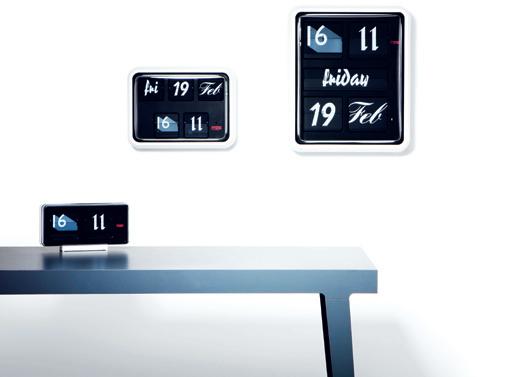
07
Frame chair (wouter scheublin)
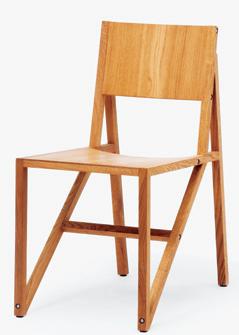
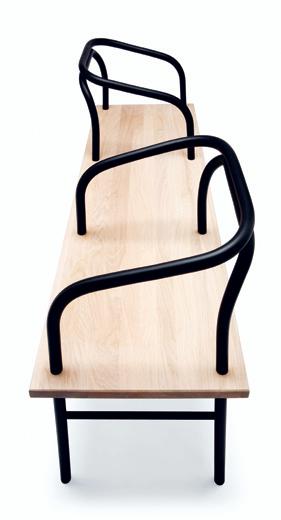
habitus | issue 01 94 sponsored 94 06 07
Living Edge 1300 132 154 livingedge.com.au establishedandsons.com 05 04 03
Design Front Th E W EsTErn
From coast to coast, Jon Goulder’s refined approach to furniture design and making has remained a constant. Elisha Buttler discovers why his new home in Perth has triggered a creative re-birth.
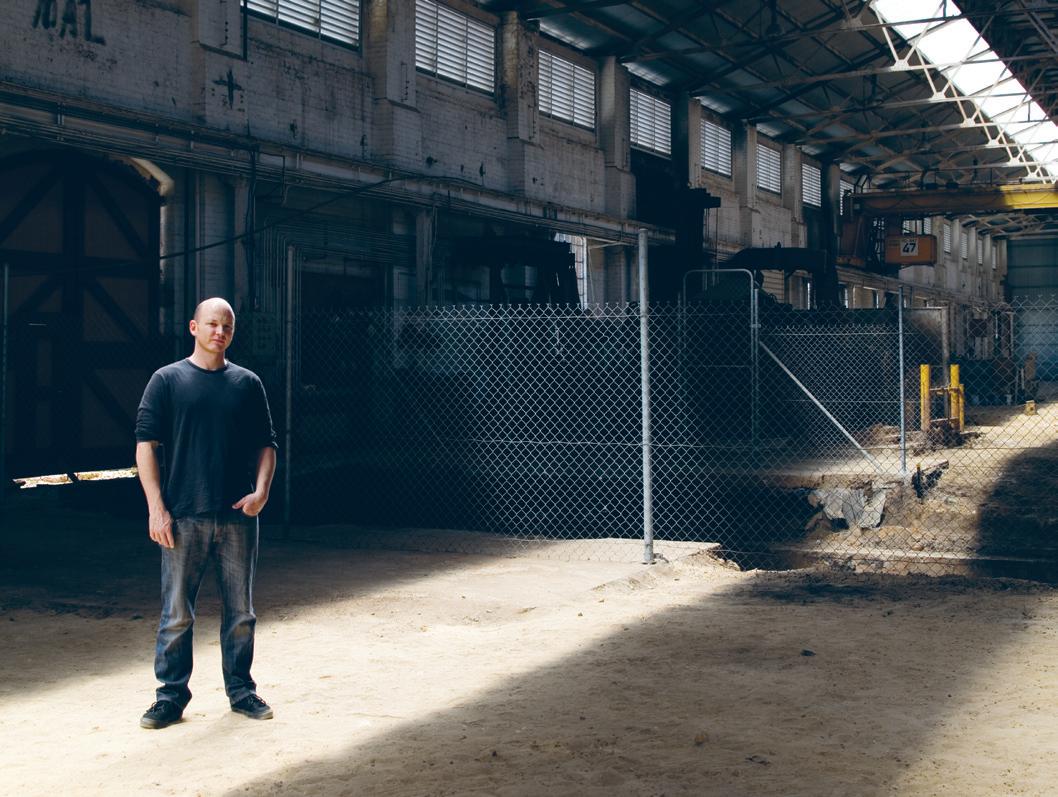
95 habitus 07 on
Text Elisha Buttler
location Photography Bo Wong
jon goulder — WA, australia
on location
jon goulder — WA, australia

Jon Goulder has been a maker since he was young. First under the guidance of his upholsterer father, ray, and brothers, Alan and David, then mentored and inspired by the late George Ingham. Jon grew up in the southern h ighlands of new south Wales, then called sydney home for six years, and now lives in Western Australia. Its status as his home state was cemented recently through his purchase of a 19 th century worker’s cottage in the suburb-towatch of Midland, east of Perth. In a state once known for harbouring cowboys and perpetual sunshine, Jon is leading a new West Australian design wave of makers. h is niche in a crowded design market is his ability to fuse organic purity (in materials and processes) with contemporary cleanness and a hint of vintage Modernism.
Jon’s practice is based at Midland Atelier, a new creative industries development also taking root in Midland. h is relocation, from the familiarity of the east coast design scene to a state of paradoxes (where mining sits comfortably beside the community’s ingrained love of the region’s natural assets), has enabled Jon a creative freedom and courage not easily come by elsewhere. It is here that his first solo exhibition is coming to life; a scrupulously made yet organic collection of furniture, designed with the home in mind. Items in production for

96 habitus 07
01 Jon Goulder inside Midland Atelier’s unfinished Foundry building.
02
Part of Jon Goulder’s new collection.
03
Jon with his wife, Jo, and boys, Flynn and Arlo.
04
02
Jon in his Midland Atelier workspace, under his Orbit light.
habitusliving.com
03
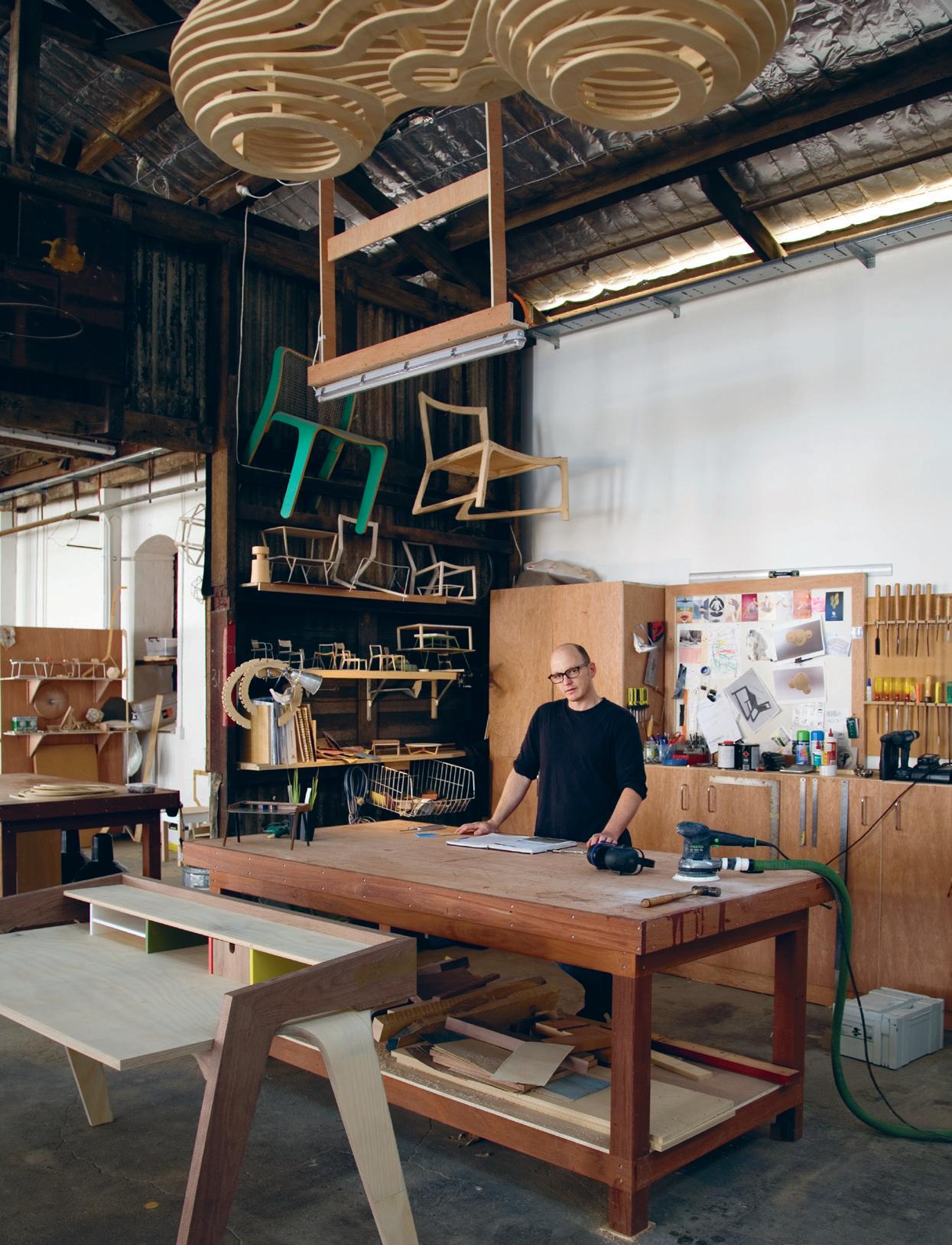
“Working with the other designers and makers is inspirational; to have that kind of cross-link on a daily basis is nourishing.”
–JOn
on location
jon goulder — WA, australia
the exhibition, such the blood orange Calypso lounge and Walnut easy chairs cushioned in rich teal, offer a compatibility of traditional techniques and materials with new approaches to design. It is a combination that has captured the attention of a post-capitalist audience in search of quality, authentic design.
Jon nominates five locations in Perth that inspire him.
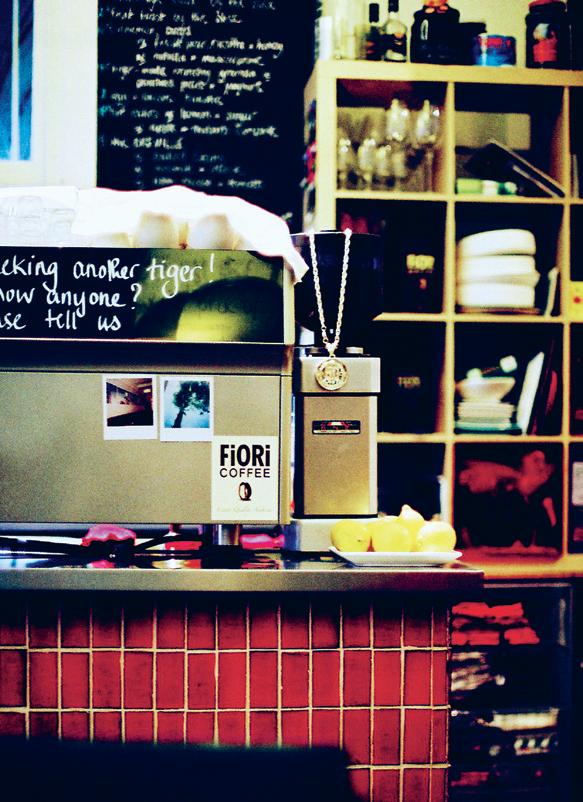

home (Midland, WA)
The ‘art imitates life’ rhetoric rings true for this designer, who describes his wife Jo as “the midwife for every piece” he designs. “Work is a 24-hour thing for me and Jo is the one who pushes me to keep going,” he says. “My son Flynn was four months old when we packed up everything and moved to Perth. We were coming from a family and friend-rich environment to a place where we knew no one. The move and the isolation made us a tight unit as a family. It gave us confidence – it was a big decision, but we did it and now there’s a sense that we can do anything. We’re not scared.”
Tiger, Tiger (Perth CBD)
“From a very young age I’ve always loved the social ecology of cities,” says Jon. From the southern h ighlands to sydney and Perth, Jon’s life trajectory has seen him cyclically shift from country to city. “I love being in the hustle of a city. I like seeing the subcultures, the grot in the gutter.” In Perth he is particularly drawn to Tiger, Tiger, a small cafe/bar tucked into Murray Mews – one of a network of CBD laneways slowly transforming into social and entrepreneurial arteries. Despite its appropriate climate, Perth has been slower than some cities to embrace al fresco and laneway commerce. Tiger, Tiger, however, has been around for a long time and is considered a local institution, the space a study in meticulously designed deshabillé. “I love the energy at Tiger, Tiger,” Jon says. “The coffee is good. Cool music. I like it if I have to wait for a coffee because I get to people-watch and enjoy the space.”
The beach
“We’re coasties from way back... the beach represents freedom for us,” Jon says of himself and Jo. In new south Wales it was Gerringong and its monster undertow. In Western Australia it is a particular stretch of sand between Fremantle and Trigg. “You never leave the beach regretting
98 06 05 habitus 07
habitusliving.com
05
Tiger, Tiger in Murray Mews, Perth.
06 Leighton Beach, Western Australia.
Naturally CaesarSton e


Im a g i ne the Diff er ence

®
The latest natural, organic designs. Exclusive & unique to CaesarSton e Benchtops, splashbacks & more.

Organic White
Buttermilk
Whisper
For our latest brochure phone 1300 119 119 www.caesarstone.com.au
you went there; you leave with salt on your skin,” he says. Jon’s design is not directly influenced by the ocean, yet his described experience of it evokes an aesthetic similar to that inherent in his work: calm, clean, unfussy yet vivid. Jon does overtly link the natural landscape with his work in other ways though. he muses, “If you make an effort to commune with nature it pays you back. If you walk for eight kilometres, only at the seventh kilometre do you get a reward. Design is like that – if you put effort in you get something great back.”
Midland Atelier
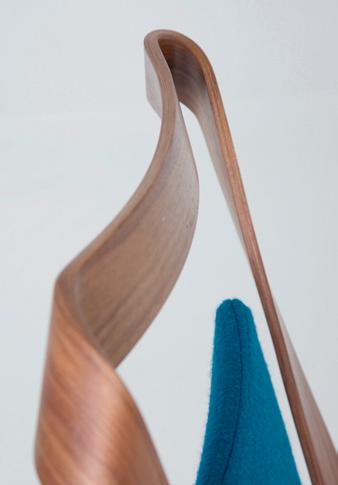
“This is my work,” says Jon of Midland Atelier, an enclave of designers and creative minds housed in the middle of the historic Midland railway Workshops. The Atelier, part of a swagger of brooding, magnificently old industrial buildings covering 17 hectares, is the brainchild of non-profit FOr M and the Midland redevelopment Authority. The railway Workshops have a long history in industrial design and specialised trades, and for many years it was also the heart of the Perth community. helping to bring this heritage of making back to the site, Jon is a permanent artist-in-residence at the Atelier and part of a cluster of around 14 object, furniture and jewellery designers – a list which continues to grow. “I’m here six days a week, ten and eleven hours a day. Working with the other designers and makers is inspirational; to have that kind of cross-link on a daily basis is nourishing.” he adds, “The Atelier is still in the beginning, it’s still coming online but I think it’s the most visionary and ambitious project.”

100 habitusliving.com habitus 07
on location jon goulder — WA, australia
The Atelier, part of a swagger of brooding, magnificently old industrial buildings...
07 08 07 Jon outside the Foundry at Midland Atelier. 08 Oh la la chair detail.
Naturally CaesarSton e



Im agi ne the Diff er ence
®
The latest natural, organic designs. Exclusive & unique to CaesarSton e Benchtops, splashbacks & more.
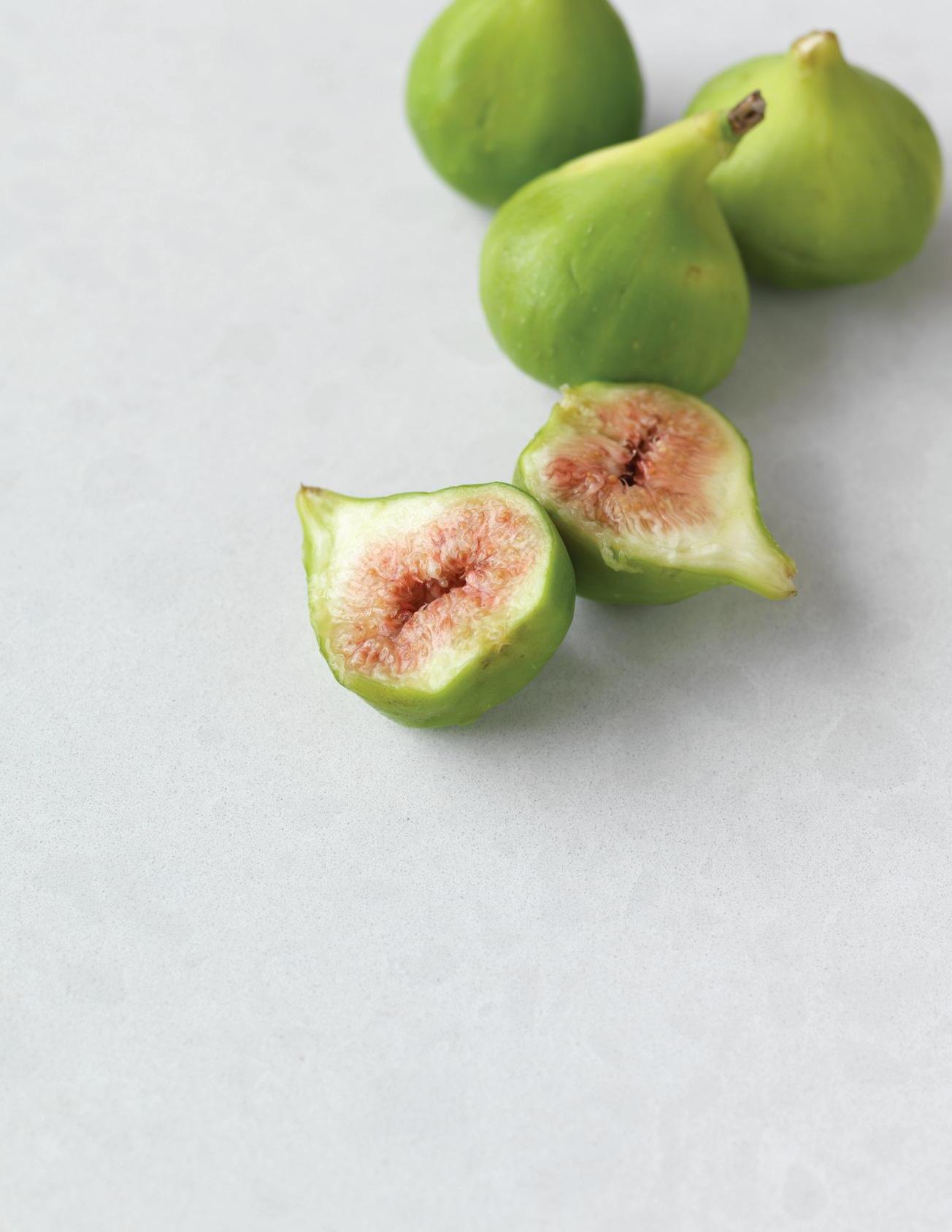
Organic White
Buttermilk
Whisper
For our latest brochure phone 1300 119 119 www.caesarstone.com.au
on location
jon goulder — WA, australia
The mind
For Jon, design is not always a physical location, but it is a place he constantly inhabits. “I’m thinking of design all the time. It’s my absolute everything – it was even before I knew what ‘design’ was.” he remembers flicking through interiors magazines on his mother’s coffee table. “I was ten years old and grew up fishing and shooting. But I was also reading Belle, and Town and Country.” Jon cites architect Glenn Murcutt and former fashion duo Morrissey Edmiston as other early design influences. “I was 17 and doing my apprenticeship when the first Morrissey Edmiston store opened in the strand Arcade. They were at the beginning of their career and I loved that they were edgy and unique. I have always loved quality – I’m a true believer you should save money for something you will have for the rest of your life.”
Jon’s exhibition opened in February at FORM Gallery and will tour to Melbourne’s State of Design festival later in the year
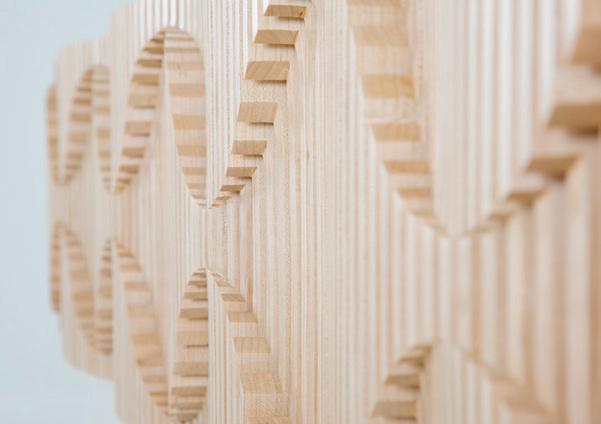
Jon Goulder, jongoulder.com


www.eighthotels.com


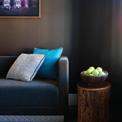


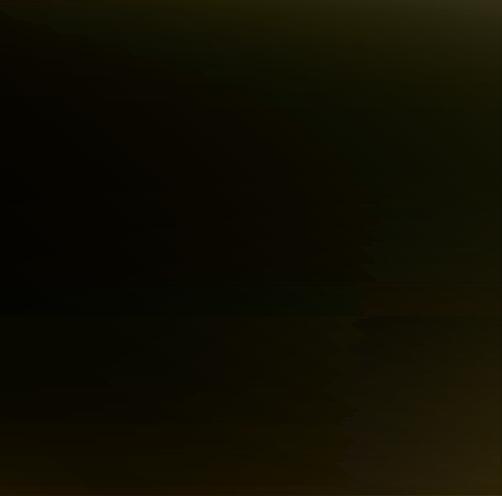

102
Untitled-9 1 8/12/09 3:55:17 PM habitusliving.com habitus 07
SYDNEY | MELBOURNE | BRISBANE | CANBERRA | PARIS
...it
evokes an aesthetic similar to that inherent in his work: calm, clean, unfussy yet vivid.
09
09
Glissando rock Maple credenza (detail).
>> MOROSO SPA

CAVALICCO/UDINE/ITALY
T +39 0432 577111
INFO@MOROSO.IT
WWW.MOROSO.IT
MOROSO AVAILABLE
EXCLUSIVELY AT
HUB FURNITURE
LIGHTING LIVING
>> MELBOURNE 63
EXHIBITION ST MELBOURNE
T +61 3 9652 1222
>> SYDNEY 66–72
RESERVOIR ST SURRY HILLS
T +61 2 9217 0700
WWW.HUBFURNITURE.COM.AU
>> LOWLAND, SOFA
>> SMOCK, ARMCHAIR
>> SARDINIAN RUG, CARPET
DESIGN PATRICIA URQUIOLA
>> UKIYO, SMALL TABLE
DESIGN TOMITA KAZUHIKO
PHOTO ALESSANDRO PADERNI
AD DESIGNWORK
slow dissolve
rembel garden — NSW, australia

104
habitus 07
Photography Paul Lovelace Text Andrew Pfeiffer habitusliving.com
Sustainable harmony
In the winter of 1978 Andrew Pfeiffer was contacted by Gunther and Gitta Rembel and asked to give landscape design advice on the ways in which their five acres of virgin bushland might be treated. He joined them on a 20-year journey of creating a series of gardens.
One of my most abiding memories was the way in which both Gunther and Gitta – both of whom had come to Australia from East Germany –spoke in hushed and awed tones about the beauty of their newly acquired parcel of bushland as if they were in a cathedral. Their apparent love of the landscape was very moving to see. We agreed that the main priority in designing the garden would be the greatest possible respect towards the indigenous forest.
However, when Gunther and Gitta then told me that they also wanted lawns, a swimming pool, a vegetable garden, a citrus plantation, a wisteria arbour and a tennis court I was aghast at the apparent contradiction in the instructions I was being given. As a professional landscape designer, I have always found lawns, for example, to be a deeply disturbing and worrisome element in most Australian bushland gardens. How does one ‘marry’ – in and around Sydney – a perfect green sward to shelves of sloping Hawkesbury sandstone and its comparative chaos of leaf litter? This insurmountable divide – both environmental and cultural – in my view condemns to failure any garden in which it is attempted.
As a solution, I suggested to the Rembels that they raise the garden by means of retaining
walls so that they sat a metre or two above the bushland, and were seen as part of the house. This approach would allow for a purely artificial environment in which the proposed garden could happily co-exist adjacent to the untrammelled bushland surrounds in a series of enfilade garden enclosures.
By raising the garden compartments above the bushland, I was also giving myself a certain licence. Had we decided not to divorce the garden from the bush, my duty as a responsible landscape designer would be only to use plants that were ecologically compatible with the bushland plants. This might include, for example, plants of the Mediterranean maquis such as lavender, rock roses and rosemary; but would preclude such things as roses, palms and hydrangeas.
To my surprise the Rembels accepted what I said without demur. In my experience, most Australian clients are timid about attempting the as-yet untried, preferring a safely respectable suburban garden of camellias or roses instead. Several years went by during which I never heard a word from the Rembels. Then suddenly one Spring there was a telephone call. “We’ve completed everything you suggested except for the vegetable garden and tennis court. Please
now design us a formal, enclosed vegetable garden,” they said. Not only had the work on the garden been done encompassing my ideas both in scale and in spirit, but Gunther and his brother had done most of the construction themselves, often working under arc lights until late during weekday nights.
By 1995 both the Rembels’ sons had grown up and yet still the tennis court hadn’t been constructed. “We’re too busy working in the garden to play tennis,” said the Rembels by way of explanation. I then received a summons to come over and dream up “something original”. I told Gunther and Gitta that I had always wished to put together a collection of cactus and succulent plants similar to the Huntington Botanic Gardens in Pasadena, California, but with the difference of making such a garden formal.
The Rembels readily embraced this idea and I designed a parterre with water running through its centre and with lots of acute angles to the paths and garden beds. This provided the sense of an oasis at the very heart of the garden and underlined the preciousness of water in a desert. The sharp – virtually uncomfortable – angles re-created something of the spirit of being amongst sharp boulders on the arid,
105

The proposed garden could happily co-exist adjacent to the untrammelled bushland surrounds in a series of enfilade garden enclosures.
 –
ANdREW PfEIffER
–
ANdREW PfEIffER

www.parisi.com.au
by
Jazz.
Designed By: Meneghello Paolelli Associates
slow dissolve
rembel garden — NSW, australia
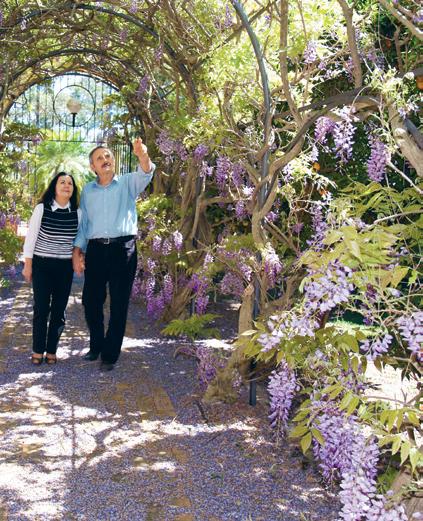
cacti-peppered hillsides of Baja California in Mexico. I was extremely flattered when don Burke featured it on numerous occasions on his television program, Burke’s Backyard , as he instinctively recognised what the Rembels and I were trying to achieve.
It is interesting to now look at the specific qualities of drought tolerance in this particular garden, although I think at the time it was more a response to a claim by a Sydney garden correspondent that cacti and succulents were “unfashionable”. Since I consider the very notion that any living thing – plant or animal – could be subject to fashion to be an example of exquisite vulgarity, I felt compelled to rise to the challenge.

Whilst the formal cactus and succulent garden was under development, I suggested to the Rembels – half tongue-in-cheek – that it would be an interesting challenge for us to design and create another parterre in the garden, this time using Australian native plants. “Not just native plants,” I added, “but plants endemic to this particular garden”.
Once again the Rembels were brave enough to undertake this new project, which got underway shortly after the millennium. Here,
109
habitus 07
01 different gardens are linked by pathways and water features.
02 The maze-like native garden with the Rembel house.
03 A garden of cacti with the order of a Mediterranean garden.
03 04
04 Gunther and Gitta Rembel in the wisteria arbour leading to the swimming pool.
slow dissolve
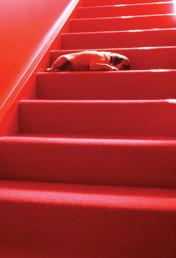
rembel garden — NSW, australia
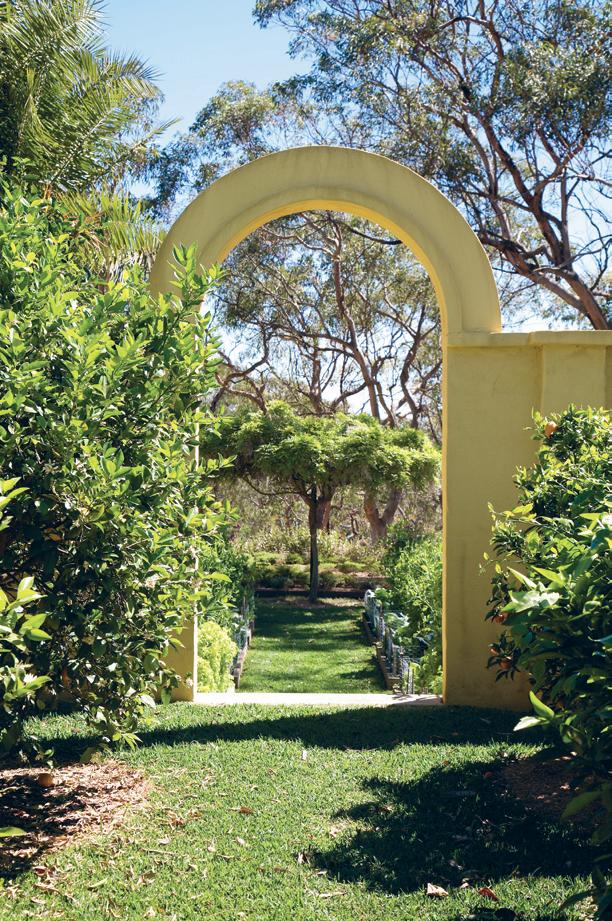
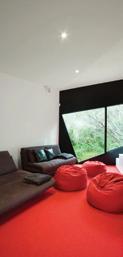
what was of greatest interest to me was to find that elusive sense of harmony; the harmony which comes about by letting nature dictate the sorts of plants that should grow in a particular place.
This intuitive approach also directed the ground plan of the proposed parterre. After experimenting with ideas based on Aboriginal dot paintings, I simply scrawled on a scrap of paper the pattern I thought the site itself suggested, with the line of the Blue Mountains in the background as its horizon.
We decided that the trees to be used in the garden would be Angophora costata and Banksia serrata , and the main ground cover plant the dwarf Baeckea virgata , amongst which we would plant large groups of flannel flowers. However, the flannel flowers died because the soil was too rich for them and in the end, they were replaced by Zieria, ‘Grey Ghost’.
I find this parterre to be a most satisfying garden because of the harmony between the man-made on the one hand, and the natural on the other. And because this garden not only looks as if it ‘belongs’ in its natural surroundings, but actually does, it follows that the garden is – apart from the need to occasionally weed it –self sustainable.
Besides this sustainability, which is a huge advantage these days, for me the greater attraction remains the ineffable sense of harmony, which is so strong as to have a spiritual dimension to it.
Andrew Pfeiffer, andrewpfeiffer.net
05
www.gibbongroup.com.au
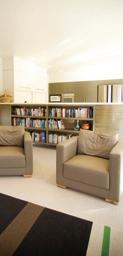
110
T: 07 3881 1777 | sales@gibbongroup.com.au Untitled-15 1 14/12/09 5:27:06 PM
habitus 07
habitusliving.com
05
An archway frames the path from the citrus orchard to the native garden.

LINEAR www.smegappliances.com.au
houses made for work & play which celebrate arT a

desIGN
habitus 07 3. houses
N d
113
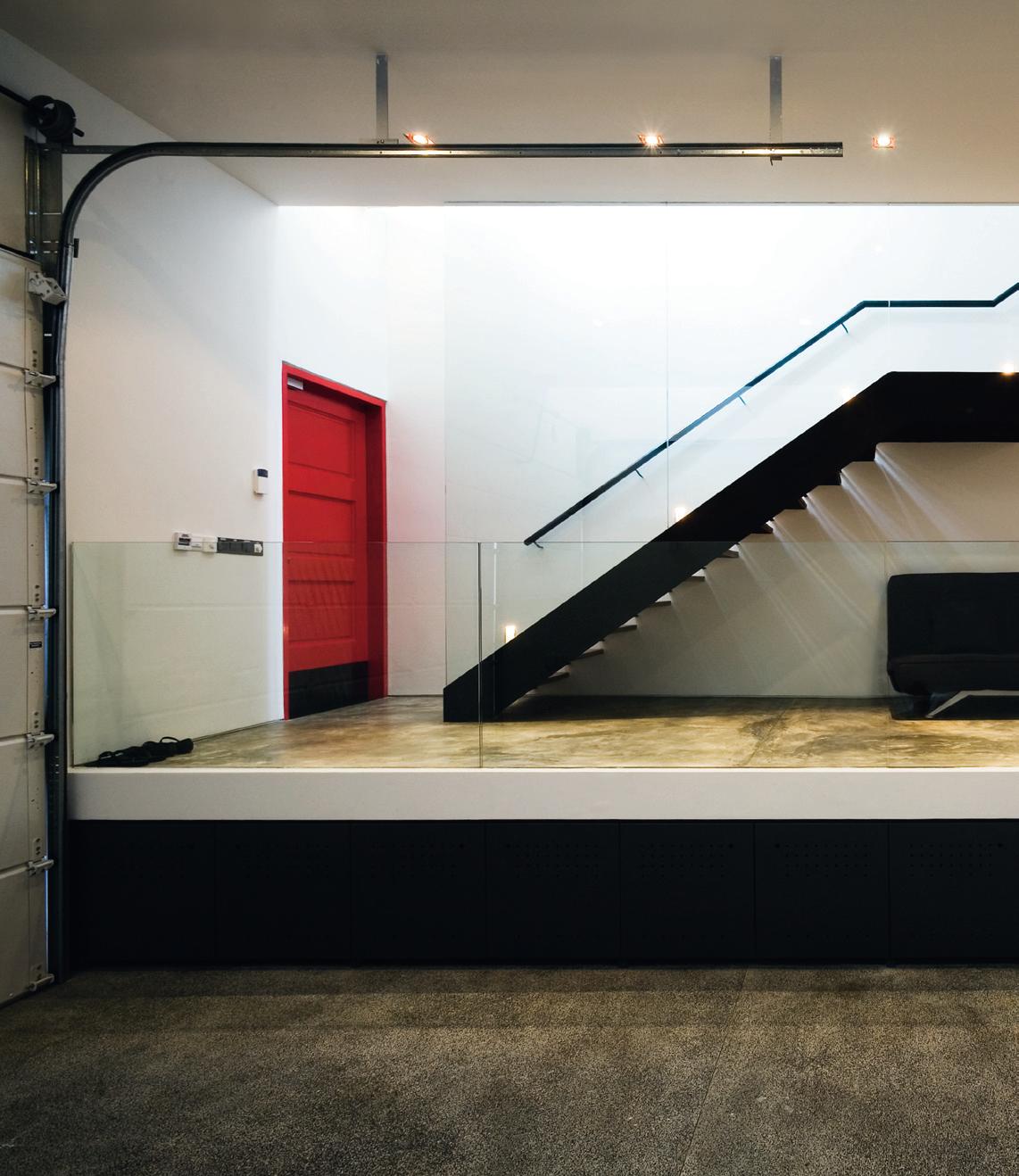
114 scenario habitus 07 habitusliving.com
Photography Derek Swalwell
Text Lynn Tan
cambridge inter-terrace — singapore K2LD Architects
BOX Beyond the
Presented with a long and narrow plot, K2LD Architects in Singapore created a box within a box; a terrace house, says Lynn Tan, with a touch of Alice in Wonderland.
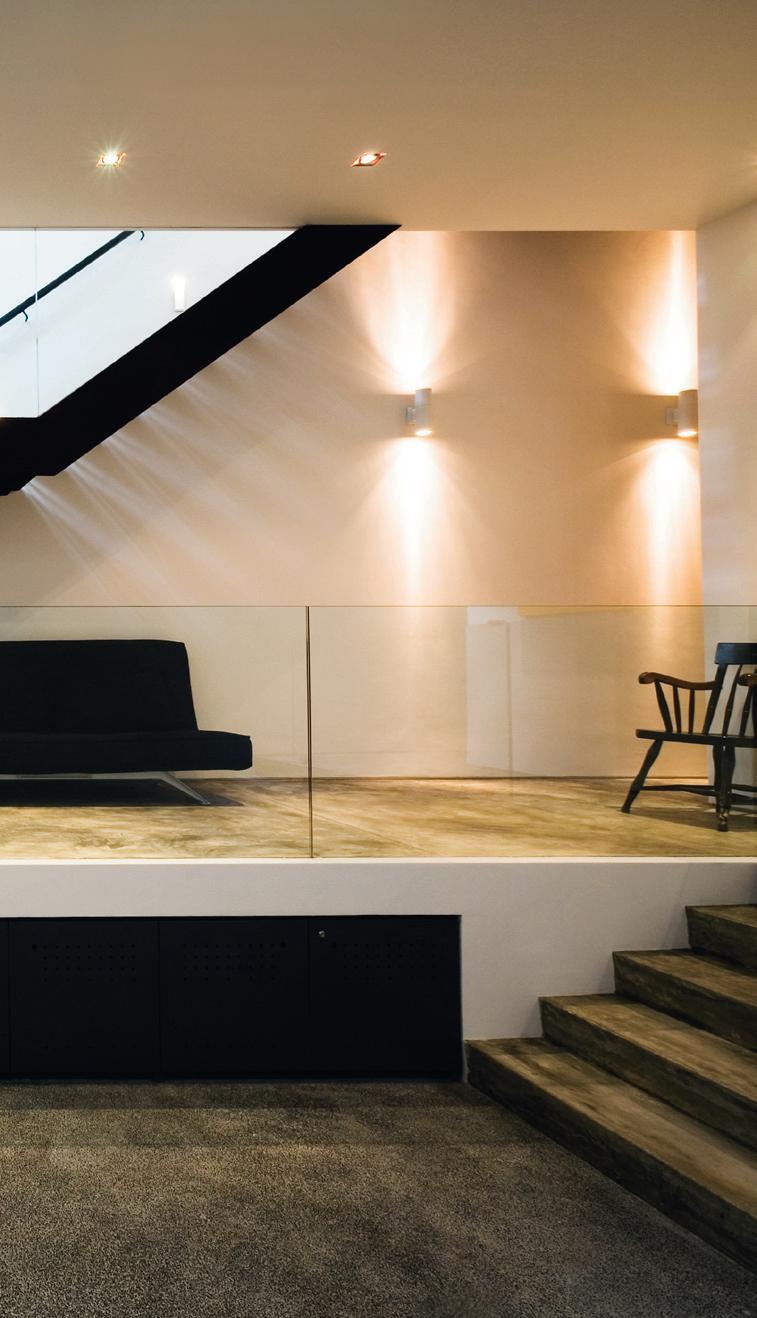
The Cambridge Road neighbourhood located along the city fringe feels as if it belongs in another era – an old red brick Baptist church, 40 year-old terrace houses, and a quaintness that has escaped the ravages of time and redevelopment. In fact, with surrounding street names such as Bristol, Norfolk and Hampshire, you might well be in another part of the world altogether. When you least expect it, you stumble upon an intermediate terrace house that resembles a Brownstone, and you wonder: Am I in New York City?
Purists may frown upon such architectural importation. But this is different from trying to replicate a temperate glass house in the tropics, or Corinthian column-fronted and pediment-capped houses. There is a legitimate reason for the Brownstone façade. “Having
115
cambridge inter-terrace — singapore
K2LD Architects
01
The garage within the house is a departure from the local norm, but makes perfect practical sense.
02
Unlike the traditional Brownstones of New York, this is a modern version, both inside and out.

03
The dining room and adjacent living room, are elevated to the second storey ‘heart’ of the house and serve as focal spaces.
04
As publishers of the Miele Guide, featuring Asia’s top restaurants, it is not surprising that Aun and Su-Lyn indulge their epicurean pursuits with a spacious, organised and wellequipped kitchen.
116 habitus 07 habitusliving.com
scenario
02
lived in New York for many years, we wanted to have something familiar that we could relate to. When we saw this inter-terrace, we immediately associated it with iconic row houses back in New York,” explains homeowner, Aun Koh, who lives in the house with his wife, Su-Lyn. But they wanted to translate the New York edition into a more contemporary version that reflects its time and place.
As directors of a boutique consultancy that handles luxury and premium brand clientèle, Aun and Su-Lyn appreciate the exclusivity that boutique firms can offer, which was why they approached K2LD Architects to transform their terrace house into something one-of-akind. “It is quite unlike the majority of our commissions, which are mostly detached houses,” admits K2LD principal, Ko Shiou Hee, “but we decided to take the opportunity and do something different.”
And different they did; not just in terms of aesthetics, but Shiou Hee and his team of architects may well have created a new typology altogether. The 6 x 17 metre footprint is long and narrow, similar to the shophouse typology indigenous to South-East Asia, with

the usual challenges of limited frontage and lack of natural daylight.
A bold red brick façade more than compensates for its narrow width, making its presence felt along the streetscape. In traditional shophouses, intermediate courtyards and air-wells are employed to overcome the problem of limited daylight. Here, K2LD pushed the circulation to one side and introduced two strips of skylights flanking the party walls. By doing so, the interior becomes not just light-filled, but also free of the constraint of the rectangular box defined by the party walls, a concept Shiou Hee calls a “box within a box”, which allows him to then look outside the box.
Despite off-setting the inner box one metre from the perimeter, the interior feels spacious beyond its four-metre width. Shiou Hee has accommodated all ofAun and Su-Lyn’s requirements without resorting to a ‘wedding cake’ arrangement of stacking spaces one above the other, proof that it is not how much space you have, but what you make of it. By cleverly tucking the home-office, pantry, storeroom, dog bath and even a walk-in wine chiller to the sides
04
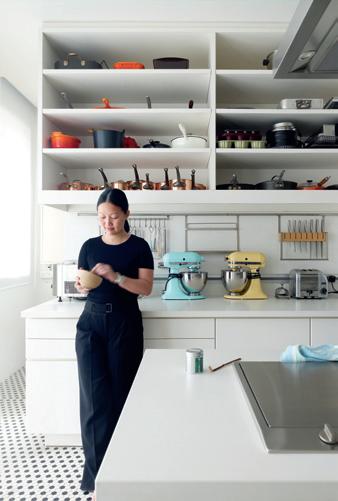
117
03
cambridge inter-terrace — singapore K2LD Architects
on the second and third storeys, the two onemetre-wide slivers of space are well-utilised.

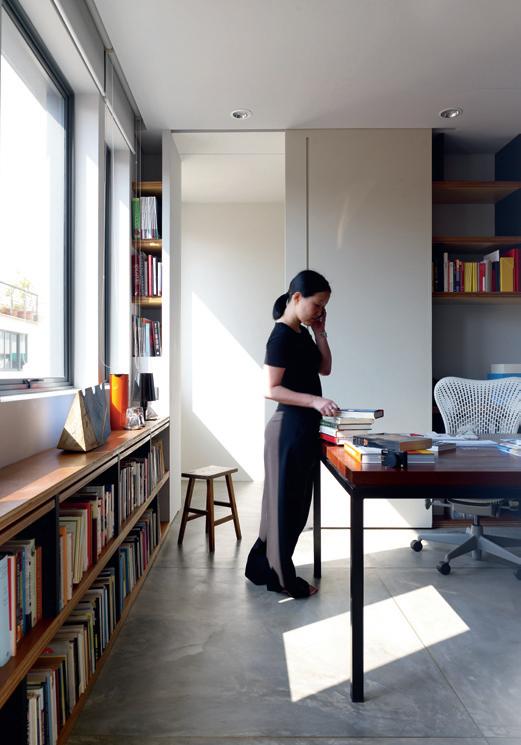
“We perceived the interior as a threedimensional jigsaw puzzle with interlocking spatial volumes and light pockets,” explains Shiou Hee. The result is an interesting play of light and space, and a circulation that weaves its way in and out of the ‘box’. Spatial progressions are also somewhat unusual in the local context. Instead of the typical outdoor car porch, Aun wanted a garage within the house; and instead of arriving into a living room, you find yourself greeted by a welcoming staircase that runs the entire three storeys, bathed in abundant natural light from the skylight above. Another atypical move – elevating the living room, dining room and kitchen to the second storey – allows for a different perspective and positions them right at the heart of the ‘floating box’.
Like jack-in-the-boxes, glass openings surprise visitors in the most unexpected places. One-way mirror-glass in the second-storey powder room overlooks the garage, full-height glass in the third-storey bathroom looks into the living room below, and a glass slit opening above low shelves in the home-office on the third storey offers a peek at who is coming up the staircase. Other fun elements include bright red main entrance and master bedroom doors and a mezzanine-like catwalk over the doublevolume living room that provides access to the topmost shelves of the towering book wall. Even the furniture is an eclectic mix, collected from the homeowners’ holidays abroad, every piece with its own story to tell. Nothing is predictable, but the elements come together to create a look that seems both casually thrown together, and deliberately orchestrated.
Walk into the master bedroom and you are transported into a totally different world. In contrast to the bright and airy house, it is decked in black, from the floor to the wall and ceiling. “It is very Coco Chanel. Su-Lyn needed some convincing at first but now we both love it. It is our dark sanctuary,” muses Aun.
It would appear that the seemingly primand-proper Brownstone exterior and the boxy massing of the house is just a teaser that belies the whimsical, Alice-in-Wonderland touches beneath. K2LD was given a box, but returned the home-owners much more.
118 scenario habitus 07 habitusliving.com
Even the furniture is an eclectic mix, collected from the homeowners’ holidays abroad.
05
an ingenious orchestration of space, the small plot even accommodates a home office for six. 06 Elevation. 07 Glass and mirrors offer surprise glimpses into various rooms and spaces. 08
the façade, the living room has a contemporary setting in contrast with the Brownstone’s traditional roots. 05 06 6 5 1 2 7 3 4 1 Car Porch 2 Guest Room 3 Kitchen Store 4 Powder Room 5 Bedroom 6 Terrace 7 Service
–
In
Behind
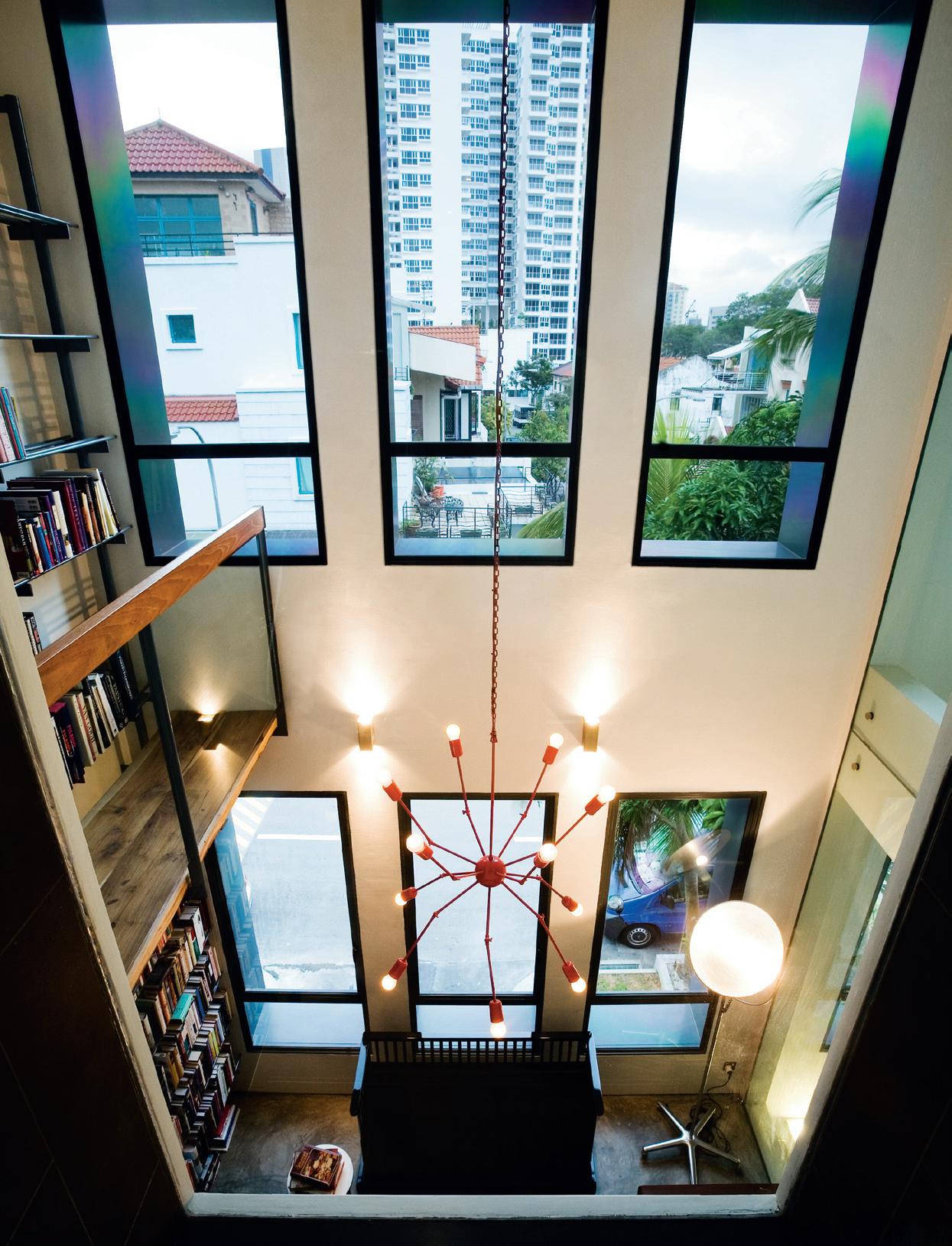

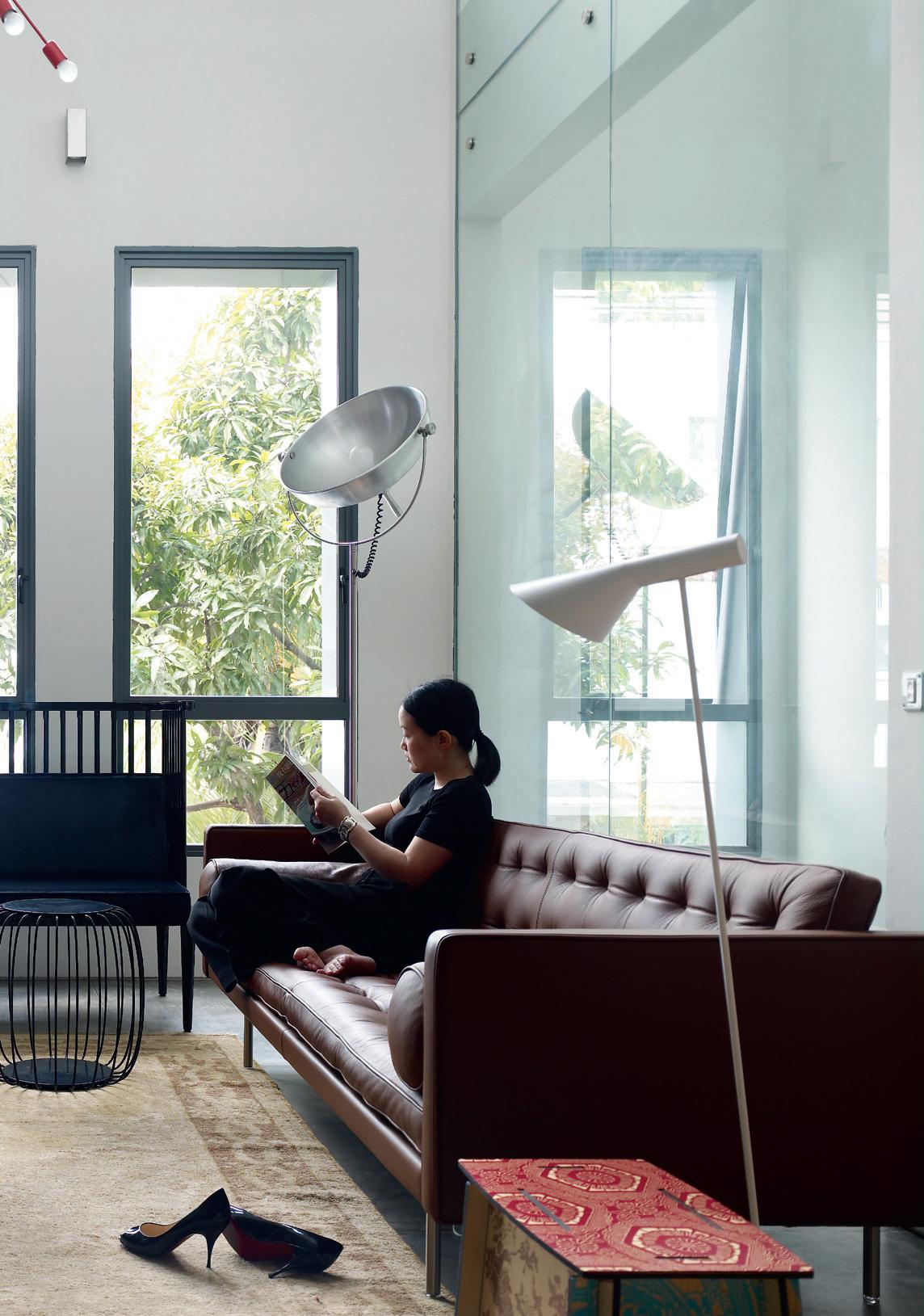
“We perceived the interior as a three-dimensional jigsaw puzzle, with interlocking spacial volumes and light pockets.”
–SHIOU HEE
cambridge inter-terrace — singapore
K2LD Architects
Architect
K2LD Architects
Project t e A m
8 5 9 3 2
7 6 1
4
Ground 1 Front Yard 2 Entrance 3 Car Porch 4 Maid’s Room 5 Maid’s WC 6 Backyard 7 Guest Room 8 Guest Bath 9 H-H Shelter 10 Living 11 Dining 12 Powder Room 13 Kitchen 14 Utility 15 Bedroom 16 Bathroom 17 Family Room 18 Office/Library
14 13 12 11 10
09 09 10
floor plan (left), first floor plan (centre), third floor plan (right). 18 16 17 16 15 15
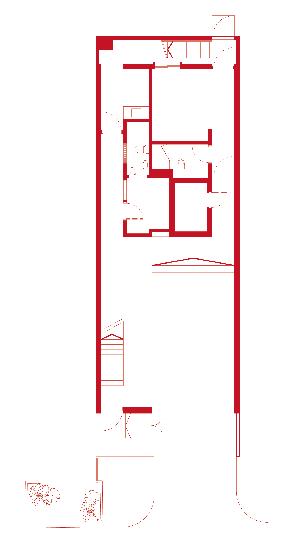
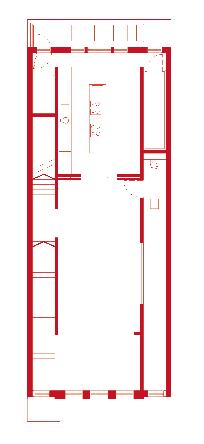

Ko Shiou Hee, Gan Ren Ying, Maria Ines de Vilhena, Toh Juay Hai
c ivi L & structur AL e ngineer E123 Consultants mech A nic AL & eL ectric AL
LAC Engineers & Associates
QuA ntity surveyor
CST Consultants mA in c ontr Actor Bestec Construction L A n D Are A
143.6m 2 totAL FL oor Are A 341.55m 2 t ime to comPL ete
13 months
K2LD Architects (65) 6738 7277 K2LD.com
Furniture
Living black loveseat and Pumpkin side table by Autoban, autoban212.com, Eames lounge and ottoman in white leather by Vitra, vitra.com, Magister sofa in caramel leather and white Kidd tables by Flexform, flexform. it, and red cupboard and beige ottoman by Cappellini, cappellini. it. Dining Pebble dining table by Autoban, dining chairs by Carmina, and Moka glass cupboards by Flexform.
L ighting
Chandeliers Double Octopus in Living Area by Autoban, and 2097 in Powder Room by Flos, flos.com. Floor lamps tall industrial standing lamp in Living Area from Lambert, White AJ floor lamp from Louis Poulsen, louispoulsen.com. Lamps Black Caravaggio lamps in Dining from Lightyears, lightyearsgroup. co.uk. Wall lights in Master and Guest Bedrooms are Artemide Tolomeo Micro Parete from Million Lighting, millionlighting.com.sg. Other lighting throughout from LightPhase, (65) 6454 8832.
Finishes
Floor in Master and Guest Bedrooms is parquet floor by Wood Doctor, wooddoctor.com.sg, in Garage is pebble-washed floor, and other floors throughout are cement screed. Walls in Garage are plastered. Joinery steel book shelves in Living Area custom-designed by K2LD, aluminium storage in Garage and built-in joinery in Kitchen designed by K2LD, made by Stema Furniture & Renovation (65) 6382 3028, wardrobe and wall panels in Master Bedroom are customdesigned by K2LD and made by Ling Ming Sing Furniture (65) 9723 4782. Countertop in Kitchen is CaesarStone quartz by Builders Shop, buildersshop. com.sg. Tiles and Stone from StoneTec Materials, (65) 6365 7800. Brick Tiles on Roof Terrace from Lian Wang Trading, bricktiles.com. Garage door is Raynor Centura from Gliderol Doors, gliderol.com.au. Power tracks by Eubiq from ASL Power, aslpower.com.sg.
habitusliving.com

122 scenario habitus 07
Fi X e D & Fitte D Kitchen appliances by Miele, miele.com. 10 The dark bedroom is a haven in the otherwise lightfilled house.

New Melbourne Showroom Now Open 618 Chrurch Street Richmond 3121 Tel +613 9429 6696 Perth Showroom +618 9286 1433 Sydney Showroom +612 9516 0968 Luka 4 seater designed & manufactured in Australia | www.arthurg.com.au
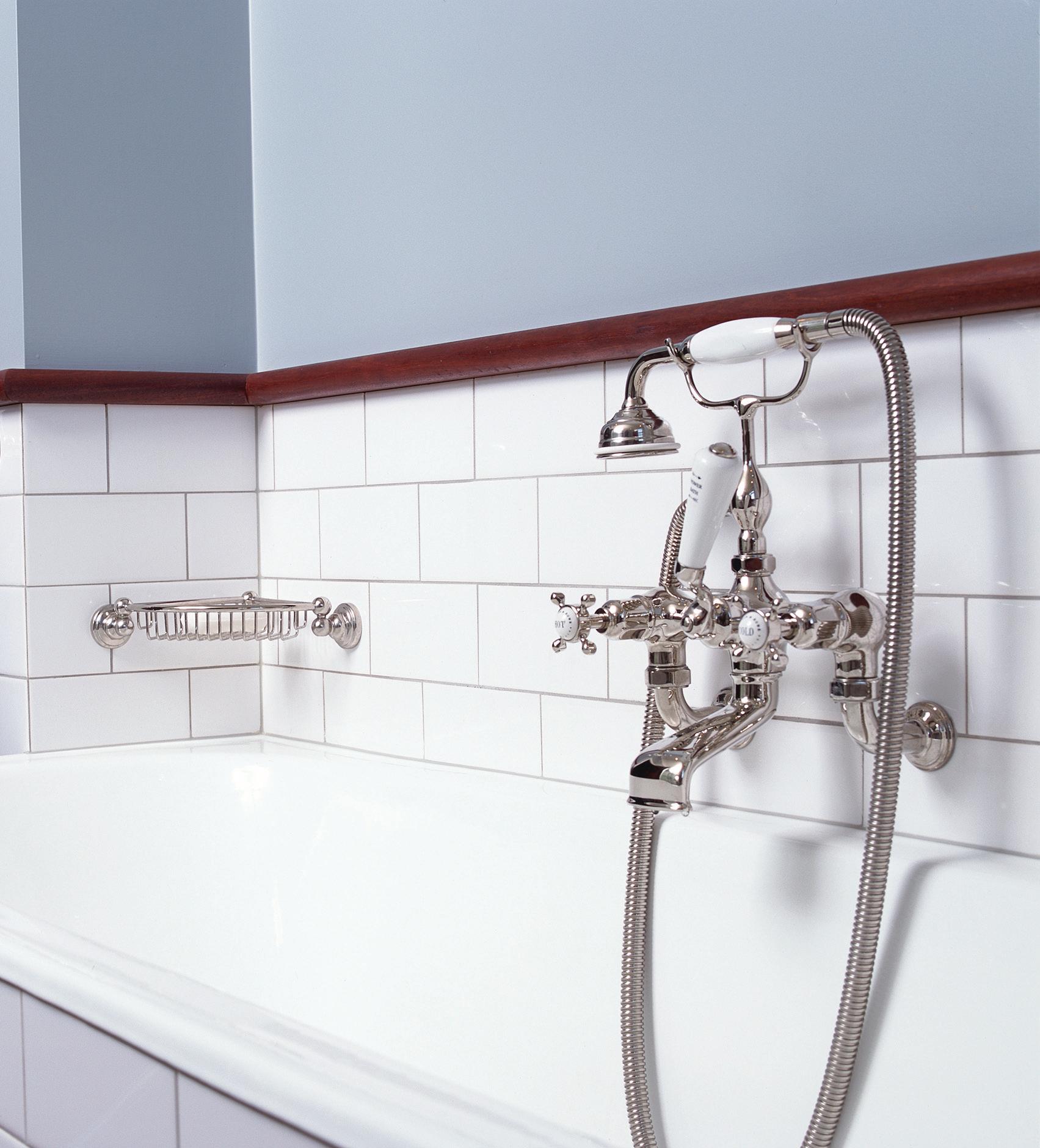
A COLLECTOR’S TALE
When Michael Bechara found a shared aesthetic in his client from Sydney’s inner west, the architectcum-curator envisaged a collection of iconic pieces. Jane Burton Taylor explores the purpose-built surrounds that graciously host these showstoppers.
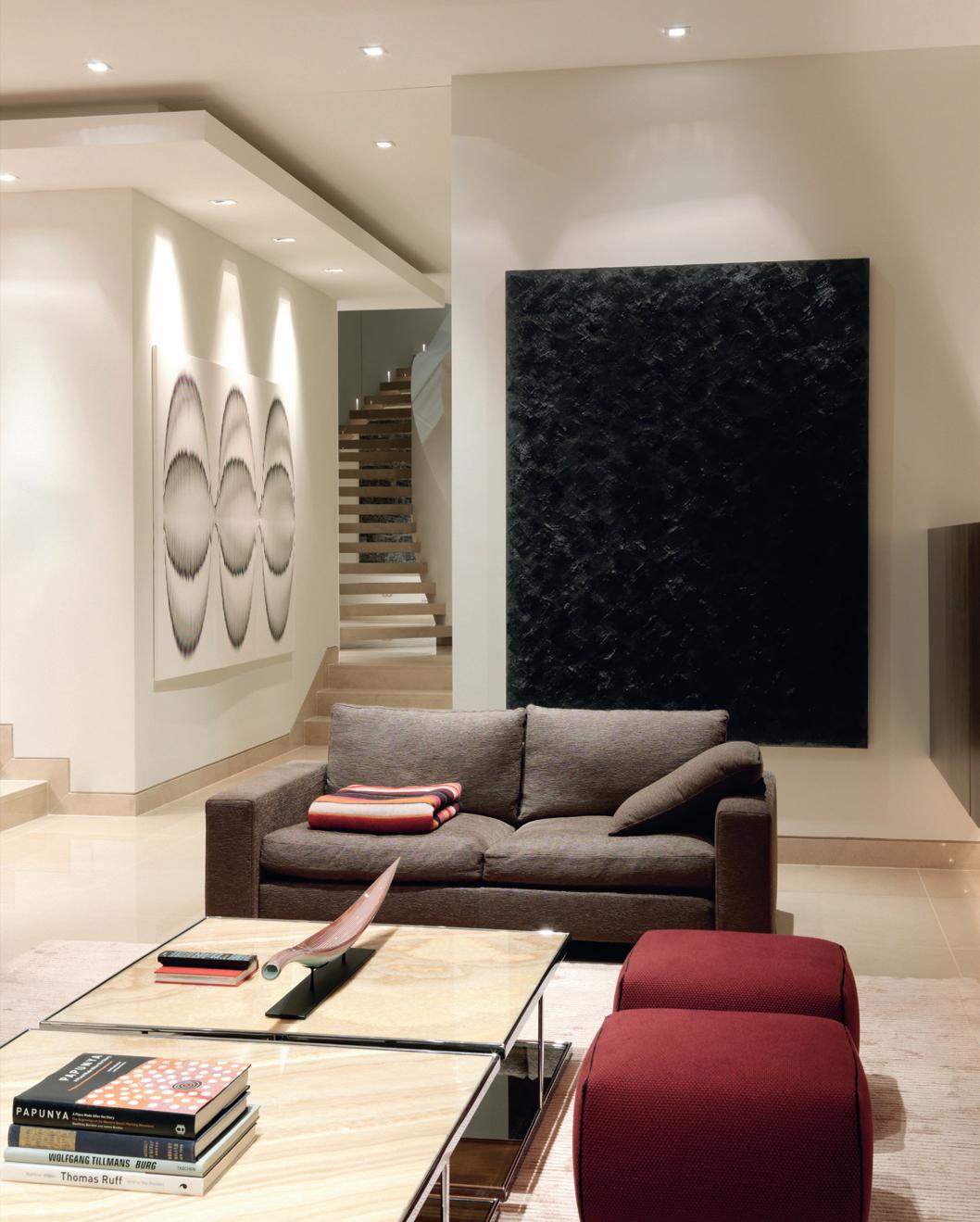
125 habitus 07 scenario
Text
MICHAEL BECHARA DESIGN sydney house — NSW, australia
Jane Burton Taylor
Photography Justin Alexander
sydney house — NSW, australia

126 scenario habitus 07
habitusliving.com 02
MICHAEL BECHARA DESIGN
When commissioned to design a contemporary interior for a couple and their young family in Sydney’s inner west, Michael Bechara had a significant incentive: a like-minded client with a kindred aesthetic.
From day one, Bechara worked closely with the couple, primarily the lady of the house. He had a vision to develop a collection of iconic modernist and contemporary pieces that would be beautiful but useable, so the family could comfortably live amongst them.
“She was the decision maker, so I liaised with her throughout,” Bechara recalls. “She was the dream client. Her brief was for a contemporary but still very warm home. She liked colour, but restrained use of colour... She didn’t want pretty, but a good mix of feminine and masculine elements.” Bechara went to work with the architectural plans for the home in hand. Unusually, he both project manages and designs the interiors, a combination that allows him to troubleshoot any problems early on.
His client also made a request that he finesse the plans a little. Essentially he liked the existing design, but he did do minor tweaking. The original plan was for a family home over three levels – a central living level complete with a cinema room, study and informal and formal dining and living areas; a “club-like” basement domain; and the bedrooms upstairs. Bechara’s main change was to the staircase in the entry foyer. “It was a closed-in, straight staircase and I opened up the tread and curved the stairs for a sculptural effect,” he says.
Once the finessing of plans was completed, Bechara drew up a furniture layout and he and his client went shopping. “We looked at new as well as vintage furniture. I showed her all the opportunities. She picked out the pieces she liked... from there I worked on my own [to decide] what pieces would work together with other pieces as a collection.”
Another early choice, which influenced subsequent decisions about interior finishes, was for a hard surface flooring in the main living level. “She loves limestone,” Bechara says of his client. “So I went with that idea and we used large slabs of limestone and that laid the groundwork for the rest of the house.”
Because the floor was to be stone, Bechara opted to create warmth and help acoustics by using timber and leather panelling in the walls; just under half the walls are clad in Oak veneer. Acoustics were particularly critical in the cinema room at the front of the house, which has a large screen, but doubles as a second living room when both parents and children have friends over.
01
An off-white palette in the living room highlighted with red.
02
The sculptural staircase adds interest and provides privacy.

127
sydney house — NSW, australia
You walk in via a massive sliding Oak door and an inlaid carpet adds cosiness. The screen is framed by a wall of timber slats which conceal speakers, and all the other walls are clad in custom-dyed red leather panels. “I chose leather because I wanted great acoustics and to give a very sharp, architectural look and also longevity,” Bechara says. “The room is very intimate once you close it off.”
In contrast to this cocoon-like feel, the dining room across the hall is open. It has a rear wall of Oak panelling and custom upholstered Knoll Saarinen dining chairs, a glamorous chandelier by New York’s David Weeks and a 1970s vintage art lamp bought from Shapiro auctioneers. Bechara has used the armless version of the same Knoll Saarinen chairs in the breakfast room, which is linked to the dining room by the kitchen.
The adjoining living room is a delicious space, flooded with light and with four metre high ceilings. Here Bechara has again used the repetition of luxurious leather panels to visually and acoustically soften the space. The whole
03
The bathroom with smoke grey mirrors is accesses via a walk-in-robe with a Featherstone chaise.
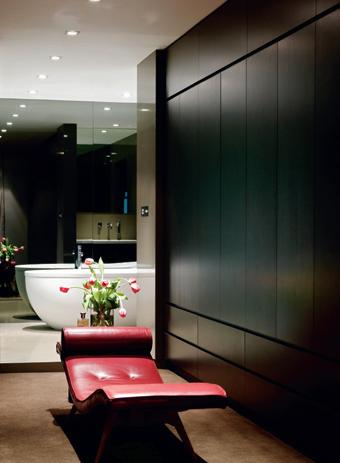
04
Ground and first floor plans.


05
Custom-dyed leather panels and plush carpeting assist acoustics in the home cinema.
128 scenario habitus 07 habitusliving.com
MICHAEL BECHARA DESIGN
03 04 1 Entry 2 Study 3 Cinema 4 Family Room 5 Terrace 6 Dining 7 Kitchen 8 Guest 9 Void 10 Balcony 11 Bedroom 12 Linen 13 Ensuite 14 Wardrobe 15 Dressing 16 Retreat 17 Master Bed 18 Gallery 19 Bath 1 8 6 7 6 5 4 2 3 9 10 11 19 11 17 16 14 15 14 13 18 12 11 10
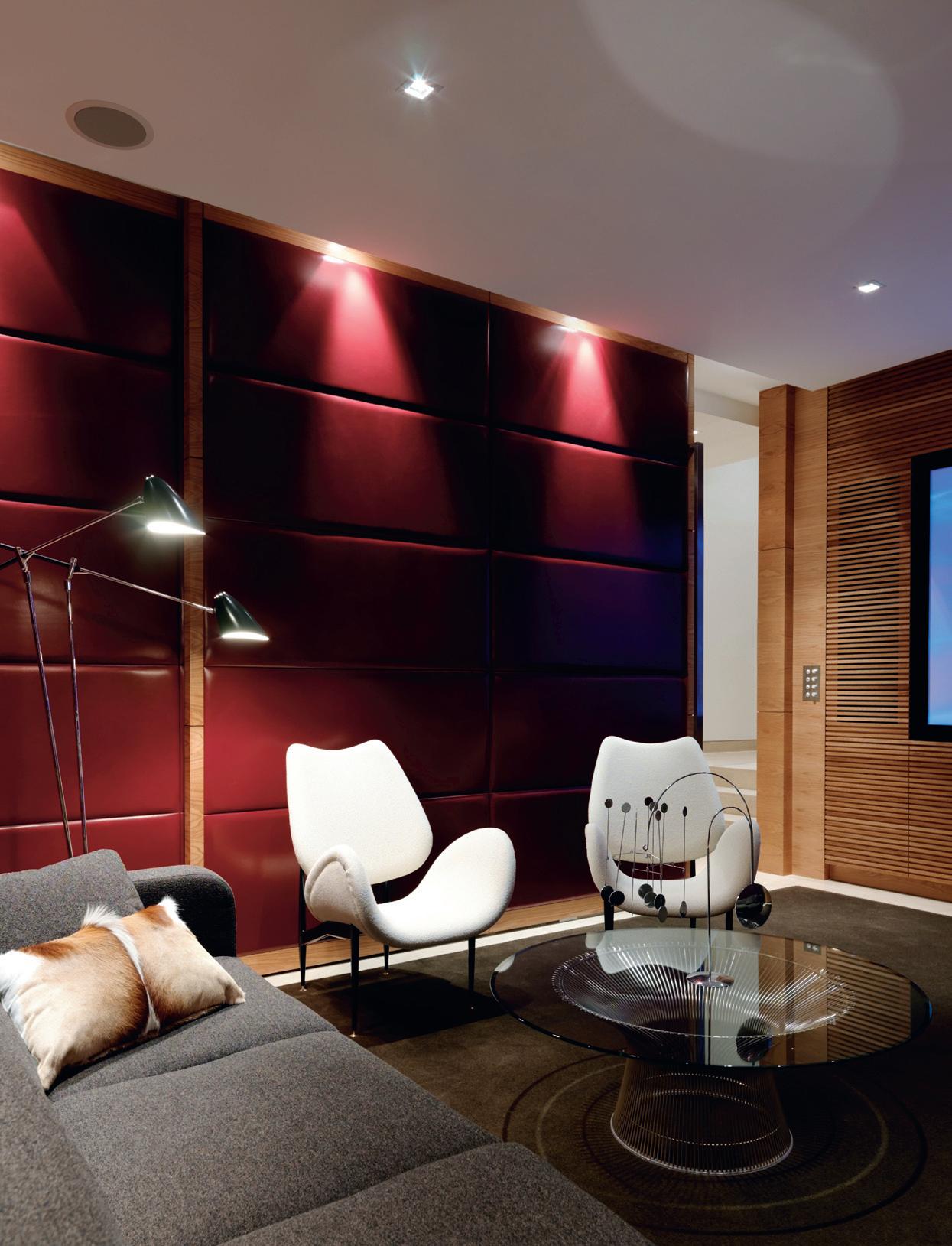
sydney house — NSW, australia
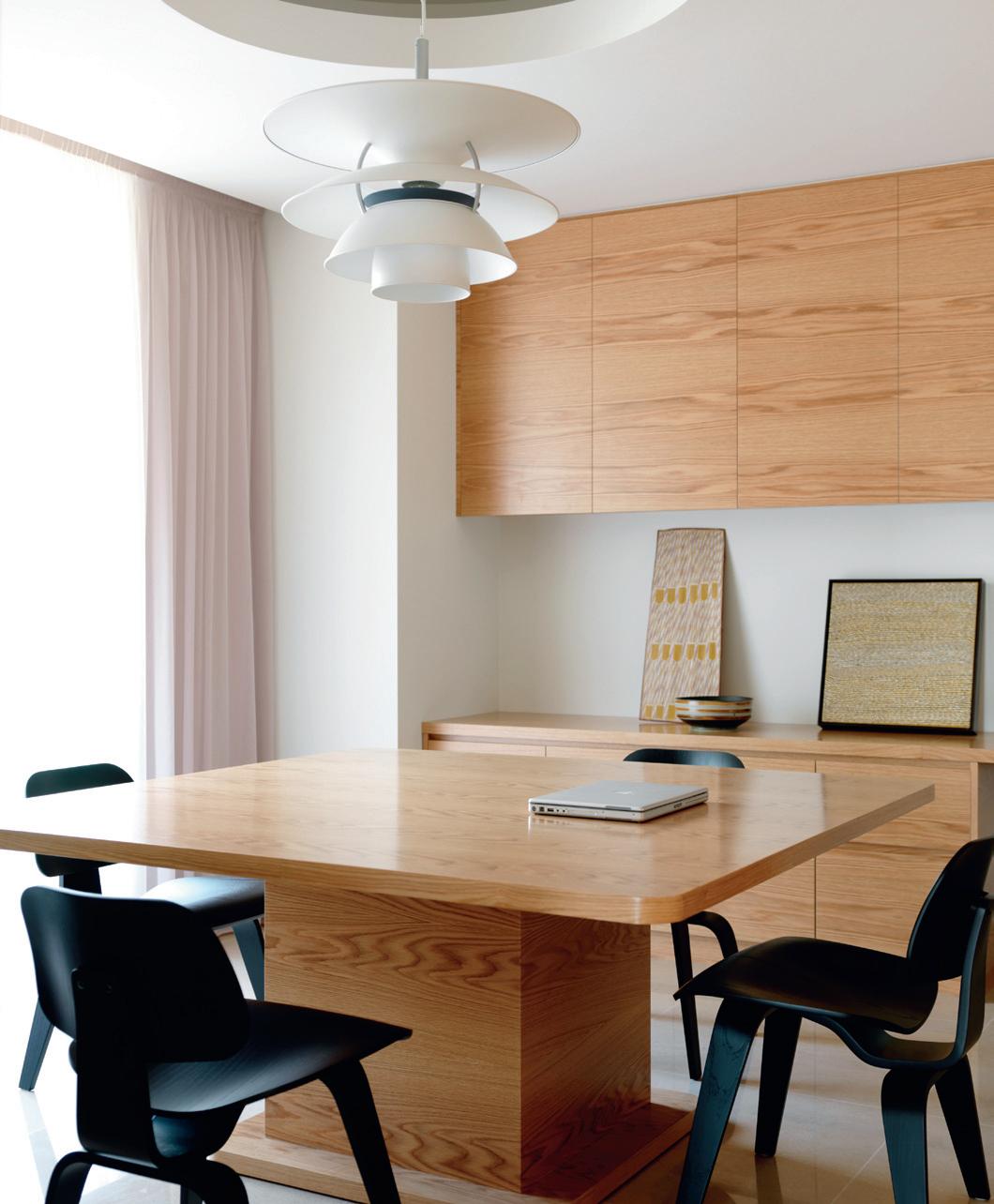
130 habitusliving.com
habitus 07
scenario
06
MICHAEL BECHARA DESIGN
side wall is made up of the ivory leather panels, with a contrasting strip of black true grain onyx cabinetry to house the television and sound system.
As throughout the house, Bechara has kept the palette restrained, layering different textures and introducing a spot colour of ruby red in two ottomans and a throw blanket as seductive highlights. “I didn’t want to use fad colours,” he says. “I wanted a home that would look as current in 15 years as it does today.”
Similarly all the furniture was chosen to age gracefully. A case in point are the two black leather B&B Italia Mart chairs in the living room. “They are contemporary but they will become classics,” Bechara says.
These two contemporary armchairs are part of the overall collection that Bechara has created, and like pieces in any good collection, they can be moved around. For example, if his clients want a change, they can be swapped with the the lush Womb Chair and matching ottoman from the bedroom upstairs.

“There is a flow of colours, textures and style throughout the house so you can move pieces around,” Bechara says. “It is important when you are making this kind of investment, that the pieces have a lifespan.”
06 A home office doubles as a study for the children.
07
The bedroom also features a Knoll Saarinen Womb Chair as a red highlight.
INTERIoR DESIGN & PRoJECT
M ANAGEMENT
Michael Bechara Design
BuILDER
M Construct
Michael Bechara Design (61) 407 004 988 michaelbechara.com
ART WoR k
Dining paintings by A.J. Taylor represented by Martin Browne Fine Art, martinbrownefineart.com, glass objects on table by Cobi Cockburn. Hall spirit figures from Arnhemland by Milingimbi artists, George and Joe Milaypuma. Living commissioned by client, Untitled by David Serisier, and ‘Liquid Light, 36 Degrees’ by Marion Borgelt, marionborgelt. com, dominikmerschgallery. com. Vase on table by Ben Edols and Kathy Elliott, edolselliott.com. Cinema
mobile sculpture is Danish 1960s mobile from Ken Neale 20 th Century Modern, (61) 410 463 121. Study Untitled painting by Lily Kelly. Art consulting by Axel Osborne, axelprojects@hotmail.com.
FuRNISHINGS
Tables Emmemobili Bridge table in Dining Area in African Wenge finish and Emmemobili SUMO table in Breakfast Area, both from FY2K, fy2k.com.au.
Chairs Knoll Saarinen Dining and Breakfast chairs, Minotti Capri chairs in Pool Room, Knoll Bertoia Diamond chairs and Knoll Saarinen Womb chair in Sitting Area all from DeDeCe, dedece.com, and Eames plywood chairs with black stain in Study from Living Edge, livingedge.com.au. Armchairs
B&B Italia Mart chairs in black saddle leather from Space Furniture, spacefurniture.com.
au, Grant Featherstone Scape armchairs in Cinema from
Gordon Mather Industries, gordonmatherindustries.com.
Side stool Artek limited edition gloss black stool from Anibou, anibou.com.au. Sofas Minotti Dubuffet modular unit in Cinema and Minotti King sofas in Living both from DeDeCe, upholstered in Sahco Costes from South Pacific Fabrics, southpacificfabrics.com.
Day bed Grant Featherstone chaise from Gordon Mather Industries. Ottomans Minotti Capri ottomans in Living from DeDeCe. Coffee Tables
Minotti Huber in Living from DeDeCe, Fontana Arte Globo di Luce hand-blown glass in Sitting Area from Gineico, gineico.com, and Emmemobili UFO coffee table in Pool Room from FY2K. Storage cabinet custom designed by Michael Bechara. Throws by Missoni from FY2K and fur bed throw from Spence & Lyda, spenceandlyda.com.au.
131
07
sydney house — NSW, australia
LIGHTING
Pendants David Weeks Bullet Chandelier in Dining from FY2K, Louis Poulson PH Artichoke with copper finish in Breakfast Area and Louis Poulson PH5 in Study both from Corporate Culture, corporateculture. com.au, George Nelson
Saucer Bubble lamps in Pool Room from Spence & Lyda. Lamps 1970s bronze art lamp in Dining from Shapiro, shapiroauctioneers.com.
au, Flos Spun in Living from Euroluce, euroluce.com.au, and David Weeks Double Pod floor lamp in Cinema from FY2K.
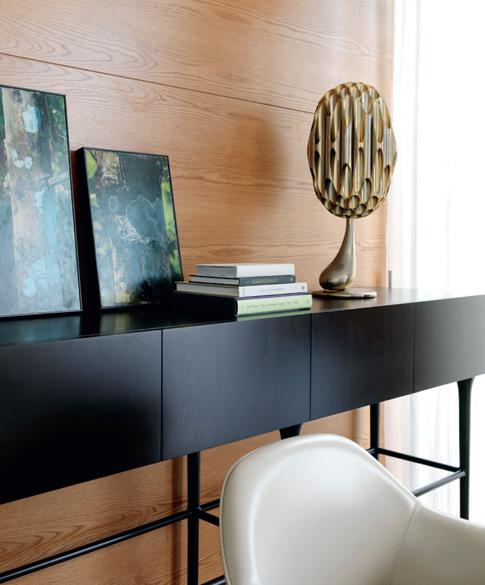
FINISHES
Stairs Crema Marfil limestone wrap around treads custom designed by Michael Bechara. Wall panelling Spinneybeck leather in Living, spinneybeck. com, and custom ruby red leather and Spinneybeck
encased in American Oak
Joinery designed by Michael Bechara in Cinema. Sliding door custom American Oak
timber veneer in Cinema. Joinery custom designed by Michael Bechara. Stone throughout supplied and installed by Deemah Stone, deemahstone.com.au. Rug linen and silk ribbed rug from Whitecliffe Imports, whitecliffe. com.au. Paint Milk Dew from Taubmans, taubmans.com.
au. Benchtop and splashback CaesarStone, caesarstone. com.au. Vanity polished stainless steel base structure with true grain onyx veneer.
Drawer unit custom designed by Michael Bechara. Blinds sourced from Roylston House, roylstonhouse.com.au.
FIXED & FITTED
Kitchen Ilve 900mm gas hotplate and oven, and Quasair rangehood from Winning Appliances, winningappliances. com.au. Vanity benchtop and washbasin is CaesarStone in Snow, custom designed by Michael Bechara and manufactured by Deemah Stone. Tapware and soap
dispenser Teknobilli range from Reece, reece.com.au. Blinds custom designed by Bechara, manufactured by Fybre Furnishing, fybre.com.au. Roller blinds from Blinds by Peter Meyer, petermeyerblind. com.au
MICHAEL BECHARA
DESIGN
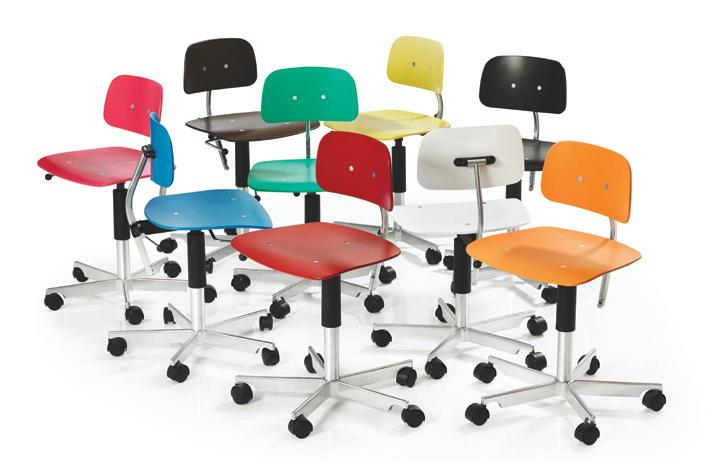
08
Bechara
132 habitusliving.com scenario habitus 07
Untitled-3 1 9/12/09 10:37:40 AM
shopped eclectically for the pieces – this 1970s bronze lamp was purchased at auction. 08

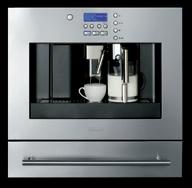



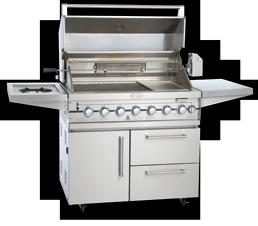

EABI6600 Primadonna Built In Fully Automatic WGC46D Dual Zone W ine Cabinet DW97AU 60cm Fully Integrated Dishwasher DE60EPS 60cm Electronic Multifunction Oven DELUX9FS 9 Burner Freestanding Barbecue De’Longhi’s stylish new range of Major Appliances set a new standard in Interior design. W ith contemporary lines and premium quality finishes, this range is going to redefine your space. To get a better understanding of how De’Longhi can inspire you, contact our commercial manager on 1800 126 659 or email commercial@delonghi.com.au DEL413FCSP www.delonghi.com.au 1800 126 659 *Not all models available at time of print.


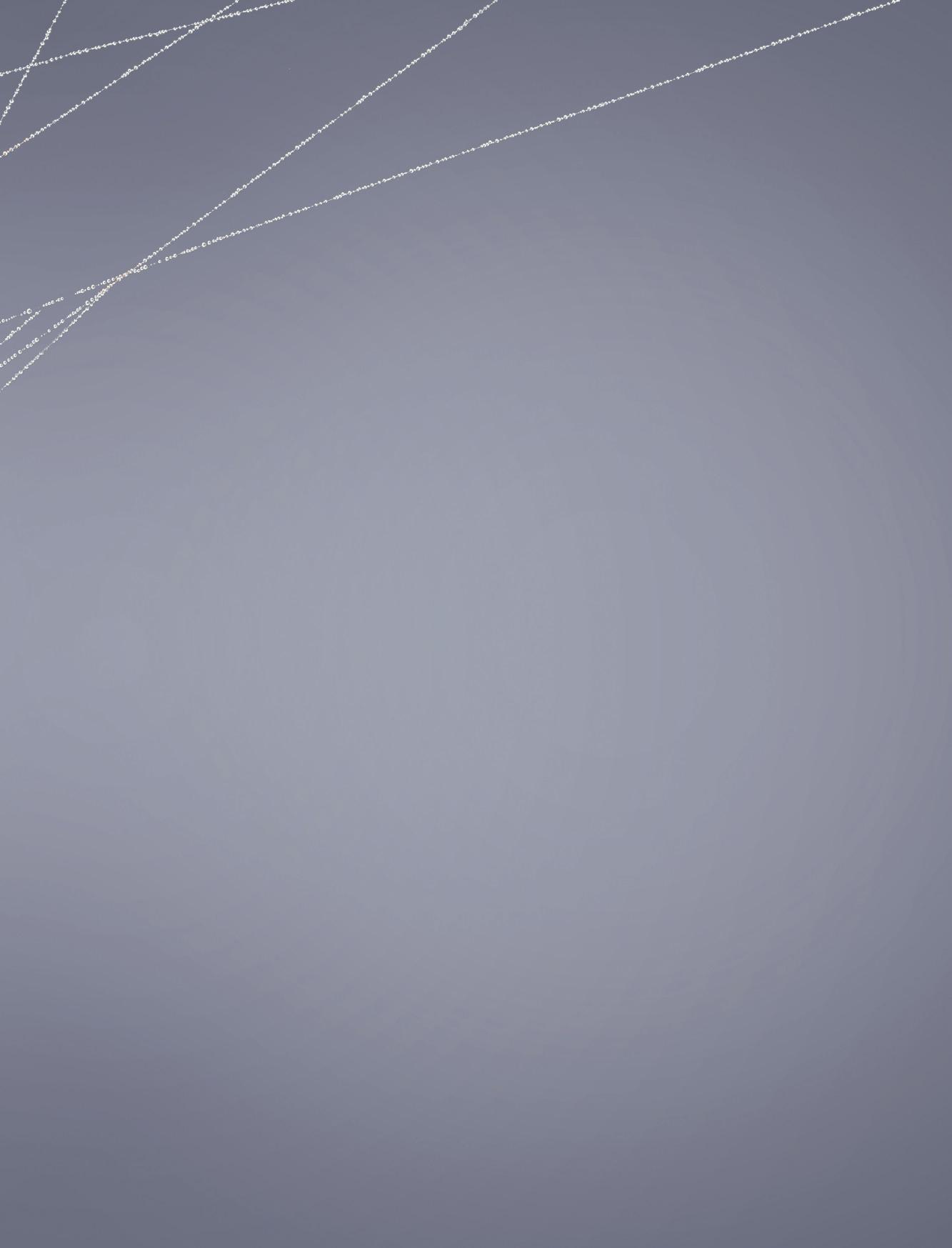
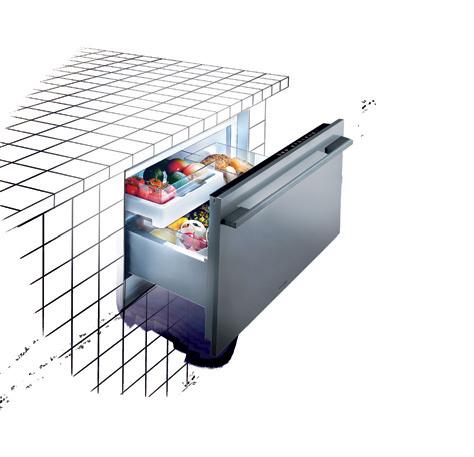
f i s h e r p a y k e l c o m a u
CCCA great barrier bach — AUCKLAND, new zealand

136 scenario habitus 07 habitusliving.com
Text Andrea Stevens, Nicky Lobo
Photography Simon Devitt
Symbiotic SuStA i NA bi Lity
Andrea Stevens visits a holiday home on Great barrier island in New Zealand that works as an organic element of the environment it sits within.
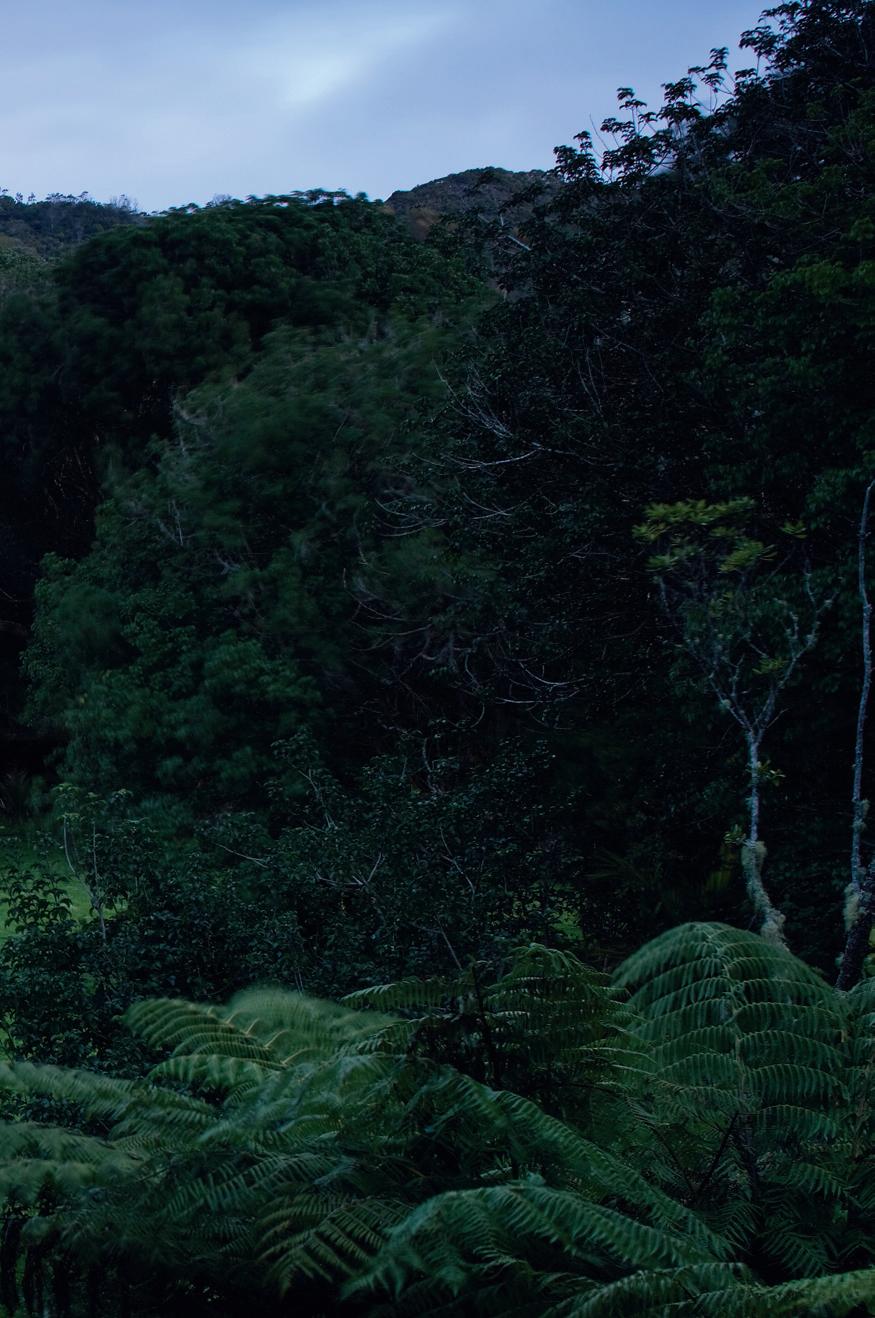
137
CCCA great barrier bach — AUCKLAND, new zealand
i f New Zealand is considered ‘remote’, drifting in the expanse of the Great Southern ocean, then Great barrier island is even more so. About a three-hour ferry ride north-east of Auckland, it was named by captain cook for the barrier it forms between the Hauraki Gulf and the open sea.
Despite this remote existence, Great barrier island is home to a population of 850, with regular visitors adding to the numbers. Kim bannister and Frances mcclure are two such visitors; their respective families have been making the trip to the island for years.
t heir connection to the island became more permanent when they found an area that would be the site of a future ‘bach’ – a local term for a modest holiday home. i nhabited by large Puriri trees, Eucalypts and Nikau, it had everything – the look of a sub-tropical New Zealand rainforest, native bush on one side, open fields to the other and a creek running through it.
Kim and Frances invited architect, Paul clarke of crosson clarke carnachan Architects (cccA), for a visit. “We visited the site, walked over it and i camped overnight; we chose a fabulous space to build the house, on a green field,” clarke recalls. “ t he thing i loved about this was the proximity to the dense bush and the privacy – it really did feel like you were removing yourself.”
o nce the site was chosen, the concept of the bach began to take place. completely off the grid, with no water, power or phone, clarke says there was “the freedom of not being too much like a normal house. it was about the experience of actually going away and having something that was quite different”. Although, the remoteness also presented a logistical challenge, with many of the materials needing to be transported from Auckland.
With Great barrier being over 60 per cent Department of conservation-managed land, there was a sustainable approach to the planning, design and materials, which helped streamline the appearance and function of spaces, as well as the energy used throughout. A project of rustic elegance was inspired.
t he idea was to be completely surrounded by the environment, a sense of living on a massive verandah with an enclosing roof. “We tried to do something incredibly simple,” clarke says. So cccA designed a series of rooms coming off a passage that leads on to an open plan living space, “where everybody congregates and comes together.”

Although simple, the spaces are reconfigurable and maximise potential. An outdoor bathroom provides facilities for any extra guests who want to camp on the site, and a pizza oven catches the late afternoon sun on the western side.
t he external frame of Western Red cedar is not structural, but expresses the internal form and also “hides the roof so you don’t see any
138 scenario habitus 07 habitusliving.com
02
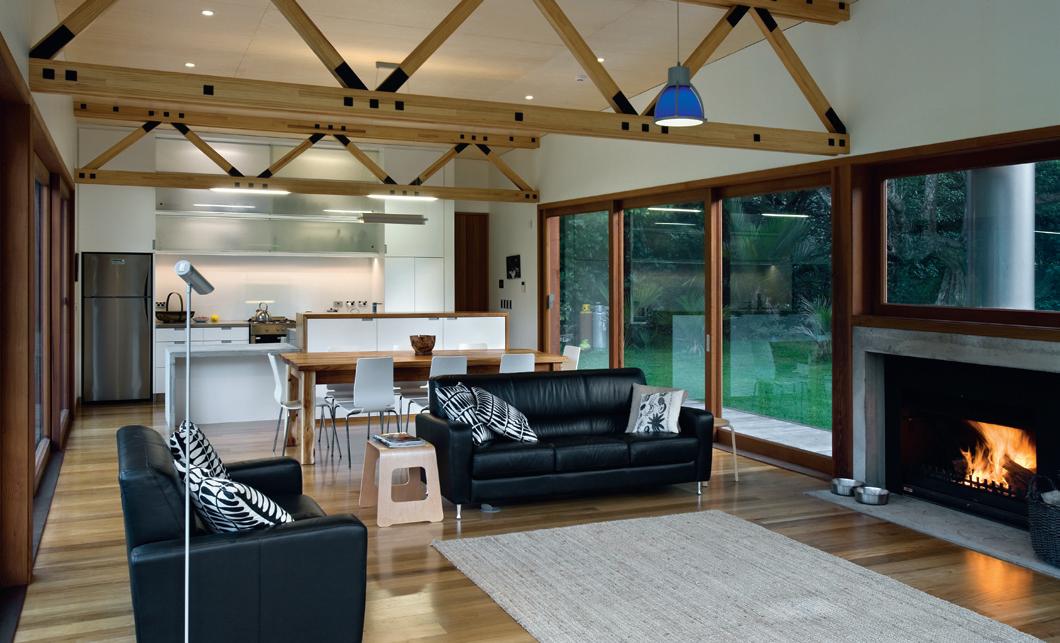

139 03 01
the bach sits in a clearing surrounded by dense native trees and ferns. 04
02 1 Living 2 Dining 3 Kitchen 4 Bedroom 5 Bath
the hallway acts as an artery from which the bedrooms branch off. 1 2 3 4
03 5 4
the large internal area has a rural feel about it. 5 4
04 Plan. A simple organisation of space, with private spaces leading to an open plan area.
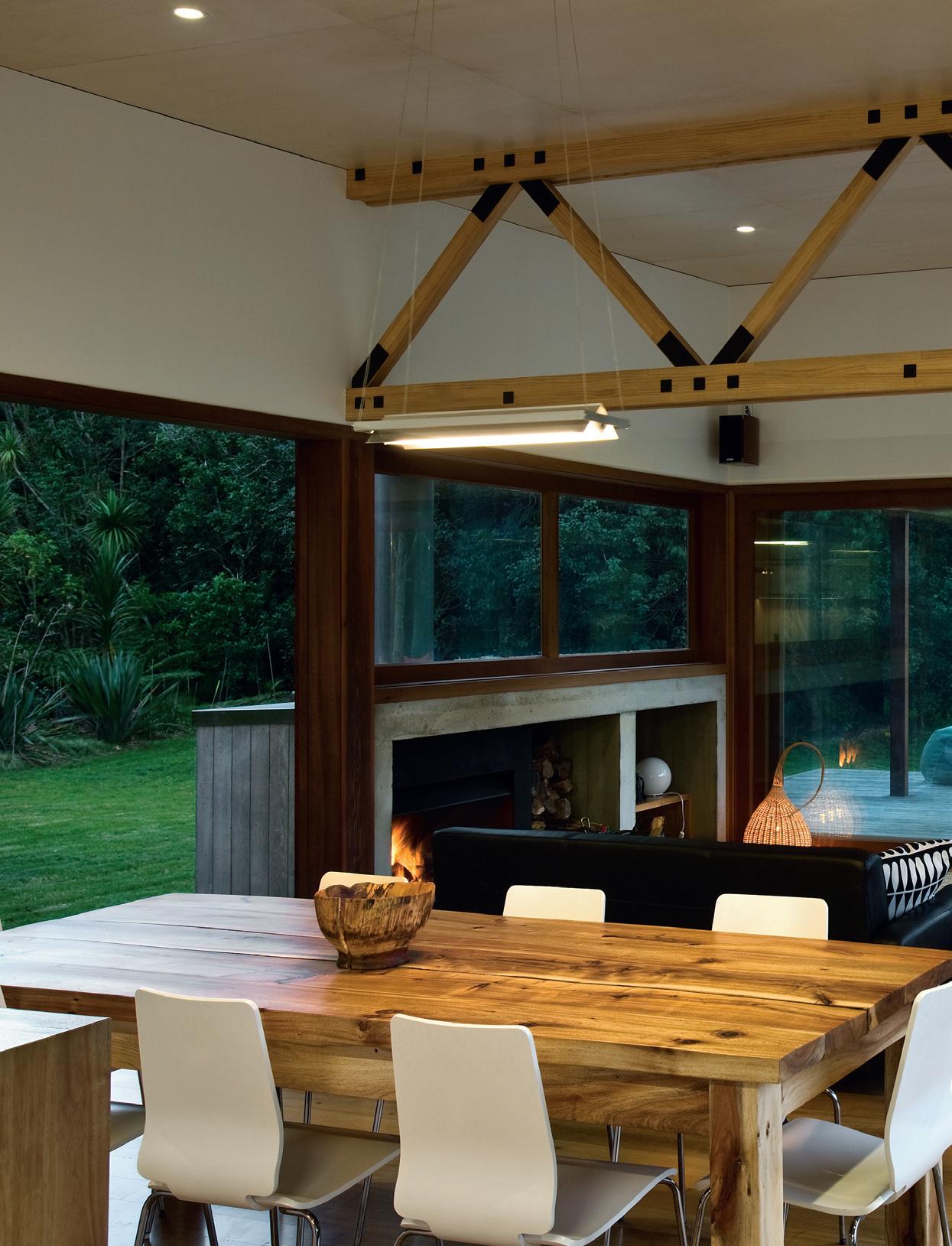
“We tried to do something incredibly simple... where everybody congregates and comes together.”
–
cLARKE

great barrier bach — AUCKLAND, new zealand CCCA
bulky flashing work you would typically see,” clarke says. “We tried to maximise on the idea of that framework to create the outdoor room, that celebration at the end.”

For Kim and Frances, their steady long-distance relationship with the land itself inspired a desire to live as holistically as possible. For them, this meant a deep responsibility to the materials selected and consideration for the surrounding environment. complementing these motivations, they carried their focus on the locality through to sourcing the labour for the building process. “We’ve always used local tradesmen, including the builders, plumbers, electricians, landscapers, nurseries, carriers, building supplies, woodworkers, millers, gibstopper, painter, equipment hire, bridge builders, treefellers, labourers, etc.,” Frances explains. Sustainability is approached through diverse elements, including energy conservation, timber sourcing and water and waste management, all of which cccA integrated into their design. t he temperature is regulated through wool-based insulation and low-E glass that absorbs and retains heat during winter months, while the efficient Jetmaster fireplace is fuelled with carbon that has been extracted from the onsite atmosphere. many elements in the home have a story, which has now become intrinsically
intertwined with their own. timber laminate in the kitchen was derived from 13 tasmanian blackwoods that were storm damaged on the site in 2007, while the largest planks were “sawn up, log-grabbed, milled, transported, dried and lovingly crafted into a unique [dining and outdoor table] piece using a chain of local people,” Frances explains. i n addition, sustainable Vitex timber certified by the Forest Sustainability council was sourced from the Solomon islands and used for decking and internal flooring.
t he concept and building of this bach seems like a completely organic process, like something that occurs in nature. As Frances says, “there is a sense of community involvement, interest and pride in this piece and indeed the whole house, which everyone knows about and many have inspected.” it is homes like these, thoughtfully approached, sensitively designed and lovingly crafted, that have a positive energy flow beyond the physical sense. Now that the project is complete, Frances and Kim, selfdescribed ‘temporary custodians of the land’, continue their symbiotic relationship with the environment, as they “lie in the bath... as the sun fades and the moon rises in the starry ceiling of leaves, sipping shiraz and listening to the birds going to bed”. bliss.
142 habitusliving.com
habitus 07
scenario
05 internally, there is still a connection to the outdoors through a series of glass sliding doors. 06 Simple living was the aim, with a focus on the surrounding landscape. 07 Kim and Frances enjoy their bach as often as they can.
06

143
“there is a sense of community involvement, interest and pride in this piece and indeed the whole house...”
07
–FRANcES
great barrier bach — AUCKLAND, new zealand CCCA
ArChiteCt
crosson clarke carnachan
Architects
De SigN ArChiteCt
Paul clarke
PrOjeCt ArChiteCt
brent Hore
BUiLDer
offshore Homes
(Shane Heney)
eNgiNeer
cm R Engineers (chris Rose)
tiMe tO COMPL ete
Approx. 1 year
tOtAL fLOOr A re A
iNCLUDiNg DeCKS 250m 2

CCCA (64 9) 302 0222 ccca.co.nz
fUr N it Ure
Furniture supplied by owner, mainly from Ikea, ikea.com.
fi N iS he S
Cladding door and window
joinery Cedar from JSC
Timber, jsctimber.co.nz.
Decking/Flooring Vitex from South Pacific Timber, southpacifictimber.co.nz, stained with Dryden’s WoodOil, dryden.co.nz. Ceiling Poplar ply internally and Cedar externally from Plytech, plytech.co.nz. Walls Gib with paint finish from Resene, resene.co.nz. Benches concrete by Offshore Homes, and stainless steel by AJ Leslie & Co, (64 9) 479 4662.
Timber joinery with white lacquer finish and detailing in Blackwood sourced off the property, by AJ Leslie & Co.
Lighti Ng
Throughout LEDS and fluorescent recessed fittings from Brightlight LED Lighting Solutions, brightlight.co.nz.
fi X t Ure S Fireplace Jetmaster with insitu concrete surround from The Fireplace, thefireplace.co.nz.
08
Elevation.
09
An outdoor shower further connects the living experience with the environment.

144 habitusliving.com scenario habitus 07
09 08



Corian® loves… your space Request the latest Corian® brochures today, call 1800 267 426 or email coriandesign@casf.com.au For trade, find out more about working with Corian®, call 1300 795 044
Seamlessness as an agent of liberty
Design by CplusC Design Construct and Photography by Murray Fredericks
From a classic Roman to the striking appearance of timber-batten blinds — every blind we create is designed with an eye to quality and craftsmanship.
Choose from over 200 stunning fabrics to complement your sense of design, along with motorised systems to smoothly move your blinds.
The quality, innovation and fabrics on offer mean you can finally leave behind blinds that merely blend in.

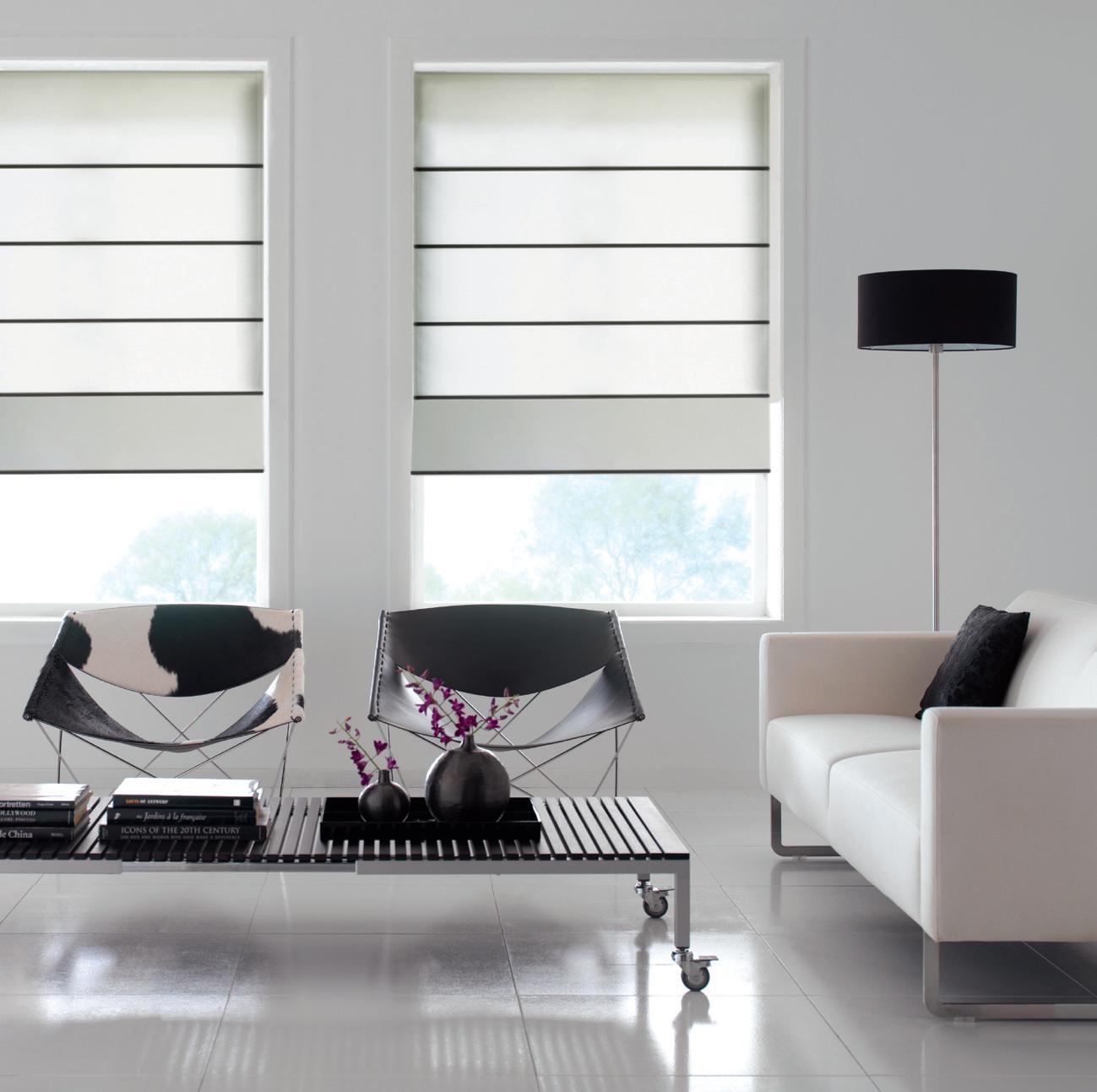
Australia 1300 322 254 New Zealand 0800 222 024 www.dbablinds.com.au
Most blinds are manufactured. Ours are designed.
A TALe of TIMBeR
The beauty of recycled timber is only partly aesthetic – its former function adds a whole other appeal. Jaz Sidhu visited the island of Langkawi in Malaysia and discovered a home designed by Building Bloc that generates new life for old timber electricity poles.

147 habitus 07 scenario BUILDING BLOC
Text Jasmeet Sidhu
Photography Tianxing and Ken Soh
langkawi house — malaysia
langkawi house — malaysia
Langkawi refers to an archipelago of 99 sunsoaked tropical islands scattered roughly off the north-west coast of peninsula Malaysia, at the point where the south Andaman Sea meets the Straits of Malacca. The main island of this group is also simply known as Langkawi and has been declared a UN e SCo Geopark due to its natural habitat and a unique geology and biodiversity.
My first visit to Langkawi was on an architectural school trip in 1981, when the island had but a single bus, hardly any cars and no hotels. Getting to the island was via a slightly irregular ferry service (actually just a boat holding 50–60 people) from Kuala Kedah on the mainland. I have fond memories of walking the main street in the principal town of Kuah and not seeing a single car for miles.
Alas, in the ensuing decades, Langkawi has been developed and today boasts modern concrete buildings, an international airport, numerous luxury marinas, a host of five-star hotels and resorts and a duty-free status to boot (meaning some of the products of contemporary Western living, such as cars and alcohol, are cheap and plentiful).
fast forward to 2007 and we have a retired British couple, Angela and Bob, falling in love with the island. Bob’s previous career in advertising had enabled him to visit a number of exotic destinations the world over.
BUILDING BLOC
When I met the couple over tea, Bob explained how he had kept a checklist of all the places he had visited, to determine which one – come the day – would be the most suitable place to retire to. At the end of the exercise, Langkawi had the most number of ticked boxes.

Ironically, the partial development of Langkawi was somewhat of a plus to the couple. As Bob explained, “Although retired, I am occasionally called up by my ex-employer and other friends in the industry to help with difficult projects. overseas travel is convenient with an international airport literally in our backyard... the modernisation of Langkawi is not all in vain.”
Apart from the obvious beauty of the landscape and the agreeable climate, another advantage as far as Angela and Bob were concerned was the ‘Malaysia, My Second Home’ scheme. This government initiative not only encourages foreign retirees to move to Malaysia, but then also provides a support network and a number of incentives if you do so.
Through a mutual friend, the couple got in touch with Building Bloc, a young husband and wife architect team based in Kuala Lumpur, to design their dream home. The brief was simple: “Give us a timber house”.
Wen Hsia and Boo Chung run a comparatively small practice, undertaking only a few selected projects for discerning clients.
148 scenario habitus 07 habitusliving.com
“This synthesis of ideas, concepts and technologies and take on the green revolution ... is a pleasant surprise.”
02
–BoB
Detail of the four-post column on the ground floor, resting on a metal plate which floats above the bare concrete floor.
02
In a gesture of honesty, the original markings on the posts are left intact.
03
The full-height glass doors to the kitchen slide back to provide a completely open ground floor plan.

149 01
03
...the open balconies welcome in a constant breeze flowing from the lowlands, cooling the house comfortably even during hot days.
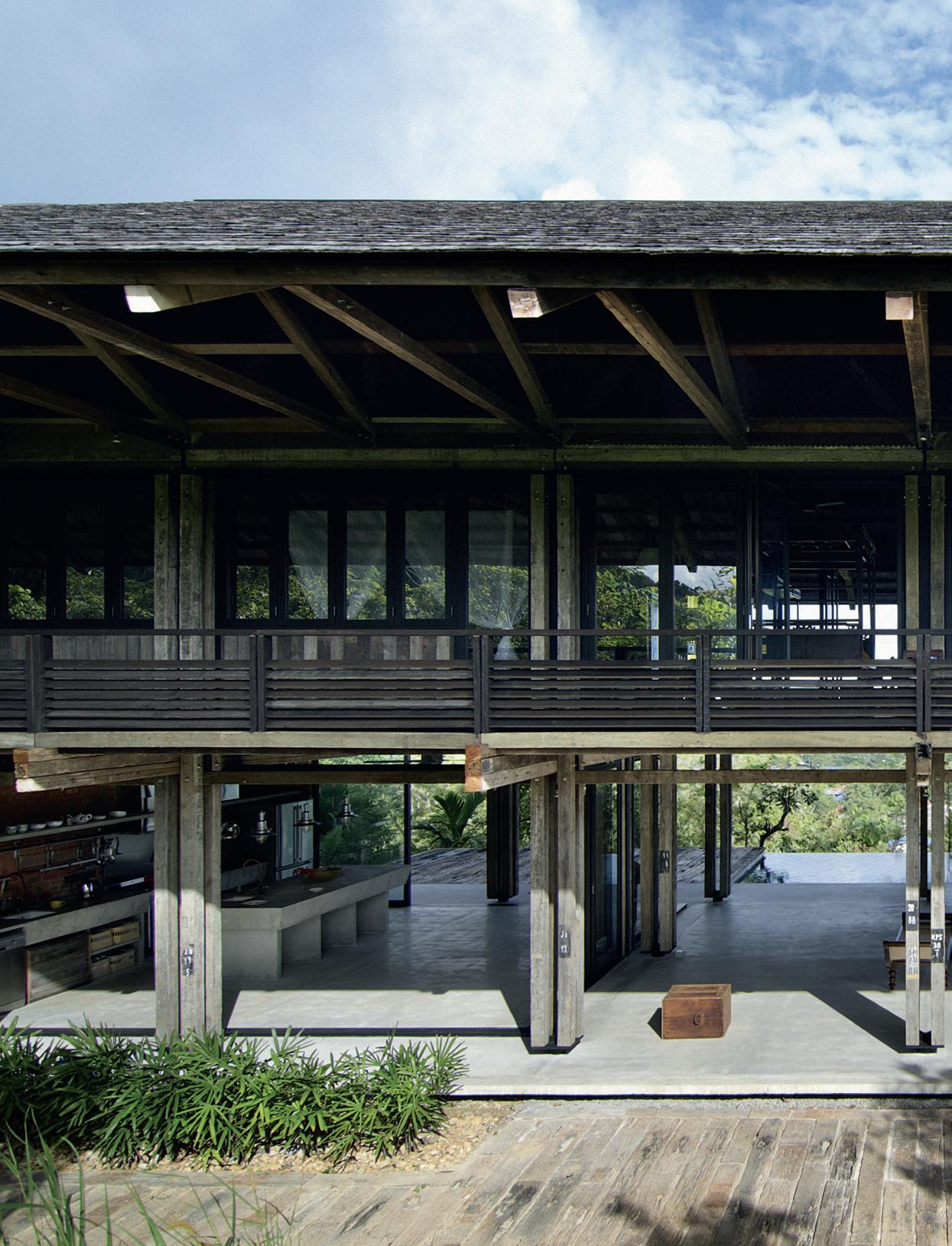

BUILDING BLOC langkawi house — malaysia
When faced with the task of designing a ‘timber house’ for Angela and Bob, they did not want to settle for just another timber house – it had to be something different. Something that touched the soul; a home that not only provided shelter for its occupants but also respected and celebrated nature and its resources.
Design and construction
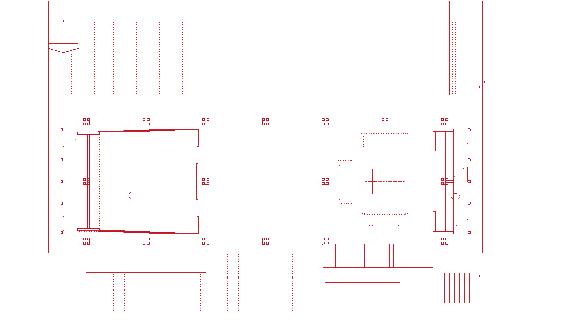

When Hsia and Chung presented their unique idea of a timber house – one made primarily of recycled electric poles – Angela and Bob listened. The idea seemed plausible – these timbers would be solid, hardy and well seasoned but not necessarily cheap. The next few meetings, over the course of six months, were spent fine-tuning the design and getting the budget sorted out.
But major obstacles remained: finding suitable timbers for the house in the required quantity, as well as a knowledgeable and sensitive builder who could translate the design into its built form. Hsia and Chung accompanied the clients as they traversed three states to source the timber – literally the whole of northern peninsula Malaysia. Their search paid off when they located a timber yard in the town of Alor Setar, which had stockpiled a large quantity of these disused poles from the national power company.
Meanwhile, a number of builders were shortlisted and interviewed, some from as far away as Kuala Lumpur. The chosen builder, while not the cheapest, did have good credentials and also happened to be a local from the island.
Thus began the construction of a unique house sitting atop a little hillock, surrounded by lush tropical greenery and kampong houses in the valley below. It took close to 18 months to complete, with monthly – and at times fortnightly – site meetings with the builders, often working out construction details on the spot. As time progressed, the architects and the clients felt lucky to have the builders’ experience, which contributed to the exercise and helped them in realising their design.
The experience
When I visited Angela and Bob recently, what first struck me was the tranquillity of the countryside surrounding the house. You drive through a narrow kampong road arriving at a gate that hints at something remarkable beyond. But nothing is visible, save for a narrow uphill driveway that disappears around the bend. from the covered garage (upstairs is a reconstructed kampong house that now serves as Bob’s workshop), the house proper is reached via a set of steep steps made of poles leftover from building the house. And when you reach the top – level with the house – there’s another
152 scenario habitus 07 habitusliving.com
1 Living 2 Open Living Space 3 Kitchen 4 Deck 5 Swimming Pool 6 Ensuite 7 Master Bedroom 8 Living Area 9 Bedroom 10 Balcony
04
The openness of the house is evident from this side view. The single flight staircase is seen on the right. 05
Ground floor plan (top) and first floor plan (below).
06
Ample ventilation in the master bedroom provides the perfect resting place for balmy tropical nights. 07
05 7 6 8 9 9 10 1 3 4 2 5
Recycled, utilitarian brass fittings with an old world charm and simplicity.
surprise: almost the entire house at grade level is completely open on the two long sides. o ne’s eye is drawn immediately to the breathtaking countryside that slopes steeply away from the house on the opposite side.
The living space is a large open area overlooking a pool that runs the full length of the house. o n each side of the pool are deck areas, with the same timber poles echoing throughout the spaces.
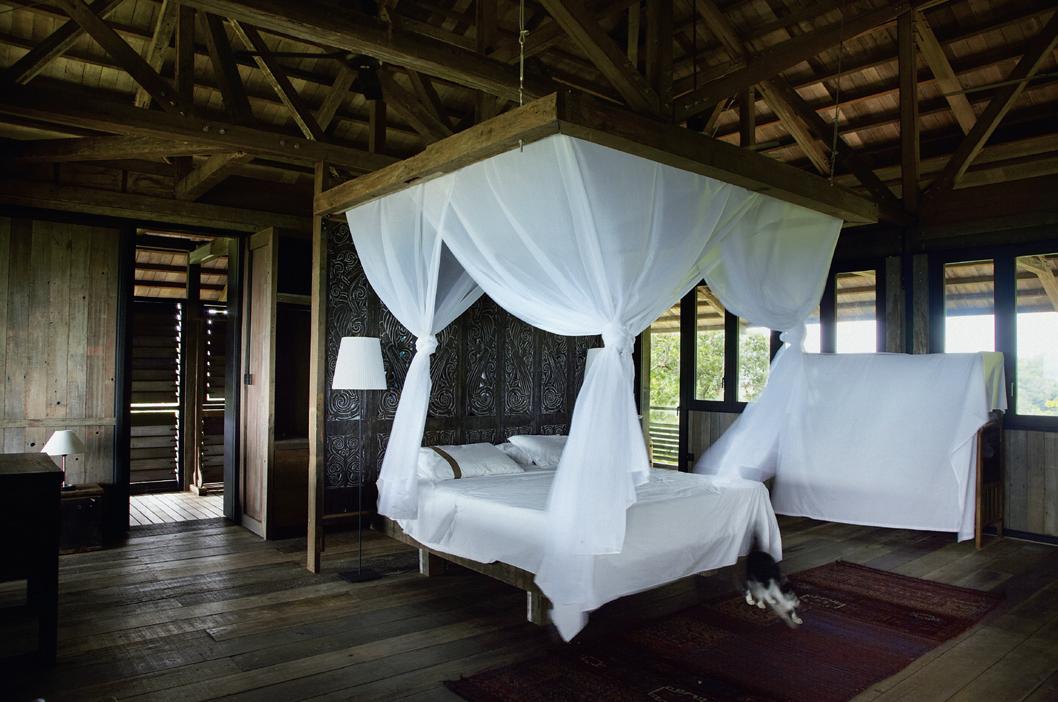
The kitchen is the only area that has any modernity to it, with gas stoves, built-in ovens and other appliances. It even has an air-conditioner for those balmy afternoons, the only space in the entire house to do so. Apart from the mod-con fittings, this space too is simple, with fair-faced brick walls, concrete open shelves for storage and a concrete island worktop with period-style sink. Remnants of the residents’ native country are the custom designed taps – all the original brass stopcocks in the house were purchased from a junkyard in Great Britain.
A single flight of stairs, again in the same timber poles, are suspended from the first floor using steel rods, leads to the upper floor.

153 07
06
BUILDING BLOC langkawi house — malaysia
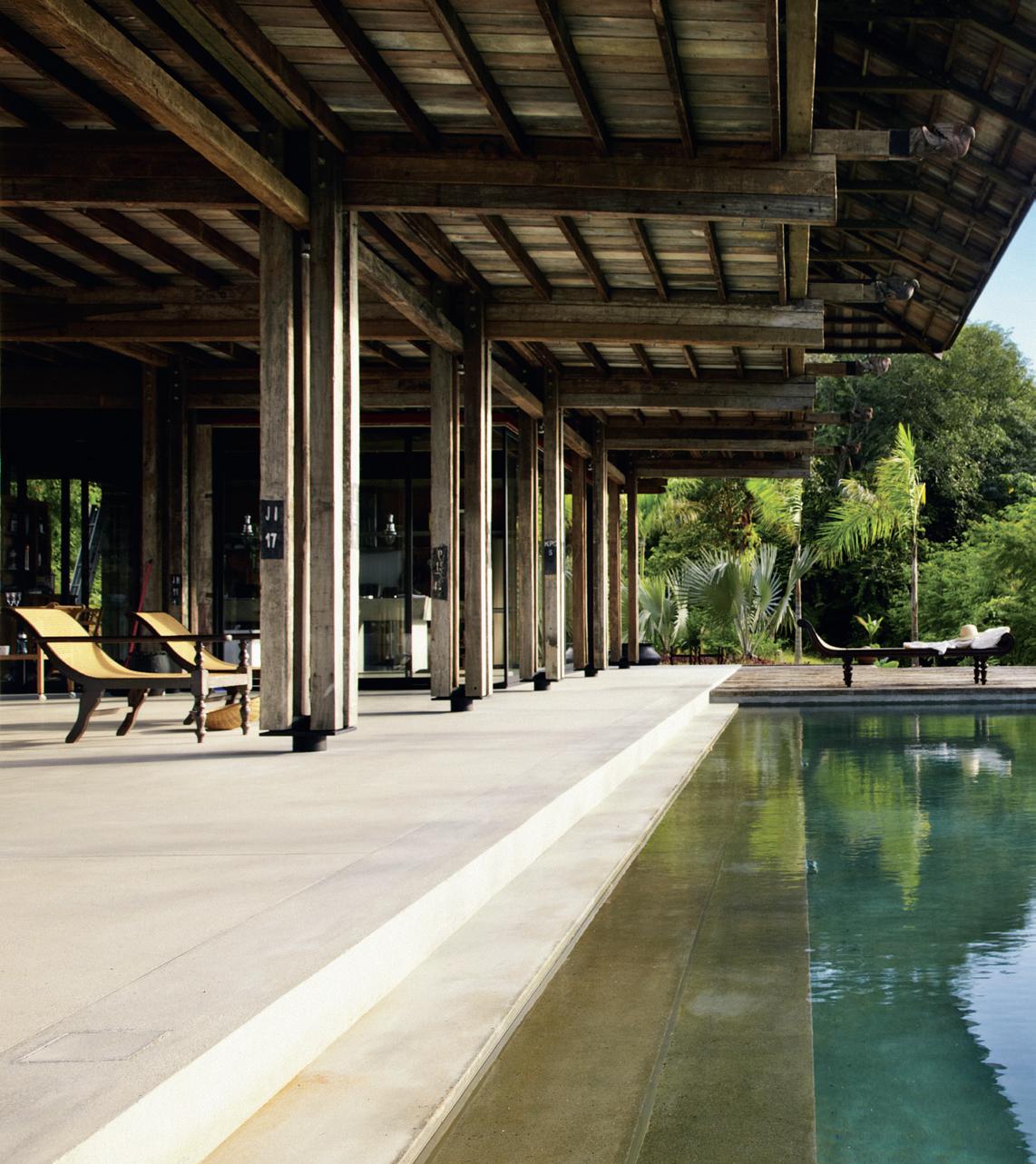
154 habitusliving.com scenario habitus 07
08
The entire upper floor has two open balconies running the full length of the house. o ne side overlooks the pool below and the countryside beyond, visible for miles on a clear sunny day.

The centre third of the floor acts as a family area and is simply furnished with an assortment of antique furniture and a beautiful raised divan as the centrepiece.
o n either end of the structure are the sleeping quarters: one is occupied by the huge master bedroom, while on the opposite side, two smaller (but still spacious) rooms share the remaining third of the floor. each bedroom has its own ensuite, located at the extreme ends of the floor.
None of these spaces have airconditioning, but the open balconies welcome in a constant breeze flowing from the lowlands, cooling the house comfortably even during hot days. o nly simple ceiling mounted fans aid in circulating the air on still nights.
The architects took great pains to design unobtrusive insect netting to the upper walls, which is almost invisible from inside. Together with the timber louvres on the lower half of the walls and the operable casement glazing, the entire façade is able to breathe naturally. Similarly, the timber floorboards have been laid deliberately with gaps in between to allow air circulation between the floors.
The expressive timber structure and underside of the roof, which are recycled Belian shingles sourced from a dismantled local hotel, maintain the simple and honest architectural aesthetic of the home.
Downstairs, only the kitchen can be closed off using full-height glazed sliding doors, while the upper floor can be isolated at night by locking the staircase gate. Angela and Bob love the simple living concept and the quiet and safety of the locale poses no security problems to such an open house. “Locals are a friendly lot,” Angela and Bob explain, telling how both people and the monkeys that reside in trees on
155
Something that touches the soul; a home that not only provides shelter for its occupants but also respects nature and its resources.
langkawi house — malaysia
the neighbouring hillside followed the building of their home with interest.
This project was very much a collaborative process where residents, architects, builder and engineer went on an enlightening journey together over a period of time. Something as intimate as a home always inspires an array of human connections – here, these were first brought to life in the working relationships, and then the friendships, between the people involved in its creation. “We had just envisaged a little timber house, maybe something vernacular,” the couple remark. “This synthesis of ideas, concepts and technologies and take on the green revolution... is a pleasant surprise.”
BUILDING BLOC
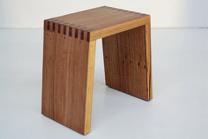
08

The wide roof overhang creates a semi-covered pool overlooking the valley below.
09
The house, nestled in greenery atop a natural hillock.
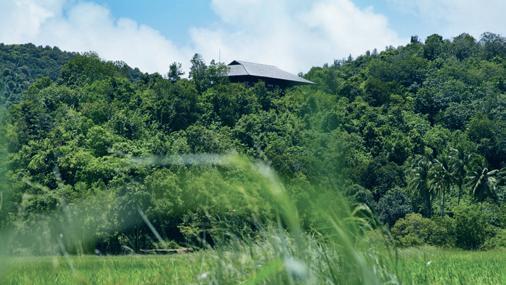
10
The kitchen is simple, with cool finishes in keeping with the rest of the house.
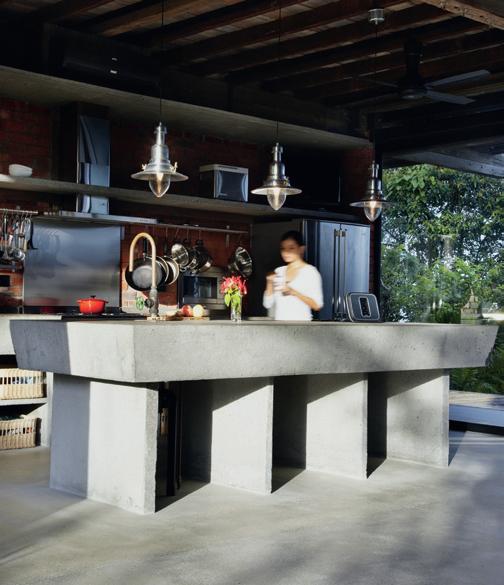
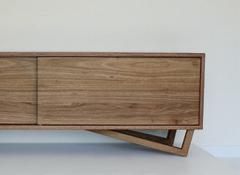
156 recycled timber. custom made. 0403 857 354 nichollsdesign.com.au Design HAB07_Nicholls.indd 1 22/1/10 3:02:58 PM habitusliving.com scenario habitus 07
De SIGN ArC hI te C t Building Bloc PrOJe C t t e A m BC Ang, Wen Hsia Ang eNGIN eer PKS Chin Dan Rakan Rakan BUILDer HQB Construction Stee L / metAL WOrk S CL Steel Building Bloc mail@building-bloc.com building-bloc.com FUr NI t Ure Furniture throughout is owners’ collection. LIGht ING Lighting throughout is basic lightbulbs. FINIS he S Floors ground floor is cement screed and first floor is recycled timber floorboards. Columns recycled timber electricity poles. Walls recycled timber with steel frame. Roof recycled shingles. FIX e D & FI tte D Tap fittings and door handles custom designed by Building Bloc.
09 10
Reflecting the look and character of the past. Reclaimed hardwood and French oak is being used to create truly unique floors. Cut to size, sanded by hand and restored with natural oil to create traditional European patterns. We also offer a wide range of bespoke furniture.
Showroom: 73 Beattie Street, Balmain NSW 2041
Opening 10 - 6 Tues, Wed, Fri, 10 - 8 Thurs, hours: 10 - 2 Sat and Sun
Tel: 61 2 9810 8838
Fax: 61 2 9810 8839
Email: info@antiquefloors.com.au
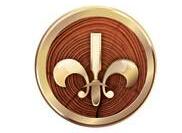
www.antiquefloors.com.au

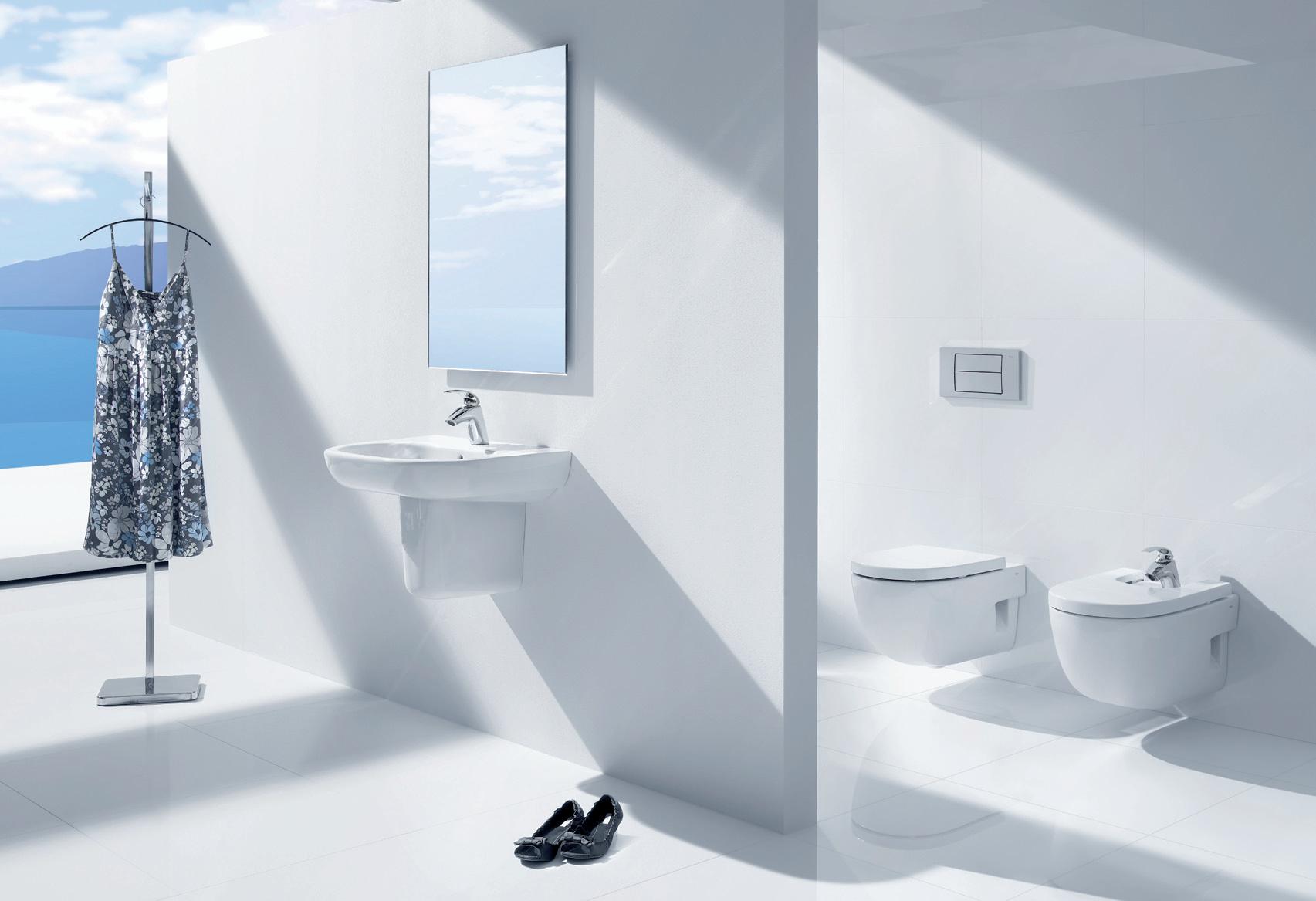
MERIDIAN FITS EVERYWHERE
launches Meridian - its most comprehensive collection to date. A collection with over 36 units that are well suited for any need and space, whether it’s a small or a disabled bathroom, all carrying the same design line. Meridian is the perfect solution for any bathroom. Proudly distributed in Australia by Streamline Products www.streamlineproducts.com.au
Roca

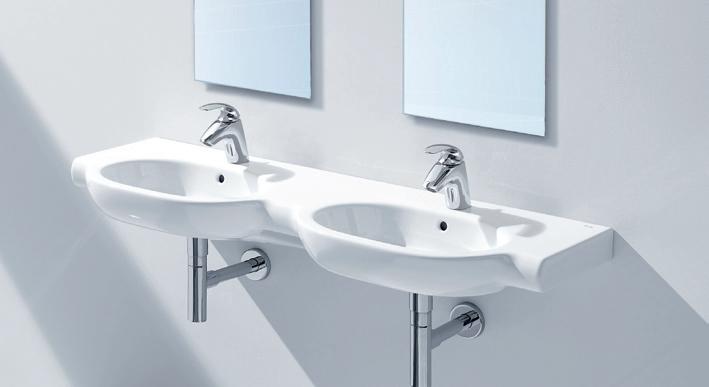


BARCELONA LONDON SÂO PAOLO SHANGHAI CASABLANCA
SUBSCRIBE & WIN
Mandarina Duck Travel Set
from the Drop Range valued
at $1,525 RRp
Explore other worlds and find new inspiration with contemporary luggage pieces by Mandarina Duck.

Experience an elegant and distinctive aesthetic inspired by the fluidity of water, combined with technical solutions that achieve both strength and lightness. An aluminium trolley system propels the polycarbonate frame, which is 100% recyclable, waterproof and easy to maintain.
To enter, simply subscribe to Habitus magazine and complete the question overleaf. Good luck!
subscription offer
pyt Hons a re Just
Headspace
a rtist and builder, Roger Quinn, argues for a simpler way of life – one which is in harmony with nature. Eugenie Navarre visited roger and his artist wife, u lrike, in the home they have built for themselves in north Queensland.

161 scenario habitus 07
ROGER QUINN Text eugenie navarre
Photography colyn Huber
quinn house — QLD, australia

north Queensland artist and eco-builder, roger Quinn, despairs of the death of the ‘aussie dream’ with the once attainable low-cost dwelling becoming a lifetime financial liability. so, perhaps it is not surprising that creating affordable shelters has been an ongoing challenge for this folk builder and long-time resident of the rainforest village of Kuranda.
“It’s our aussie cultural right to have territory and shelter, a place to call our own, no matter how basic,” says Quinn. “My purpose in creating shelters has always been a socialistic thing. But now the bar is too high.”
He advocates a return to the era of creativity, self-sufficiency and reality when the ‘aussie battler’ could afford his own place, even if only a lean-to beside a gum tree. “It’s beautiful to build your own place and better to live in a simple shelter that is yours than a mortgaged mansion.”
a fter decades of hands-on building experience creating low-cost dwellings, including his own individual rainforest abodes, roger Quinn unearthed the realities of modern economics and multi-nationalism. camouflaged beneath restricted freedom of choice, skyrocketing costs, bureaucracy and building codes, lies the demise of the ‘aussie d ream’ – aided and abetted by bank and insurance company philosophy and aggressive marketing and legislative lobbying by building suppliers.
01
the Quinn’s artistic touch extends to water features and landscaping, with the lilypond a feature.
02 a view of the Quinn’s original home from across the tranquil lilypond.
03 the creative Quinns relax in their wellused art studio –formerly their home.
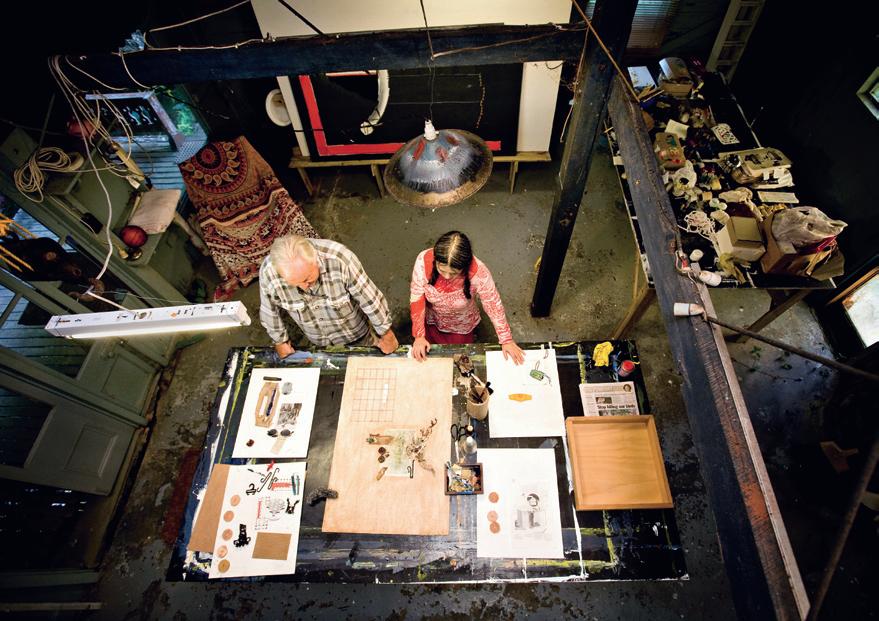
04
a sketch by roger Quinn, eco-builder and artist.
04
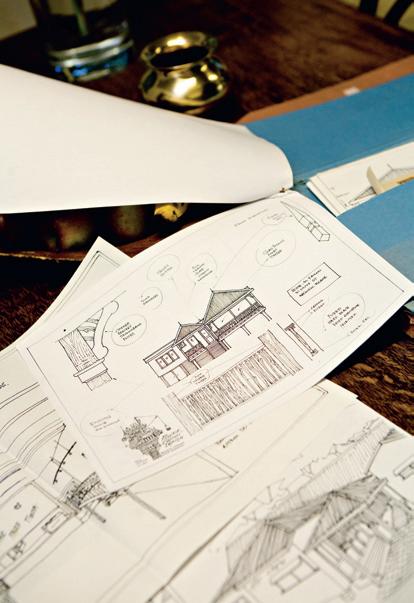
163
03
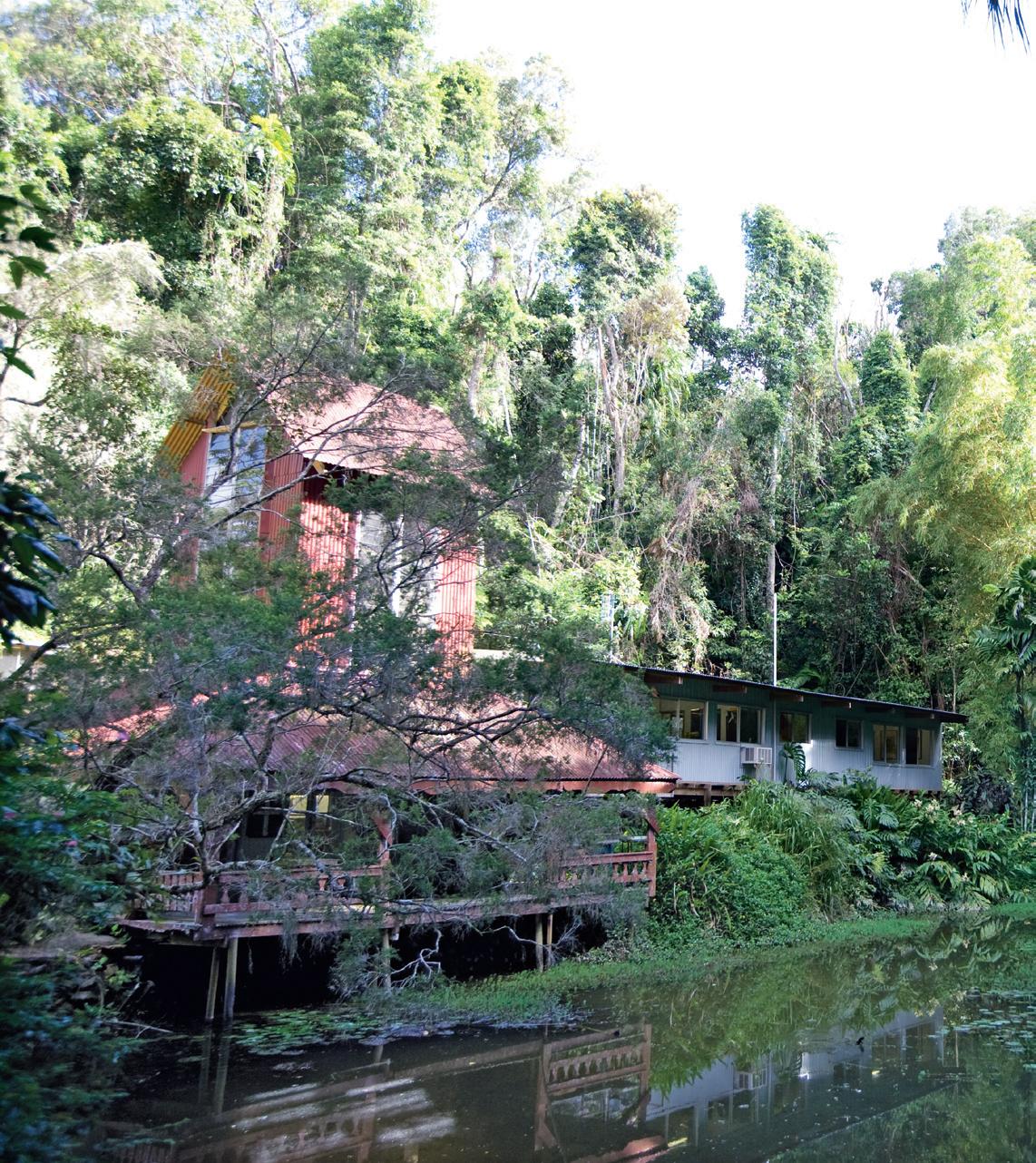
164 habitusliving.com scenario habitus 07
05
ROGER QUINN quinn house — QLD, australia
Forceful combinations have sounded the death knell for low-cost, lightweight, ownerbuilder dwellings, similar to the quintessential Quinn homes over a spring-fed lily pond lagoon at Kuranda.
over thirty years ago, u lrike and roger Quinn chose to permanently live the environmentally attuned tropical lifestyle revolving around art and the construction of nature-conscious holistic housing.
roger’s earthy hammer-and-chisel creativity, the centrepiece of their alternate world of the 1970s and 80s, forged an individual design statement up the east coast of australia, from sydney to north Queensland. t hese unobtrusive buildings, blending into the bosom of Mother nature rather than overriding their surrounds, birthed the lifestyle now termed eco-living.
roger’s versatility and individuality are reflected in both grand and simple houses, especially in and around Kuranda.
It was the Quinns, together with innovative new age thinkers following their own drumbeat, who went on to inspire a new australian ideology in structure and style –but one which is now under threat. roger and u lrike’s original shelter, a gypsy wagon on the back of a 1930s dodge, set the pattern for the unique living style.
t heir Kuranda owner-built dwellings, surrounded by towering rainforest, are at the same time picturesque, functional and environmentally focused, reflecting an enlightened philosophy of building within the landscape, rather than obliterating it.
“Man imposes too much on the landscape,” roger asserts. “Man in the landscape is like ants in the butter.”
t he Quinn house is the closest dwelling to the might and magic of north Queensland’s renowned Barron Falls. In the wet season the floor vibrates slightly with the thunderous power of this raging tropical torrent. t heir
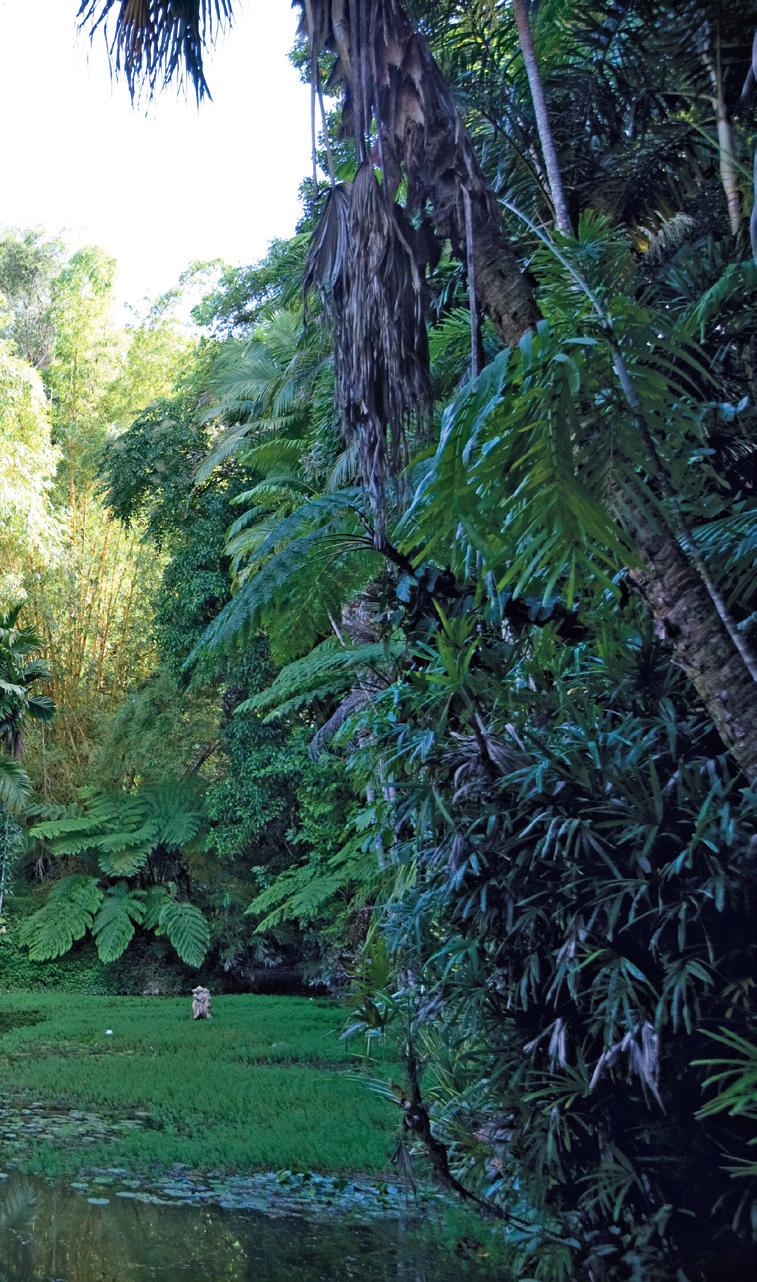
165
“Man imposes too much on the landscape. Man in the landscape is like ants in the butter” –roger
ROGER QUINN quinn house — QLD, australia
original corrugated iron and wood house over the lily pond (now a well-used art studio) stands beside the latest dwelling, adding charm and charisma to the setting. soon the old place will come down – including the huge floor-toceiling aviary – and be recycled to extend their new home.
roger says this new low-cost house, gradually evolving over the years, utilised sustainable plantation timbers with corrugated iron for carbon sinking advantages.
“We’ve used plywood for bracing and strength with cement sheeting in appropriate places. It’s built to take advantage of the site, over a long pond, with its narrow building style offering cross ventilation.
“What interests me is folk architecture, which is architecture for all. It doesn’t have to be huge concrete cubes, it can be rural. I’d like to see folk housing used for rehabilitation of stressed landscapes going back to the old selection system.
“ t here is evidence to show these little old hand-built Queenslanders have withstood cyclones, like a blizzard-proof tent. I’ve had more pleasure building low-cost shelters for single mothers than building million dollar houses,” roger said.
Furniture-making is part of the eclectic Quinn regime with his original hand-crafted pieces featured throughout the house. “I like making furniture,” he says. “It’s an exercise in grace and space.”
u lrike also intertwines her life with creativity using pieces of wood, china, string, and other bits and pieces to create collages which take pride of place in their own home. roger himself has been an artist since his late teens and continues to show in both solo and group exhibitions.
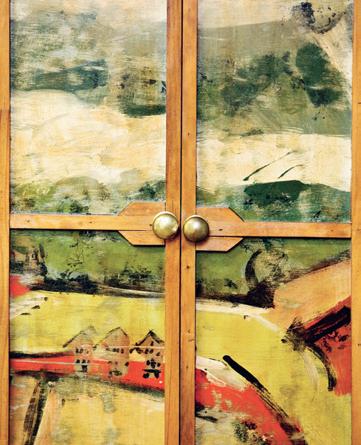
even as a child growing up in sydney he was dreaming of life in the tropics, palm trees and the ocean. It was during national service in the a ir Force as a coffee boy on a Hercules aircraft that he first sighted its magic.
“My first job in Queensland was stripping cane,” he recalls, “and I couldn’t believe human beings did this job. t hen I saw an advertisement ‘to lease trawler, net $40, will teach’. a deckie called spider taught me the ropes. I had to buy $20 of diesel, $20 of ice and a carton of beer for him.”
roger continues the story as we overlook the almost ethereal stillness and charm of the lily pond shaded by huge alexander palms and pandanus, a lifestyle of peace, harmony and inspired ideas.
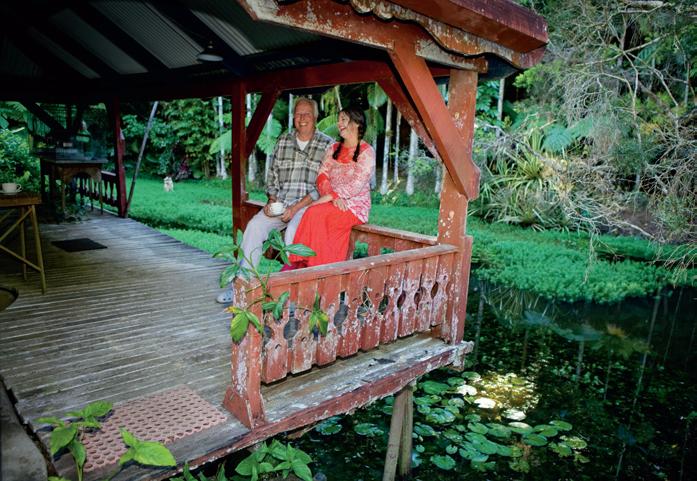
166 scenario habitus 07 habitusliving.com
roger 05 ethereal forest and water surrounds create the unique Quinn lifestyle. 06 Life’s good beside the Barron Falls in the rainforest village of Kuranda. 07 Interesting furniture handmade by roger. 08 Interior of the new Quinn house overlooking lilypond lagoon. 09 Birds, garden and the natural wildlife are an integral part of the Quinn lifestyle. 06 07
“We live in one of the most bio-diverse places in the world. It’s quite spectacular what we see here”
–
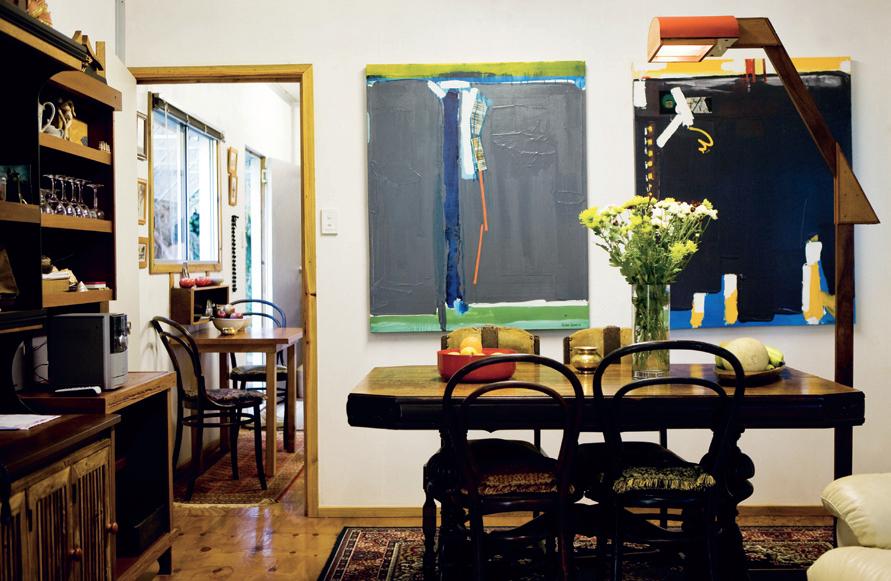

167 08 09
quinn house — QLD, australia


“ t he money was bad, but the food, prawns and avocados, were great,” he recalls.

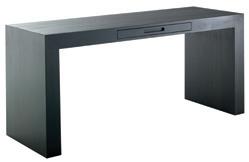
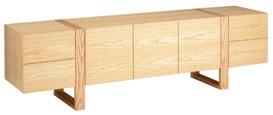
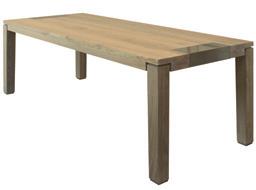
t his experience was to birth grand new maritime adventures and artworks, including a model exhibition of classic north Queensland boats. With fellow Kuranda resident, potter peter t hompson, roger built his home town’s original tourist boat, the Kuranda Queen.
“In the seventies I bought an old plymouth pilot boat, the clarinda, and went beetling round the trobriand Islands at the bottom of new guinea. I’d have these adventures and then reflect on them and paint.
“people generally aren’t kind to the environment, it’s their ignorance of it,” says roger. “Here in north Queensland, we live in one of the most bio-diverse places in the world. It’s quite spectacular what we see here, cassowaries, tortoises and for most of us the pythons are just headspace.”
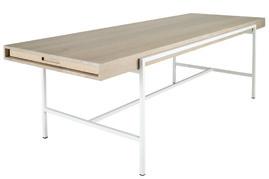
168 Showroom open Tuesday to Saturday 15/198 Young Street Waterloo NSW 2017 P 02 9698 6422 E info@beclau.com www.beclau.com BEC-2008 GECA 28-2006–Furniture and Fittings HAB5_BECLAU_1/2.indd 1 11/12/09 11:09:21 AM habitusliving.com scenario habitus 07
ROGER QUINN
10
10 the main bedroom featuring ulrike’s artwork.
Roger Quinn rogquinn@yahoo.com.au
Winning Appliances is Australia’s leading kitchen and laundry appliance specialist.

Within each of the six showrooms, conveniently located around Sydney and Newcastle, Winning Appliances displays an extensive range of over 50 quality brands and is your one stop shop for all your major household and kitchen appliances. Whether you require a refrigerator or need a complete kitchen package, Winning Appliances can meet all your requirements.
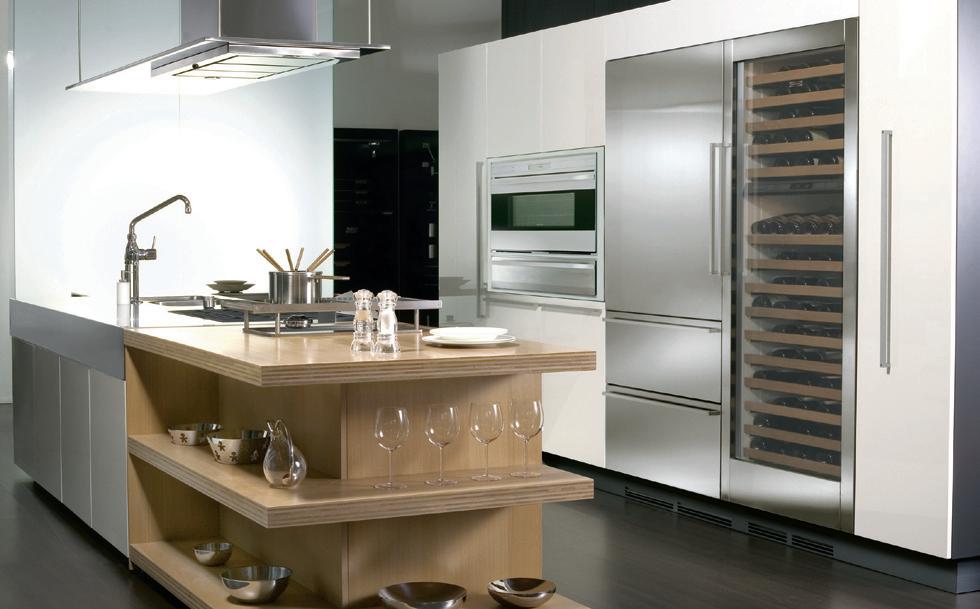
www.winningappliances.com.au
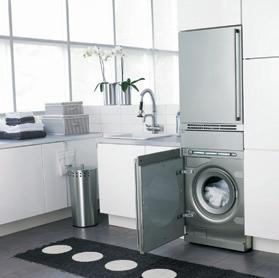
A SOft tOuch
A gentle touch is all it takes to open drawers and pantries with the Grass Sensomatic Opening System from häfele, the newest addition to the Grass Nova Pro range of drawer systems. Softly press the front of the drawer, and the touch-sensitive device is activated. the electro-mechanical system is a study in functional design, combining electronic automatic opening with a mechanical soft closing system, eliminating the need for handles. Giving you the opportunity for smooth drawer fronts, the Sensomatic Opening System brings clean lines and elegance of form into the home.
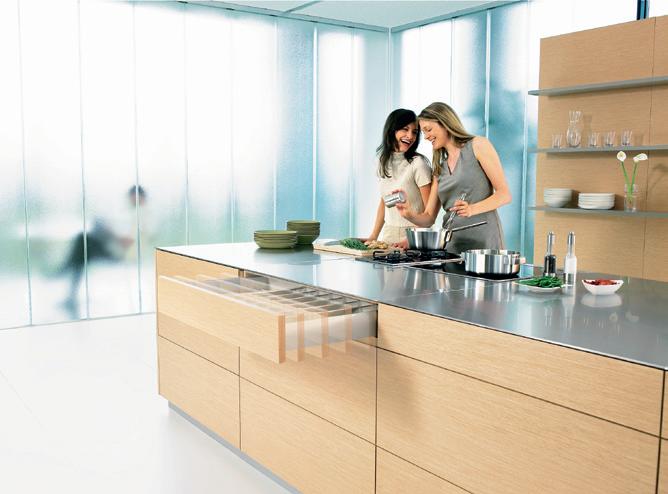
Häfele 1300 659 728
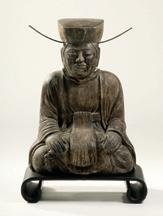


info@hafele.com.au hafele.com
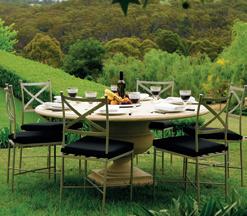

habitus | Issue 01 sponsored
170
Grass Sensomatic Opening System
CDA Centre 513–515 South Dowling Street, Surry Hills, Ph: 8353 3888 Dural 658 Old Northern Road, Dural, Ph: 9651 7807 www.yardware.com.au HAB7_Yardware.indd 1 25/1/10 4:46:42 PM
Minimal yet gentle, the self-designed home of architect Rene Tan combines hard edges and soft proportions. chu Lik Ren visited and found an extension of the architect’s explorations of pure form.

SonAtA in white
171 director’s cut habitus 07
Text Chu Lik Ren
Photography Albert Lim
watten house — singapore
RT+Q ARchiTecTs
director’s cut
watten house — singapore

RT+Q ARchiTecTs
As the designer of numerous modernist white houses in Singapore over the last two decades, Rene tan’s vision has been remarkably consistent and singular. he has always maintained that architecture is a plastic art, and that he sees the house as “a formal object, sculptural in mass, malleable in form, plastic in body and abstract in shape”. t hey are like the hermetic machines for living in, as envisioned by Le Corbusier, set apart from the landscape, hygienic, well-proportioned and often serenely beautiful. t he lines are clean and crisp; the wall planes are juxtaposed with timber louvres to create the primary means of visual articulation in highly-controlled compositions. hence, the prospect of Rene designing his own house is an intriguing one. h is previous dwelling had been a sensitively executed adaptive re-use of a conserved shophouse, with limited scope for the kind of architecture he is disposed to. But on a newly acquired piece of 6 x 35 metre terrace lot, Rene was finally able to indulge in serving the clients he knows best: his wife, woei woei, his daughter, Lara, and himself.
t he result is a terrace house that is given a refreshing twist (pun intended), with a greater degree of plastic panache than his past work. walls are again the focus of the design. But this time they tear away from the common party walls on both sides, as if wriggling against the rectilinear boundaries to form an enclosure in the shape of a boomerang on plan. t heir rooflevel manoeuvre allows light and air to puncture down to lower levels of the house along one of its longer sides, and gives it the independent look of a detached house from the front.
“ we wanted to re-think the usual way of bringing in light and air through a central courtyard or air-well,” Rene explains, referring to the traditional shophouses of Singapore. i n a hot and humid climate, the practical needs of air movement and shade cannot be overemphasised, especially within the narrow confines of a terrace house. t he pried-away walls maximise air-flow and also allow an 11 metre-long lap pool to be inserted on one side of the plot’s length, enjoying an open-tosky connection. t he living areas overlook the pool at practically the same level, inviting one to dip one’s feet into the water. At the back, the detached wall offers the opportunity for an open garden right beside the second-storey master bedroom. o ne can think of this as a three-level arrangement of stacked boxes penetrated with vertical light shafts at strategic places, bouncing off the face of water and greenery. As a result, much of the house is well lit during the day, and the occupants are always consciously attuned to the outdoors.
not all of this aerial openness would be evident to the visitor coming to the house at
172 habitusliving.com
habitus 07
01 the spiral stair looks down to the pool below. 02 A façade inspired by the minimalist composition of Mondrian.
03 the jointless, monochromatic world of surfaces and planes, light and shadow.
02
04 Rene tan at play.
the ground floor, but on shelves in the living room, a series of white models of the house is displayed. t hey show the evolution of the house design as a complete and tautly conceived object and a study in pure sculpture. o ne would see how the ceiling dips ever so slightly from the front porch to the ‘hearth’ and then tapers upwards again towards the back, mirroring the roof profile above. t here are models of Rene’s other works here, all of them in white, and he refers to them collectively as his ‘abstract tropical’ approach to architecture in the tropics.
i n keeping with the emphasis of form over other means of tactile expressions, the house is finished entirely in white. t his is in stark contrast to his previous Moorishinspired shophouse which he renovated about seven years ago, where colours and liveliness have been the dominant mood. it is perhaps an indication of Rene’s evolving taste in the design of his most personal spaces, but it is also a statement of his consolidating vision. “ t he whiteness was intentional,” Rene says, “as its neutrality reveals every aspect and detail
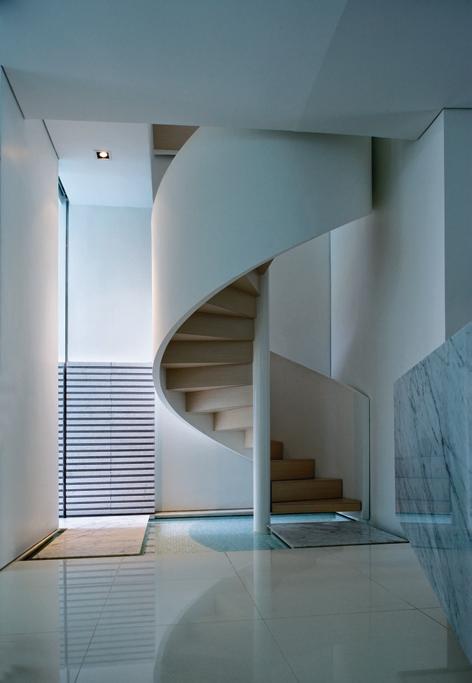

173
03 04
Their roof-level manoeuvre allows light and air to puncture down to lower levels
director’s cut
watten house — singapore
RT+Q ARchiTecTs
of the form, as there were no distractions of other materials, cladding or colour.” t hese sentiments can also be a reflection of Rene’s opposition to architecture’s convergence with the “decorative or applied arts” that is now the rage with the trendiest architects.
hence the watten house is almost painfully devoid of ostentatious display. t he roof and ceilings morph seamlessly into walls and the sliding doors and partitions of wardrobes are indistinguishable from solid walls. Details and joins are down-played such that doors are opened via recessed ledges instead of turning knobs and handles. t here is hardly any visual noise on show, as if Rene, who is also an accomplished pianist, has teased out the gentlest sonata from the keyboards of the grand piano occupying pride of place in the living room. “ t here is a difference,” Rene asserts, “between ‘applied’ detailing and ‘construction’ detailing. to me, there is abundant construction detailing in this house, with grooves and gaps that highlight forms and shapes. t hey demand a very precise quality of workmanship.” o ne feature that did survive a transmigration of sorts from the previous to present dwelling is the multi-storey book-case, a cantilevered grid of shelves that continues from the ground to the attic level. But while the previous incarnation has been multi-coloured and pivoted in parts, its present form is more a beat in the rhythm than the discordant high note it had been.
t here is, throughout the house, a cosiness derived not from the placement of antique sculptures or upholstered cushions, but from humane dimensions that do not belittle the man. t he house is domestically scaled and shorn of double-volume antics – 3,500mm from first to second storey slab and 3,200mm from second to attic. At the lowest level, the ceiling at the dining area is only 2,400mm high, but the house does not feel oppressive because of its openness. i n
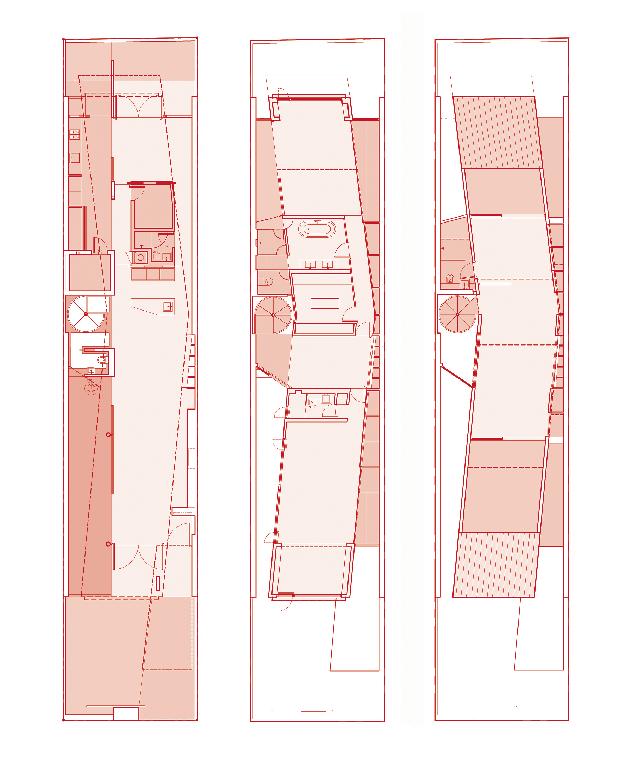
174 habitusliving.com
habitus 07
the attic, the sliding
05 05
“There is abundant construction detailing... with grooves and gaps that highlight forms and shapes.” –Rene
06 the
1 Garden 2 Car Porch 3 Lap Pool 4 Living 5 Dining 6 Kitchen 7 Powder Room 8 Utility Room 9 Service Area 10 Maid’s Room 11 Guest Room 12 Kid’s Room 13 Family Room 14 Master Wardrobe 15 Master Bath 16 Light Court 17 Master Bedroom 18 Storage 19 Roof Deck 20 Study Room 21 Fourth Bedroom 1 2 3 4 5 6 7 8 9 10 11 12 13 14 15 16 17 18 18 18 18 19 20 21 19 1
Ground floor plan (left), first floor plan (centre), attic plan (right).
pool, wedged between the party wall and the priedaway wall.

director’s cut
watten house — singapore
doors to the outside terrace are 1,800mm high and the ceiling is no higher than 2,800mm at the peak. t hese dimensions are modest by Singapore standards and they are not the kind of data a visitor to the house would register rationally. But these are spatially the scale more commonly associated with old english or Japanese houses found in the traditional villages, where one is always comfortably put up with a beer or sake. So, in spite of the wintry whiteness, a sense of homeliness pervades. w here floor area comes at a premium, space is saved through the use of a spiral staircase instead of straighter flights, although one suspects that Rene’s fondness for the spiral stair has as much to do with its sculptural potential. t he spiral stair here is doubleheight, connecting the ground to the third level in a straight ascend. Coiled around a single steel post, it is wrapped in the thinnest ribbon of gypsum plaster baluster. o n plan, the naturally-ventilated toilets are located away from the front and back façades, something made possible only by the detached side wall. t his frees the front and rear façades from the tyranny of blank walls usually associated with toilets, and the design for the front façade capitalises on this by featuring the maximum transparency of full-height glass panels. Fittingly, the framing of the glass panes here resemble a painting by Mondrian, the father of abstract art. Rene’s preoccupations are similar: “ we design around the issues of composition, proportion, hierarchy and balance,” he says, “in the hope that the work comes out spatially all right and interesting.”
A Rchi T ec T
Rt+Q Architects
Design Te A m
Rene tan, t K Quek, Jeslyn Ang
Bui LDe R
Join-Aim
c& s e nginee R
e3 Consulting engineers
QuA n T i T y suRveyoR
PQS Consultants
cABine TRy c onsuLTA n T
Fortune wood Products & Construction
L A n D sc A pe c onsuLTA n T
nyee Phoe Flower Garden
RT+Q Architects
(65) 6221 1366 rtnq.com
FuR ni T uR e Piano from Kawai, kawai.net.au. Other furniture owners’ existing. L igh T ing
All lighting from Million Lighting Company, millionlighting.com.sg.
Finishes
Countertop in Dry Kitchen clad in Volakas Marble. Stone in Master Bathroom shower, and used for Water Feature is also Volakas Marble, and on side wall in Pool is granite. Tiles in Pool are Bissaza Mosaic, bissaza.com.
Fi X e D & Fi TT e D
Appliances in Dry Kitchen, including oven, microwave, and coffee maker is Ariston Brand, aristonbrand.com. Fittings throughout a mixture of Geberit, geberit.com, and Rigel, rigel. com.sg.
07 the shower cubicle in the Master Bath opens to the sky beyond.

08
Side elevation (top) and front elevation (below).
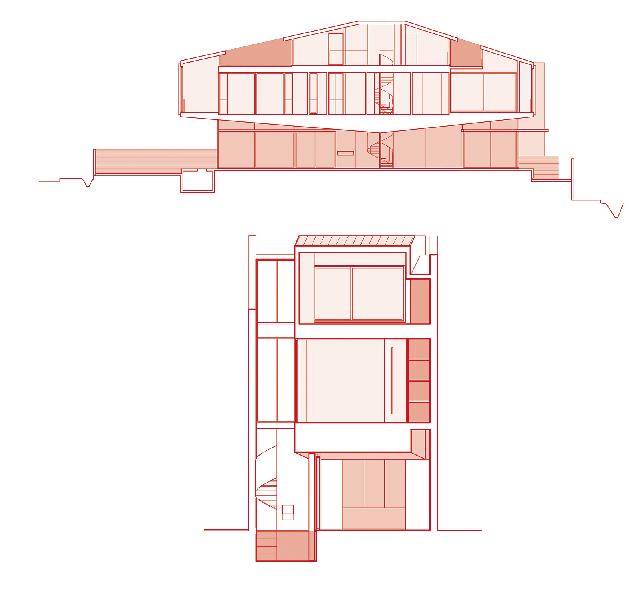
176 habitusliving.com
habitus 07
RT+Q ARchiTecTs
07 08
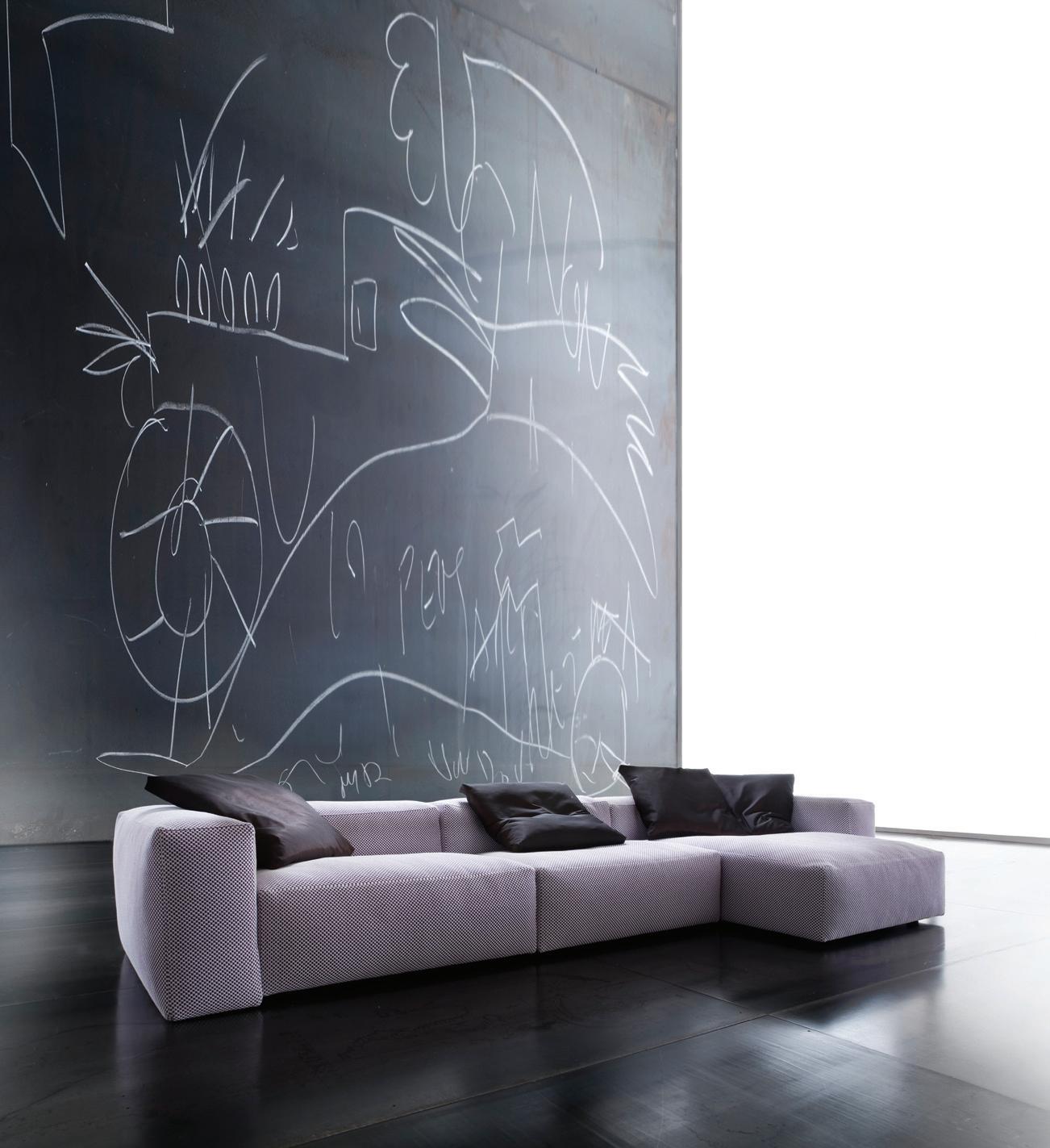
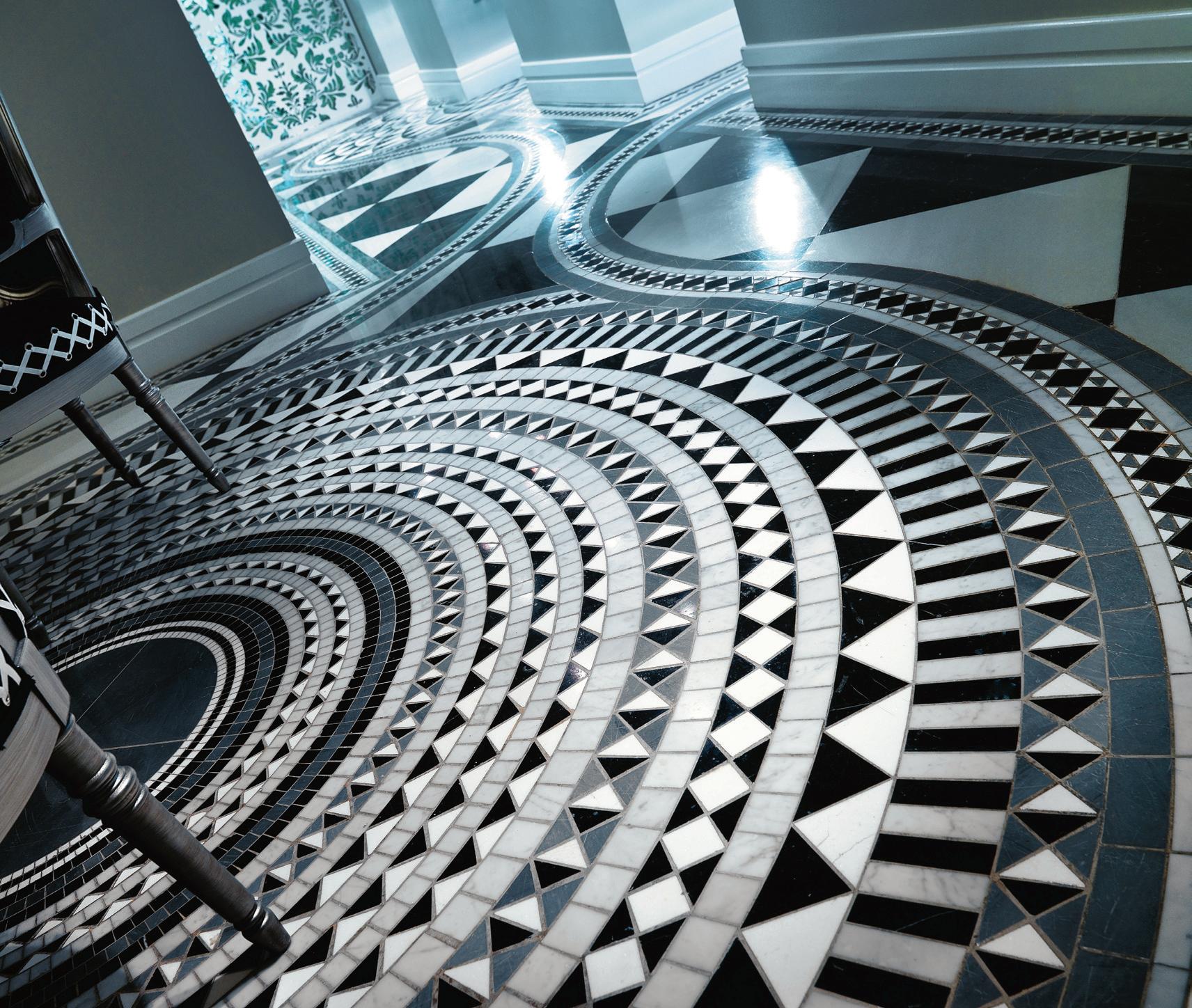










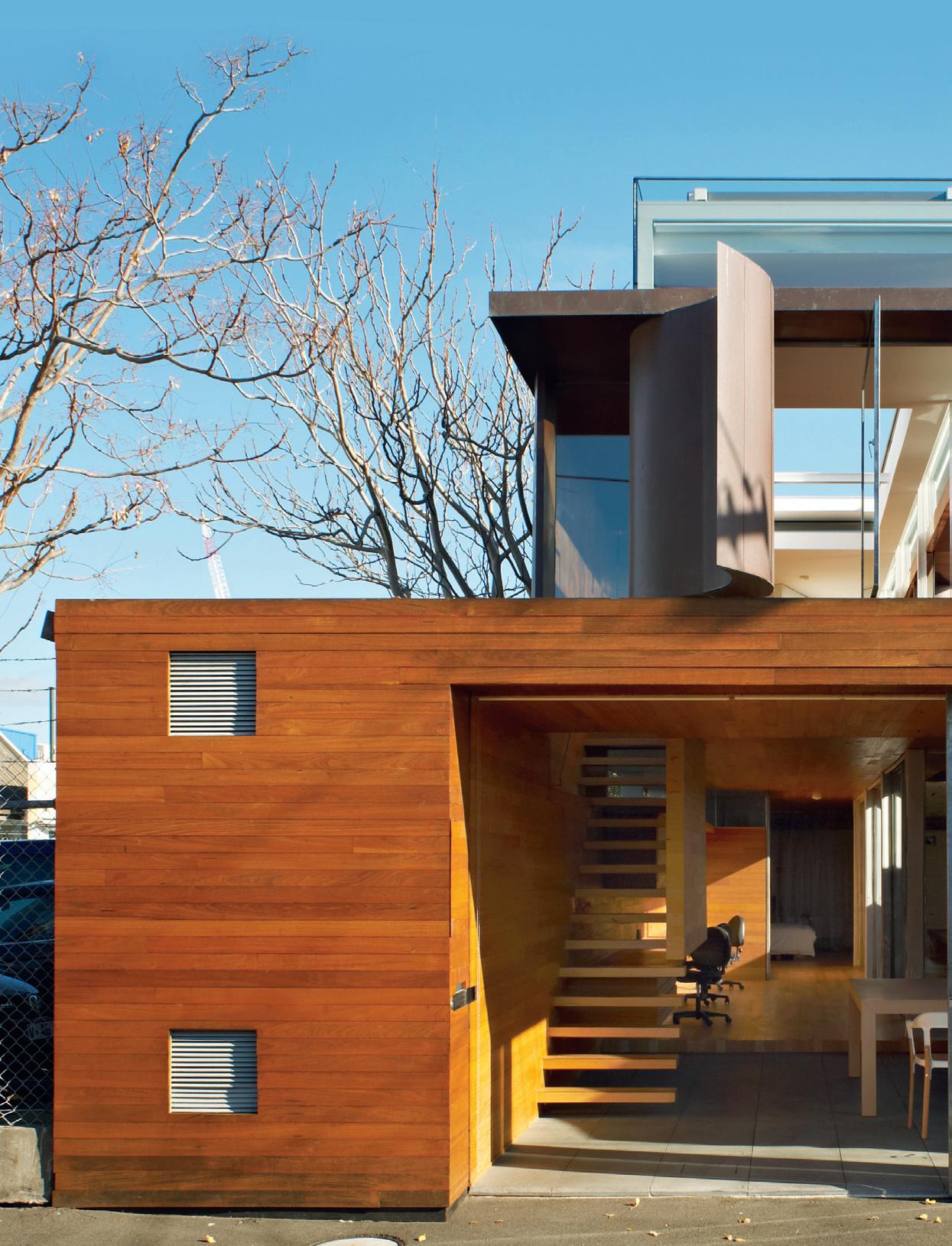
180
habitus 07
habitusliving.com
director’s cut
south yarra house — VIC, australia
Photography Earl Carter & James Geer
Text Stephen Crafti
DAVID LUCK ARCHITECTURE
Cloud Chamber
Inspired by the ideas of British architect Christopher Alexander, Melbourne architect David Luck has created a flexible space in which to live and work. Stephen Crafti discovers a house that blurs the boundaries between architecture and sculpture.
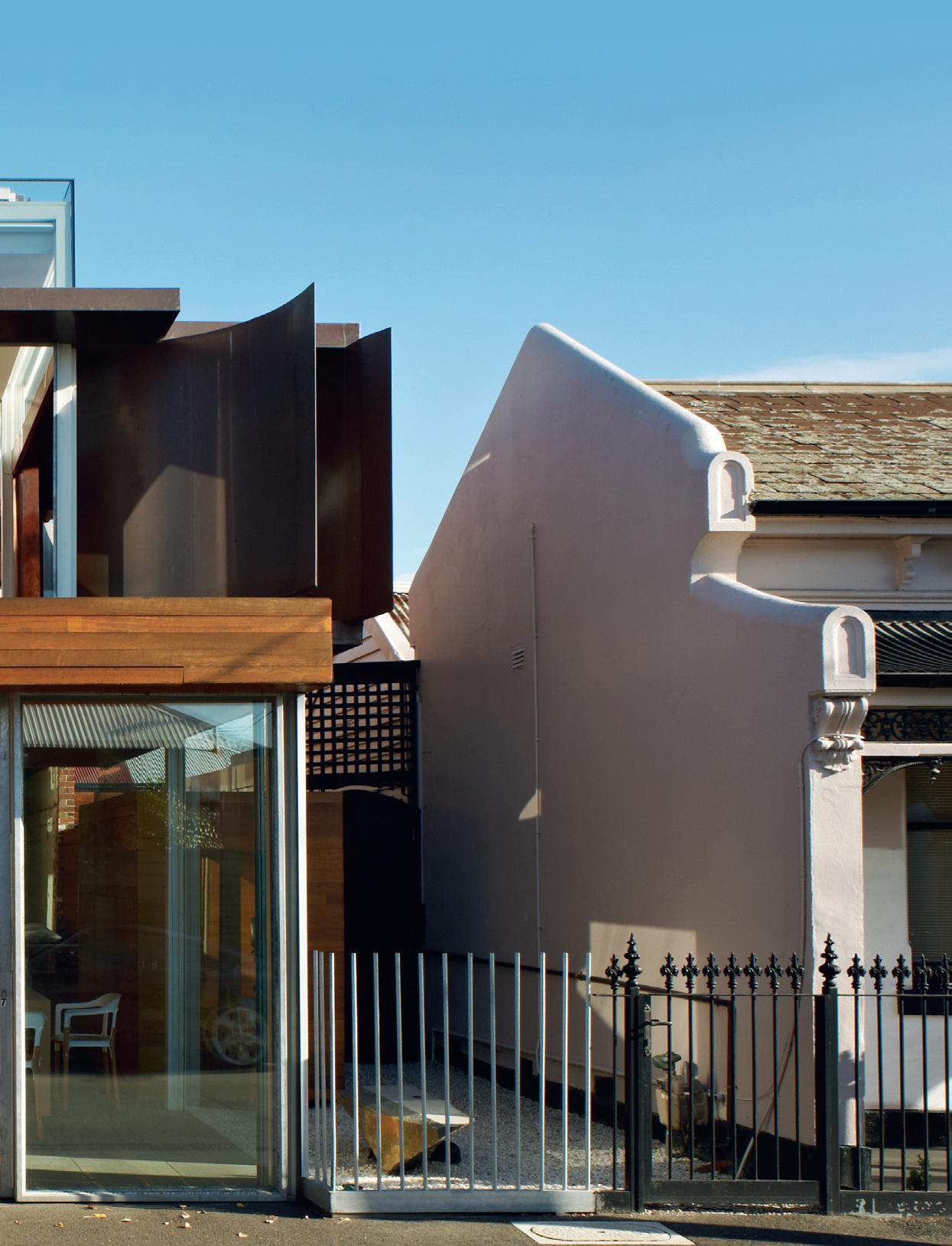
181
director’s cut
south yarra house — VIC, australia
01
The bold copper and timber façade contrasts with the slate roof next door.
02 Meeting area becomes a garage after hours.
03
The pleasures of the outdoors are enjoyed when the roof is opened up to the sky.
04
A large pivotal door/ wall separates the main bedroom from the living areas.
DAVID LUCK ARCHITECTURE
Architect David Luck refers to his home/ office in South Yarra, Melbourne as a ‘New Age Terrace’. While the dimensions of the inner-city site (5.5m x 21m) are comparable to neighbouring Victorian cottages, this house is considerably more contemporary. “It even took us a few months to adjust to these spaces. It required a different way of living,” says David, who shares the house with his partner, Robynne Kinnane.
There must have been considerable adjustment, particularly after living and working from an original 70m 2 stable at the rear of the property that they shared with staff over two years while finishing the home/office – an arrangement that would challenge most relationships. “I built most of the house, with the exception of sub-contracting the electricity and plumbing,” says David, who admits that communicating his vision for an experimental house wasn’t always easy with a partner highly versed in architectural concepts. “Robynne initially doubted the use of copper. Some see it as having an aged patina. Others think it just needs a good wipe,” adds David.
Unlike the traditional Victorian typology, David’s South Yarra house is filled with northern light, and although there is a staircase on one side, there are only a couple of walls on both levels. The office on the ground floor, for example, features a guest bedroom (originally part of the stable) that’s open to the office. And although the office is defined by built-in timber shelves and a desk, this area ‘bleeds’ into the carport, finished in blue stone.
“At night, the car is driven inside. During the day, it’s parked in the street,” says David, who uses the ‘carport’ for client meetings, as well as private dining. “Spatially, it’s an experiment,” he says. “The spaces, both in the home and office, are flexible.”

While David and Robynne divide their time between a weekender at Red Hill and their inner city home/office, they are still fine-tuning the way they use the house. “We try and leave the office by six pm, but Robynne is often working downstairs until eight,” says David. And when the two finally leave work behind, their use of space upstairs is rarely static.
The main bedroom is housed in one of two cantilevered alcoves, the other is used as a place to watch television, read, or alternatively as an additional bedroom for guests. Likewise, built-in seating in the open plan space can be used for dining or simply a place to watch the rainfall against the windows. Architect Christopher Alexander, an English professor, is one of David’s design gurus, and much of the spatial arrangement finds its origins in Alexander’s ideas. “He mentioned in one of his books that all we need in a house is one large space, with a couple of smaller service pods,” says David.
One of the most striking features of the living space is a retractable roof, measuring

182
habitus 07
habitusliving.com
02 03
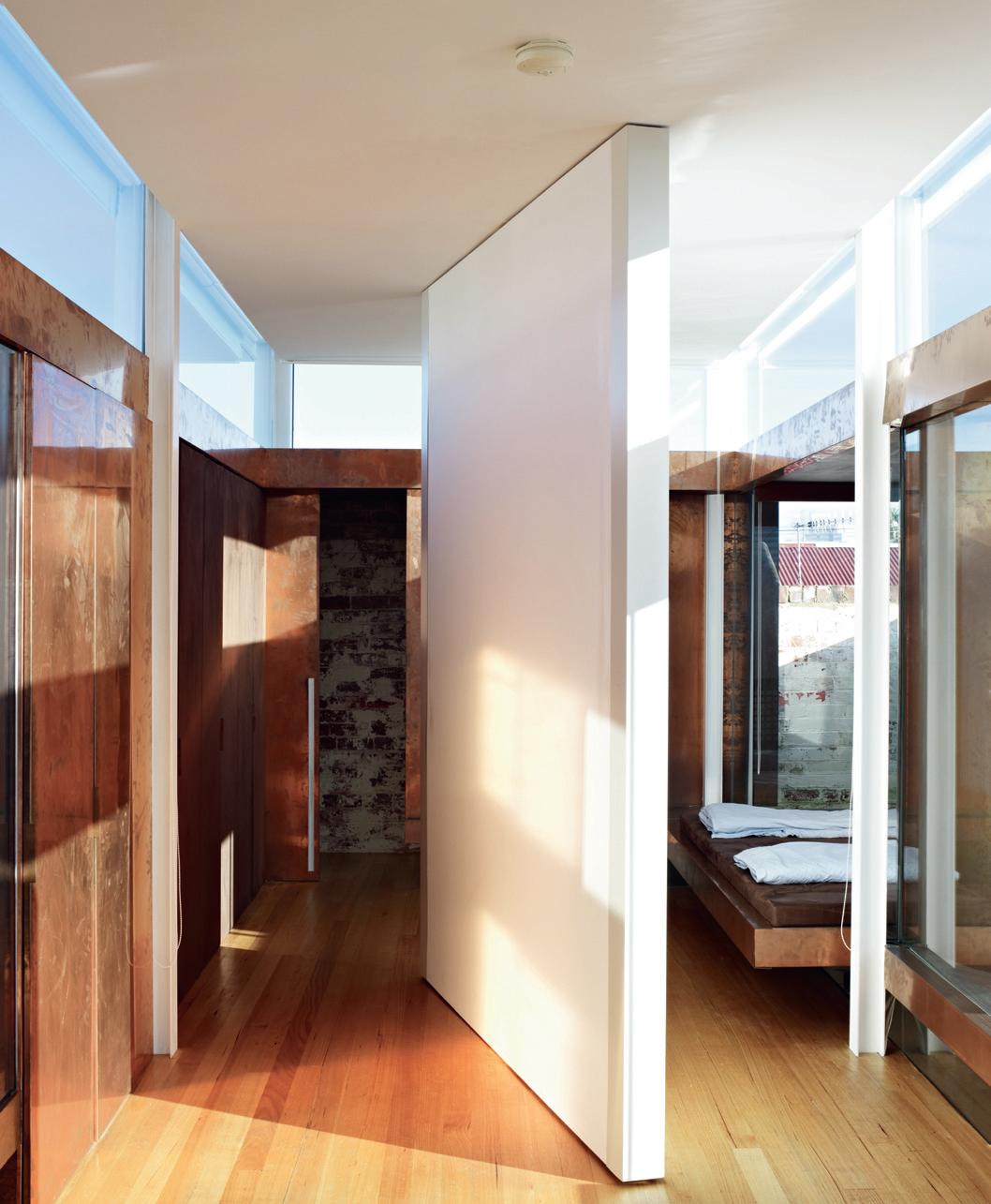
183
“All we need in a house is one large space, with a couple of smaller service pods.”
04
–DAVID
director’s cut south yarra house — VIC, australia
DAVID LUCK ARCHITECTURE

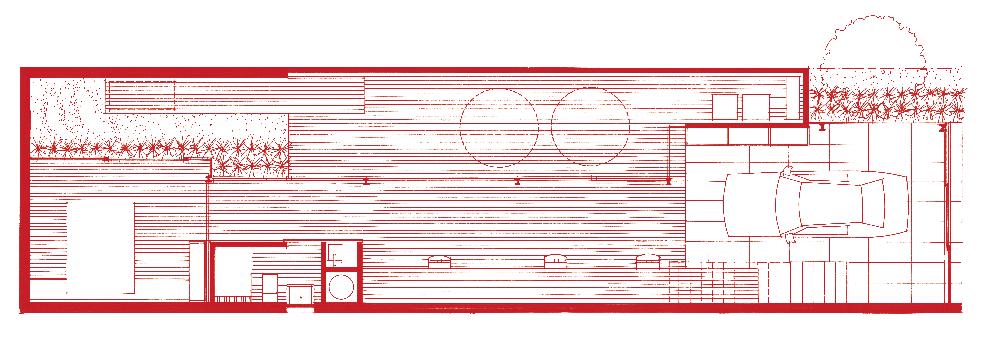
184 habitus 07 habitusliving.com
“I’m interested in creating flexible spaces, rather than houses filled with prescriptive rooms.”
06
–DAVID
1 Sliding Glass Doors 2 Garage / Meeting 3 Stair 4 Workstations 5 Bathroom 6 Shower 7 Back Room 8 Wardrobe 9 Outside Bath 10 Bench 11 Timber Decking 12 Underground Water Tanks 13 Bin Store 14 Cabinet 15 Garden 16 Stair 17 Rotating Shelf 18 Bench 19 Sinks 20 Cabinet 21 Cooktop 22 Refrigerator 23 Washing Machine 24 Wardrobe 25 WC 26 Shower 27 Void 28 Sleeping Platform 29 Pivot Wall 30 Window Seat 31 Media Platform 32 Front Deck 1 2 3 14 4 12 11 5 6 10 9 7 8 13 15 32 31 16 17 30 30 30 29 18 19 21 22 23 24 25 26 27 28 20
05
Ground floor plan (top) and first floor plan (below).
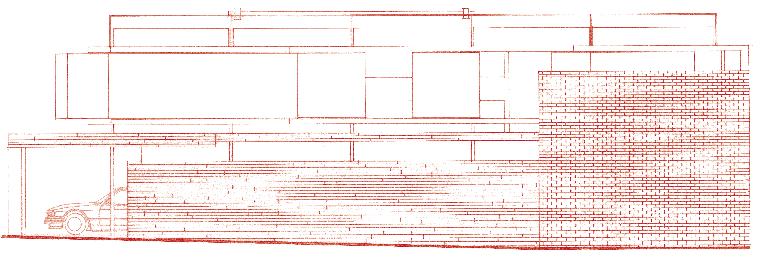
06
Northern elevation.
07
Built-in furniture allows for fluid, open spaces.
approximately 15 metres (long) x 3 metres (wide). Operated electronically, the plaster roof can be completely opened to the sky. “We don’t have any outdoor space on this floor (apart from a small deck above the carport). When it’s open, you feel like you’re sitting on a verandah,” says David.
David describes the building as being conceived in three parts. The first part is the timber clad ‘exploded’ box on the ground floor, with a timber-lined bathroom and kitchenette, the second is the curvaceous copper cladding, both interior and exterior, and the third is the copper used extensively for the kitchen joinery and screens.
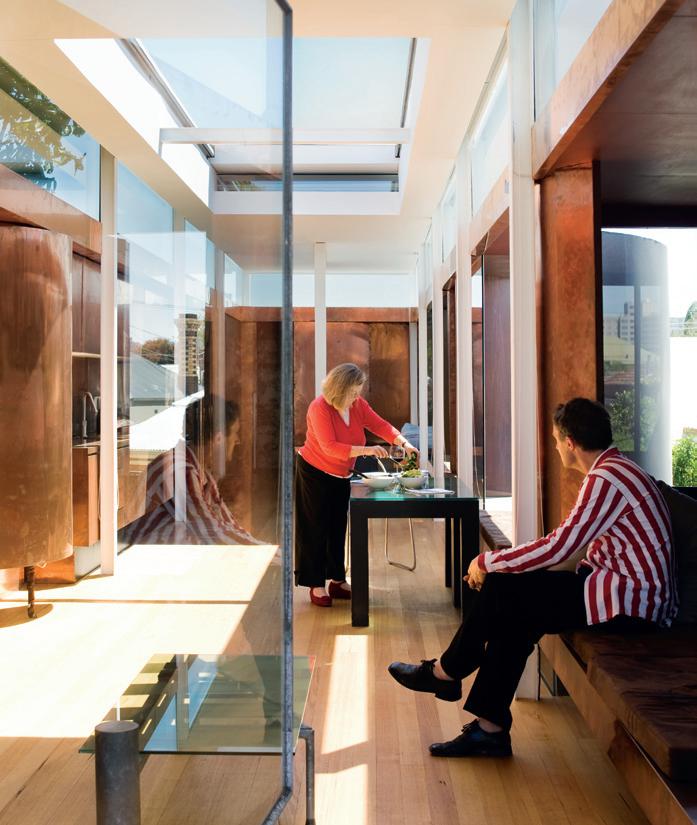
David points out how the copper cladding wraps around and within the house. “I refer to this as a contemporary frieze,” he says. David was inspired by the work of American minimalist sculptor Richard Serra, and he uses the screens to define spaces, as well as creating privacy, both within and from the street. “People think the copper moves in the wind, but it’s fixed,” he says.
The wall adjoining the ‘floating’ timber staircase is also lined in copper. “The roof of the neighbouring house is slate. It ages in a similar way to copper,” says David, who appreciates the difference between the copper’s internal and external ageing process. On the outside, it’s weathered by the elements, and inside, the human touch creates a ‘painterly’ effect, with finger marks appearing like spontaneous brush strokes.
Initially Robynne scrubbed the copper cupboards and benches. However, with time, she’s left the copper to age and reveal its own character. “Occasionally, she’ll clean the benches,” says David, who has become as relaxed about the fine quartz gravel in the Japanese style courtyard. “It eventually finds its own resting point,” he says.
185
06 07

08
Copper panels create privacy as well as moderating the northern light.

09
The original brickwork of the warehouse is integrated into David Luck’s design.
director’s cut
south yarra house — VIC, australia
“I’m interested in creating flexible spaces, rather than houses filled with prescriptive rooms. Here you can control the level of privacy or change the feel of a space,” says David. His home and office certainly achieves this, and can also be interpreted as a fine piece of sculpture, similar to the works of Sierra that inspired him.
A RCHITECT
David Luck Architecture STRUCTURAL EngInEER
Mark Hodkinson BUILDER
David Luck
ToTAL FL ooR A REA
150m2
David Luck Architecture david.luck@bigpond.com (61 3) 9867 7509
FUR n ITURE
Furniture throughout is in-built.
LIgHTI ng
Lighting throughout is concealed low-energy minifluoro-slims from Sylvania Lighting, sla.net.au.
FI n ISHES
Blinds from MDB Interiors, mdbinteriors.com.au. Timber on ground floor walls, ceilings and floors is 86mm x 19mm secret-nailed, tongue and grooved Victorian Ash timber flooring from Home Timber and Hardware, homehardware.com.
au. Stone to garage/boardroom floor is 40mm local Bluestone slabs from Victorian Bluestone Quarries, vicbluestone.com.
Copper sheet cladding on upper level walls fixed to curved steel studwork, bought as wholesale coils. Roof is steel framed with plasterboard lining.
FIXED & FITTED
Benchtop in kitchen is moulded and welded copper sheet on fibreglass backing. Oven and cooktop from Miele, miele.com.au. Rangehood from Qasair, qasair.com.
au. Taps in kitchen are Jessi from Abey, abey.com.au, in bathroom are Fontana from Rogerseller, rogerseller.com.
au. Showerheads from Art Haus World, arthausworld. com. Basins and WC are Chipperfield from Reece, reece.com.au. Bath is white Hikari from The Japanese Bath Company, japanesebath.com.
au. Doors cupboard doors are copper veneered melamine, supplied by Sky Kitchens, (61 3) 9387 0650. Wardrobe doors are fabric-covered melamine, fabric from mdb interiors, mdbinteriors.com.au. Pods media and bedroom pods are fabric-covered MDF curved wall panels.
FRESH CUISINE MACHINES
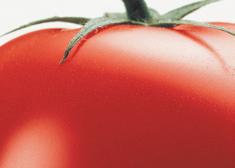
Bertazzoni has new ingredients for your kitchen. Eight bold, exuberant colours - red, white, green, black, cream, blue, burgundy and yellow Italy’s tradition of fine design and culinary culture combined.
For the full range of colours and options phone 1300 727 421 or visit ww s ampfordixl com au
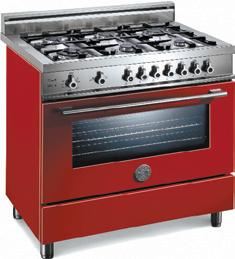
187 habitus 07
Rosso/ Red
Bert_Habitus_179x53 1.0:179x53 24/9/09 7:21 AM Page 1 Untitled-6 1 3/12/09 9:42:58 AM 09
WIN A DESIGN PACKAGE
WORTH OVER $30,000!
For your chance to live in design, join the first online community for the Design Hunter by entering your details at habitusliving.com/signup
R
Artemide Cadmo Floor Lamp by Karim Rashid Arthur G Box Ottoman Bang & Olufsen BeoCom 4 Cordless Phone Corporate Culture Buchstabler Book Tower by Tom Fisher for Nils Holger Moormann Designer Rugs Handmade rug from Bella Vista Range Hub Furniture Kaeko Coffee Table by Rafic Farah for Objekto Interstudio Wishbone Coat Rack by Busk & Hertzog Jardan Iko Iko Chair by Nick Garnham Living Edge Font Clock by Sebastian Wrong for Established & Sons Siekaup Sinus Chair by Adolf & Schropfer for COR Space Furniture Carlo Mollino Ardea Armchair Vintec 2-door Wine Cabinet
HUNTER
When architect Boonlert Hemvijitraphan created a weekend house for Thai actress acharapan paiboonsuvan he transformed two old timber houses into a pavilion in two parts. tonkao panin discovers a house that has grown with its surrounding environment.
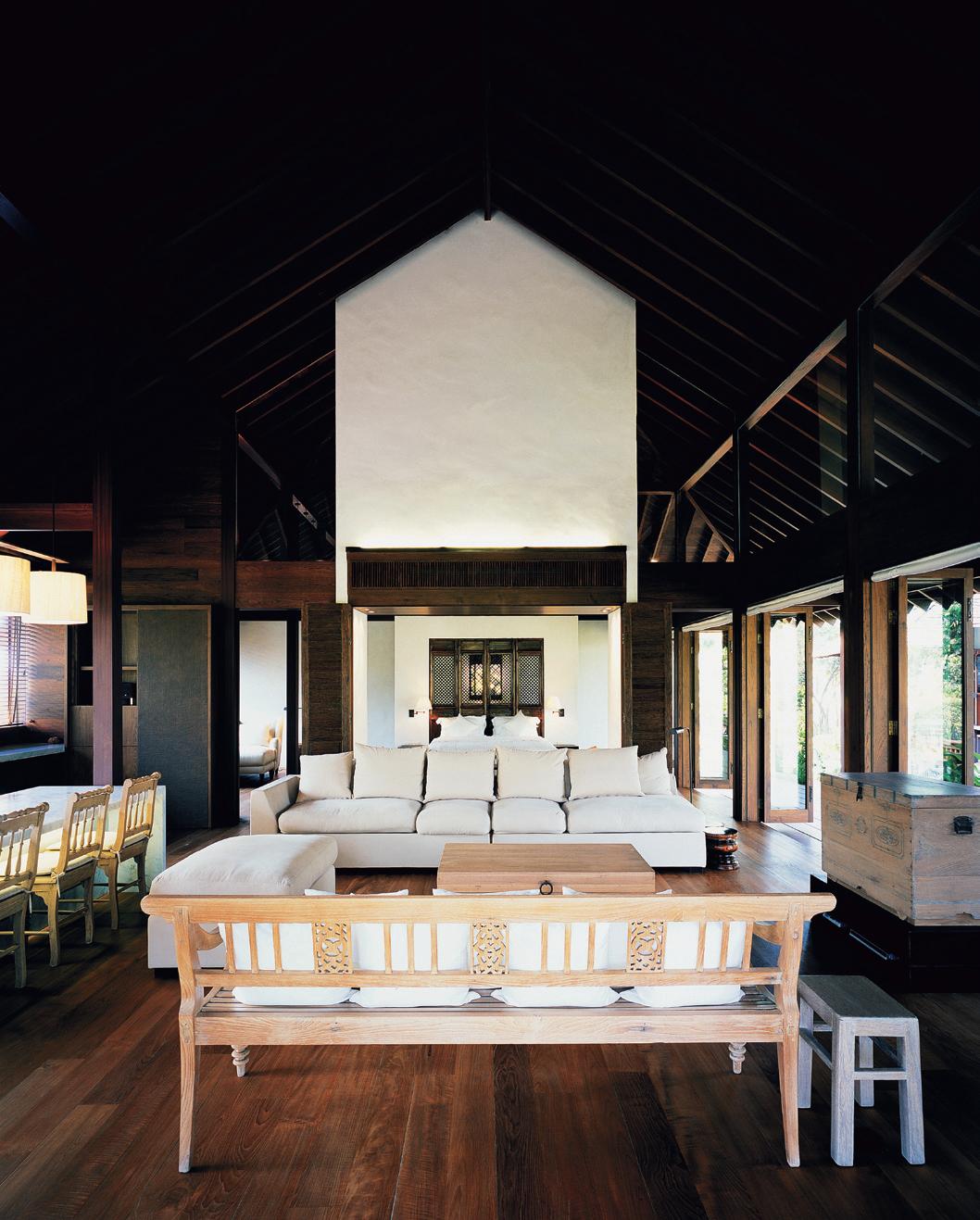
A NeW Old HOuse
189 scenario habitus 07
Text Tonkao
Photography Pirak Anurakyawachon
Panin
Boonlert HemvijitrapHan acharapan house — BanGKoK, thailand
home movie
Bangkok, the city of ten million, is at once an electrifying metropolis and a chaotic melting pot. With overwhelming traffic, living and working within the city can be a restless challenge. during the past 10 years, retreat from Bangkok’s city center to other surrounding towns has gradually increased, and Nakornchaisri, a town south of Bangkok known for its river, abundant rice fields and farms, is considered one such destination.
Within the labyrinthine road network of Nakornchaisri, we encounter countless villages and gated communities among the fields and farms. l ocated in one of the communities is a welcoming house belonging to Acharapan Paiboonsuvan. Conceived as a pavilion rather than a house in a traditional sense, it is composed of two separate living quarters, with two bedrooms and two baths, a pantry and living areas. The two pavilions of 240m 2 form a casual relationship between all participating functions. each building is small but adequate, as the tranquil landscape of Nakornchaisri

190
habitus 07 habitusliving.com
The unassuming character of the house gives the impression of an old house waiting to welcome familiar faces.
–
acharapan house — BanGKoK, thailand Boonlert HemvijitrapHan
02
already offers a sense of retreat that is the main purpose of the place. The unassuming character of the house gives the impression of an old house waiting to welcome familiar faces.
Acharapan Paiboonsuvan is a household name in Thailand. she is a well-known actress who has been active in the Thai entertainment world for many decades. Constantly appearing in movies, television shows and commercials, Acharapan has created a strong public persona of an independent and determined yet funny character. she has become a symbol for happy and successful working women. Today, Acharapan’s involvement in the entertainment business is only a small part of her daily endeavors, and she takes part in other public services and projects. Her time is thus divided between the many differing activities she is involved with. she owns a house in Bangkok, and this place in Nakornchaisri is designed to be a sanctuary she returns to at the end of her working week. Not only for her private use and meditation, the house is also considered a place for receiving guests who seek retreat.
Originally, Acharapan bought two old wooden houses to be placed on to her leafy land, and had wanted only to re-decorate. Yet the old houses were highly compartmentalised, and the spatial configuration offered neither freedom of movement nor connection to the surrounding landscape. After lengthy discussions with the architect, Boonlert Hemvijitraphan, both realised that the problem could not be solved merely through interior reorganisation. They decided to dismantle the old houses, keeping certain materials and elements and donated the rest to the nearby temples. A new, old house was thus born.

The house’s expression and the way it rests within the landscape, are reminiscent of a little cabin in the woods. It gives the inhabitants a sense of connection, and of being one with the surrounding landscape, yet at the same time provides a sense of security and comfort. The different types of architectural enclosures that envelope the spaces are protective, and give each area a sense of functional particularity, while lending the whole configuration a sense of localised uniformity. In respect to the scale 01
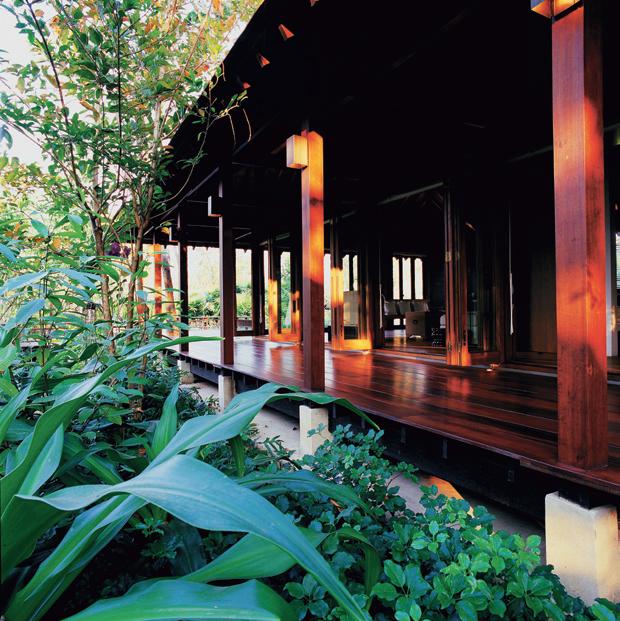
191
02
looking through the main building’s central space towards the bedroom.
03
The structure is surrounded by leafy gardens and sits low within the vegetation.
04
The shaded verandah envelopes the main building.
03 04
Acharapan, seen through the connection doors between living space and her bedroom.
home movie
acharapan house — BanGKoK, thailand
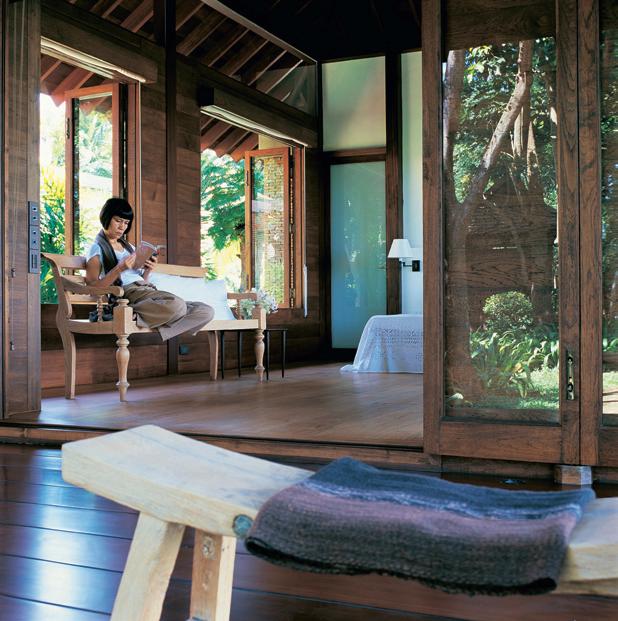 Boonlert HemvijitrapHan
Boonlert HemvijitrapHan
of the surrounding landscape, the architect divided the required area into two living quarters, separated by gardens. Re-joined by verandahs, the two buildings seem like sisters playing hide-and-seek among the surrounding trees. They may fully appear at certain moments, and then slowly recede into the shade of the trees. By dividing the house into two parts, each can be considered a personal sanctuary, but the proximity of all spaces and their interconnectedness makes one feel joined as a part of a family and detached as an individual dweller.
The views from within, while widely opened, are never homogeneous and always framed to give the inhabitants different relationships with the landscape, which can be brought near, remain far, or left in between. For this reason, all domestic activities are never overshadowed by the presence of the surrounding landscape, which becomes a background for contemplation rather than an overbearing foreground that screams for attention. Working with the topography, the house is conceived with both horizontal and vertical stratification that give it a unique language. Not only in the way the exterior appears, but also in terms of how the interior functions are configured. The building and the
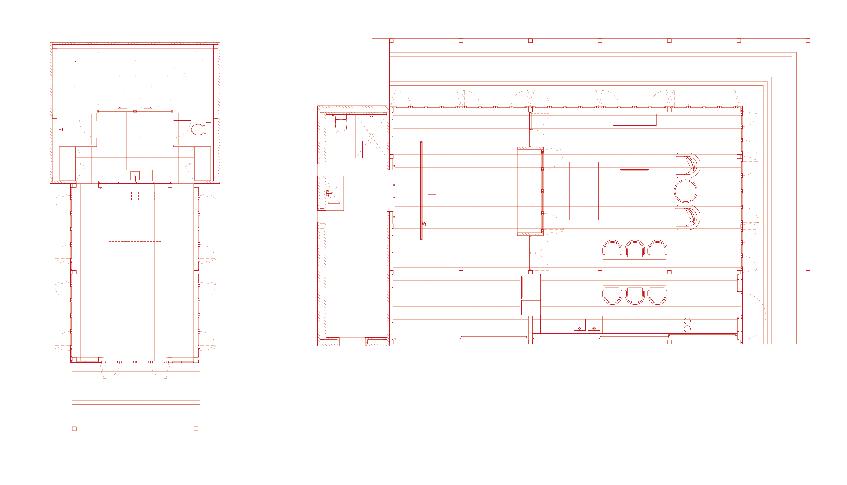
192
habitus 07 habitusliving.com
1 Terrace
2 Bedroom
3 Bathroom
4 Living Room
5 Dining
6 Kitchen
05 06 2 3 1 3 2 4 5 6 1

193 07
05 Bedroom of the adjacent unit, seem through the surrounding verandah.
06
Plans for both buildings.
07 Central space of the main building, which serves as living, dining and pantry.
home movie
acharapan house — BanGKoK, thailand
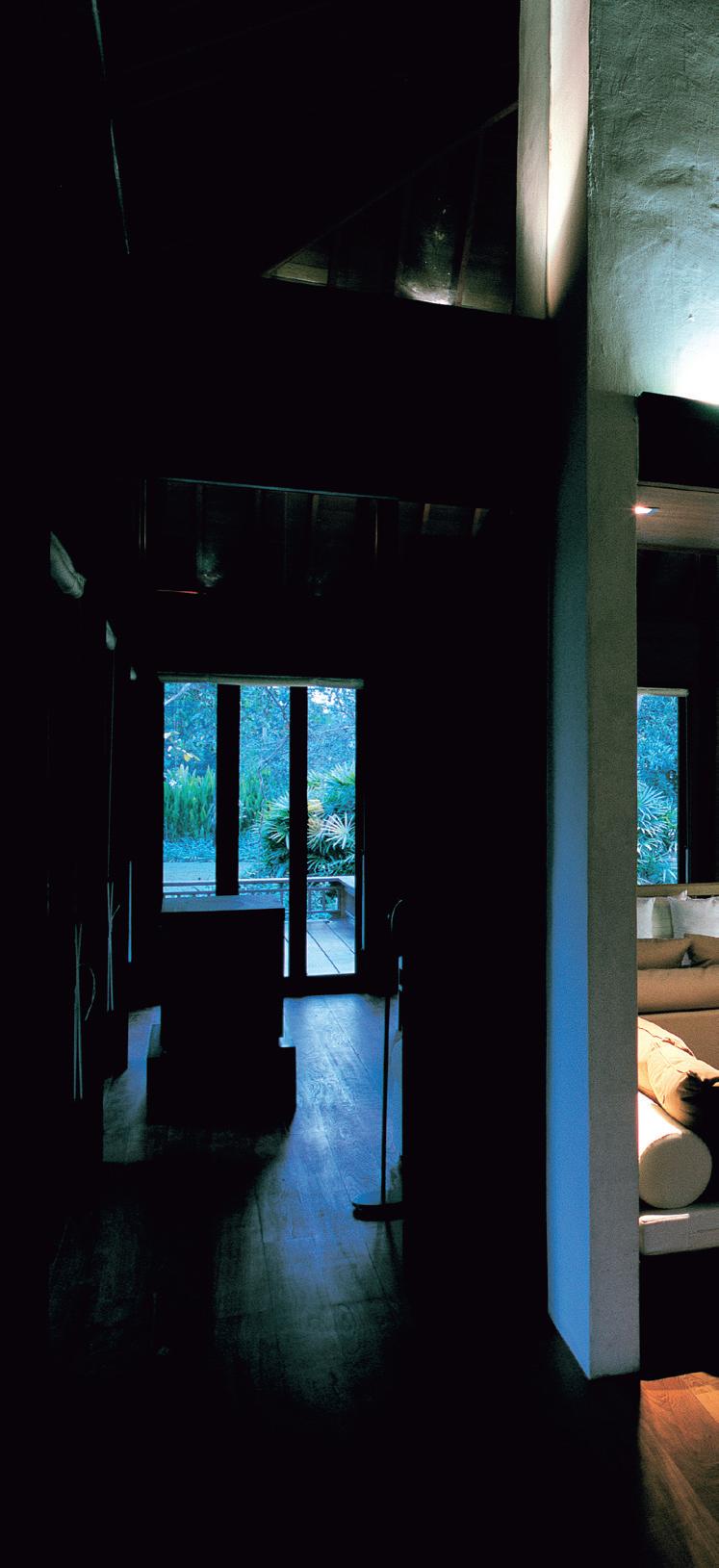
land simply become one. The house also offers a unique architectural language through its relationship with the surrounding trees. While the glass windows are de-materialised, the trees act as an enclosure, giving the house the sense of protection and privacy it needs. This ‘natural’ skin becomes both the barrier and the connective means through which one is related to the landscape.
entering the house, one feels assured by the familiar geometric space and warm wooden materials. Being open and free, much like a traditional Thai house, the sense of freedom is strong, as if the house is waiting to be animated by its inhabitants. Only when they are present does the house become alive and the transformations occur. It is both the vision and the determination of the architect to work the new architectural construct into the existing conditions of the site. It seems as if the house has always been there and has been roused by the growing trees around it. Instead of being inserted into an empty land, the house gives a sense of having been born along with all the natural elements around.
The uniqueness of its appearance also comes from the re-use of architectural elements and materials from the old houses, reassembled in a new way, with a new language. It is at once familiar and refreshingly new. Materials and elements, while localised and ‘old’, are configured and assembled with the language pertinent to current usages, giving the feel of something contemporary. It is a house conceived from a close connection between inner demands and outer context, creating a unified whole that belongs to both the owner and the place it is situated. Working with both old materials and new configuration gives Hemvijitraphan the freedom to craft, define and re-define every element that comes into play. This freedom reaches beyond the house’s materiality, extending to the spatial configuration of each particular setting.
The house is not an architectural revolution that offers a radical new language.
194
habitus 07
It gives the inhabitants a sense of connection, and of being one with the surrounding landscape.
–

home movie
It simply acts as a background for habits and rituals. In other words, it does not come alive by the way it looks, but by the way it operates within the surrounding landscape. everything reminds us of the geographic and climatic conditions of Bangkok. space, light and air – three elements that seem so readily familiar that we often forget – work together to create a setting that rightly belongs to both the inhabitants and the place it is located. life in the house is not overshadowed by extraneous features, nor is it diminished by the complete removal of its traces. The house is a performance that is allowed to grow within the sensible limit of its original life and the surrounding nature.

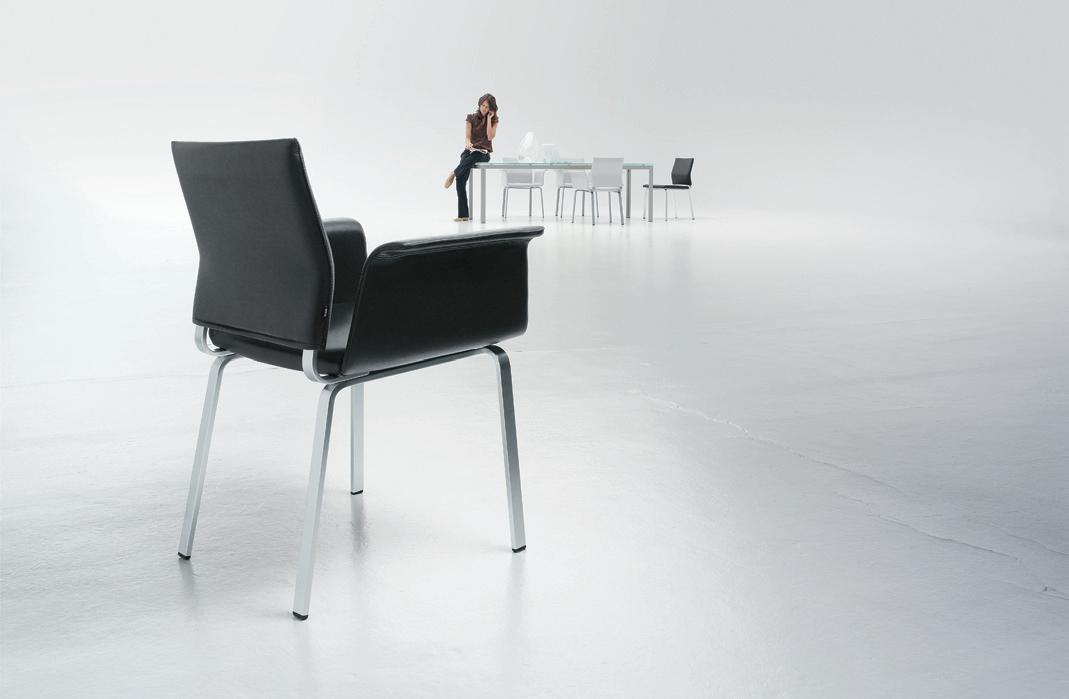
08
09
196 Made in Germany Siekaup: Australian + New Zealand agent Shop 1/360 Pacific Highway, Crows Nest NSW t (61 2) 9906 5472 e siekaup@bigpond.com
w siekaup.com.au
HAB07_Seikaup.indd 1 18/1/10 11:42:23 AM habitusliving.com
FINO table + chairs designed by Holger Janke
habitus 07
acharapan house — BanGKoK, thailand
Boonlert HemvijitrapHan
09
Boonlert Hemvijitraphan hem_boonlert@yahoo.com
With all doors opened, all spaces of the main building become interconnected.
Through the pond and surrounding garden.

Winning Appliances displays a complete selection of dishwashers, fridges, freezers, ovens, cooktops, rangehood, microwaves, washers, dryers, sinks, taps, coffee machines, water filters, water heaters, BBQs, waste disposers, wine cellars and more.

For Commercial Developers, Builders, Architects, Interior Designers and Kitchen Companies - Winning Appliances have an experienced, dedicated team servicing your requirements.

BrookvAle (02) 9938 4733 ‘tradewinds’ 10 – 18 orchard road crows nest (02) 9438 2611 113 Alexander street (cnr holterman street) newcAstle (02) 4926 3636 corner darby street and Queen street northmeAd (02) 9630 0588 5A/6 Boundary road, James ruse Business park redfern (02) 9698 8099 177 phillip street tAren point (02) 9589 5000 12/120 taren point road www.winningappliances.com.au
Austr AliA’s l e Ading kitchen And l Aundry AppliAnce speciAlist
HOUSEMUSEUM
Prominent architect Corbett Lyon has created a home in Melbourne that is both house and public museum. Stephen Crafti explores Lyon’s dedication to the arts and the way he combines public and private spaces.
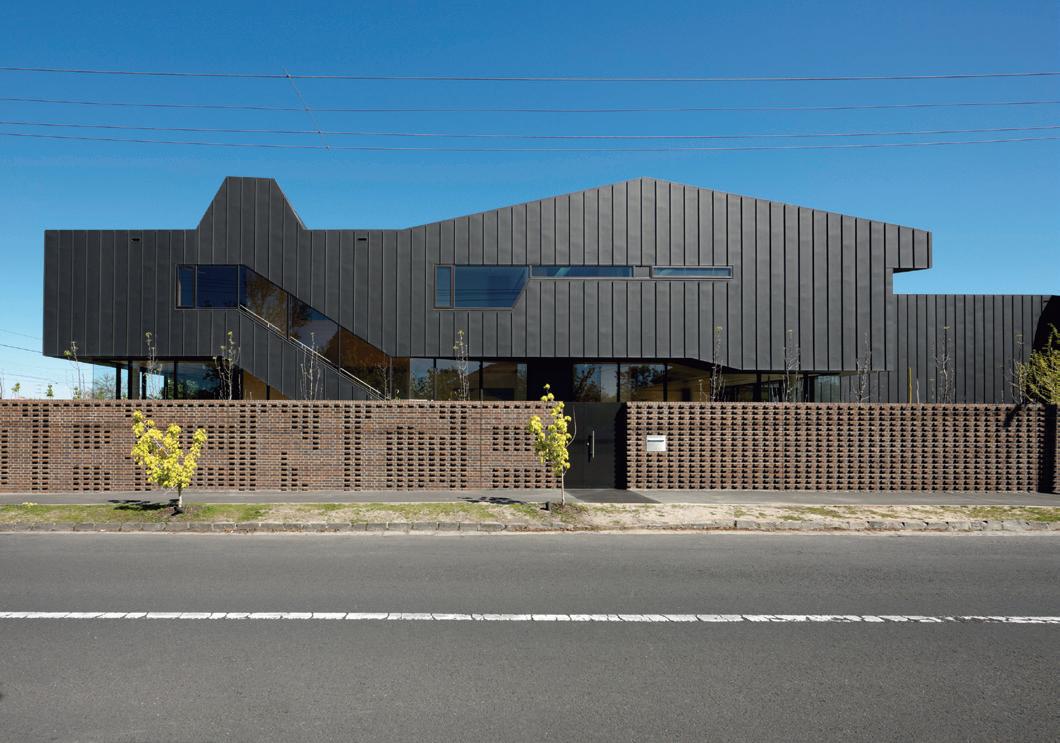
199 habitus 07 housemuseum — VIC,
home movie LYONS Text Stephen Crafti
australia
Photography Dianna Snape
home movie
housemuseum — VIC, australia
Neither a house nor a museum, this is a ‘housemuseum’ in Kew, Melbourne, with elements of both. Some of Australia’s most significant contemporary artists, including Howard Arkley, Patricia Piccinini, Tim Maguire, Callum Morton and Brook Andrew are displayed in the home of architect, Corbett Lyon – a home he shares with his wife, Yueji, and their two teenage daughters, Carlin and Jaqlin.

Collecting since the late 1980s, Lyon was looking for a place to display and share his art with the public. Mindful of the need for accessibility to the housemuseum, Lyon was enticed by this prominent corner site on the 109 tram route. Lyon’s first domestic design (and initial drawings) were knocked back by council. “Our first scheme was essentially a museum with a small portion set aside for living on the first floor. But given it’s a residential area, we were asked to considerably expand the domestic component within the building,” says Lyon, who is one of five directors of the prominent Melbourne architectural practice, Lyons.
As the zinc-clad building took shape, neighbours approached the builders. “Some people wanted to know when the penthouse
was coming on to the market, thinking they was apartments. Others thought it was a factory or warehouse. There was even the idea of squash courts,” says Lyon. He is used to his architecture, as well as the contemporary art he collects, being questioned saying, “We’ve always been attracted to unconventional ideas, whatever the artistic field”.
While the building includes the traditional hallmarks of a house, such as a front door, the entrance contains elements more akin to that of a gallery or museum. A dramatic staircase with cantilevered balustrade also functions as a reception desk. A built-in bench provides a place to wait before a tour commences. And a set of flush timber doors open to reveal empty shelves, “designed specifically for schoolbags,” says Lyon. Juxtaposed to these functional forms are domestic features. The folded plywood ceiling, for example, features text conceived by the family. It includes words from people who have made an impact on them, scores of music and simple recipes. “It’s quite a baroque idea to reclaim the ceiling,” says Lyon.
The kitchen and family room also blur the distinction between home and museum.
While there are comfortable lounges and a television set, there are also two of Patricia Piccinini’s earliest works, ‘Truck Babies’, one powder blue, the other pink. “These [1999] pieces were quite radical at the time. They are Piccinini’s interpretation of what a baby truck might be,” says Lyon who, like the artist, appreciates the way materials are used and technology explored.
Although ‘Truck Babies’ takes centre stage in the informal living area, there are the usual domestic elements as well, such as a galley-style kitchen to one side. Featuring stainless steel benchtops and timber joinery, the kitchen is purposely recessive. “When we hold functions [once a month],” says Lyon, “the kitchen takes on a more museum-like role.”
Lyon designed the spaces in the housemuseum in a hierarchical manner. There are the privates spaces, such as the three bedrooms (including the main bedroom) upstairs. This zone also includes a ‘quiet’ library, without a television set. The middle tier of spaces is a combination of private and public spaces: the kitchen and informal living areas. And then there are the public spaces, one
200
habitus 07
habitusliving.com
LYONS
02
01 Locals couldn’t quite determine what was being erected on the Kew site.
02 The lines are blurred, with the formal lounge forming part of the gallery.
03 A dramatic void can be appreciated from two levels.
04
The passage leading to the bedrooms is lined with paintings and installations.


201 03 04

202
habitus 07 housemuseum — VIC, australia habitusliving.com
home movie
LYONS
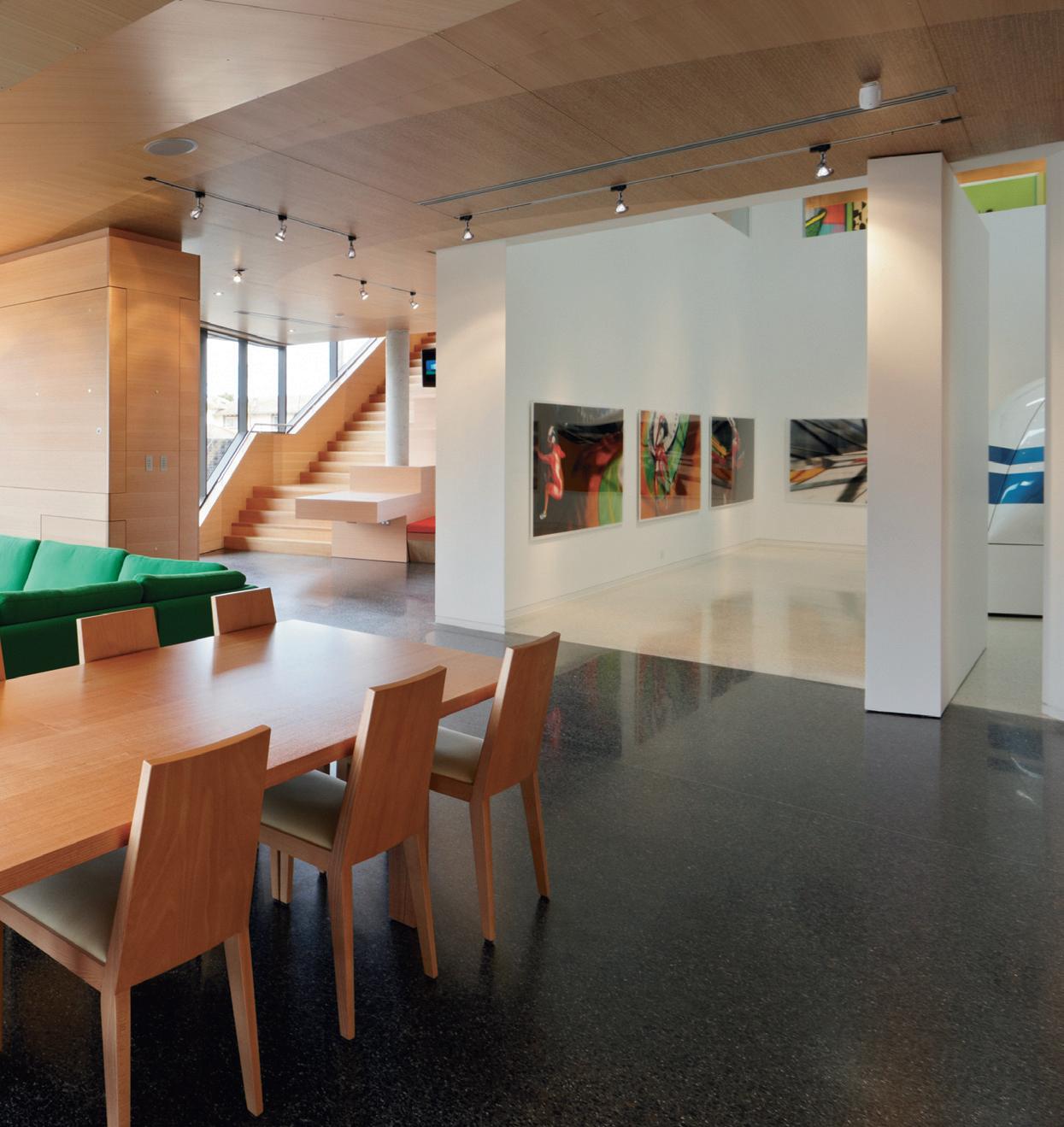
203
“We’ve always been attracted to unconventional ideas, whatever the artistic field.”
–COrBETT
home movie
of which is referred to by Lyon as the ‘white box’, a cube in the centre of the building with a dramatic seven metre-high ceiling. Featuring artists such as Tim Maguire, Louise Forthun and Patricia Piccinini, as well as Howard Arkley, it is a space that allows the dimensions of the housemuseum to be fully appreciated. “The ‘black box’ [a separate space currently dedicated to Piccinini’s work] and the ‘white box’ create the two anchoring points in the design. It is not unlike the idea of [architect] robin Boyd’s courtyards. But this is an internal landscape,” says Lyon.
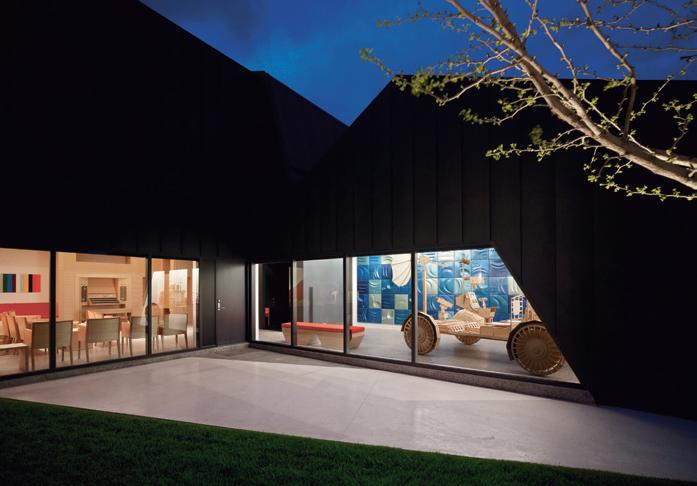
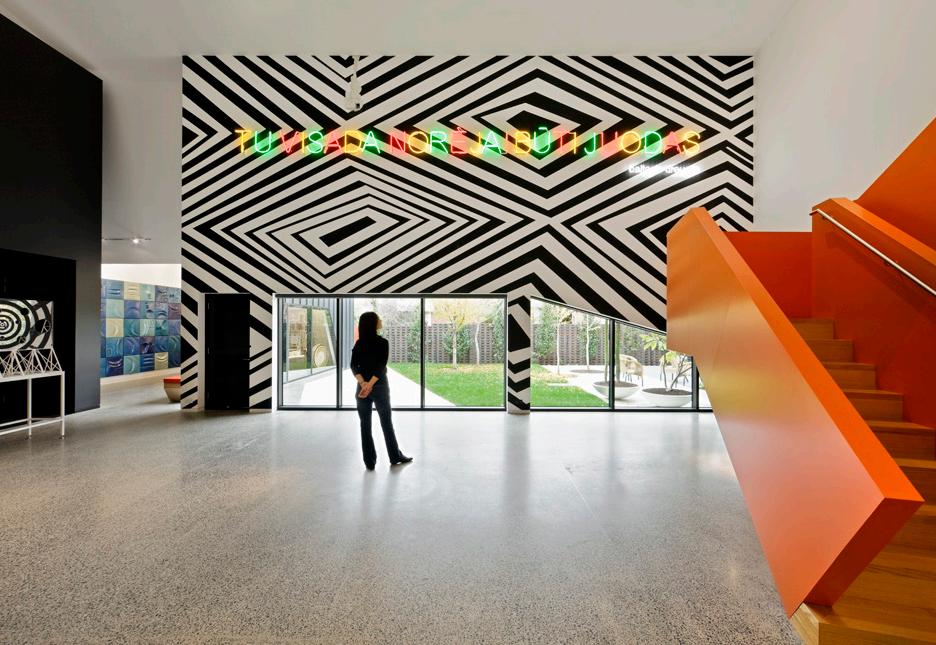
Other artists in the collection have been literally ‘carved’ into the building. Callum Morton’s ‘Habitat’ has its own nook along one passage. And the late Howard Arkley’s iconic paintings occupy what could also be interpreted as the home’s formal lounge.
The dining area on the first floor is a case of art driving architecture. Arkley’s ‘Fabricated rooms’, comprising 17 panels (the artist’s last major work and shown at Venice Biennale in 1999) fits precisely into the elongated space. “Most people would locate a dining area next to a kitchen, but we have a dumb waiter to take up the meals. How often do you get to dine completely surrounded by Howard Arkley?” asks Lyon, who consulted with Arkley’s partner, Alison Burton, on this installation.
While the focus is on paintings and sculpture (including a wonderful Chris Langton in the front courtyard), the central music room space has been set up for organ music, with the organ designed by Lyon himself. “We also intend to hold music concerts,” says Lyon. Those fortunate to attend recitals, will be mesmerised by Brook Andrew’s striped wall installation ‘YOU’VE ALWAYS WANTED TO BE BLACK (white friend)’, as well as Peter Hennessey’s ‘My Lunar rover’, parked nearby.
Living with art on this scale is unusual. Peggy Guggenheim’s home in Venice is one example. Closer to home is the Heide Museum of Modern Art in Bulleen, Melbourne, a gallery/home designed for art patrons, John and Sunday reed. While the art collections and architecture of the Lyon housemuseum are vastly different, there is a similar philosophical approach. As Lyon says: “There are those who treat art like ‘trophy hunters’ [kept locked up for only the owner to admire]. Then there are the ‘investors’. The third group, are people like us, ‘custodians’, sharing art with the public. Like architecture, we feel it’s important to be able to see art in the right context.”
Details regarding tours, events and concerts at the housemuseum can be found at lyonhousemuseum.com.au
204 habitusliving.com
habitus 07
05
housemuseum — VIC, australia LYONS
06
The dining and informal living area share space with Patricia Piccinini’s ‘Baby Trucks’.
Peter Hennessey’s ‘My Lunar rover’ is visible from outside.
07
08
A Brook Andrew installation animates one of the gallery spaces.
07
The music room features a pipe organ designed by Lyon.
06

home movie

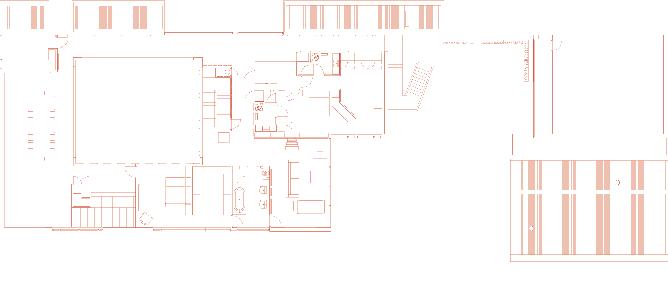
206
habitus 07 housemuseum
LYONS habitusliving.com 10 09 1 Entry Hall 2 Informal Living 3 Kitchen 4 Work Desk 5 Music Room 6 Artspace C 7 Garage 8 Store 9 Black Box 10 Laundry 11 Pantry 12 Habitat 13 Gallery 1 14 Store 15 White Cube 16 Artspace A 17 Art Library 18 Formal Living 1 Upper Hall 2 Library / Informal Sitting 3 Ensuite 4 Robe 5 Bedroom 6 Dining / Meeting 7 Office 8 Gallery 2 9 White Cube 10 Play 11 Gallery 3 12 Concert Organ 13 Organ Loft 14 Black Box 1 2 3 4 5 6 7 8 11 12 10 5 5 13 14 9 1 2 3 4 5 6 7 8 9 10 11 12 13 14 15 16 17 18
— VIC, australia
ArChI teCt Lyons
BuILDer
LBA Construction
StruCtur AL AND CIVIL
eNgINeer Bonacci
ACOuStIC eNgINeer Marshall Day
eL eCtr ICAL CONSuLtAN t
Umo Lai
hYDr AuLIC eNgINeer r immington & Associates
L ANDSCA pe
Lyons
tOw N pLANNINg
CONSuLtAN tS
Urbis
COSt CONSuLtAN t Slattery Australia
I t/AuDIOV ISuAL CONSuLtAN t Urban Intelligence
tOtAL FLOOr Are A 1,058m 2
tIme tO COmpL ete 7 years (5 to design, 2 to build)
Lyons (61 3) 9600 2818 lyonsarch.com.au
A rtwOr K
Living Truck Babies, 2001 and Big Sisters Video, 1999, both by Patricia Piccinini. Sitting centre wall, Eiffel Tower, 1989, Louise Forthun, right hand wall, Sing the Sailors, 1990, Janenne Eaton, and Sitting Bull, 1990, Tim Johnson. Bedroom Spearmint Baby, 1989, Jon Campbell. Music Hall on right hand wall, YOU’VE ALWAYS WANTED TO BE BLACK (white friend), 2006, Brook Andrew. Dining Area Fabricated Rooms, 1998, Howard Arkley. Downstairs Gallery
Panel Work, 2000, Patricia
09 Ground floor plan. 10 First floor plan. 11
The library includes material on artists featured in the housemuseum. 12
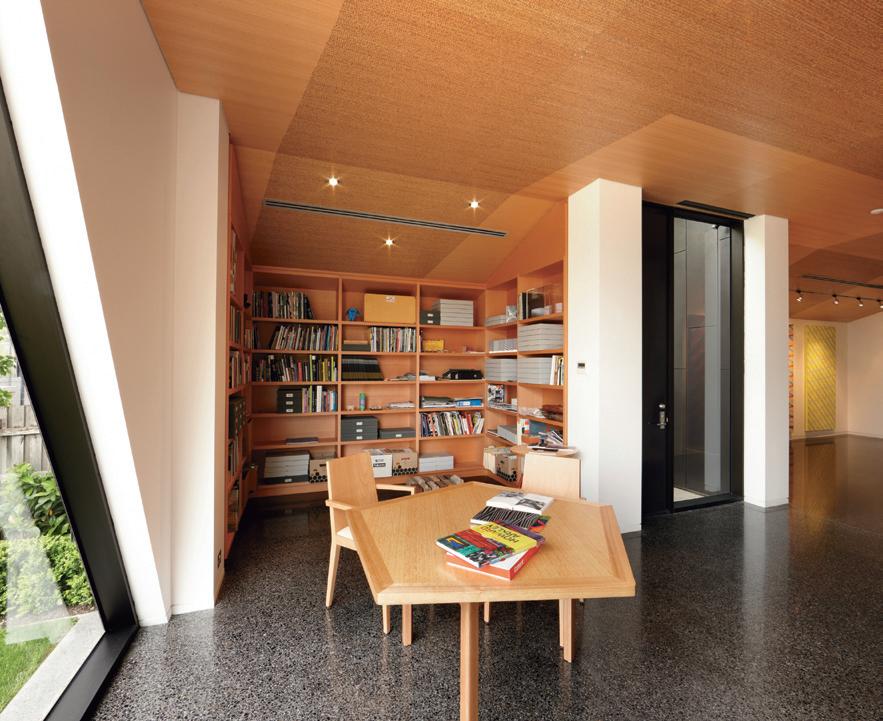
Even the childrens’ bedrooms are filled with art.

13
Views of the courtyards and outdoor sculptures are maximised throughout.
207
11 12
home movie
australia LYONS
Piccinini, and My Lunar Rover (you had to be there), 2005, Peter Hennessey. Hall Original drawing by architect Robert Venturi. White Box at top, Rose Nolan 2000/2001, 2000-2001, Rose Nolan, and from left to right, Shadow Factories, 1990, Howard Arkley, Untitled 99 U20 Diptych, 1999, Tim Maguire, and Orange Building Site, 1990, Louise Forthun.
Fur NI ture
Sofas from Space Furniture, spacefurniture.com.au, Siekaup, siekaup.com.au, and Poliform, poliform.com.au. Seating in Music Room and Museum, custom designed by Lyons, manufactured by Xilo, xilo.net.
au. Vitrines custom designed by Lyons, manufactured by Xilo.
LIght INg
Throughout track lighting by ECC, ecc.com.au, and iGuzzini, iguzzini.com.
FINIS he S Wall panelling printed timber veneer panels custom designed by Lyons, printed by PB Visual, pbvisual.com.au, and fabricated by Mortice & Tenon, morticeandtenon.com.
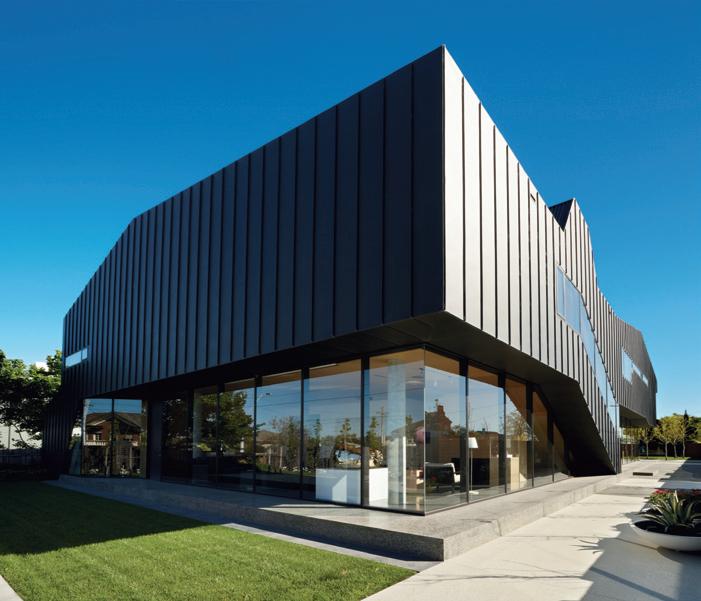
Joinery in Kitchen by Mortice & Tenon, specialist joinery throughout custom designed by Lyons, printed by PB Visual and fabricated by Mortice & Tenon. Floors honed concrete. Carpet in Bedrooms by Velieris, velieris.onlinegalleries.com. au, and in Art Space #2 from Supertuft, supertuft.com.au.
FIX e D & FI tte D Pipe organ designed by Corbett Lyon, Rod Junor, Pipeless Pipe Organ Company, pipelesspipeorgan.com.
au, Wakely Pipe Organs, pipeorgans.com.au, and manufactured by Xilo.

Making Living Spaces Work Beautifully


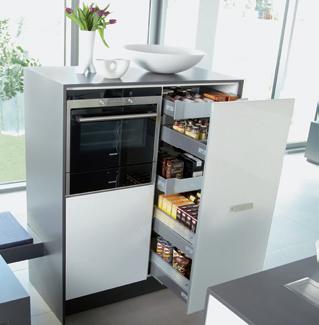
208 T
Hettich fittings for kitchen applications, including : InnoTech customisable drawers with soft closing, Easys electronic drawer opening system, Sensys hinge with integrated soft closing, ProDecor European designer handles and Cosario hidden storage unit. P: 1800 687 789 E: architecture@hettich.com.au W: www.hettich.com.au 9/09/2009 5:39:47 PM HAB6_Hettich.ind.xls 1 24/9/09 1:25:02 PM habitusliving.com
habitus 07 housemuseum — VIC,
13
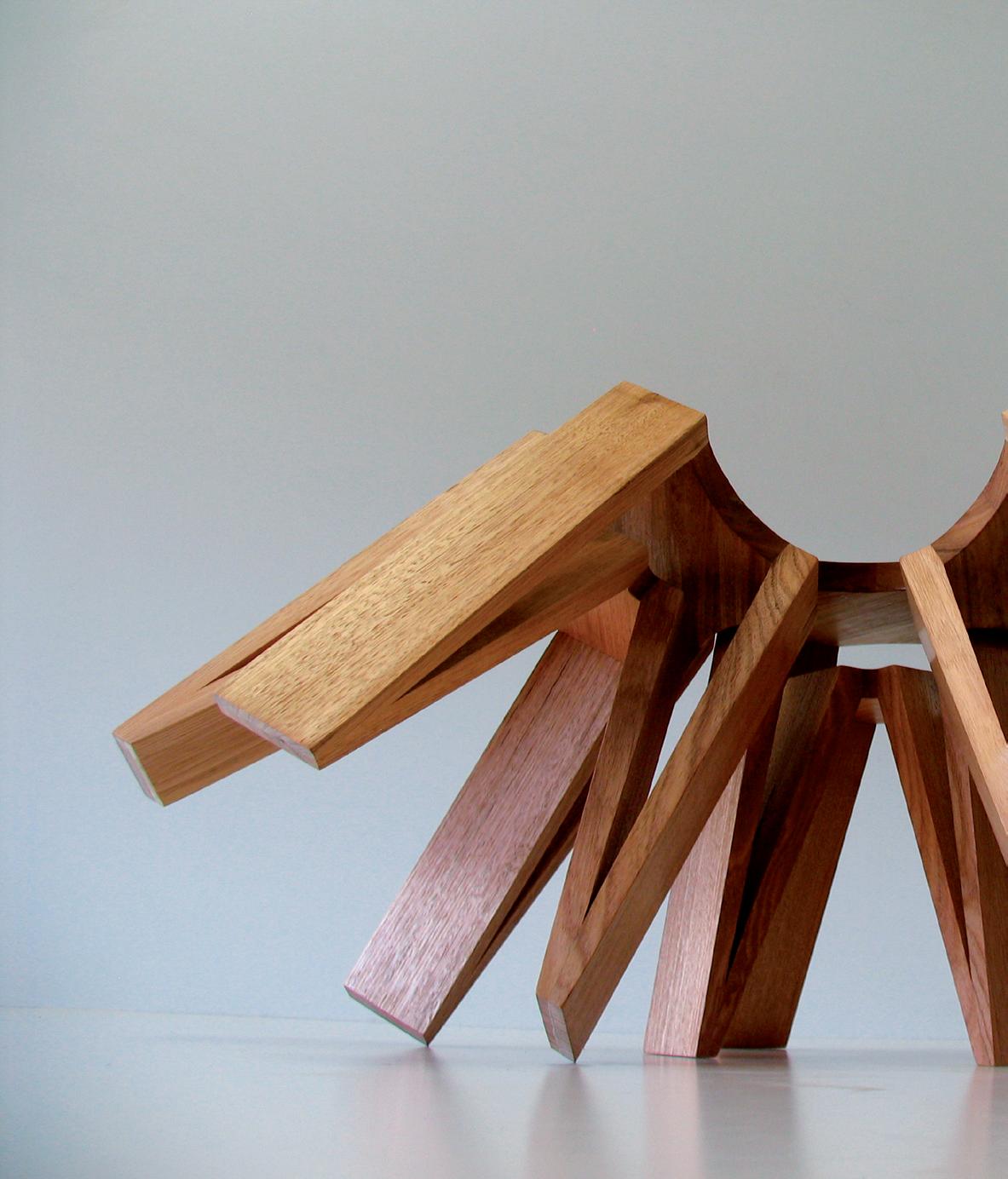
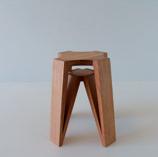
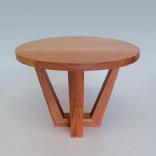
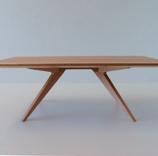
Slide & Hide® A light touch of the handle is enough for the door to open, then glide smoothly and silently underneath the oven, as if all by itself – leaving you clear space to season, turn or baste. What’s more, with CircoTherm® the heat stays in the oven, which is good not just for the meal, but also for your energy bill. Find out more by visiting us at www.neff.com.au or call 1300 727 421. Proudly imported, distributed and supported by Sampford IXL.

“Perfect ingredients combine to create stress-free cooking.”
“Not even the oven door gets in your way.”
from the
vivid colours

of
arizona
to the complex hand-eye of the architect
habitus 07 4. sign-off
211
chances are you will have heard of Arizona, affectionately known as the Grand canyon state, not only for its massive addition to the seven wonders of the world, but also its sprawling size. And as the second fastest growing state in north America, its scorching desert climate and rugged terrain has been attracting fearless visitors keen to uncover its lawless roots and unique buildings. From the best preserved meteor crater in the world – which is more than one and a half kilometres wide – to the well-publicised Phoenix collection of Frank lloyd Wright’s designs, there is certainly a huge amount to see. But it is those who venture a little further into the unknown south that get to experience tucson, one of the oldest cities in the united states, surrounded by history, wild nature and a showcase of some of the best examples of adobe, colonial and Victorian architecture in the southwest.
Tucson day trip

With the searing heat it is best to hire a car to get around the sun-bleached roads of tucson. A grid-like pattern of roads where each consecutive block is numbered 0–100, 101–200, 201–300, etc, makes it very easy to navigate.
t he southwestern state of Arizona in the united states might be dry, but there is an abundance of history, flavours and natural beauty that blossom in the desert climate. collette swindells takes us on a tour that encompasses a university, a mission and a canyon, with plenty of wildlife, vibrant colours and a sense of colliding cultures that characterise the way of living in this rugged landscape.
ArizonA – colour, culture And cAnyons


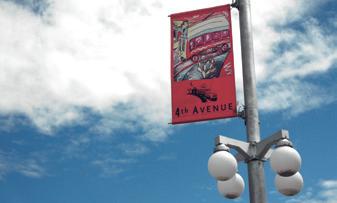

habitus 07 snapshot habitusliving.com 212
Make your way to Fourth Avenue where a collection of colourful cafes, shops and buskers line the streets spruiking everything from vintage clothing to ground jalapeños. Be sure to stop in at the native seeds search to buy the best local produce including prickly pear nectar, fiery steak sauce, ‘Five chile salsa’ and traditional woven baskets and jewellery. Jump on the old Pueblo trolley (a renovated heritage streetcar) and head the rest of the way down the avenue to university Boulevard. re-launched in 1993 for the university’s centennial, it is the best way to pass through rows of california-style bungalows and college fraternity houses.
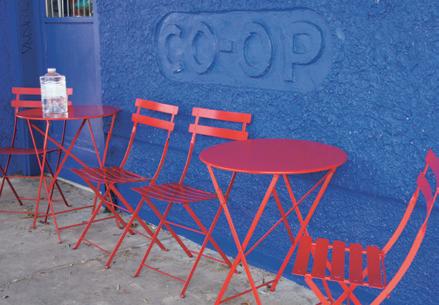
once on university Boulevard, you might want to escape the heat with an iced tea under the spritzer machines at one of the many ale houses or restaurants that line the strip, or stop in for a feast of organic treats at Wilko, where cosmetics, coffee and wi-fi go hand in hand. if





213 Text and photography collette swindells
t his page, clockwise from top right: Cholla cactus; cafe chairs on Fourth Avenue; sunset over the saguaros; whitewashed crucifix at San Xavier del Bac mission; Flintstone letterbox, sweeping view of Sabino Canyon’s surrounds. Facing page: adobe wall at San Xavier del Bac mission; giant siguaro cactus; blue sky and bright signs on Fourth Avenue; trash can street art on Fourth Avenue; flowering desert cactus.
you are there on a Friday, you will also be lucky enough to sample some of the freshest produce on offer at the regular Farmers’ Markets.
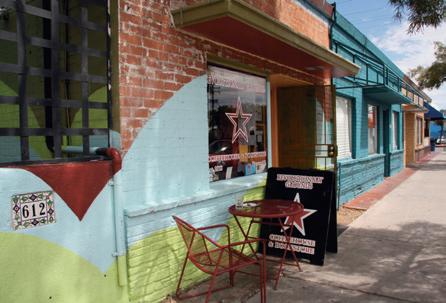
After this you will be prepped to take a stroll through the grounds of the university of Arizona – not just home to one of the most successful national basketball teams – but also some great examples of both modern and turn-of-the-century architecture. Make sure you check out ‘old Main’, the oldest building on campus, before visiting the Arizona state Museum to learn all about the American indian cultures of Arizona. As the oldest and largest anthropology museum in the southwest –established in 1893 – it contains the world’s largest collection of southwest pottery and charts the rise of the copper industry that paved the way for Arizona’s modern growth.
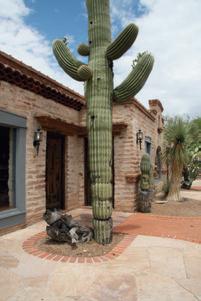
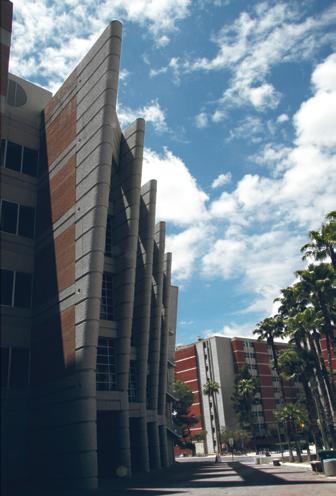

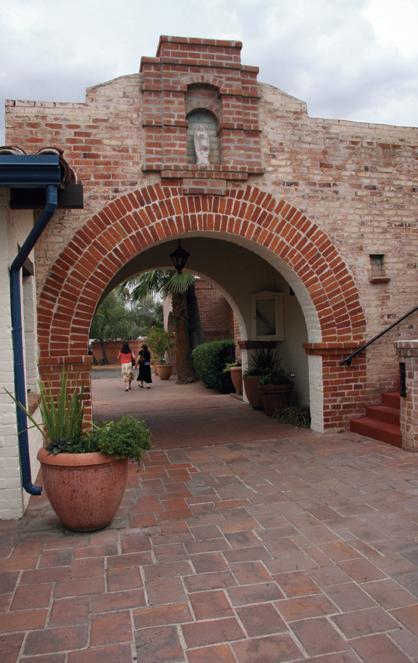
From here, you can walk to the center for creative Photography where you can experience the unique archival collection of over 60 major American photographers. Founded in the mid-1970s, the gallery has acquired, preserved and sought to showcase the entire careers of photographic greats like Ansel Adams, Harry callahan, Aaron siskind, and Frederick sommer. And with over 80,000 prints in its collection, it has more 20th century north American photographers than any other museum in the country.
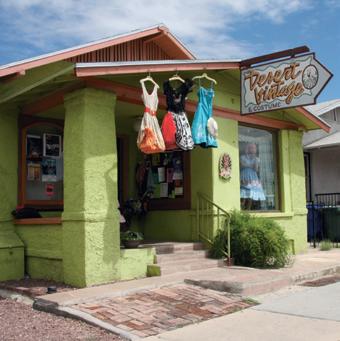
214 habitus 07 snapshot habitusliving.com
clockwise from top right: Broadway Village shopping centre, home to Josias Joesler’s famed architecture; modern architecture at the University of Arizona; vintage costume shop; streetside café on Fourth Avenue; view of Gate’s Pass; Broadway Village shopping centre.
Deco-Screen
A new range of decorative & intelligent fabrics for blinds
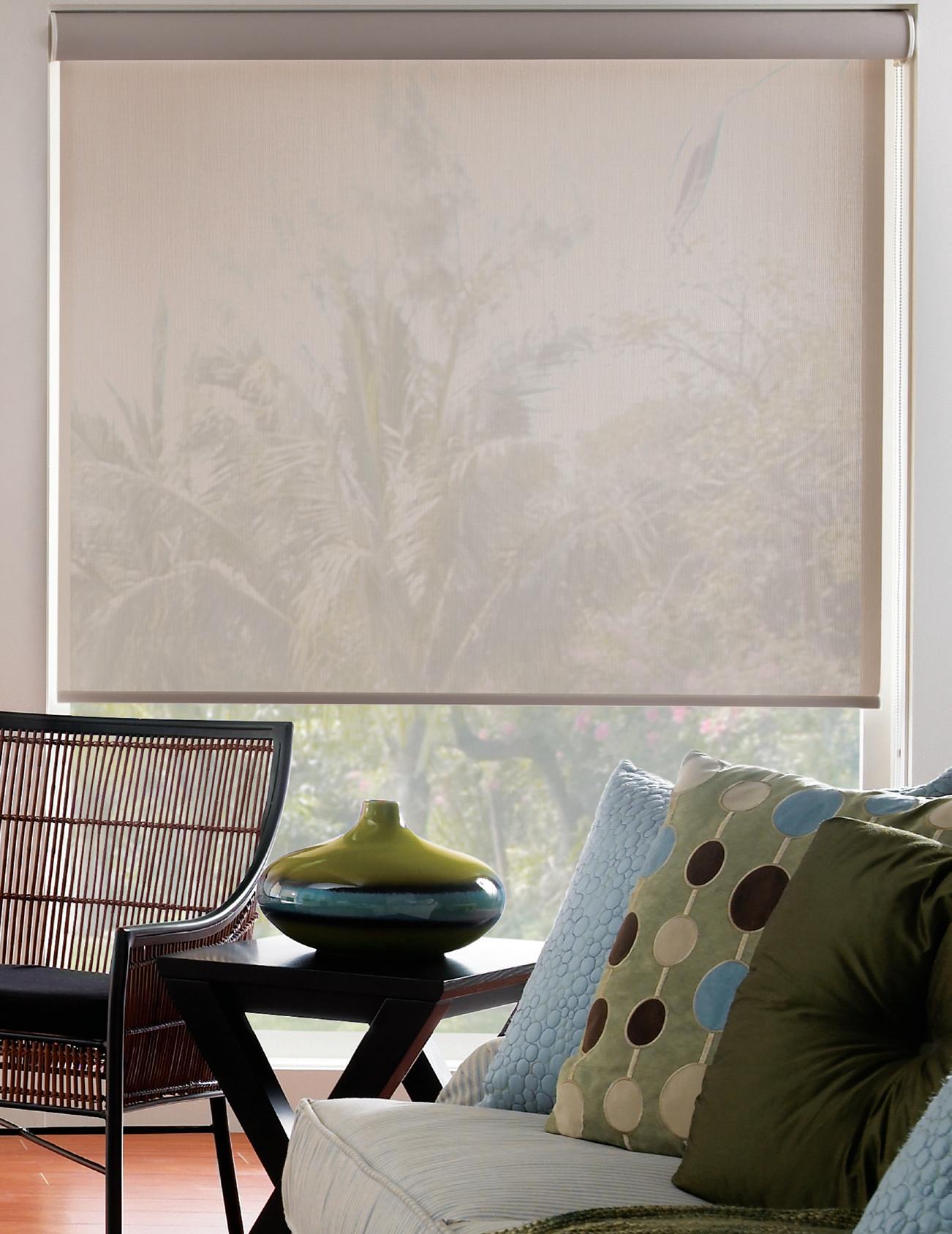
A selection of natural-looking fabrics in designer colours, offering optimal transparency, and excellent thermal and visual comfort.
Awarded with the enduris™ Glass core quality label, guaranteeing mechanical resistance, dimensional stability and high-level durability.
Experience the comprehensive Mermet fabric collection for blinds at: www.mermet.com.au
San Xavier del Bac Mission
Just south of tucson, the ‘White dove of the desert’ rises, as its nickname suggests, like a peaceful bird out of the santa cruz Valley. its name, which means “where water emerges” in the native Piman language, comes from its location on the banks of the santa cruz river. set up by famed missionary and explorer, Father eusebio Francisco Kino, it is framed by the violet hues of nearby hills and mountains and surrounded by native mesquite and sage greens. the Mission’s impressive gleaming dome is shaded by a collection of towers, spires and parapets and is considered to be the finest example of mission architecture in the united states. With its seamless blend of Byzantine, Moorish and late Mexican renaissance designs, it is still a fully functioning parish church, and is well looked after by constant renovation and restoration efforts.
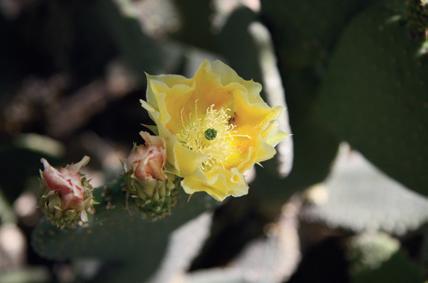

As you immerse yourself in the rich history of the site, be sure to taste some freshly cooked frybread with cinnamon and honey, or beanladen tacos prepared in nearby family-run stalls. And if they don’t soothe your tummy, the ‘sno cones’ will definitely take the edge off the heat.
Sabino Canyon
no trip south would be complete without doing what it is most Americans do when they are escaping the cold of the north –exploring the rocky terrain that surrounds the city. Positioned amongst the santa catalina
clockwise from above: The bright colours of La Placita; flowering barrel cactus; multi-coloured home in Sam Hughes neighbourhood; colourful window in Barrio Historico; the only other flowers that survive the soaring heat of the desert; University of Arizona.



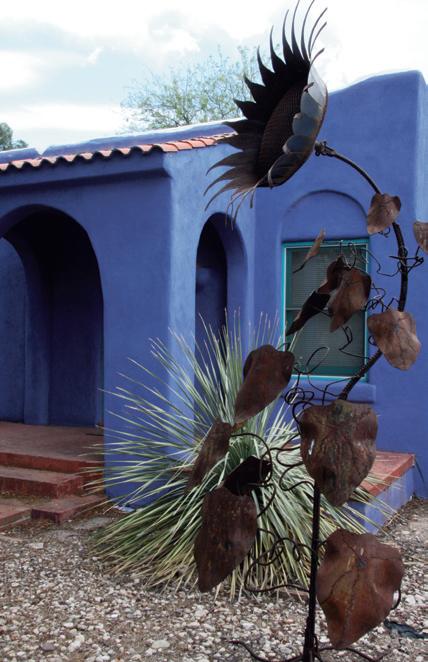
216 habitus 07 snapshot habitusliving.com


seat cushion adjustment
SyDnEy 2/30 – 32 beaconsfield Street, alexandria (61 2) 9690 7100 MElboUrnE b2 – 8 rogers Street, Port Melbourne (61 3) 9646 8611 kfive@kfive.com.au www.kfive.com.au
Moving by Carlo biMbi With a mechanism allowing
relax sit recline rest.
Mountains, sabino canyon is a great way to familiarise yourself with the native flora and fauna, including the mammoth saguaro cacti, which weigh up to eight tonnes and live for over 250 years, and the black-barked mesquite trees, that provide the smoky flavour for most barbecues around town. And with over 250 types of birds, lizards, snakes, rabbits, skunks, tarantulas, coyotes and more, you are sure to make a few friends. take the guided shuttle and lots of water up to Bear canyon, and trek your way back through your choice of trail before it gets dark.
But if braving the sun is not your idea of fun, then canyon ranch, with its state-of-theart spa resort facilities, might be more enticing. rumoured to be a favourite with oprah, the retreat is the longest-running one of its kind in the united states, and has been voted ‘Best spa resort’ by Condé Nast Traveller ten times. set up in 1979, owners Mel and enid zuckerman were inspired not only by the views, vegetation and colourful adobe buildings in the area, but by the unique native American spirit of the site. its buildings are a tribute to the natural surrounds, but the interiors are fitted with the best nutritional, fitness, skin care and health facilities that will transform not just your holiday, but also your life.

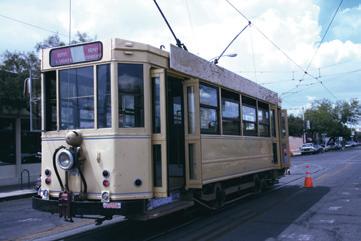
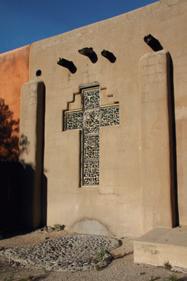
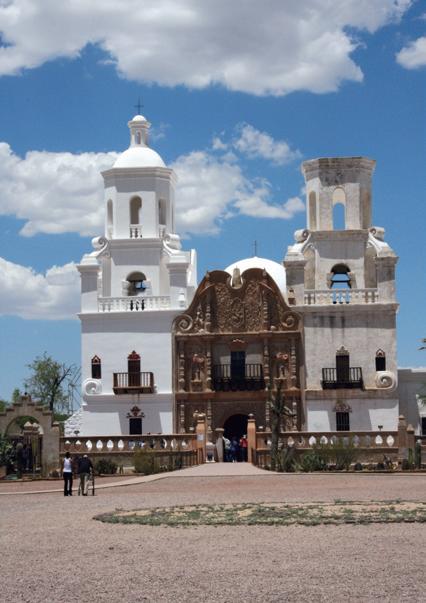

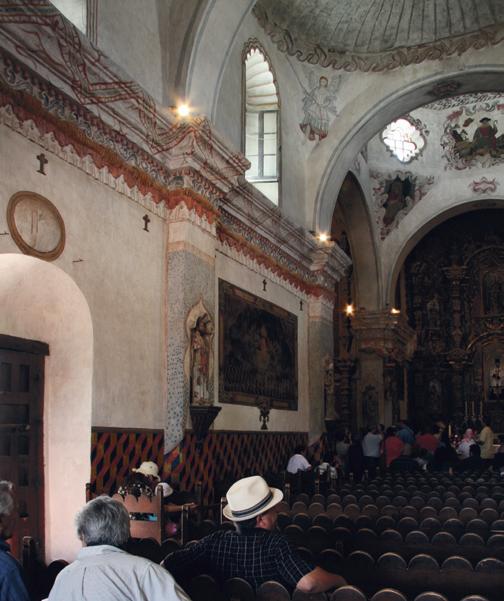
218 habitus 07 snapshot habitusliving.com
clockwise from bottom right: Church interior at San Xavier del Bac mission; the Old Pueblo Trolley; gilded altar at San Xavier del Bac mission; adobe church; ceiling fresco at San Xavier del Bac mission; façade of San Xavier del Bac mission.
A grand Australia Day thanks to the Commonwealth Bank, Zip Industries, Habitus and our other co-sponsors

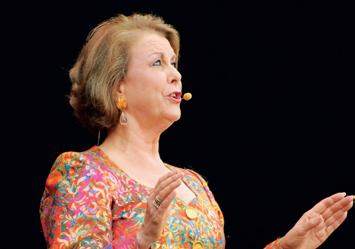

At dusk on Australia Day, Sydney’s distinctive skyline formed the backdrop to the first Australia Day concert of its kind ever held in the Domain, “Celebrate Australia!”. It was a free concert thanks to the support of many co-sponsors, Habitus included.
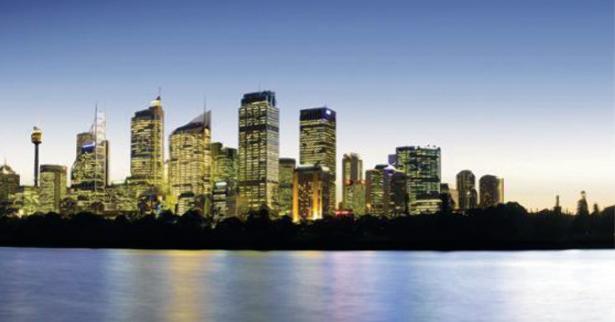
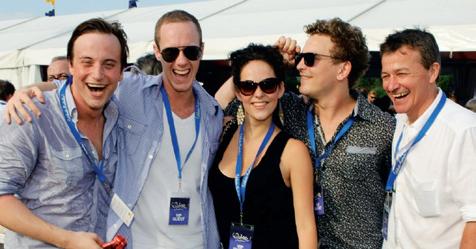
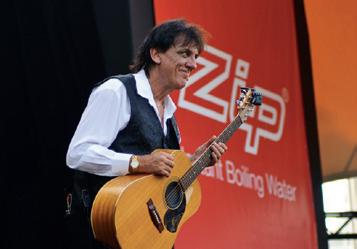

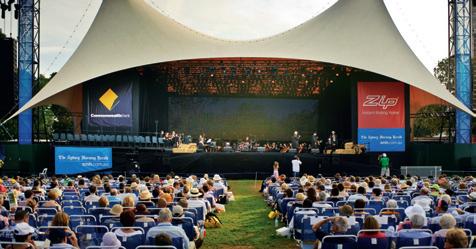

PrinciPal SPonSorS Commonwealth Bank Zip Industries official newSPaPer The Sydney Morning Herald SuPPorting SPonSorS Bioware Packaging Products BP Australia BridgeClimb Sydney Coca-Cola Amatil Crowne Plaza Darling Harbour Driza-Bone Firestick Wines Habitus Magazine L.J. Wallace Group Macquarie Telecom Group Nick Jr. Ord Minnett R. M. Williams Star Track Express The Australian Charities Fund Wavetronics / GMJ Electronics Winning Appliances Instant Boiling Water
The Uses of Drawing
i n our sister magazine, Indesign, we recently featured architect, Ken woolley, a major figure in post-war australian architecture. woolley does not take architecture for granted. His career has been a constant exploration, a ceaseless questioning of his art – woolley insists that architecture is an art – and a relentless affirmation of the ethics of his profession.
woolley is a superb drawer and has produced a book of his travel drawings. There is also a comprehensive monograph on his work, which includes examples of his travel and architectural drawings. Speaking of the latter, he says they are usually “done away from the office, and are almost a stream of consciousness in architectural terms. They are used to seek and work out concepts and development of ideas and then convey them to my colleagues... The tiny scale of the drawings eliminates the irrelevant and reflects the fact that they are a thought process, not a means of presentation.”
This kind of conceptual drawing – not the rendering of a fully resolved building, but an exploratory process linking hand and eye using a pen or pencil to discover an architectural idea – is what might be termed thinking in architecture, a parallel to the kind of non-verbal thought, which Donald a. Schön called thinking in action
Two other australian architects i can think of work in a similar fashion – a lex Popov and r ichard Leplastrier. it is a form of “taking a line for a walk”, to use Paul Klee’s famous dictum – although, in this case, it is more accurately taking a line for a walk around a site.
David g eorge Holm is also an australian architect and he, too, draws. His newly published Drawing Italy is a fascinating collection of his drawings from many journeys to italy, amplified by annotations and a brief introduction to the history of architecture in italy along with his own reflections on drawing. i n fact, he says he was attracted to architecture because of drawing – and he is quick to link the italian disegno to the English drawing, an etymologically rich relationship. Holm says he draws for two reasons – analysing architectural precedents (which involves close
observation through the act of drawing), and as an act of imagination. He offers a telling quote from a lvar aalto: “i begin to draw rather like abstract art. Led by my instincts i draw, not architectural syntheses, but sometimes even childish compositions, and via this route i arrive at an abstract basis to the main concept.”
The drawings in Holm’s book are from his first category – observations of buildings and urban spaces, often with freehand plans and details. i n a subtle way, these sketches communicate what a photograph cannot –Holm’s personal response to spaces and places.

For Léon Krier, drawings play a far different role. Sometimes he calls them doodles, sometimes ideograms. They are polemical in intent, although humorous (and similar to the wonderful cartoons of the late g eorge Molnar, who satirised the pretensions and absurdities of the contemporary city and its fashionista inhabitants).

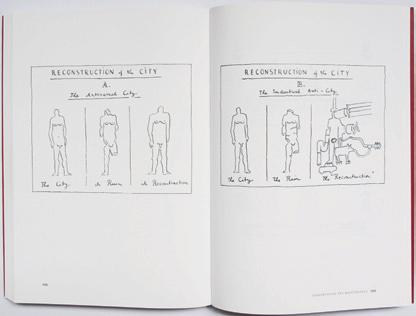
220 habitusliving.com habitus 07 montage
Drawing has largely disappeared from art school and from architectural education. Paul McGillick looks at three new books, each of which, in their own way, suggests we have lost a lot as a result.
DRAWING FOR ARCHITECTURE LEON KRIER Published by MIT Press Distributed by Footprint Books 248pp, softcover AUD$38.95 footprint.com.au
Published by John Wiley and Sons
Distributed by John Wiley and Sons Australia 160pp, softcover AUD$59.95 wiley.com
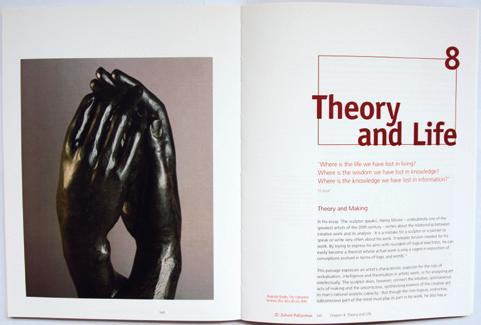
Krier is always associated with the new Urbanism and his ongoing critique of the modern city, based as it is on economic rationales. i nstead, he has argued for the re-construction of traditional, walkable cities which have developed organically at a human scale, responding to the everyday needs of people. He says of his doodles that “They are not a natural occupation; they only come to me in discontinuous, short, and generally angry bursts.” His ideograms, he says, “are means not to console or please, but to reveal scandalous elements of architectural practices and ideology; they outline conceptual tools for refounding traditional urbanism and architecture”.

i ndustrial civilisation, he says, is “engaged in a tragic impasse. we now generally build in the wrong places, in the wrong patterns, materials, types, densities, and heights, and for the wrong number of dwellers”. Krier’s drawings appear almost naive, but serve to provoke thought as much as they communicate his own attitudes.
That Juhani Pallasmaa’s take on drawing is very different won’t come as a surprise to those who know the work of this eminent Finnish architect and philosopher. He has published extensively, but is probably best known for his book, The Eyes of the Skin: Architecture and the Senses, in which he critiques the dominance of the visual in contemporary architecture and culture, while advocating a “multi-sensory” or haptic approach.
This places him firmly in the phenomenological school which prioritises what Edmund Husserl called the Lebenswelt (everyday world) of direct sensory experience uncontaminated by abstract or metaphysical preconceptions. Hence, the title of his new book, The Thinking Hand –Existential and Embodied Wisdom in Architecture, sums up in advance the ideas in the book. a lthough he does not mention Schön (who had a big influence on architectural education with his concept of the ‘reflective practitioner’), Pallasmaa’s premises are very similar – namely, the emphasis on practice and on the notion of embodied knowledge. Schön’s “creative practitioner” acts intuitively using internalised knowledge and experience rather than applying precedents or theory.
“a rchitecture,” says Pallasmaa, “is...a product of the knowing hand. The hand grasps the physicality and materiality of thought and turns it into a concrete image.” He goes on to examine the evolution of the hand, its metaphorical force and what he calls “the working hand” in craftsmanship and the use of tools. “The hand,” he says, “is not only a faithful, passive executor of the intentions of the brain; rather, the hand has its own intentionality, knowledge and skills.”

221
...an exploratory process linking hand and eye, using a pen or pencil to discover an architectural idea ...
THE THINKING HAND: EXISTENTIAL AND EMBODIED WISDOM IN ARCHITECTURE JUHANI PALLASMAA
not surprisingly, Pallasmaa strongly advocates drawing, almost as a way (to paraphrase Louis Kahn) of enabling architecture to discover what it wants to be. with drawings and models, he says, “The architect moves about freely in the imagined structure, however large and complex it may be, as if walking in a building and touching all its surfaces and sensing their materiality and texture. This is an intimacy that is surely difficult, if not impossible, to simulate through computer-aided means of modelling and simulation.” He gives the example of renzo Piano, whose recursive method involves starting with drawing, then models, then on to site and back to drawing, building up a circularity, says Piano, “between drawing and making and back again”.

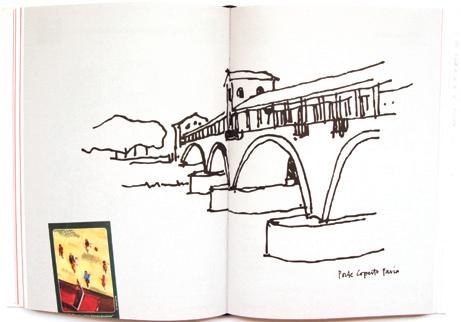
i n drawing, hand, eye and mind are fused into a single process, which Pallasmaa likens to imaginative scanning and leads him to the concept of the ‘drawing hand’. i n other words, drawing is an active process, whereas the computer turns the design process into “passive visual manipulation” that “creates a distance between the maker and object”. as Pallasmaa comments, computer-generated drawings “take place in a world in which the observer has no skin, hands or body”.

Pallasmaa’s book is dense with ideas and is genuinely inspirational. His ruminations on drawing are really simply part of a bigger thesis about architecture and art, which can be summed up in the word ‘encounter’, or perhaps in these lines from T.S. Eliot which he quotes:
w here is the life we have lost in living?
w here is the wisdom we have lost in knowledge?
w here is the knowledge we have lost in information?
habitus 07 montage habitusliving.com 222
DRAWING ITALY DAVID GEORGE HOLM Published by Jane Curry Publishing Distributed by Macmillan 248pp, softcover AUD$49.95 macmillan.com.au
i n a subtle way, these sketches communicate what a photograph cannot – Holm’s personal response to spaces and places.
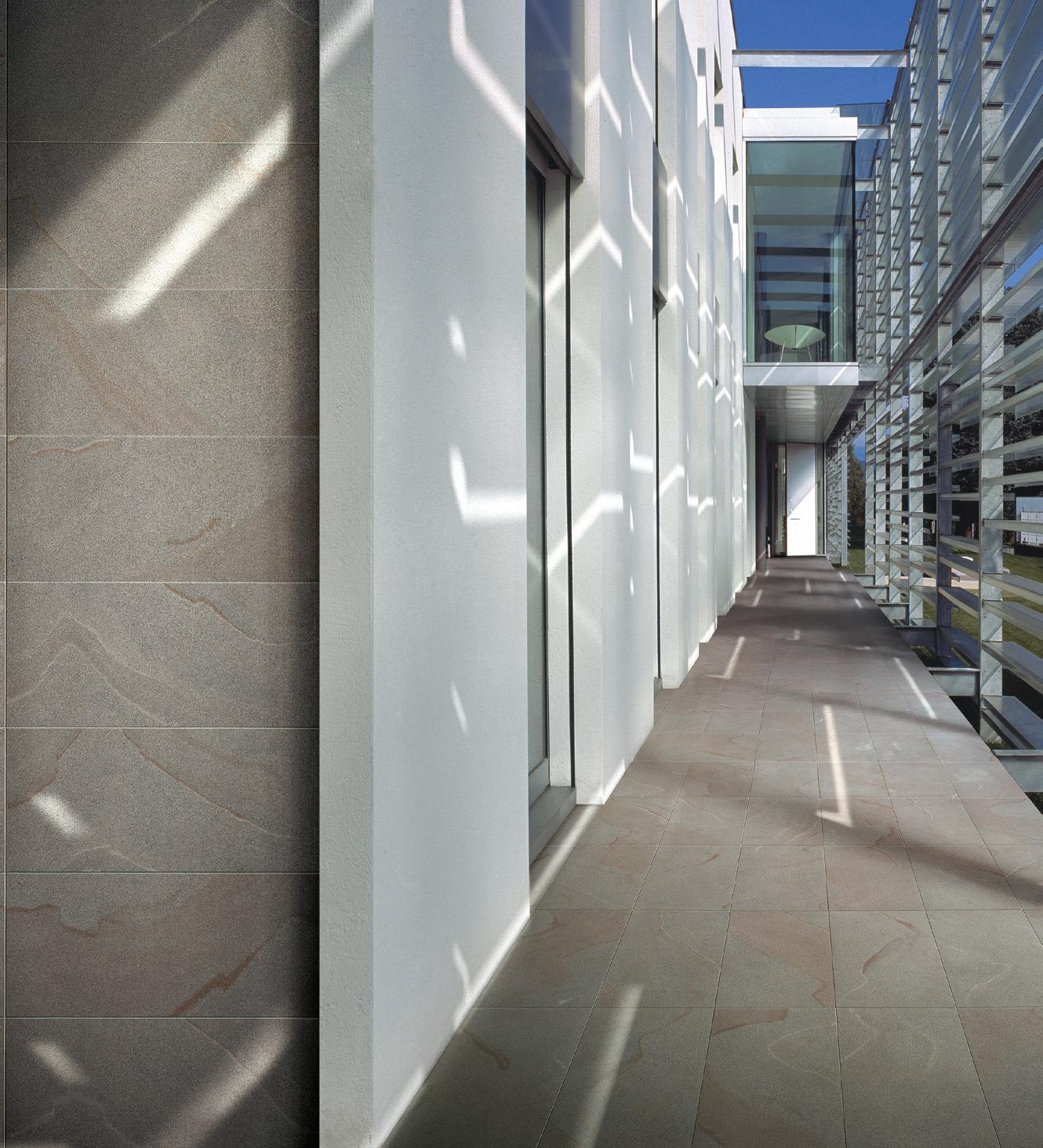
Habitus magazine is available at newsagents and bookshops across australasia, South-East asia, the USa, Canada, Europe, the Middle East and South a merica. Habitus is published quarterly in March, June, September and December. To subscribe securely online visit habitusliving.com/magazine, or email subscriptions@indesign.com.au to subscribe or request a full list of locations where Habitus magazine is available.
The team at Habitus magazine thanks our advertisers for their support. Use the directory to see what page a specific advertisement is on, and visit their website to learn about the products and services they offer.
002–003 Anibou anibou.com.au
157 Antique Floors antiquefloors.com.au
037 Apaiser apaiser.com.au
123 Arthur G arthurg.com.au
168 Beclau beclau.com
187 Bertazzoni bertazzoni-italia.com
076 Blinds by Bayliss bayliss.com.au
099, 101 Caesarstone caesarstone.com.au
223 Classic Tiles classictiles.net.au
145 Corian casf.com.au
064–065 Corporate Culture corporateculture.com.au
197 Dado Quartz dadoaustralia.com.au
133 DeLonghi delonghi.com.au
146 Designed Blinds Australia dbablinds.com.au
010–011 Designer Rugs designerrugs.com.au
034 Di Lorenzo dilorenzo.net.au
012–013 Domayne domayne.com.au
102 Eight Hotels Australia eighthotels.com
134–135 Fisher & Paykel fisherpaykel.com.au
088 Funkis funkis.com
004–005 FY2K fy2k.com.au
021 Gaggenau gaggenau.com.au
110 Gibbon Group gibbongroup.com.au
014–015 Gitani Stone gitanistone.com
188 habitusliving.com habitusliving.com
170 Häfele hafele.com
208 Hettich hettich.com.au 103 hub furniture hubfurniture.com.au 029, 031 Ilve ilve.com.au
S TOCKISTS FROM IN CAMERA (p39)
Cadry’s Handwoven Rugs
(61 2) 9328 6144
cadrys.com.au
de de ce
(61 2) 9360 2722
dedece.com
Designer Rugs (61 2) 9328 4111
designerrugs.com.au
Koskela
(61 2) 9280 0999
koskela.com.au
Mokum Textiles
(61 2) 9357 0555
mokumtextiles.com
RC & D (61 2) 9519 8555
rc-d.com.au
Robyn Cosgrove Rugs (61 2) 9328 7692
robyncosgroverugs.com.au
Seletti 1300 730 244
seletti.com.au
Space Furniture (61 2) 8339 7588
spacefurniture.com.au
Spence & Lyda (61 2) 9212 6747
spenceandlyda.com.au
Terrace Outdoor Living terraceoutdoorliving.com.au
Tibet Sydney (61 2) 9363 2588
tibetsydney.com
Whitecliffe Imports (61 2) 9692 8822
whitecliffe.com.au
Interstudio interstudio.com.au
217 Kfive kfive.com.au
Kohler au.kohler.com
094, OBC Living Edge livingedge.com.au
Mermet mermet.com.au
Miele miele.com.au
177 Milano Furniture milanofurniture.com.au
Minosa minosa.com.au
AD
016,
089
091–
215
075,
112
063 Minotti minotti.com 210 Neff neff.com.au 156 Nicholls Design nichollsdesign.com.au 108 Parisi Bathware parisi.com.au IBC Poggenpohl poggenpohl.com.au 082 Precision Flooring precisionflooring.com.au 158–159 Roca roca.com 038 Ryan Renshaw ryanrenshaw.com.au 090 Sampford IXL sampfordixl.com.au 062 Scoogle scoogle.com.au 178–179 SICIS sicis.com 196 Siekaup siekaup.com.au 022 Space Furniture spacefurniture.com 009 Stylecraft stylecraft.com.au 074 Tait tait.biz 124 English Tapware Company englishtapware.com.au 020 Tsar tsar.com.au 081 Vintec vintec.com.au 169, 198 Winning Appliances winningappliances.com.au 055 Woven Image wovenimage.com 209 Xilo xilo.net.au 070 Yardware yardware.com.au 006, 219 Zip Industries zipindustries.com
132
IFC–001
habitus 07 directory 224
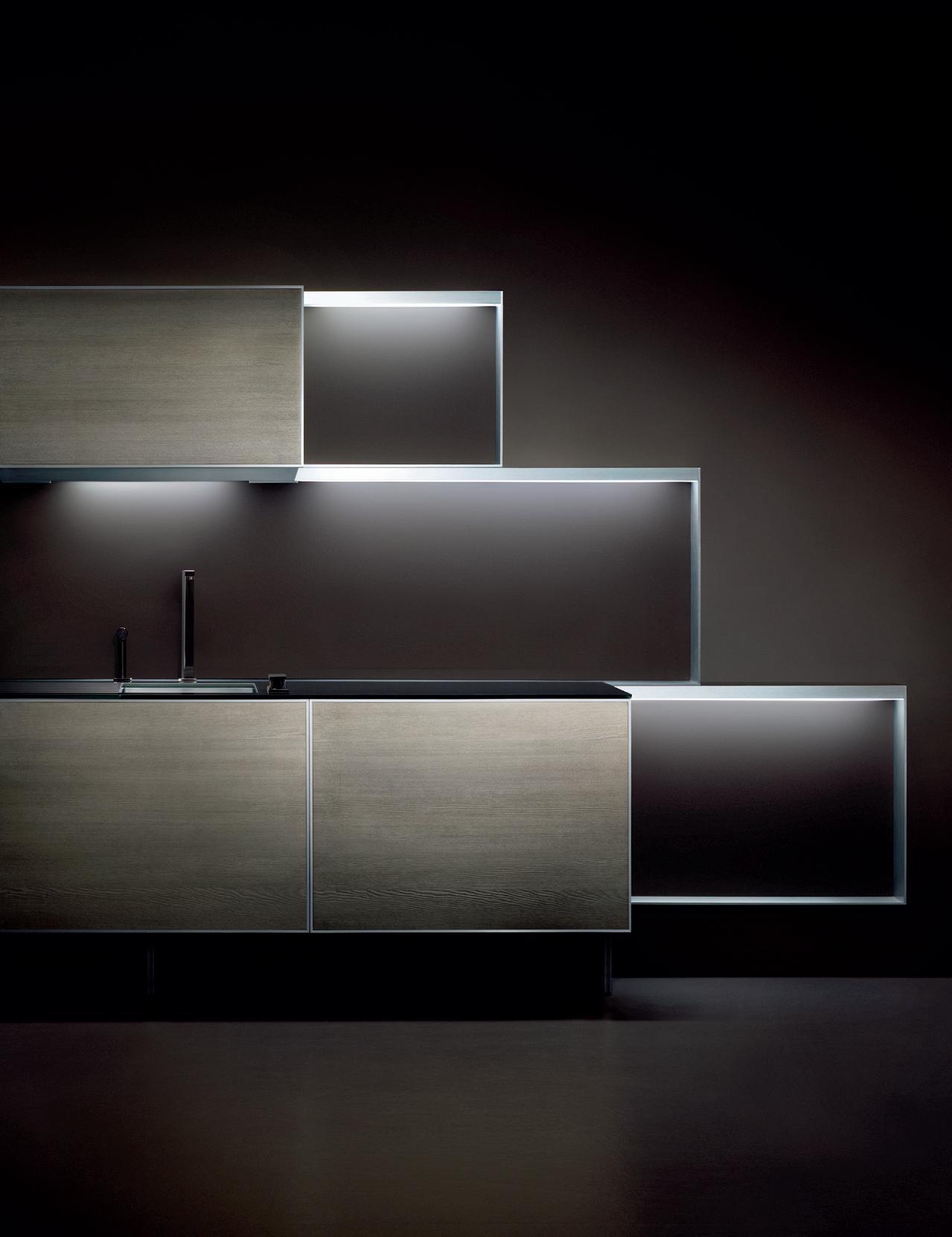
The Engineers of Essentials a la Carte Design, 118 Edgecliff Rd Woollahra NSW 2025, tel: 02/9369 1766, fax: 02/9369 1765, www.poggenpohl.com.au New York| London | Munich | Paris | Moscow | Shanghai | www.porsche-design.com | www.poggenpohl.com Porsche Design kitchen ß7340

“ Take your pleasure seriously.”
Charles Eames





































 Nube Armchair
Nube Armchair
















































































 Photography Craig Wall
Photography Craig Wall

































 simryn gill — NSW, australia
simryn gill — NSW, australia




















































































 –
ANdREW PfEIffER
–
ANdREW PfEIffER












































































































































 Boonlert HemvijitrapHan
Boonlert HemvijitrapHan





















































































